Backpacking Vietnam: the Ultimate Travel Guide for First Timers
Whether you’re craving the adrenaline rush of motorbike journeys through the mountains of Ha Giang or the tranquil serenity of floating through emerald-green waters of Halong Bay, this guide promises to ignite your wanderlust and unveil the secrets of backpacking Vietnam like never before. Get ready to create unforgettable memories and embark on the journey of a lifetime in one of Southeast Asia’s most captivating destinations!

Backpacking Vietnam: Everything you Need to Know
Welcome, fellow backpackers, to the enchanting realm of Vietnam—Southeast Asia’s captivating destination brimming with wonders. In this guide, we’ll embark on a journey through the heart of this vibrant country, uncovering its unique cultural highlights and exploring the diverse experiences that make Vietnam a must-visit destination for every backpacker.
Overview of Vietnam
Nestled in the eastern part of the Indochinese Peninsula, Vietnam is a land of contrasts, where bustling cities harmonize with serene landscapes , and ancient traditions coexist with modern innovation.
From the Mekong Delta’s labyrinthine waterways in the south to the majestic peaks of the northern highlands, Vietnam boasts a geographical diversity that promises a myriad of adventures for the intrepid backpacker.
As you traverse this S-shaped land, you’ll encounter a rich historical tapestry shaped by centuries of influences. The remnants of imperial dynasties, French colonial architecture, and war-torn relics tell a story that is uniquely Vietnamese.
Echoing with the whispers of its storied past, Vietnam enchants with vibrant street markets and tranquil temples at every corner.

Unique Cultural Highlights
Vietnam’s cultural treasures are as diverse as its landscapes. Immerse yourself in the art of water puppetry , a traditional performance art that brings ancient tales to life on the water’s surface. Navigate the bustling streets of Hanoi’s Old Quarter, where narrow alleyways lead to hidden temples, and street vendors offer a symphony of flavors.
For a taste of Vietnam’s spiritual heritage, explore the ancient town of Hoi An, adorned with lantern-lit streets and well-preserved architecture. Marvel at the intricate carvings of the Marble Mountains and witness the breathtaking beauty of Ha Long Bay’s limestone karsts.
As you prepare for your backpacking adventure through Vietnam, remember to embrace the warmth of its people, savor the flavors of its street food , and let the country’s hidden gems reveal themselves to you. Vietnam awaits, and we’re here to guide you every step of the way.
Stay tuned for more insights into visa requirements, budgeting tips, and the top destinations that make backpacking in Vietnam an unforgettable experience. Your adventure begins now!

Planning your Backpacking Adventure
Now that the allure of Vietnam has captured your imagination, it’s time to dive into the practicalities of planning your backpacking adventure.
Navigating the vibrant streets of Saigon or exploring the ancient wonders of Hue requires a bit of groundwork, and we’re here to ensure your journey is as seamless as possible.
Do you need a Visa?
First things first – let’s talk visas. Before you set foot on Vietnamese soil, make sure your passport is valid for at least six months beyond your planned departure date. Luckily for backpackers, obtaining a visa for Vietnam is relatively straightforward.
As of 2024, regular passport holders of 26 countries DO NOT need a visa for Vietnam. The duration of this Visa exemption depends on the country. Here is the updated list of passport holders who don’t need a visa, and the maximum duration of their stay in Vietnam:
Up to 14 Days: Myanmar, Brunei. Up to 21 Days: Philippines . Up to 30 Days: Cambodia, Indonesia, Kyrgyzstan, Laos, Malaysia, Singapore, Thailand, Kazakhstan. Up to 45 Days: Belarus, Denmark, Finland, France, Germany, Italy, Japan, Norway, Russia, South Korea, Spain, Sweden, United Kingdom. Up to 90 Days: Chile, Panama.
To enter the country, these individuals only require a valid passport ( must be valid for at least six months beyond your planned departure date ). You also need to make sure your passport possesses a minimum of two blank pages.
NOT ON THE LIST? If you’re not from a visa-exempt country, or if you’re planning to stay longer than the amount of time indicated in the previous list, Vietnam requires you to obtain a visa for entry. This also includes United States passport holders.
Luckily, Vietnam issues e-visas to citizens of all countries and territories, with a validity of 90 days . The e-visa costs $25 USD for a single-entry e-visa and $50 USD for a multiple-entry e-visa. You can apply for an e-visa on the Vietnamese Government website by following this link .

Best Time to Visit Vietnam
The optimal time to visit Vietnam largely depends on the specific regions you plan to explore due to the country’s diverse climate. In fact, the weather in Vietnam varies significantly from north to south.
NORTHERN VIETNAM: The optimal seasons to explore northern Vietnam are spring (March to April) and autumn (September to November) , offering warm, sunny days. Summers (May to August) can be intensely hot and humid, while winters (December to February) bring colder temperatures with occasional fog and cloudy skies.
CENTRAL VIETNAM: The best time to visit Central Vietnam is from mid-January to late August , when cities like Hoi An, Hue, and Danang experience hot and dry weather, with temperatures often rising into the mid-30s Celsius. However, during the winter months, rainfall escalates, particularly in October and November, sometimes accompanied by typhoons.
SOUTHERN VIETNAM: South Vietnam experiences a tropical climate, ensuring warmth throughout the year, with temperatures ranging from 25 to 35 degrees Celsius. The average daytime temperature hovers around 30 degrees Celsius. The region is characterized by two distinct seasons: the dry season and the rainy season. The rainy season spans from May to October.
Optimal time to visit the rice terraces
The best time to see rice terraces in Vietnam is typically during the harvest season, which varies depending on the region. The month prior harvest season are also quite spectacular.
In northern Vietnam, such as in Sapa and Mu Cang Chai, the harvest usually takes place from September to October . In central Vietnam, like in Mai Chau and Hoang Su Phi, the harvest is around September . In southern Vietnam, in places like Mekong Delta, the harvest occurs from November to December .
These times offer stunning views of lush green terraces or golden fields, depending on the stage of growth.

Top Destinations for Backpackers
From bustling urban hubs pulsating with energy to remote landscapes where time seems to stand still, discover the best Vietnam has to offer for backpackers. Each destination weaves its unique story, promising not just a physical journey but an immersive cultural experience that will leave an indelible mark on the intrepid traveler’s soul.
Below is a list of the top destinations you might consider visiting on your first backpacking trip to Vietnam!
Northern Vietnam
Hanoi: The capital city provides a vibrant introduction to Vietnamese culture, street food, and historical sites. It’s a hub for backpackers with affordable accommodations, bustling markets, and a lively atmosphere.
Ninh Binh: Known for its stunning landscapes, Ninh Binh offers a break from urban life. The boat tours in Tam Coc and Trang An provide a tranquil experience, and the Cuc Phuong National Park adds an element of adventure.
Halong Bay: A UNESCO World Heritage Site, Halong Bay is a must-visit destination for its iconic limestone karsts, cave exploration, and boat cruises. It’s a stunning natural wonder that attracts travelers from around the world.
Lan Ha Bay: A great and less touristy alternative to Halong Bay, Lan Ha Bay features the same stunning landscapes at a fraction of the cost. Read more about Lan Ha Bay here .
Cat Ba: An island retreat nestled in the stunning Halong Bay, Cat Ba offers serene beaches, limestone cliffs, and lush jungles, perfect for nature lovers and adventurers. It’s a great alternative to the more popular Halong Bay. Check out our full guide to Cat Ba .
Sapa: Famous for its terraced rice fields and ethnic minority villages, Sapa offers trekking opportunities and a chance to experience local cultures. Homestays add an authentic touch to the adventure.
Ha Giang: This motorbike adventure in the northern mountains of Vietnam, particularly the Ha Giang Loop , is a highlight for those seeking breathtaking landscapes, ethnic diversity, and an off-the-beaten-path experience.
Cao Bang: With its stunning waterfalls, caves, and diverse ethnic communities, Cao Bang offers a mix of natural beauty and cultural exploration.
Tam Dao: A hill station near Hanoi, Tam Dao is known for its cool climate, beautiful landscapes, and hiking trails.
Mai Chau Valley: Located southwest of Hanoi, Mai Chau offers picturesque landscapes with rice paddies, traditional stilt houses, and opportunities for trekking and cultural exchange with local ethnic communities.
Pu Luong Nature Reserve: A less touristy alternative to Sapa, Pu Luong is known for its terraced rice fields, traditional villages, and trekking opportunities.
Mu Cang Chai: Tucked away in the northern mountains of Vietnam, Mu Cang Chai is renowned for its breathtaking rice terraces carved into the rugged landscape.

Central Vietnam
Phong Nha: Famous for its extensive cave systems, Phong Nha is an adventure destination with activities like cave exploration, trekking, and boat tours. In particular, we loved the two-day trek to Hang En cave , which we’d highly recommend.
Hue: As the former imperial capital, Hue provides a historical perspective with its citadel, royal tombs, and pagodas. The Perfume River and the local cuisine enhance the experience. Here is our complete guide to Hue .
Bach Ma National Park: A bit off the beaten path, this national park near Hue features lush landscapes, waterfalls, and diverse flora and fauna. There are hiking trails for nature enthusiasts.
Da Nang: Known for its beautiful beaches, vibrant city life, and the Marble Mountains, Da Nang offers a mix of relaxation and exploration.
Hoi An: The ancient town of Hoi An is known for its well-preserved architecture, lantern-lit streets, and vibrant markets. It’s a great place for cultural exploration and relaxation. Check out our full guide to Hoi An .

Southern Vietnam:
Mui Ne: Known for its red and white sand dunes, Mui Ne is a coastal town that also offers water sports and a relaxed beach vibe.
Ho Chi Minh City (Saigon): The largest city in Vietnam, Ho Chi Minh City offers a bustling atmosphere, historical sites like the War Remnants Museum, and vibrant street life.
Mekong Delta: Take a trip to the Mekong Delta to experience the unique riverine culture, floating markets, and lush landscapes.
Con Dao Islands: If you’re looking for a tropical escape, the Con Dao Islands are known for their pristine beaches, crystal-clear waters, and historical sites.
Nha Trang: Famous for its stunning beaches, Nha Trang is a coastal city offering a perfect blend of relaxation and water activities.
Phu Quoc: Explore the tranquil beauty of Phu Quoc, an island known for its white-sand beaches, clear waters, and vibrant night markets.
Can Tho: Located in the heart of the Mekong Delta, Can Tho is renowned for its floating markets, charming canals, and authentic Vietnamese hospitality.
Tra Su Cajuput Forest: Immerse yourself in the natural beauty of Tra Su Cajuput Forest, a pristine wetland famous for its diverse ecosystem and serene boat tours.

How to Get Around Vietnam?
Vietnam, much like its neighboring countries, stands out as one of the most accessible destinations to navigate , especially as a backpacker or budget traveller.
In fact, buses are abundant and very affordable, trains offer a cost-effective option, and many choose to rent or buy a bike for personal transportation. Let’s take a closer look at each transportation option:
Transportation Options
Here is a detailed description of each mode of transportation in Vietnam:
BUSES IN VIETNAM
Buses are arguably the most convenient way to get around Vietnam. They operate both within cities and for long-distance travel between provinces.
For short routes lasting a few hours you may have seating buses, while for all the other routes sleeping buses are the most common option .
Typically you have 2 types of sleeping buses : the regular ones – often referred to simply as sleeping buses – are cheaper, they have 32 seaters positioned along 3 rows of beds. They are a budget friendly option, but they aren’t very comfy for tall people. Beds are quite narrow too.
The other option are the so called VIP buses . Sometimes VIP is used to refer to the first type of bus too, so make sure to know what you’re booking. If you aim for a more comfortable ride, ask for the 2-rows bus . Beds here are much wider and comfortable, but this option comes at a more expensive fare.
Bus tickets can be purchased online ( 12goasia , vexere …), through local travel agencies or through your accommodation. This last option sometimes is the most convenient, as they include pick-up from your hostel to the bus station in the price of the bus.
TRAINS IN VIETNAM
Trains offer various classes, including hard seat, soft seat, hard sleeper, and soft sleeper. Choose a class based on your comfort preferences and budget. Major routes include the north-south railway connecting Hanoi and Ho Chi Minh City, as well as scenic routes through central Vietnam. Train tickets can be purchased at train stations, travel agencies, or online.
The go to website to search and book trains is dsvn.vn .
GET AROUND BY MOTORBIKE
Many travelers opt to rent motorbikes, which are available at rental shops in most tourist areas. Renting a bike in Vietnam is usually very easy. There is no need to provide your documents such as passport or ID, and most of the time, you won’t even require a rental contract or any paperwork.
The most common price for renting an automatic bike in Vietnam is between 100.000 VND and 150.000 VND a day , which is about $4 to $6 USD.
Some also choose to buy and sell them later. If you’re interested in exploring this option, make sure to read our full guide on how to buy a bike in Vietnam .
When driving a motorbike, ensure you have the necessary licenses, and be aware of local traffic regulations. Helmets and appropriate safety gear are essential for motorbike travel.
TAXIS AND GRAB
Taxis and ride-sharing services like Grab are readily available in urban areas. Grab works exceptionally well in Vietnam, offering excellent value for money. When using a metered taxi, ensure the driver uses the meter, or agree on a fare before starting the journey.
DOMESTIC FLIGHTS
Major airports include Noi Bai International Airport (Hanoi), Tan Son Nhat International Airport (Ho Chi Minh City), and Da Nang International Airport. Budget airlines like VietJet Air and Bamboo Airways offer affordable domestic flights. Book flights through airline websites or travel agencies.
CYCLOS AND XE ÔM (MOTORBIKE TAXIS)
Cyclos are pedal-powered, offering a slow and scenic ride, while xe ôm provides quick motorbike transport. Agree on the fare before starting the journey, especially for cyclos and xe ôm. These options are great for short distances within cities.

Tips for Navigating Local Transportation
Navigating local transportation in Vietnam can be an adventure in itself. Here are 10 tips to make your journey smoother when backpacking Vietnam:
Carry Cash: Ensure you have local currency ( Vietnamese Dong ) for transportation expenses. While ride-sharing apps and major transportation hubs may accept cards, having cash is advisable for smaller transactions.
Use Reputable Ride-Sharing Apps: When opting for ride-sharing services, use reputable apps like Grab. These apps provide transparency in pricing and offer a safer alternative to hailing a random taxi off the street.
Clarify Fare Beforehand: If taking a taxi, cyclo, or xe ôm, negotiate and agree on the fare before starting the journey. This helps avoid misunderstandings and ensures a fair price.
Ask Your Host: Seek advice from your hotel’s front desk about reliable transportation options and recommended routes. They can provide valuable local insights.
Book Online: Book your transportation online to avoid any surprise. When booking online, you can already see exactly which bus/train/boat you’re going to take and know what you’re paying for.
By keeping these tips in mind, you’ll be better equipped to navigate Vietnam’s local transportation and make the most of your travel experience.

Wi-Fi, Data & Local SIM Card in Vietnam
When backpacking Vietnam, we highly recommend getting a local SIM Card. Not only it’s the best option to stay connected, but it’s also incredibly convenient. Here are the best phone providers in the country:

Viettel is – by far – the best phone provider in Vietnam . The main reason for this is its extensive coverage throughout Vietnam, including rural areas. It is slightly more expensive than other providers, but you can still expect very reasonable rates for data packages.
The most common plan for tourists is Viettel V150N , which includes 6GB/day and costs 300.000 VND ($12.50 USD) for the first month, including a SIM Card. This plan also includes 20 minutes of on-net calls and 100 minutes of off-net calls per month.
Vinaphone is another major provider with good coverage in urban areas and in some rural ones. Just like Viettel, Vinaphone provides a range of dedicated prepaid plans for turists, catering to different usage needs. Prices are competitive, and they often offer promotions for data packages.
Mobifone is the third major provider in the country. Its coverage – however – isn’t as extensive as Viettel. Prepaid plans from Mobifone come with different data and call options. Prices are similar to other providers.
Additionally, you will also find Vietnamobile and Gmobile . While cheap, their coverage isn’t nearly as good as the previous providers and we wouldn’t recommend them for tourists.
General Tips:
- SIM cards can be easily purchased at airports, convenience stores, or official stores of the providers.
- Make sure your phone is unlocked before inserting a Vietnamese SIM card.
- Data packages are often a key consideration, especially for travelers relying on maps and internet services.
It’s recommended to check the latest offerings, promotions, and coverage maps directly from the providers or authorized resellers as they may have changed since my last update.

Budget Breakdown: How Expensive is Vietnam?
Vietnam stands out as a budget-friendly destination for backpackers. Your money goes a long way here, comfortably covering everything from meals to accommodations. Keep reading to explore more about the local currency and gain insights into a professional yet straightforward budget breakdown.
Understanding the Local Currency
The official currency of Vietnam is the Vietnamese đồng , abbreviated as VND. The đồng has been the country’s official currency since 3 May 1978, replacing the previous currency, the Southern đồng.
As of January 2024, 1,00 US Dollar is equal to 24.270,00 Vietnamese đồng .
The currently used banknotes in Vietnam are:
- VND 500,000: Light blue in color, featuring the image of President Ho Chi Minh.
- VND 200,000: Yellow in color, showcasing the portrait of President Ho Chi Minh.
- VND 100.000: Blue-green in color, featuring a portrait of Ho Chi Minh, the founding father of modern Vietnam.
- VND 50.000: Pink in color, also featuring Ho Chi Minh.
- VND 20.000: Green-brown in color, depicting a portrait of General Vo Nguyen Giap.
- VND 10.000: Red in color, featuring a portrait of the scholar and military strategist Tran Hung Dao.
- VND 5.000: Purple in color, depicting the image of the heroic figure, Nguyen Hue.
- VND 2.000: Brown in color, featuring a portrait of Emperor Quang Trung.
- VND 1.000: Blue in color, with a portrait of the scholar Chu Van An.
The Vietnamese đồng also includes coins, although they are less commonly used than banknotes. The coins come in various denominations such as 500 VND, 200 VND, 1,000 VND, and others.

Cost of Living while Backpacking Vietnam
Vietnam is known for being a budget-friendly destination, making it popular among backpackers. The cost of living for a traveller in Vietnam can vary hugely depending on factors such as travel style, chosen accommodation, dining preferences, and the regions visited.
Here’s a breakdown of estimated costs for various aspects when backpacking Vietnam:
ACCOMMODATION
Hostels: Budget hostels typically range from $5 to $15 per night. Guesthouses & Homestays: A basic double room in a guesthouse may range from $10 to $20 per night. Opting for homestays with local families in select areas can offer an affordable and culturally immersive experience. Hotels: Typically pricier, a double room in a decent hotel will set you back around $30 to $60 per night.
Like elsewhere, these prices generally escalate in tourist hotspots or during high season and decrease in smaller towns.
FOOD & DRINKS
Street Food: Street food is a highlight in Vietnam and is incredibly budget-friendly. Meals from street vendors usually range from 40,000 to 50,000 VND (around $2 USD). Iconic dishes like Banh Mi can cost as little as 10,000 VND outside the city center, which is just $0.40 USD.
Restaurants: Dining in local restaurants can cost between $3 and $10 per meal. Meals in more touristy or Western-style restaurants may cost between $5 and $15 per person. We often paid between 50,000 and 150,000 VND per dish at homestays or local shops, which roughly translates to $2 to $6 USD.
Beer and Alcohol: Enjoying the iconic Bia Hoi beer on the streets of Hanoi can be as affordable as 5,000 VND. Bottled beers generally go for around 20,000 VND, though prices can climb to 40,000 or even 50,000 VND in touristy areas. Cocktails are pricier, typically ranging from 100,000 to 150,000 VND, depending on the bar. In touristy hotspots, most bars offer happy hours, where you can get 2 drinks for the price of one.
In USD equivalents, this translates to approximately:
- Bia Hoi: $0.20 to $0.40 USD
- Bottled beers: $0.80 to $2 USD
- Cocktails: $4.30 to $6.50 USD

TRANSPORTATION
Public Transport: Buses and trains are inexpensive, with local buses costing a few cents and longer-distance buses or trains ranging from $5 to $20 depending on the distance. They’re often the best choice when backpacking Vietnam.
Motorbike Rental: Renting a motorbike is a popular choice among backpackers for getting around. The typical rental price is 120,000 VND per day, just under $5 USD. In certain locations or for multi-day rentals, you might secure one for just 100,000 VND/day. If arranging the rental through your homestay, prices may rise to 140,000 or 150,000 VND, but it’s advisable not to agree to anything beyond this range.
Grab: Services like Grab are incredibly affordable in Vietnam. In cities, you can call a Grab bike for a few kilometers for under $1 USD. Similarly, a 20-minute car ride through cities like Hanoi typically costs just $2 or $3 USD.
Parking: Parking is paid in many places and tourist attractions. The parking fee typically ranges from 5.000 or 10.000 to 20.000 VND, which is less than 1$ USD.
MISCELLANEOUS
SIM Card: A local SIM card with data for a month costs around $10.
Water: A small bottle of water costs 10.000 VND ($0.40 USD), while a big one costs 15.000 VND ($0.60 USD).
TOURS & ACTIVITIES
Day Tours: Day tours to attractions or activities can range from $10 to $30. Expect to pay larger sums for multi-day activities such as cave expeditions or cruises.
Entrance Fees: Entrance fees to attractions and national parks typically range from $2 to $10.

Paying by card in Vietnam
When you pay by card in Vietnam, there is typically an additional 3 or 3,5% fee applied to the total amount of the transaction.
To this fee, you need to add the conversion rate and commission applied from your bank. Keep that in mind when choosing between cash or card.
Budget Summary
Overall, a budget of approximately $30 to $40 per day is a reasonable estimate for a backpacker in Vietnam, covering accommodation, food, transportation, and some activities.
Keep in mind that these are rough estimates, and actual costs can vary based on personal preferences and travel habits. The cost of living is generally lower in smaller towns and rural areas compared to larger cities like Hanoi or Ho Chi Minh City.

Best Tips for Backpacking Vietnam
Planning a backpacking trip to Vietnam? Get insider tips from seasoned travelers who’ve explored the country firsthand. In this section, we’ll delve into essential advice on safety, packing essentials, ideal trip duration, and common pitfalls to steer clear of when venturing through this captivating “S-shaped” nation.
Is Vietnam Safe?
In recent years, Vietnam has undergone a significant transformation, opening its doors to tourism and evolving into an exceptionally safe and welcoming destination for travelers.
Violent crime, particularly targeting foreigners, is exceedingly rare in Vietnam. However, like in many parts of the world, petty crimes such as pickpocketing and bag snatching can occur in larger cities.
Reportedly, most scams targeting tourists occur with taxi drivers, especially outside clubs or busy areas at night. To avoid any problems, use the app Grab on your phone, and you should be fine.
The warmth and hospitality of the locals contribute to the overall sense of safety, as foreigners are warmly welcomed and often assisted with genuine kindness.

Packing Tips: What to Bring while Backpacking Vietnam
Clothing: Light clothes are great for most of Vietnam all year round. But if you’re heading to the north in December, January, or February, it can get chilly, so bring some warmer clothes. No worries if you forget your coat; you can grab a cheap one for about $8 USD in Vietnam.
And don’t forget a rain jacket , especially if you’re exploring mountain areas or planning to ride bikes a lot. The weather can change suddenly, especially during the rainy season.
Shoes: Comfortable footwear is essential, especially if you plan on exploring cities, exploring countrysides, or visiting historical sites. Also, bring sturdy shoes for hiking because there are lots of hiking spots in Vietnam. Low hiking shoes are perfectly fine; ankle-high ones aren’t necessary for Vietnam.
Backpack/Luggage: Choose a sturdy and comfy backpack over a luggage to carry your belongings. Consider bringing an extra collapsible backpack for day trips or jungle treks.
Water bottle: There aren’t many places where you can refill your water bottle in Vietnam, and you’re often forced to buy one. However, some accommodations offer free water refills.
Vietnam Travel Guide: If you want to bring a book to enhance your journey, we’d recommend the Nat Geo Traveler book for Vietnam . It’s not your typical guidebook; instead, it provides an in-depth exploration of the country’s culture.

How Long Should You Stay?
Deciding how long to stay in Vietnam depends more on your free time than what the country offers alone. Just to give you an idea, even a whole month isn’t enough to see everything . Yes, you could see some popular spots, but Vietnam has much more to explore.
For example, it takes about a week to visit both Sapa and Ha Giang. You might need extra days for places nearby like Cao Bang or Mai Chau Valley. Plan to spend at least two full days in Cat Ba or Halong, and about three days in Hanoi or Ninh Binh. It’s two weeks already, and that’s just a fraction of northern Vietnam!!
If you only have a couple of weeks, it’s better to focus on one region instead of trying to see everything. Vietnam is big, and traveling around takes time. For instance, Hanoi in the north and Hoi An in the center are over 800 kilometers apart, which means over 14 hours of travel time.
If you’re in a hurry and just want to get a taste, plan for 10 to 15 days to fully explore one region of Vietnam. If you have more time, like 20 to 25 days, you can thoroughly visit two regions. And if you’re aiming to see the whole country from North to South, it’s best to set aside a month or even more.

Mistakes to avoid when Backpacking Vietnam
We all make mistakes. However, it’s best to learn from them, and that’s where we come in. Here are some of the mistakes you should avoid when backpacking Vietnam!
Overpacking: Keep your backpack light and avoid bringing unnecessary items. You’ll appreciate traveling lighter, especially when navigating crowded streets or using public transportation.
Ignoring local customs and etiquette: Be respectful of Vietnamese customs and traditions. Learn basic phrases in Vietnamese, greet locals with a smile, and adhere to cultural norms, such as removing your shoes before entering someone’s home or covering up when visiting temples.
Underestimating transportation times: Vietnam is larger than it appears on the map, and travel times can be longer than expected due to traffic congestion, road conditions, or delays. Plan your itinerary accordingly and allow extra time for travel between destinations.
Not taking advantage of sleeping buses: Consider using sleeper buses for long-distance travel within Vietnam. They are affordable and comfortable, allowing you to save both time and money on accommodation.
Skipping street food: Vietnamese street food is delicious and an integral part of the culinary experience. Don’t miss out on trying local specialties from street vendors, but be cautious of hygiene standards and opt for stalls with a high turnover of customers.
Missing out on off-the-beaten-path destinations: While popular tourist spots like Hanoi, Ho Chi Minh City, and Halong Bay are must-sees, don’t overlook lesser-known destinations that offer unique experiences and authentic insights into Vietnamese culture.
Neglecting to study the nation’s past: Not learning about Vietnam’s tumultuous history before visiting can deprive you of a deeper understanding of the country’s culture and heritage. Without this context, you may overlook significant historical sites and miss out on engaging with local communities, limiting the richness of your experience.
Trusting reviews: Vietnam is notorious for its abundance of fake Google reviews. When searching for food, accommodations, or activities, it’s important not to rely blindly on these reviews.
Not using grab: Whenever you need to get from point A to point B in a city, grab is the safest, quickest and sometimes even cheapest option other than walking. A 20-minute ride can cost just a couple of bucks, and it’s the safest option – especially at night. Grab bikes are even cheaper than that.

Vietnam Cuisine and Street Food
Vietnamese cuisine is renowned for its fresh and vibrant flavors, blending fragrant herbs, savory meats, and delicate spices. Street food culture thrives in Vietnam, offering an array of delicious and affordable dishes served from bustling markets and roadside stalls.
From iconic dishes like pho (noodle soup) and banh mi (Vietnamese sandwich) to flavorful spring rolls and hearty noodle dishes, Vietnam’s culinary scene is a feast for the senses, inviting travelers to indulge in a gastronomic adventure like no other.
Must-Try Vietnamese Dishes
Vietnam’s cousine is incredibly rich, and it changes a lot in flavour from north to south. Here are five must-try dishes in Vietnam:
Pho : A traditional Vietnamese noodle soup typically made with clear broth, rice noodles, herbs, and meat (usually beef or chicken). It’s often enjoyed as a hearty breakfast or comforting meal any time of the day.
Banh Mi : A Vietnamese sandwich consisting of a crispy baguette filled with a variety of ingredients such as grilled meats (pork, chicken, or beef), pâté, pickled vegetables, cilantro, and chili sauce. It’s a perfect blend of flavors and textures.
Bun Cha: A delicious dish originating from Hanoi, bun cha features grilled pork patties served with rice noodles, fresh herbs, and a dipping sauce made with fish sauce, lime, sugar, and chili.
Goi Cuon (Fresh Spring Rolls): These translucent rice paper rolls are filled with shrimp, pork, herbs, and vermicelli noodles, then served with a peanut or hoisin dipping sauce. They’re light, refreshing, and bursting with flavor.
Com Tam (Broken Rice): A popular dish in southern Vietnam, com tam features broken rice served with grilled pork, a fried egg, pickled vegetables, and fish sauce. It’s a simple yet satisfying meal enjoyed by locals and visitors alike.

Eating on a Budget
Vietnam is known for its incredibly affordable street food and local eateries, making it very possible to eat on a budget.
You can find delicious meals ranging from pho and banh mi for just a few dollars, and sometimes even cheaper than that. Street food stalls offer quick and tasty options at very low prices, perfect for budget travelers.
A banh mi can cost as little as 10.000 VND ($0.40 USD) outside of touristy areas, while a bowl of pho typically costs 40.000 VND ($1.60 USD) at local shops.
Additionally, local markets and food courts often have a wide variety of inexpensive dishes to choose from. By exploring these budget-friendly dining options, you can enjoy authentic Vietnamese cuisine without breaking the bank.

Food Safety Tips
Overall, Vietnam isn’t a place where you should excessively worry about food safety. However, it’s important to adhere to normal rules of hygiene whenever possible. Here are some additional tips regarding food safety:
Stick to busy places: There are so many restaurants in Vietnam and it’s so common to see completely empty places. Sometimes they’re just fine, while other times they are not. Opt for street food stalls and restaurants that are busy with locals, as high turnover typically means fresher ingredients and safer food.
Choose well-cooked food: Select dishes that are thoroughly cooked and served piping hot to reduce the risk of foodborne illnesses.
Avoid tap water: Stick to bottled or boiled water to drink, as tap water may not be safe for consumption.

Backpacking Vietnam as a Solo Traveller
Vietnam is an excellent destination for solo travelers for many reasons.
Firstly, getting around the country as a solo adventurer is a breeze. Whether you’re hopping on a bus, catching a train, or zipping around on a motorbike, transportation is easy to navigate and budget-friendly. You won’t have to worry about paying extra just because you’re traveling alone.
Finding a place to stay is also hassle-free for solo travelers in Vietnam. There’s a wide range of accommodation options available, from cozy guesthouses to lively hostels, and even homestays where you can immerse yourself in local culture. What’s great is that you won’t have to break the bank to find a comfortable place to rest your head.
One important aspect for solo travelers is safety, and Vietnam generally ranks high in this regard. While it’s always essential to remain vigilant and take basic precautions, solo travelers often find backpacking Vietnam to be safe and welcoming. The locals are friendly and helpful, making it easier to navigate new surroundings.
Additionally, solo travelers may have concerns about loneliness or not being able to meet people while on the road. However, Vietnam’s vibrant social scene ensures that there are plenty of opportunities to connect with other travelers . Whether you’re joining group tours, striking up conversations in local markets, or sharing stories over a bowl of pho, you’ll find that making friends is part of the adventure

Useful Apps & Websites for Backpacking Vietnam
We might have already mentioned some of them in this article, but here’s a brief recap of all the most useful resources to navigate your way when backpacking Vietnam:
TRANSPORTATION:
12go Asia: This website offers a comprehensive platform for booking various modes of transportation across Asia, including buses, trains, and ferries . It provides schedules, prices, and booking options, making it convenient for travelers to plan their journeys in advance.
Grab: Grab is a popular ride-hailing app widely used in Vietnam. Similar to Uber, it allows users to book rides with local drivers , providing a convenient and reliable means of transportation, especially in urban areas. Here you can find both car and moto taxi.
Vexere: Vexere is a Vietnamese online booking platform specializing in bus tickets. It offers a wide selection of bus routes, schedules, and prices, allowing travelers to easily compare options and secure their seats for intercity travel within Vietnam.
Dsvn.vn: The official website of Vietnam Railways (Đường sắt Việt Nam), dsvn.vn provides valuable information on train schedules, routes, ticket prices, and seat availability throughout the country. It’s an essential resource for travelers planning to backpacking Vietnam by train.
Komoot: For adventurous souls planning to explore Vietnam on two wheels, Komoot is an invaluable tool. This app offers detailed route planning for cycling and hiking , including elevation profiles, surface types, and points of interest along the way.
Bookaway: Bookaway is an online platform that specializes in booking ground transportation services such as buses, trains, ferries, and airport transfers across various destinations worldwide, including Vietnam. Travelers can easily search for transportation options, compare prices, and book tickets in advance through the user-friendly website or mobile app.
Easybook: Easybook is another online booking platform that offers a wide range of transportation services, including buses, trains, ferries, and car rentals , primarily in Southeast Asia. Travelers can use Easybook to search for transportation options, view schedules, and make reservations conveniently from their computer or mobile device.
ACCOMMODATION:
Booking.com: Booking.com is a popular online platform offering a vast selection of accommodation options worldwide, including hotels, hostels, guesthouses, and resorts. It is one of the most used booking platforms in Vietnam, and you can find everything from budget hostels to fancy resorts.
Agoda: Agoda specializes in providing accommodation options primarily across Asia . Offering a wide range of hotels, resorts, and homestays, Agoda stands out for its extensive selection, exclusive deals, and user-friendly interface.
Hostelworld: Designed specifically for budget-conscious travelers, Hostelworld is the ultimate resource for finding and booking hostels in Vietnam. With detailed hostel listings, ratings, and reviews from fellow travelers, Hostelworld helps backpackers discover affordable and sociable accommodation options in Vietnam’s cities and beyond.
Airbnb: In Vietnam, Airbnb offers a diverse array of accommodations that provide a more immersive and authentic travel experience, allowing guests to live like locals and forge connections with their hosts. We recommend checking Airbnb in places like Sapa or Hanoi, as you can find some hidden gems that are not available on other platforms.
EXPERIENCES:
Cookly: Vietnamese cuisine enjoys global acclaim, and learning how to prepare some of these beloved dishes offers a delightful experience. With Cookly, you can easily explore and reserve top-notch cooking classes to enhance your culinary skills!
Oxalis: Vietnam boasts some of the largest and most captivating caves in the world. When it comes to exploring these wonders, Oxalis Adventure stands out as the premier choice for guided tours. Check out our detailed guide to Hang En , to have an idea.

Trang An Boat Tour: A Full Guide for Backpackers
Chicken feet street: exploring hanoi’s hidden bbq gem.
- More Networks

Backpacking Vietnam: Ultimate Budget Guide 2024
Backpacking Vietnam is one of the best experiences I have ever had as a traveller. I spent over a month in Vietnam and loved every second.
Visiting the country has become increasingly popular in the last few decades and for good reason. Vietnam is one of the most diverse “has it all” countries in the world.
Although as much as I loved it, some things did go wrong and I made some mistakes along the way, so to make sure you don’t make the same mistakes I did, I’ve put together a complete guide with everything you need to know before backpacking in Vietnam.
Is Vietnam Worth Backpacking?
If you ask me, backpacking Vietnam is a no-brainer. It’s an absolute must-visit for any backpacker who travels on a budget. There are so many reasons to choose Vietnam. Like backpacking Thailand , it’s a rewarding experience, but one that’s not too difficult either.
Vietnam is located in Southeast Asia, which makes it part of the popular backpacking route in the region known as the Banana Pancake Trail . Thanks to the popularity of Southeast Asia as a destination for backpacking, there is a strong network of hostels, cheap transport and backpacking hotspots in Vietnam.
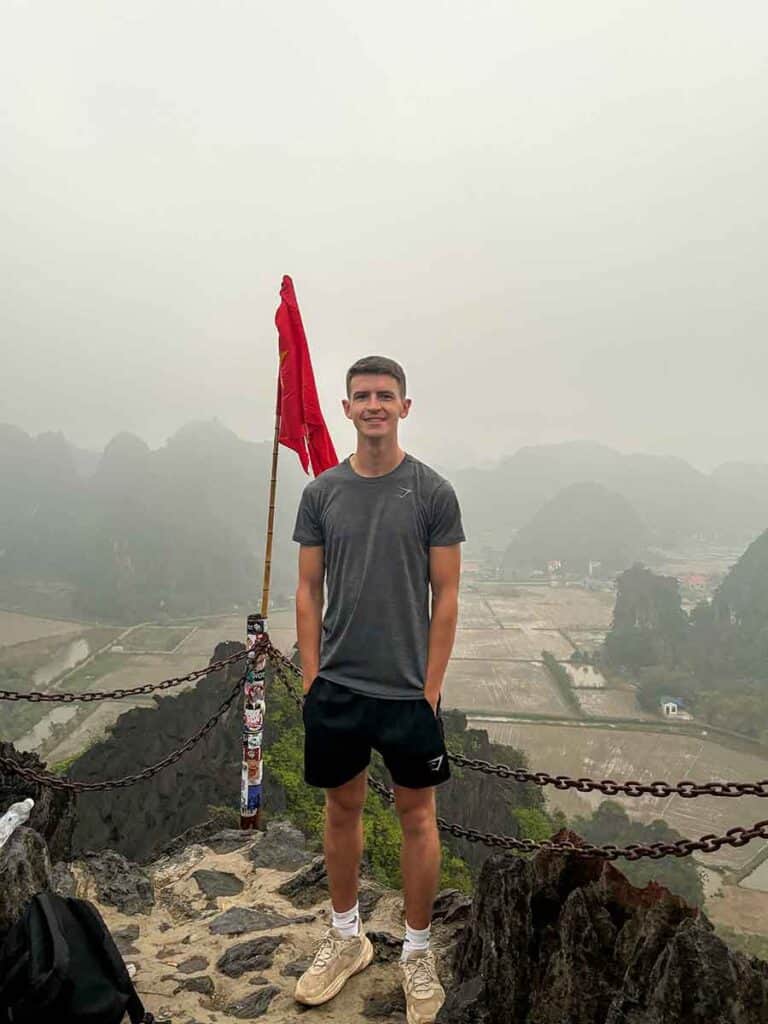
One of the biggest selling points for Vietnam is how cheap it is! In fact, Vietnam is one of the cheapest places in the world to visit . You can get by for pennies in Vietnam, and it’s one of the biggest reasons people choose to visit. I’ll go into more detail about money later.

On the other hand, not as many people speak English in Vietnam as they do in Thailand . That being said, most people in the tourism industry (tour guides, hostel staff, etc.) will speak a good enough level of English. Just don’t expect a full conversation every time you order a Banh Mi.
But don’t let this put you off. Vietnam has quite literally everything you could ask for from a country. Mountains, beaches, jungles, sand dunes , everything. Not to mention the amazing culture, food, people and endless number of things to do.
So yes, it’s worth backpacking Vietnam.
Is Backpacking Vietnam Safe?
While it’s impossible for me to personally guarantee your safety along the way, I can tell you that I was in Vietnam for over a month and I always felt really safe.
Because of the strong backpacking community I mentioned, you are very rarely actually alone, even if you are travelling solo. You constantly meet new people at hostels, on tours, at bars, and anywhere else, so you’ll always have someone to stick with.

Aside from this, Southeast Asia is considered the safest region for backpacking. There are low crime levels in Vietnam , particularly against tourists.
In terms of travelling as a female, I can’t comment personally, but when I spoke to female members of groups of friends I made while travelling, they always said they had to be more cautious of other tourists than they did of locals. So I think that speaks volumes about how safe Vietnam is.
How Much Does Backpacking Vietnam Cost?
As mentioned, a huge selling point of Vietnam is that it is one of the best countries in the world for backpacking because of how cheap it is. But just HOW cheap is it to visit Vietnam?
$1 USD is equivalent to roughly 25,000 VND as of April 2024.
I spent over a month in Vietnam and spent just over 15 million dong. This is equivalent to $601 for 30 days . That’s $20 a day!! Vietnam is so cheap to travel .

This included transport, food, activities and accommodation. And I did some pretty incredible things along the way such as quad biking in Mui Ne, 4-day Ha Giang Loop and a luxury cruise of Ha Long Bay.
But how much you spend is down to you as a backpacker . You might want to travel on a shoestring and only spend $15 a day (definitely doable), whereas others might prefer the flashpacking route and spend $40 a day.
To give you an idea of where my $20 went each day, here is a breakdown into the four categories:
It’s clear to see that doing activities made up the majority of my spending in Vietnam. Therefore, the number of activities you do will have a huge impact on your monthly cost while backpacking in Vietnam.

Despite activities in Vietnam being very cheap compared to the Western world, doing an activity every day can quickly add up. It’s important to budget effectively.
For example, the only activity I spent money on while spending 3 days in Ho Chi Minh City was a day trip to the Cu Chi Tunnels, which cost $24, so in this 3-day period, an average of $8 per day.
Vietnam Visa Requirements
Whether or not you need a visa to get into Vietnam depends on where you are from. Some countries have a visa exemption period , like the UK which has 45 days visa-free. Other countries require a visa, which usually last for 30 days.
I recommend checking your government’s travel advice page and researching the requirements for your nationality.

If you do need a visa, you can apply for an e-visa online which costs $25. They take about a week to process, so be sure to apply with enough time. I would recommend doing so as the queue for a visa on arrival when I landed in Vietnam was huge.
Top tip: To get into Vietnam, you will be required to have proof of onward travel. Onward Ticket is a great service which “loans” you a flight ticket for a small fee.
How Long Does Backpacking Vietnam Take?
I spent one month in Vietnam and I would say this is the perfect amount of time to do the whole country. One month gives you enough time to go from south to north or vice versa.
If you have less time than this, I would stick to either the north of Vietnam, which takes about 2 weeks to travel properly or stick to the south and central parts of Vietnam, which also take about 2 weeks.
And if you have even longer than a month, that’s even better. Vietnam isn’t quite as developed for tourism as the likes of Thailand yet, so there are still lots of hidden gems and opportunities to go “off the beaten path”.

When To Backpack Vietnam
Unfortunately, there isn’t really a perfect time of year for backpacking Vietnam. Since the country is so long, the north and south experience different climates , which are usually the opposite to each other.
For example, if you visit between November to April, this is winter in the north, but in the south, this is the dry season when temperatures are higher.

In the south, the monsoon season is from May to September. In the north, the monsoon season is from October to April. Finding the middle ground, March until May is the best time to visit Vietnam.
Monsoon season is when there is the highest amount of rain in the country, and having visited the north during monsoon season, trust me, you don’t want to visit during monsoon.

How To Get To Vietnam

Getting to Vietnam isn’t as always as simply hopping on a flight and arriving at your destination. From many countries, you will need a flight with a few connections such as to Bangkok or Singapore then onto Ho Chi Minh City or Hanoi.
You can get direct flights from the US and some other countries, but they cost a fortune which isn’t what you want when budget travelling.

A return flight from the US to Vietnam can be as low as $750 or as much as $2000 depending on how many connections you have, the time of year, and some other factors. One of my top backpacking hacks is to be flexible with your dates and use Skyscanner to find the best prices.
If you are already in Southeast Asia, you can cross by land from Laos or Cambodia. Cambodia is the easiest as it has the most Vietnam consulates, making it easy to get a visa. But to be honest, for the effort, it’s worth flying in my opinion because land borders are always really slow and boring.
How To Get Around Vietnam
Getting around Vietnam is simultaneously incredibly easy but incredibly frustrating.
It’s really easy because you can always book buses from hostels to literally anywhere in the country. Hanoi to Mui Ne? No problem. Phong Nha to Ha Long Nay? No worries.
What makes it frustrating is that things are always late in Vietnam and things are always slow in Vietnam. Not to mention there is never any communication on what is going on, you usually change vehicles a few times, and the seats are always small.

I preferred travelling by train, even sleeper trains where I got the top bunk and couldn’t even sit up, as the trains are generally more reliable in terms of timings.
But as someone said to me once on a train, “Even when it doesn’t seem like it, things always work out in Vietnam” and this is the truth.
If you prefer to book online, I recommend using 12Go as you can see all of the available options, or FUTA if you want to book like a local, but it’s not always as clear what ticket you need. But honestly, I would book through your hostel as it means you get picked up from the hostel rather than having to go to a meeting point, plus it’s cheaper 9 times out of 10.
For shorter distances, like within cities or for day trips, then Grab is a good option. It’s the equivalent of Uber in Vietnam and Southeast Asia. It’s so cheap and reliable, although in some parts of Vietnam, there are only cars available, not bikes.

What To Bring To Vietnam
Honestly, you don’t really need to bring anything out of the ordinary to Vietnam. Aside from the usual must-haves for travelling on a budget , you only really need these few specific things:
- European Plug Adapter: If you are from Europe, your plugs will fit the sockets in Vietnam. If not, this is the type of socket you need in Vietnam.
- VPN: While it’s not something you take to Vietnam, I would recommend you get one for your trip. Some things are blocked in the country such as Medium because they wrote anti-communist articles about Vietnam.
- Microfibre Towel: Most hostels in Vietnam do give you towels, unlike in other countries, but I always carry a microfibre one just in case, as they dry quickly and take up little room.
- Revolut Card: Cash is king in Vietnam, but using a Revolut Card in Vietnam waives the ATM fees and means you can withdraw cash without paying any transaction fees.
- Toilet Roll: I wouldn’t bring it with you, but I would recommend keeping some in your bag as not every toilet you come across will have some. Note you can’t flush toilet paper in Vietnam and it needs to go in the small bathroom bin instead.
- Filtered Water Bottle: You can’t drink tap water in Vietnam, and even though you can buy water really cheaply, you might want to save the planet and use a filtered water bottle so you can safely drink the water. I use LifeStraw personally and love my bottle.
- Padlock: Hostels in Vietnam usually have lockers for you to put your bag in, but you need to provide your own padlock.
- Day Bag: I don’t know about you, but I don’t want to carry around a 40L bag every day. Bring something smaller which you can take during the day and leave your big bag in the hostel.
Josh’s Top Tips For Backpacking Vietnam
As I said in the introduction, I made some mistakes while backpacking Vietnam. Nothing massive, but things that could’ve saved me a few dollars here and there. To make sure you make the most of your time in Vietnam, aside from general budget travel tips , I’ve put together some things which are worth knowing before visiting along with my top tips I picked up during my trip.
- Eat street food: Street food is the best way to eat in Vietnam in my opinion. The food is more authentic, it’s incredibly cheap, and it’s how the locals eat. And no, you’re not guaranteed to get food poisoning.
- Money is in thousands: If someone says something costs “thirty”, they mean 30,000. Always assume everything to be in thousands. I didn’t see anything for cheaper than 3,000 dong in shops, so you won’t find anything below 1k dong.
- Don’t stop walking: Crossing the road in Vietnam is a fun experience (not) especially in the big cities. Don’t expect anyone to stop for you, they just go around you. Keep walking at the same speed – don’t stop – and maintain eye contact with drivers.
- Pay on checkout: For some reason, hostels in Vietnam get you to pay on checkout rather than on check-in. It took a while to get used to but I actually prefer it now because it means you pay for any tours, bus tickets, etc all at the end too.
- Haggling is normal: Honestly, it took me a few weeks to get used to haggling as I don’t like doing it, but it’s just how it is in Vietnam. Usually, the actual price is around half of what they originally said.

- Cash is king: Vietnam is a very cash-based country. You won’t find many places which accept card payments, and those that do will charge a fee, usually of at least 3%.
- Tourists pay more: Not that there’s anything you can do about it, but you will pay more as a tourist than a local. Sometimes people would tell me one price then quickly correct themself to a higher price – it happens when they forget to say the tourist price. On these occasions, you can get things for the tourist price.
- Don’t rely on Google Maps: Vietnam is probably the worst country I have been to when it comes to Google Maps. Things can sometimes be wrong by a few miles – which happened to me at a bus meeting point! Go old-school and go by address.
- “One dollar” means 25,000: Sometimes Vietnamese locals will say something costs $1. If they say this, it means it costs 25,000 dong regardless of the current exchange rate.
- Expect a lot of karaoke: While it’s a stereotype that Asian countries love karaoke, this is certainly true in Vietnam. On countless times I have seen people do it in the streets by themself with no one else around, which I think sums up how much it’s loved. One of the hostels I stayed in also had a state-of-the-art karaoke room, despite being a bang average hostel in other departments.

- Always look back: The landscapes in Vietnam are unbelievable, but make sure you look behind you when you’re going places, especially on the back of a bike, as you don’t want to miss any views. This applies to the Ha Giang Loop especially.
- No one checks tickets: You’ll get a ticket for everything in Vietnam. Day trips, buses, tours, whatever. I would say about 1/10 times these tickets are actually checked and instead, your name is usually on a list, or your hotel name is. So don’t panic if you lose a ticket.
- Bars use tabs: In Vietnam, it’s very rare to pay for a drink when you get it. 99% of bars just start a tab for you. Make sure you pay it before leaving as it’s so cheap anyway, but if you don’t pay it, you’re directly affecting and hurting local businesses.
- Don’t get in a taxi without agreeing a price: Taxis will sometimes not use meters to get a higher price out of you. Agree a price before getting in, or use Grab instead as I mentioned earlier.
- Get an eSIM: eSIMs are the best way to stay connected in Vietnam. I got an eSIM in Vietnam and had no problems. It meant I had 5G all the time, no matter where I was.
- Dress respectfully in temples: Make sure you cover your shoulders and knees as a minimum before going inside temples.

Vietnam Travel Checklist
To help you plan your itinerary for backpacking Vietnam, here are the most popular places to visit in Vietnam. These are too many places to visit in a month, so if that’s how long you have, I would pick those which appeal to you the most. I’ve put them on a list from north to south.
- Ha Giang Loop
- Ha Long Bay (or Cat Ba and Lan Ha Bay)
- Ninh Binh (Tam Coc)
- Ho Chi Minh City
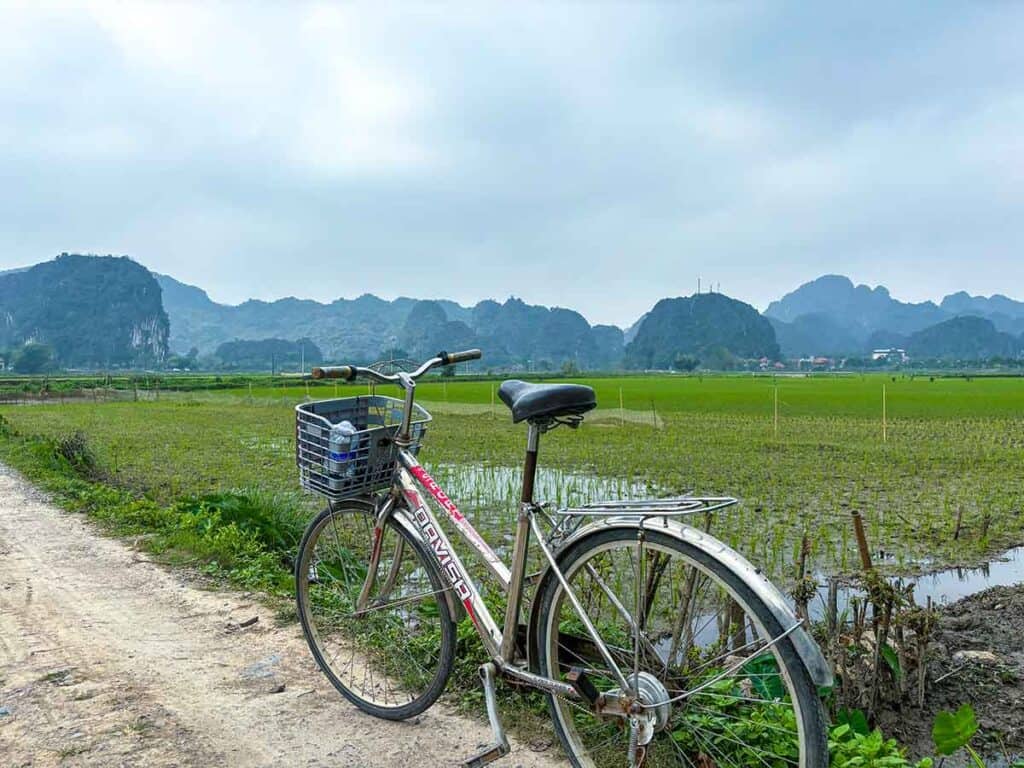
Vietnam Backpacking Itinerary
Everyone is different so my preferred itinerary will be different to yours and yours will be different to the next person’s. Everyone likes different things and wants something different out of their trip, but to give you an idea of what’s possible during a month in Vietnam, here is the itinerary I followed for a month backpacking Vietnam.
Note: I went from south to north, but most people go from north to south. It doesn’t really matter, you can just flip my itinerary if you want to follow it. I started from HCMC because the flight was cheaper from Bangkok than to Hanoi.
Ho Chi Minh City: 3 nights

Ho Chi Minh City was my first experience of Vietnam and it was a real culture shock . I had just spent some time in Bangkok, but HCMC is just a whole other level of crazy.
The roads are mental and crossing the street for the first time was simultaneously terrifying and exhilarating.
To be honest, I didn’t love Ho Chi Minh City. I didn’t feel like there was loads to do. I took a day trip to Cu Chi Tunnels , visited some museums (my favourite is the War Remnants Museum) and did some sightseeing – other than this, there’s not really anything else.
I stayed in Saigon Cozy House Hostel and I would recommend it. The owner Kim is really friendly and if nothing else, it’s incredibly cheap.
Book your stay in Saigon Cozy House
Mui Ne: 3 nights

From Ho Chi Minh, I had a short bus ride only lasting a few hours to Mui Ne. I wasn’t originally planning to go there, but someone in Thailand convinced me to so I did, and I’m so glad I added Mui Ne to my itinerary.
It’s one of my favourite places in Vietnam . I was originally only planning to stay for 2 nights but I decided to stay an extra night because I was enjoying it that much.
On my first day, I took the classic tour which everyone takes in Mui Ne, taking you to the Fairy Stream, Floating Fishing Village, White Dunes and sunset at the Red Dunes. I did end up paying the 800k dong to go quad biking on the White Dunes and I don’t regret it one bit.
Sure, it is expensive but it’s so worth it. I had such a good time, and it’s one example of where I splashed out in Vietnam. Remember to treat yourself once in a while! Plus, the tour itself only cost 180k dong, so it balanced things out a bit.
I stayed in Mui Ne Backpacker Hills and this is where I spent most of my time in Mui Ne as it has a pool and lots of sun loungers. The rest of the time was spent on the beach. After being on the road for a while, I definitely needed a few days of relaxation.
Book your stay in Mui Ne Backpacker Hills
Dalat: 2 nights

Mui Ne to Dalat was a bit of a longer journey, but nowhere near as long as the bus and train rides I would have later in the trip.
I had heard really good things about Dalat and I won’t lie, it didn’t love up to the hype for me. But even after I had been, people still told me how much they loved it, so maybe I’m the exception.
Dalat has a beautiful countryside with the Datanla Waterfalls as one of the main attractions. I didn’t end up doing any of the toboggan rides because I had just splashed out on the ATV in Mui Ne – maybe it would have made me love Dalat.
You also have the Dalat Clay Tunnel , Crazy House and of course, the infamous Maze Bar – which admittedly is pretty cool.
I stayed for one night less than I was originally planning to, but I did love the hostel I stayed in which was Hugo’s Family Hostel . Again, the owner Maya is really friendly and helped me out a lot in my planning.
Book your stay in Hugo’s Family Hostel
Nha Trang: 3 nights

The bus ride from Dalat to Nha Trang was really windy along country roads, but for once, I actually got to Nha Trang earlier than I was supposed to.
Nha Trang pleasantly surprised me. I wasn’t expecting much as I kind of just went there to split the long journey to Hoi An in half, but I really liked Nha Trang.
The beach is beautiful – I really liked seeing the city skyline from the beach , I haven’t been to many beaches like that. I also liked Long Son Pagoda. It too gave some nice views, but the temples themself are cool too.
By this point, even though I had only been in Vietnam for just over a week, I had been travelling for about one month, so I had had enough of staying in hostels . As much as I love them, everyone needs a break with some privacy now and then.
So I booked myself a private room which cost me $7.50 per night , which is so cheap but so worth it. I stayed in Cuong Hai Apartment and it was really good value for money. I even had my own kitchenette and balcony.
Book your stay in Cuong Hai Apartment
Hoi An: 4 nights

Nha Trang to Hoi An was my first train ride in Vietnam. I got the sleeper train from Nha Trang to Da Nang, which is just a bit away from Hoi An. Honestly, I really enjoyed it even though I couldn’t sit up at all. I surprisingly slept all night and didn’t wake up once.
I was planning to spend my first day in Da Nang, but the weather was awful so after going to the beach and being rained on, I checked out the Dragon Bridge then headed to Hoi An with a quick stop at The Marble Mountains along the way, which were really cool to be fair.
Since I was in Vietnam in February, it turned out to be Tet while I was in Hoi An. It meant things shut down for a week, but it was amazing to see the fireworks and all of the cultural displays around the place.
One of the “most popular” things to do in Hoi An is to take a day trip to Ba Na Hills with the famous Golden Hands Bridge. I was tempted, but I had heard it was a bit of a letdown, so I changed my day trip to Hue. I know, it’s not long enough in Hue and I agree, but I just wanted to see what it was like and I really liked it. I’ll go back one day.
As for Hoi An itself, I loved it. I can’t explain why but it reminded me of Chiang Mai , which was good because I loved Chiang Mai. I think it’s because the Night Market reminded me of the Gate Market in Chiang Mai because there were lots of food options for really cheap. If you can try one thing, try Vietnamese pizzas – I could eat those things all day.
Carrying on with the theme of food, I took a cooking class in Hoi An which included a ride in the famous round bamboo boats . Heads up, you have to pay extra to be spun really fast. I didn’t think it would be worth it, seeing it was enough for me.
I also took a lantern-making class which I can’t recommend enough. It was super fun, and they compress well so I was able to bring it home with me.
Hoi An was also home to the best hostel I stayed in while backpacking Vietnam. It is called BACKHOME and everything about it was perfect. The rooms are big, the beds are comfortable (with curtains – like most hostels in Vietnam), the staff are really friendly, and the free breakfast is delicious.
Book your stay in BACKHOME
Phong Nha: 4 nights

Getting from Hoi An to Phong Nha was the worst travel experience I had in Vietnam but this was because it was during Tet. I had 5 buses cancelled and 1 train too, but eventually I managed to get a ticket from a random hostel which was leaving the same day I bought it.
The bus took me to Hue where I was dropped at the side of the road for an hour before another bus to Hanoi came and I got on, then they drove past Phong Nha without stopping and when I questioned it, told me they were stopping.
Another 20 minutes went by then I asked them what was happening so they pulled over, stopped the bus and told me to get off and wait. They drove off then a random car came about half an hour later and thankfully he took me to Phong Nha.
Hopefully, your journey goes smoother than mine – but it was still worth it for me because Phong Nha was a true paradise.
It’s so peaceful in Phong Nha and I really enjoyed the tour which took me to the Botanical Gardens, Paradise Cave and the Dark Cave. It cost 1.45 million dong, so it was pretty pricey but it was worth it. I also loved visiting the Duck Stop and I’m glad to say it lives up to its reputation.
I chose the perfect hostel too. Village House is right by the river and has a big garden with swings and beaches overlooking it – which is where you eat the free breakfast. It’s the perfect place to take a few days to chill. I had really good weather too which was nice, as it was the last time I saw the sun in Vietnam.
Book your stay in Village House
Ninh Binh: 3 nights
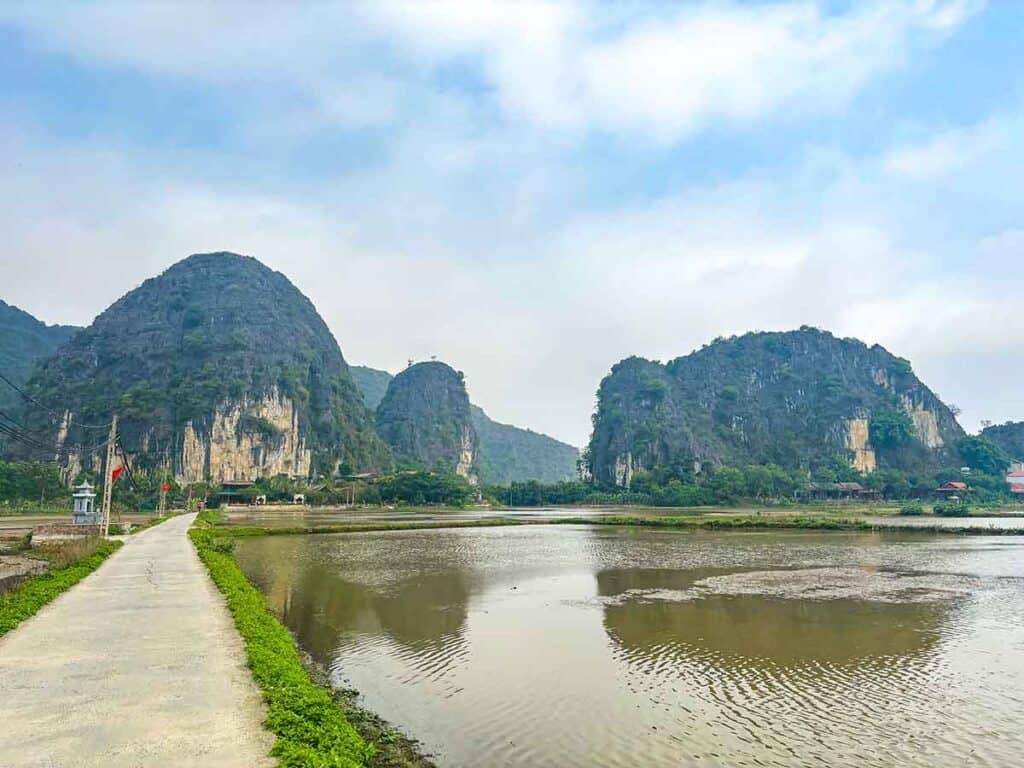
As I said earlier, the north of Vietnam and the south of Vietnam experience different weather throughout the year. In February, the south is warm and the north is wet. So from here on, I had bad weather the whole time, but I didn’t let it ruin my trip.
In Ninh Binh, most of the hostels are in Tam Coc . It’s a small town outside Ninh Binh City and it’s filled with people backpacking Vietnam.
It’s so scenic and the landscapes are breathtaking. I took a boat ride (which is a must-do) in Trang An and it was so soothing. It was also surreal to see the view from Mua Cave, which is one of the most iconic viewpoints in all of Vietnam.
In terms of accommodation, I stayed in Tam Coc Riverside Homestay and again, I made a good choice as the owner, Nam, gave me a printed map and annotated it with me, showing me all the best places to go. Not to mention a tasty free breakfast once again.
Book your stay in Tam Coc Riverside Homestay
Cat Ba: 2 nights

It’s impossible to visit Vietnam without visiting Ha Long Bay, right? That’s what most people think and I agree, to an extent.
I did visit Ha Long Bay, but rather than paying a fortune to stay in the bay, or to take an overnight cruise, I stayed on Cat Ba island in a cheap hostel ( Luna’s House ) for the same price as anywhere else and booked a day tour which took me to Ha Long Bay and Lan Ha Bay for 600k dong.
That’s what travelling on a budget is all about – making smart choices to save money while getting the same experience as anyone else.
The weather did ruin my tour a bit as it was really foggy but it was still a good day, and sailing through somewhere so famous was class – the landscapes are spectacular.
I also got to kayak through Ha Long Bay which was a super fun experience which I would recommend.
Book your stay in Luna’s House
Ha Giang: 4 nights

The Ha Giang Loop is an absolute must-do when backpacking Vietnam. I went for the 4-day option and loved every second of it, even when it was raining hail stones.
I’m not exaggerating, the views are out of this world. Genuinely the best views I have ever seen in my life and no pictures will ever do them justice.
It’s getting pretty touristic and the tours are more and more popular every year, but it’s still worth it.
I did my tour with Hong Hao and I really liked it because they limit the group size to 12. My group only had 8 people and it was much better because I actually got to know people – as opposed to other companies which have 100s of people at once. Plus, it’s cheaper than most other options too, yet I had a private room every night!
Also, the hostel you stay in for free the night before you start is amazing. It’s like mini bedrooms but as bunks. It’s the most privacy I have ever had in a hostel, and the beds are double beds too!
If there’s one thing you do in Vietnam, make it the Ha Giang Loop. It’s unreal.
Hanoi: 3 nights

Hanoi was my last stop in Vietnam and it was the perfect way to end my trip. I really liked the city – much preferred it to Ho Chi Minh City.
Visiting Train Street in real life was a pinch-myself moment as I had obviously seen so many TikToks. It’s a lot closer in real life than it looks, it was actually kind of scary, to be honest, but thrilling too.
As someone who loves history, there were so many other things to check out in Hanoi from the Vietnam War , such as the Imperial Citadel of Thang Long. Plus a load of temples too like the iconic Tran Quoc Pagoda, which was the prettiest pagoda I saw in Vietnam.
I also really liked The Note Coffee which is a coffee shop covered in post-it notes . It’s really unique and a quaint, cool idea. You can write your own note and stick it somewhere. Plus, the coffee is really nice too, I had an egg coffee and it was a 10/10.
My hostel was Hanoi Backpackers and it’s just your average backpacker’s hostel. Offers pub crawls, has a rooftop bar, free breakfast, all the usuals. But it was good and I would recommend it – I had a good stay.
Book your stay in Hanoi Backpackers Hostel
Below are some commonly asked questions relating to backpacking Vietnam along with my answers to each question.
$20 per day is enough to travel in Vietnam on a budget. You can travel luxuriously for $30+ a day, and you can get by on as low as $10 a day if you don’t do many paid activities.
The best place to start backpacking in Vietnam is either Hanoi in the north or Ho Chi Minh City in the south, depending on if you want to go north to south, or south to north. Most people go north to south starting in Hanoi.
No, 3 weeks is not too long for Vietnam. In fact, you won’t be able to see everything Vietnam has to offer in 3 weeks. You need at least a month to visit all of the most popular destinations, but you could easily spend longer than this too.
And there you have it, a complete guide to backpacking Vietnam.
It’s a really easy place to travel on a budget as you can do so many unreal things for a small fraction of the price it would cost at home.
I loved it there and I can’t wait to go back. I’m sure you’ll love it too as you can definitely do a lot for your money if you are clever about it.
Being budget-conscious while exploring Vietnam is all about making smart choices such as choosing Lan Ha Bay over Ha Long Bay , which offers a similar experience but has a huge price difference.
Josh Band is the founder of A Backpacker's World. He is a full-time traveller currently on a mission to visit every country in the world. As a full-time traveller, Josh knows exactly how to make the most of any trip and shares these tips with his readers. Josh mostly travels as a backpacker on a budget, so he is also an expert when it comes to getting the most of your money while travelling.

Vietnam Backpacking – An Ultimate Guide With Itinerary, Tips & Tricks

Is Vietnam backpacking on your mind? Well, you are not alone. Vietnam is one of the most popular destinations in South East Asia among backpackers and also among adventure seekers, nature lovers and food enthusiasts.
Lip-smacking food, colourful markets, beautiful terraced-green fields surrounded by limestone mountains, lovely mountains, beaches lined with fishing villages and bustling cities – Vietnam has it all.
Backing in Vietnam is incredibly cheap, beautiful, comfortable, fun and adventurous. Traveling Vietnam on motorbikes is a unique and popular way to explore this gorgeous country from one end to another.
Vietnam Backpacking
You can go backpacking in Vietnam starting at one end, either from the north or south or go to another. Ideally, it takes 4 to 5 weeks for traveling in Vietnam to do the whole length. Read further for itineraries and what to do in Vietnam from 1 to 4 weeks.
Top Things to do in Vietnam
Here are some of the incredible things and excellent, unique experiences you should do during your Vietnam Backpacking.
Go hiking in the mountains of North Vietnam
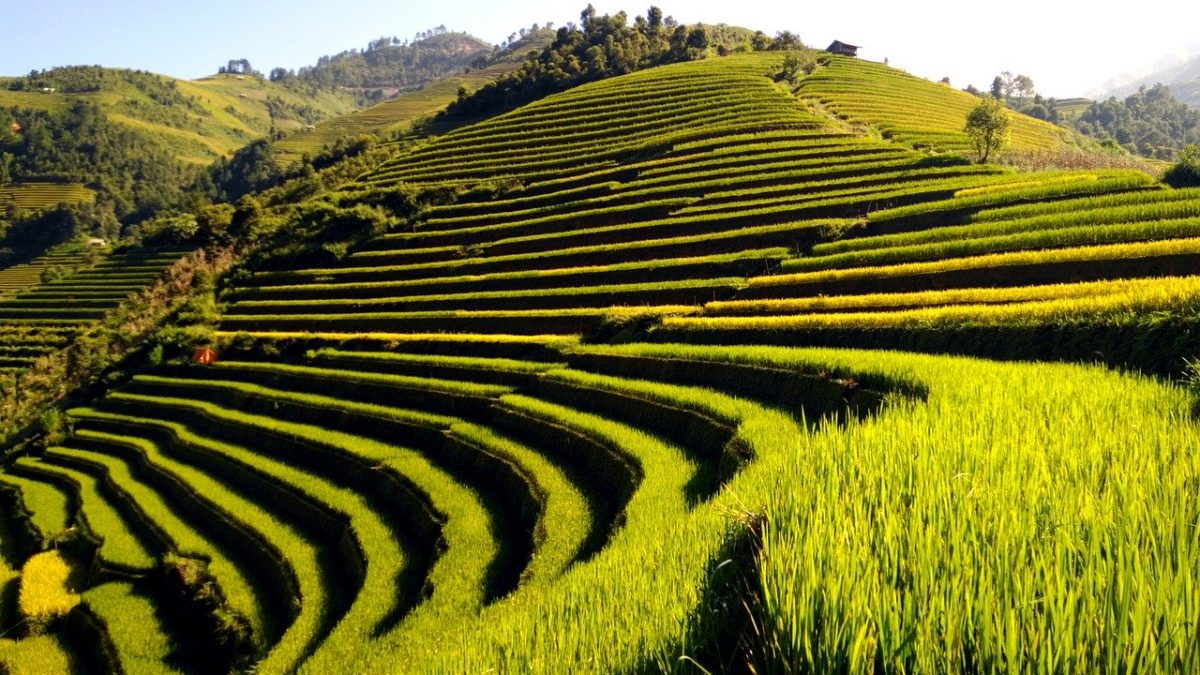
The north of Vietnam is home to some of the high mountain ranges in the country, home to remote villages surrounded by splendid landscapes.
One of the must-have experiences on Vietnam backpacking is to hike amidst these mountains in Sapa and Ha Giang, two towns known for their scenic viewpoints.
Take a boat trip amidst the gorgeous countryside
When you visit Vietnam, make sure to take a boat trip to Trang An. This half-day trip will pass through rugged village life in the country, where you will see stunning landscapes.
Witness colourful festivals in Vietnam
If you want to see Vietnam’s rich culture and traditions in full display, witness their festivals. Plan to travel to Vietnam for their largest festival Tet Nguyen Dan or Vietnamese New Year celebrated at the arrival of spring.
According to their Lunar calendar, Tet is celebrated around the last week of January or early February.
If you go backpacking Vietnam during September, you can witness the mid-autumn festival in selected regions.
In Hoi An , the lantern festival happens every month on the 14th day of the Lunar calendar, where hundreds of lanterns will float in the town.
Explore the world’s largest caves
Phong Na Ke National Park in north-central Vietnam is home to plenty of caves, including the largest cave in the world Hang Sơn Đoòng . It is costly to visit this cave, and there is a waiting period to acquire a permit as only limited visitors are allowed.
But there are many other fascinating caves through which you can hike and even camp, which is one of the top things to do in Vietnam.
Ride motorbike in Vietnam
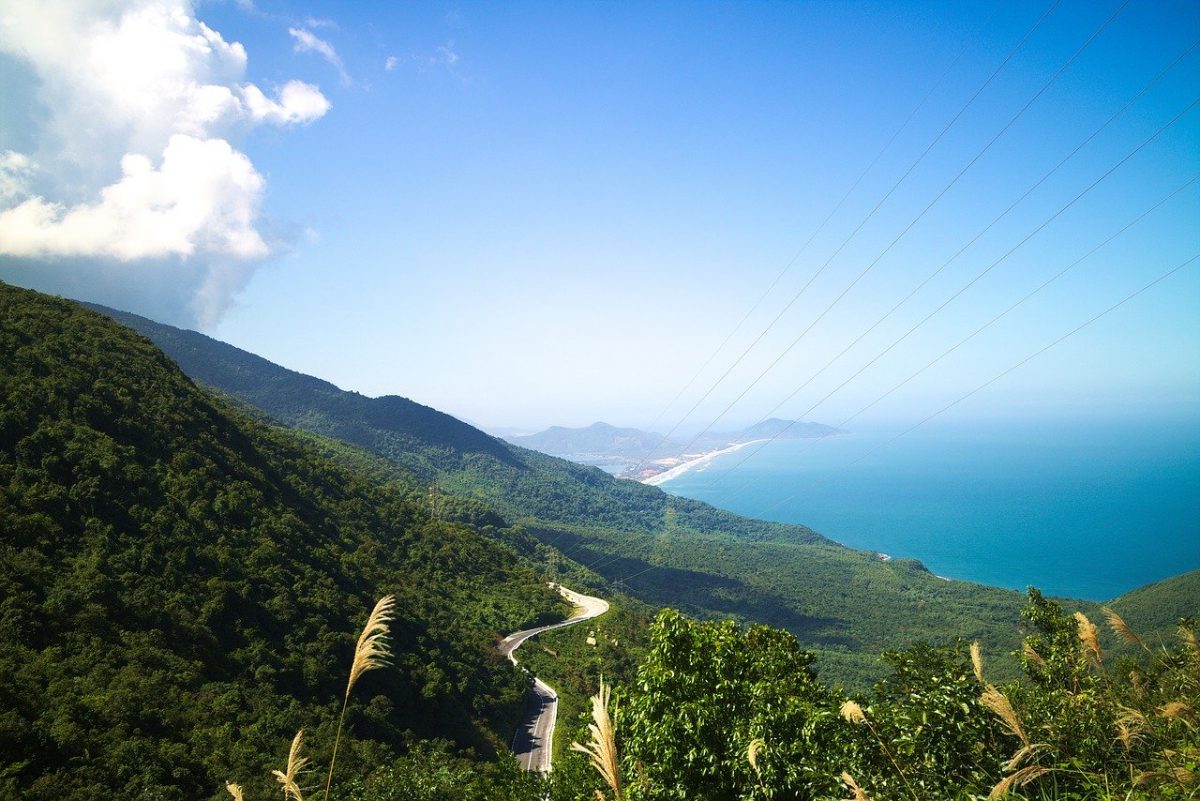
One of the unique things that you can experience in Vietnam is driving a motorbike. Ha Giang Loop, Hai Van Pass and Monkey Pass are some of the exquisite bike routes in Vietnam, which is pretty adventurous and fun.
Join cooking classes
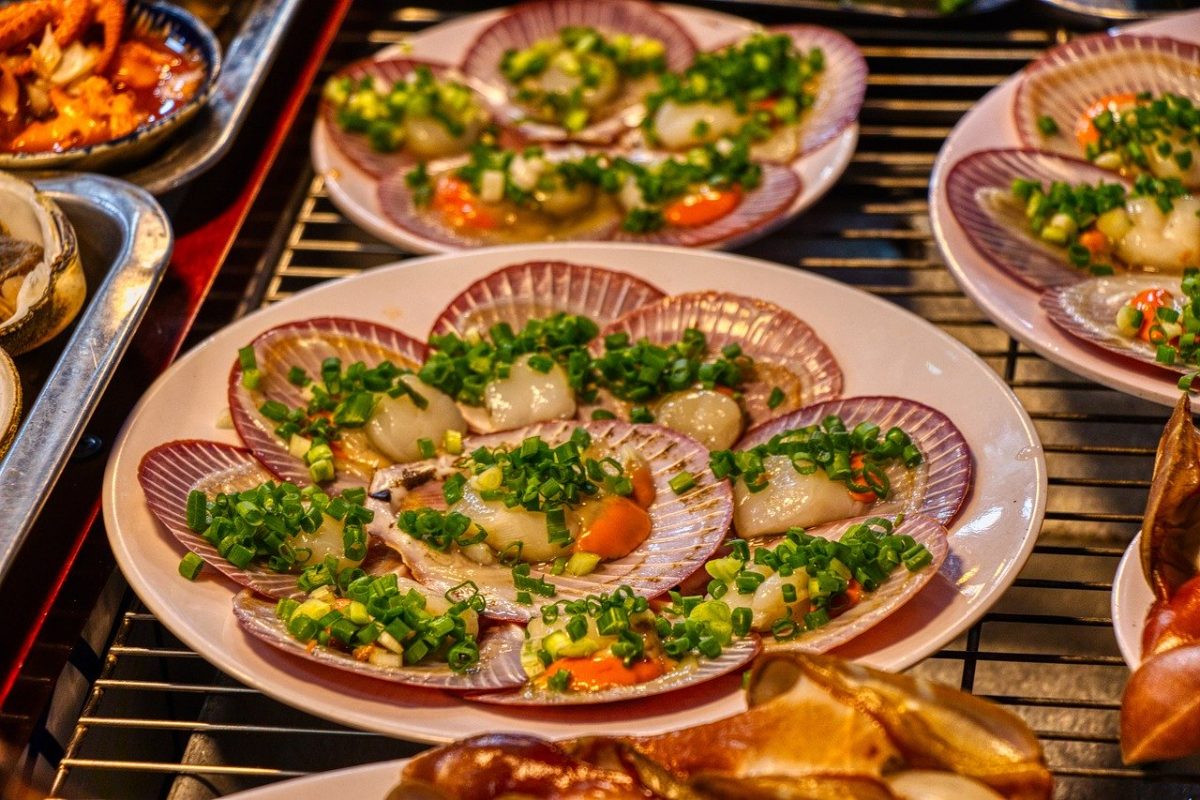
Vietnamese food is one of the most loved cuisines, and you will likely fall for the delicious dishes too. What’s better than learning from the locals?
Bring those tasty delicacies home by learning to cook in those easy, fun cooking classes for travelers, which you should try.
Sign up for food tours
If cooking is not your cup of tea, you can still enjoy the best of Vietnam’s food by joining food tours, which are available in almost all the towns.
An expert local will be the best guide to give these gastronomic tours where you can taste the best of dishes in every city.
Go on a cruise in Halong Bay
Cruising along Halong Bay in northern Vietnam is on every Vietnam backpacker’s list. As such, it is trendy but is still worth taking a trip to these lovely islands.
Light lanterns in Hoi An
Hoi An is the prettiest town in the county, and also among the top destinations in Vietnam backpacking. This cute town is known for the traditional lanterns, which you can light as well.
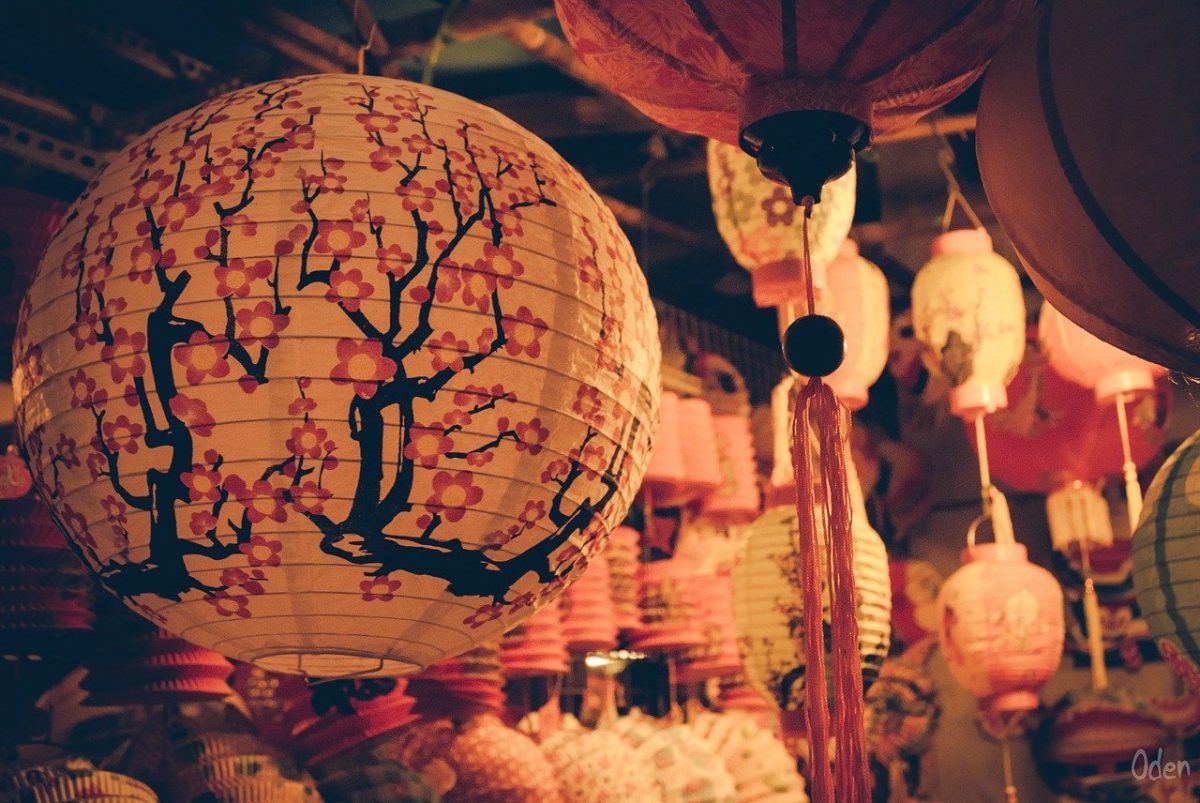
The whole town is filled with these glowing lanterns at night, and it is a sight to behold. This town is also known for hand-made suits, which are quite popular among tourists.
Enjoy the nightlife at Walking streets
The walking streets in the cities offer the perfect gateway to the social life of the Vietnamese. Especially in Saigon, Bui Vien street is where you need to go to socialize at night.
Hundreds of locals and travelers will occupy the road, some around the small tables with Bia Hoi(locally brewed beer) and a wide variety of local food, and some on the streets walking and dancing.
Each city has its neighbourhood for fantastic nightlife, which is worth experiencing on your Vietnam backpacking.
Do kitesurfing and drive ATV
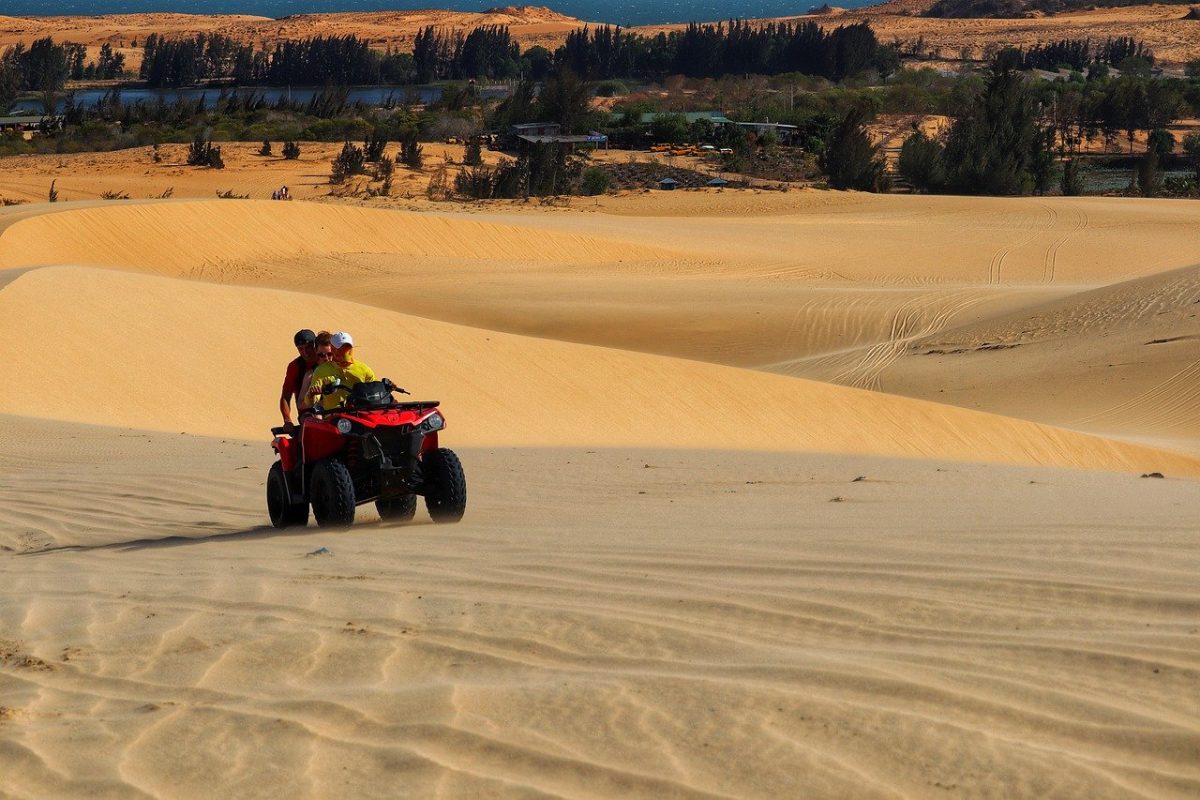
Mui Ne , the little city along the coast, is more than just a beach town. You can learn to kitesurf here, and also drive ATV on the dunes of Mui Ne, which is thrilling, scary and fun at the same time!
Get to know Imperial Chinese History
Not many people know that Vietnam has had the influence of the Chinese and the fact that they had built an ancient capital city during the Imperial times.
Hue in southern Vietnam is where you should go to get a glimpse of this part of Vietnam’s history.
Places to Visit in Vietnam
Here are the top places to visit in Vietnam, and a brief of what they offer.
Backpacking Ho Chi Minh
Ho Chi Minh, famous also as Saigon, is Vietnam’s largest city and the financial centre. Lying on the banks of the Mekong, it is also one of the busiest cities in the country. During your Vietnam backpacking, you will either love or hate Saigon.
If you are just starting, Ho Chi Minh will be your first destination, and you will probably hate the chaos, noise, pollution and the crowds at first.
But it grows on you as you explore the rugged Ben Thanh Market, Reunification Palace, Notre Dame Cathedral, traditional Saigon Post Office, Bui Vien walking street, and more.
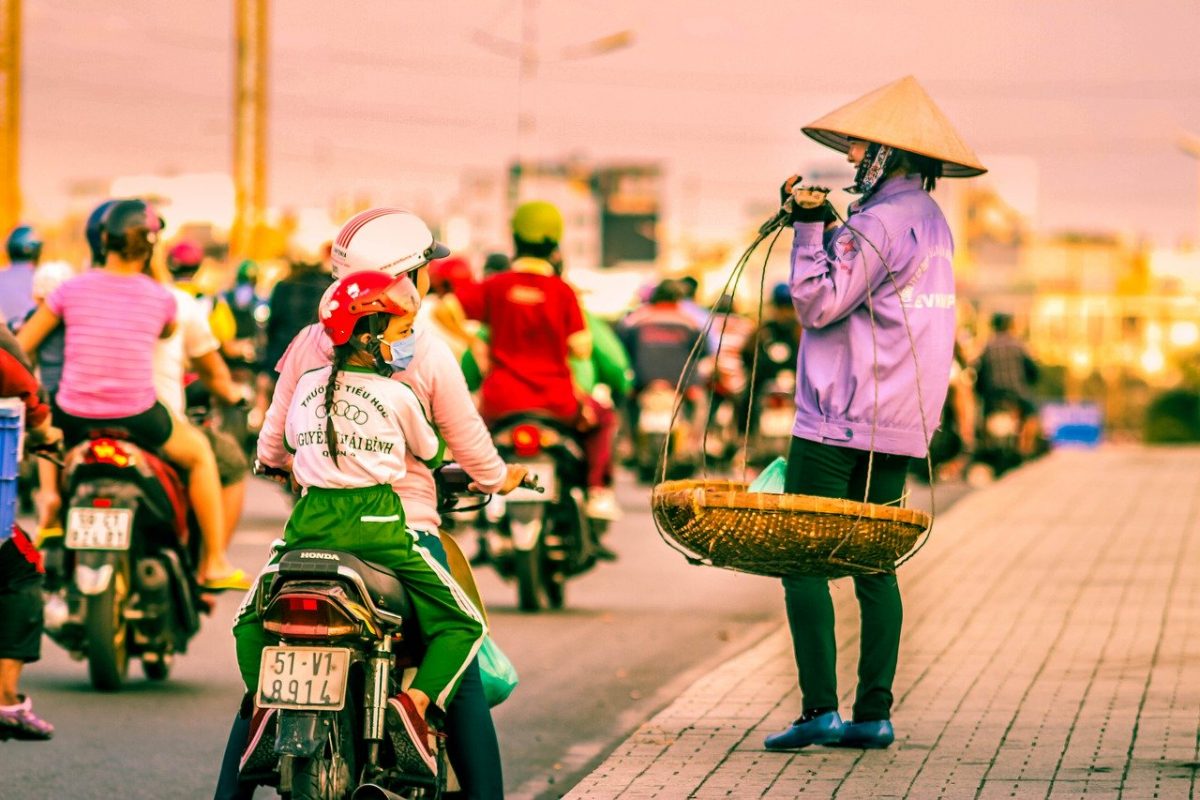
The War Remnants Museum is one of the city’s top attractions and showcases Vietnam’s dark war history.
Take a day trip to Cu Chi tunnels, where you will walk underground and emerge out, which was the hiding place for soldiers. War remains are a significant part of exploring Saigon, and so don’t skip these attractions.
Backpacking Mekong Delta
The islands on the Mekong Delta are easily accessible from Ho Chi Minh, and as such, many people plan day trips to those islands.
You can even stay overnight or make it a 2 or 3 days trip if you have time. But since these attractions are top-rated, expect crowds.
Backpacking Mui Ne
After a hectic Ho Chi Minh, Mui Ne feels relieving, due to its compact size, attractive coastal line with plenty of beaches, and fewer tourists.
You can explore white dunes, where you can also take an adventurous ride on an ATV. Check out the fishing villages to watch fishers at work and their life.
Walk through the fairy stream and then head to red dunes to catch views of gorgeous sunsets.
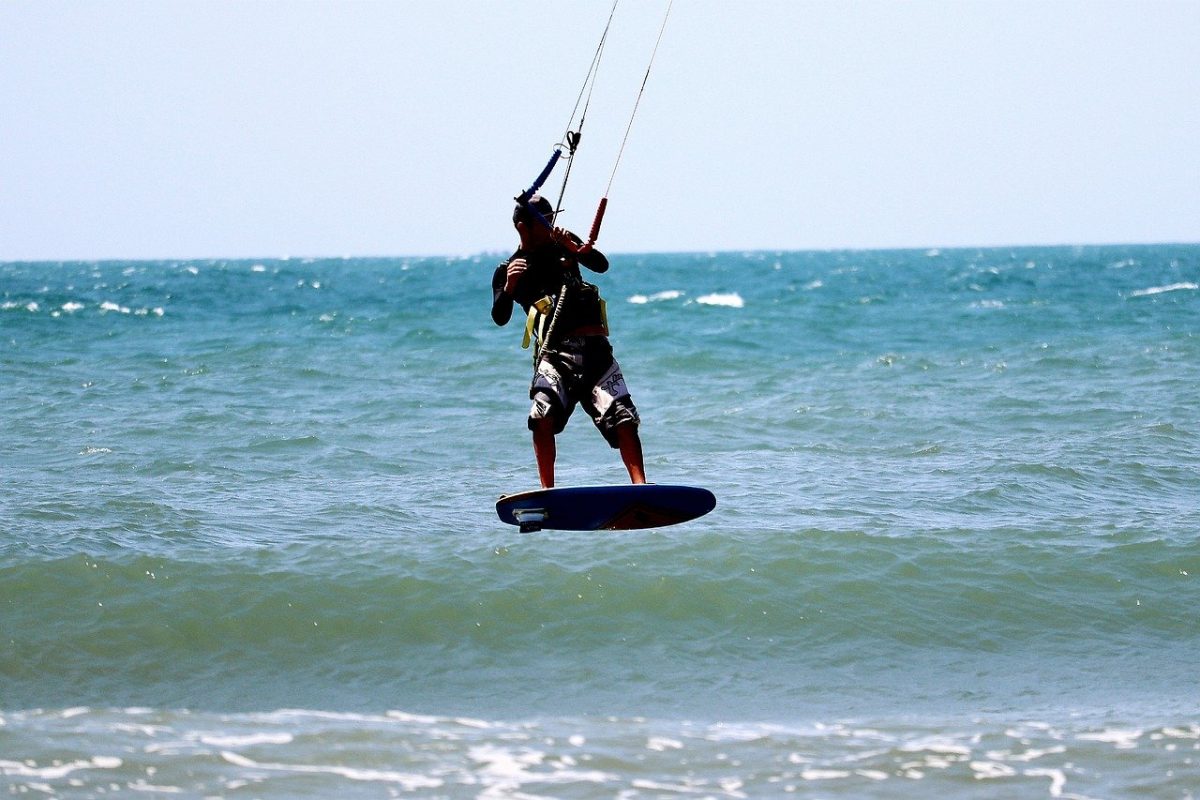
Witness the local life at the morning market on the beach while soaking in the views of the early morning sun, and then learn kitesurfing or swim and relax on the beaches.
If you love seafood, Mui Ne is your paradise to try all the excellent Vietnamese delicacies, which are prepared from fresh catch right in front of you.
Backpacking Hue
You will love Hue if history is your thing. You will also love the town if smaller towns surrounded by fertile countryside excites you.
There is plenty of budget accommodation available too, which makes it worth a quick stop between Ho Chi Minh and Hoi An.
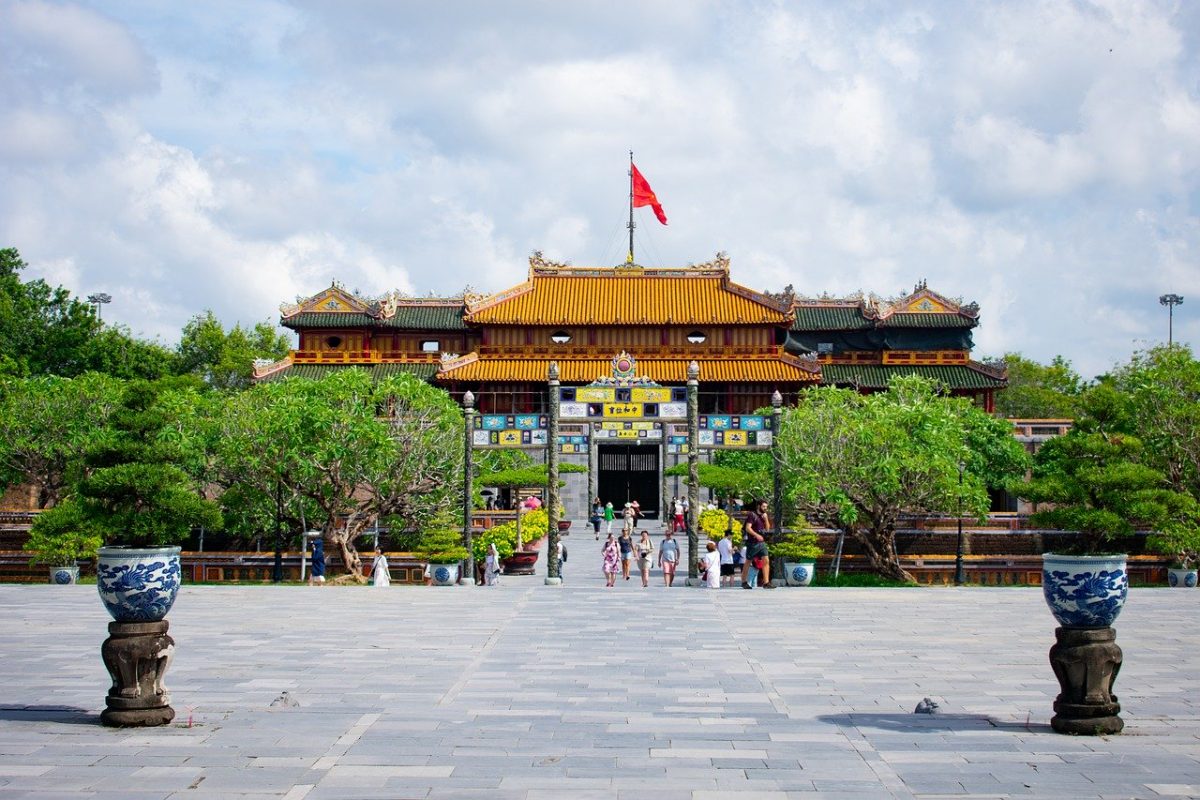
Visit the imperial city, which is enormous and enriched with Chinese traditional architecture, religion and history.
Drive to the three royal tombs, which are more than just monuments – traditional temples with intricate carvings, and the beautiful Thien Mu Pagoda.
Most people who have less than a week or two usually end up deciding between Mui Ne and Hue, but if you are here for more than 2 weeks, I’d suggest adding them both.
Backpacking Hoi An
Hoi An is hands-down the prettiest and the cutest town in Vietnam. It is very popular, and you will see tourists throughout the year. But despite the crowd, you should visit this town for its unique character.
The old quarter is where you should base yourself plenty of hostels in Hoi An are available there. It is the UNESCO heritage site, and all the streets are vehicle-free, which means you can walk along and soak in the beauty of traditional buildings, ancient Buddhist pagodas and plenty of cafes and restaurants.
Pass through these attractions and walk along the Japanese bridge, navigating your way through streets filled with colourful lanterns of all shapes and sizes. These lanterns are the symbol of Hoi An. You can learn to make them too!
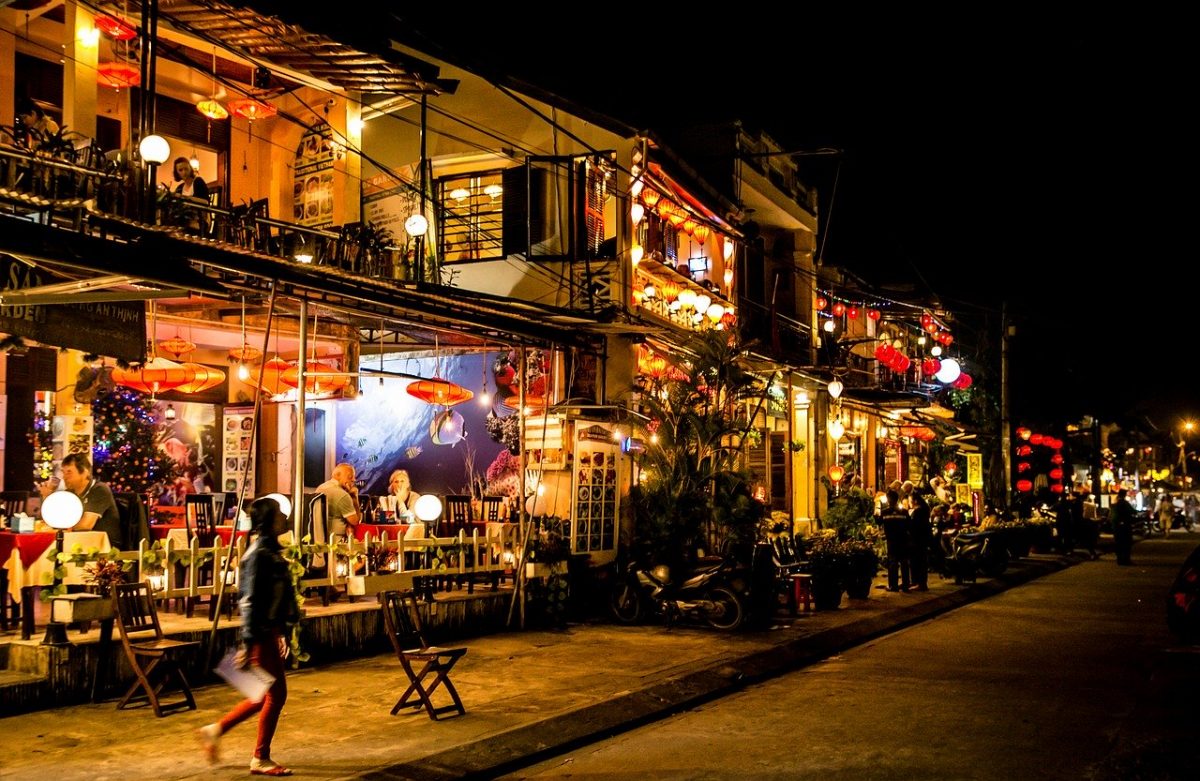
You will fall in love with the city at night, as these lanterns glow everywhere. Take a boat trip and light and set a lamp floating as you enjoy the views of this spectacle.
Shop for these lamps and other unique hand-made crafts in the bustling markets. Hoi An is also known for suits for men and women. Get yourself a suit stitched by local expert tailors.
Backpacking Danang
Most people visit Danang on a day trip from Hoi An or Hue. It is also the base for people who ride the Hai Van and Monkey Passes.
Either way, Danang is worth stopping over for its magnificent beaches, amazing views of the skyline and delicious seafood restaurants.
You can explore Marble Mountains, drive further up to Robin Hill to take the cable car, and take a few hours off to unwind on the beaches. Although Danang is a big city, there are plenty of budget accommodations and hotels available.
Backpacking Dalat
If there is one pretty hill town in Vietnam, it is Dalat . Its location at a slightly higher elevation makes a huge difference. You should stop at Dalat to catch a break from the hot and humid Vietnam, and feel the mountain breeze.
Explore the local market, visit the Rose Gardens and the Crazy house. You can easily spend 2 to 3 days in Dalat as there are plenty of things to do.
You can spend from one to several days exploring Lan Biang National Park known for lovely trails, splendid views and rich forests.
Dalat is known for many lakes, including the one right at the heart of the city centre to a few scattered around the town.
Rent a motorbike and explore the many waterfalls. The drive through winding roads and remote settlements make the journey even more memorable.
Backpacking Phong Nha
Phong Nha is the town of caves. If it is your first time seeing old, natural caves, you will find these giant formations of nature mind-blowing.
Again, you can spend a day or two covering the highlights of the town, or spend a week or more taking up guided hiking and camping tours through the caves.
If you are here for a few days, check out Phong Na Caves, Paradise Caves and Dark Caves. If you want more, check this post to see how you can plan multiple day cave tours in Phong Nha.
If you fancy, you can also visit the world’s most extensive cave, Soo Dong, with proper planning and of course, money!
Backpacking Ninh Binh
Ninh Binh Tam Coc was unheard of until recent years when it has turned out to be the face of offbeat Vietnam.
It is getting touristy and crowded, but there is still hope, and I’d highly recommend you add this to your Vietnam backpacking.
Take the signature boat trip from Tra Ang, visit the ancient pagodas, admire the panoramic views from the top of Hang Mua caves, or pick anything else from this amazing thing to do in Ninh Binh Tam Coc.
The good news is the town is still cheaper, and you will find plenty of cheap backpacking hostels in Ninh Binh Tam Coc, including guesthouses.
Backpacking Sapa
Another destination to experience mountains, trekking and get a close look at the Vietnamese ways of life in Sapa.
It is among the top attractions in Vietnam, no doubt, and very well so, given all the experiences the town offers. You can signup for guided private and group hiking tours in Sapa, which includes everything.
An alternative to Sapa is Ha Giang, which is more laid-back, non-touristy and still retains some of the authentic experiences for people backpacking Vietnam.
You can join guided hiking tours in Ha Giang or drive the Ha Giang Loop.
Backpacking Hanoi
The capital city of Vietnam is often overlooked by tourists, especially those short on time. But I’d suggest spending a few days in Hanoi during Vietnam backpacking.
You can pick any Hanoi itinerary, but do spare a few days in the city. Visit the temple of literature, pay tribute to the father of Modern Vietnam at Ho Chi Minh Mausoleum, learn about war history at Vietnam Military Museum, try egg coffee and Pho at one of the many restaurants at the market.
Get lost in the maze of streets in the 2000-year old, old quarter of Hanoi, visit the train street, stroll along the lakes or take up these walking tours to explore Hanoi’s food, history and culture.
Best Itineraries for backpacking in Vietnam
I traveled in Vietnam backpacking for over a month, and if you could do it too, I’d recommend you to spend 4 weeks in the country.
A brief itinerary would be to start from Hanoi or Ho Chi Minh, and include these destinations on your way – Mui Ne, Hue, Hoi An, Danang or Nha Trang, Dalat, Phong Nha, Ninh Binh, Sapa or Ha Giang, Hanoi and Halong Bay.
3 weeks in Vietnam is also sufficient to cover most of the highlights without rush, and if you have a week or two, I’d recommend you to either explore the north or the southern part of Vietnam.
Check this post to find different detailed itineraries for Vietnam backpacking to get further ideas of what to expect and where to go.
Tips for Vietnam Backpacking
There are plenty of things to know before visiting Vietnam, and I have categorized these into sections to make them easier to understand.
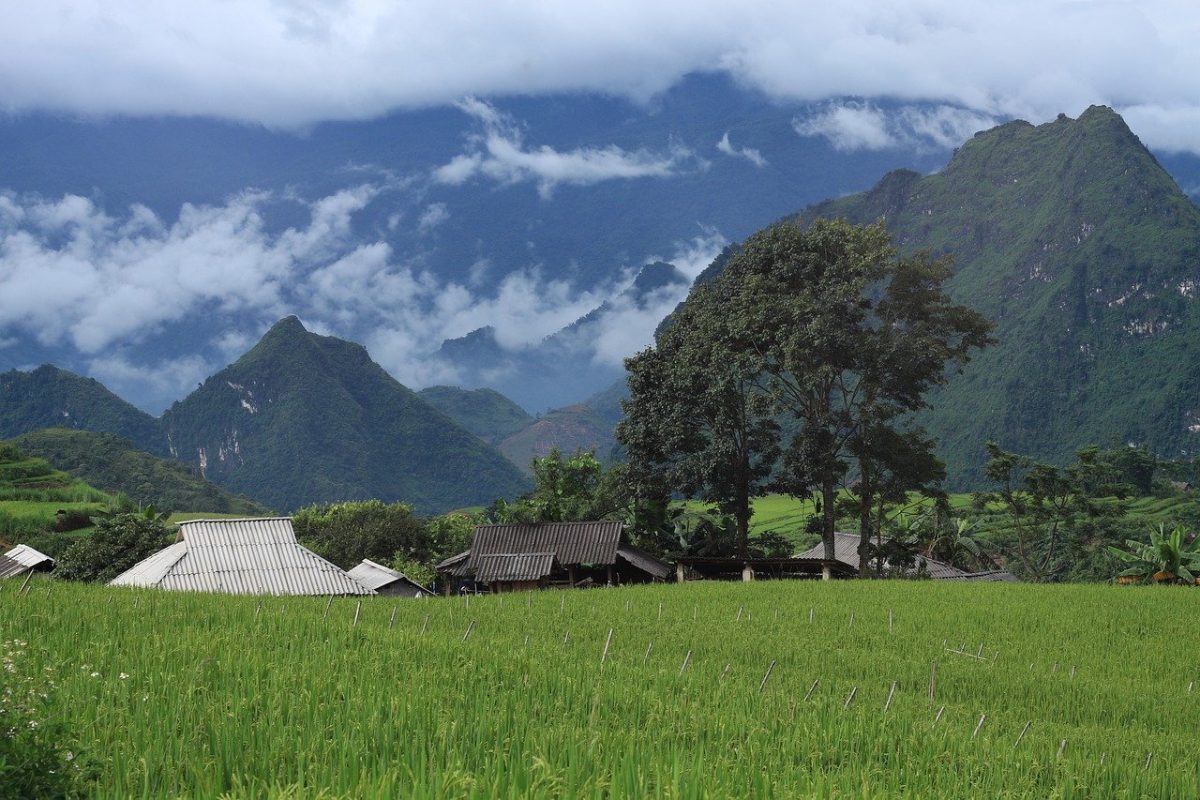
Best time to visit
The weather in Vietnam is diverse and varies from region to region. The climate in Vietnam is mostly tropical, hot and humid most of the year.
An exception to this is the northern part, which exhibits a temperate climate. The rainy season is severe, with floods, typhoons and landslides being a common occurrence.
The summer is sweltering and unbearable. Spring and winter are good months, with relatively all these factors in moderation or absent, making them the best months to visit Vietnam. Read ahead for further breakdown.
Best time to visit by months
The best months to travel in Vietnam are from October to December and March-April. If you are backpacking Vietnam during these months, begin from the north and then head south rather than the other way around.
Best time to visit by regions
North vietnam .
The weather in northern Vietnam is slightly temperate. During winter from October until January, which is the best time to be here, it gets freezing, especially up north.
The weather starts getting cold by November and it gets chilly going forward. Temperatures are in single digits, even in Hanoi, where it quickly drops to 2-3 degrees Celcius at night.
So if you are planning just to cover north or want to travel during the high season in Vietnam, which is winter, start here during November.
The weather in winter is incredible for hiking up north in Sapa and Ha Giang regions. Make sure to carry a layer or two of winter clothes when you pack for north Vietnam.
You can also visit the northern region during the spring from late February to May when the weather is delightful and colourful.
Central Vietnam
The weather in the central region of Vietnam is mostly tropical, with hotness and humidity prevailing throughout the year with variations in their degrees during all seasons.
The best time to explore Central Vietnam is winter and early spring, from November to December, and from February to late March. The humidity is bearable during these months, and spring is pleasant to hit mountains and cities.
South Vietnam
It gets pretty hotter and more humid as you go south in Vietnam. Also, this region is prone to incessant heavy rains for half of the year at least. Monsoons here should be avoided at all costs.
It gets bearable from late November to April, which is also probably the only time when the weather is dry, which means fewer or no downpours.
But the daily temperature is well above 30 degrees Celcius even during these months.
Where to start?
The common dilemma in backpacking Vietnam is to decide where to begin your journey. I traveled from Ho Chi Minh and made my way up to Hanoi covering all the destinations for about 5 weeks.
I traveled in October and November. Everything was pretty fine except that by the time I arrived in Hanoi, the winter was getting severe.
So if you are traveling during these months for about 2 or 3 weeks approximately and especially plan some hikes in north Vietnam, my suggestion is to start from Hanoi.
Because the winter will not yet be harsh. You can go trekking in Sapa and still be able to witness those green fields before they dry up or they harvest. Hiking is not much fun in cold and dark weather.
Also, planning from the north will make you cover hectic parts of the trip first(hiking & driving), and as you go south, you can begin to enjoy the country leisurely. You can end Vietnam backpacking by enjoying the cities and beaches in the south.
But if you want to go backpacking Vietnam from the south for whatever reason, it is beautiful, and both ways are beautiful to experience the country.
Getting into and around Vietnam
Here are some practical details about traveling to Vietnam.
How to travel to Vietnam?
If you are planning to fly into the country, Vietnam has three international airports. The airport at Ho Chi Minh or Saigon(South) – Tan Son Nhat Airport (SGN), the airport at Hanoi(North) – Noi Bai Airport (HAN) and the Da Nang International (DAD) airport in the city of Danang(Central Vietnam).
Many backpackers also arrive by land, and it is possible to enter Vietnam overland from Laos or Cambodia by bus. There are direct buses from Phnom Penh, and Siem Reap in Cambodia to Ho Chi Minh in Vietnam, which takes between 6 to 9 hours.
From Laos, there are direct buses available from Vientiane and Luang Prabang to Hanoi or Saigon, and it takes a day to reach or more.
You can also cross the borders at six points from Laos to Vietnam:
Sop Hun ( Laos ) – Tay Trang ( Vietnam ), Na Maew ( Laos ) – Nam Xoi ( Vietnam ), Nam Can ( Laos ) – Nam Khan ( Vietnam ), Nam Phao ( Laos ) – Cau Treo ( Vietnam ), Dansavanh ( Laos ) – Lau Bao ( Vietnam ) and Bo Y ( Laos).
What are the entry requirements for Vietnam ?
Almost all nationalities need a Visa, which can be got online or upon arrival. The Visa process looks confusing, but getting a Vietnam visa is an easy and straightforward process.
Also, you don’t need to apply through an agent or even your embassy as the online process is straightforward and clear.
There are two types of Vietnam Visas: e- Visa and Visa on Arrival.
The citizens of over 40 countries, including India, the United States, the UK, Canada, Italy, Australia are eligible to apply for an e-Visa.
The validity of e-Visa is for 30 days and gives only a single entry, which means you can travel in Vietnam for 30 days once you enter with e-Visa. You can apply for this online on their government website and get it in as soon as 3 days.
Visa on arrival
The Vietnam Visa on arrival is available to some citizens and gives you a 15-day visa, which can be got once you arrive. But you need to get a prior approval letter to obtain this type of Visa.
Vietnam Visa on Arrival is useful if you are looking for multi-entry or planning to spend more than 30 days in Vietnam. Read more details about this here.
How to travel around Vietnam
Getting around Vietnam is easy, thanks to the efficiency and plenty of transport options available to travelers, which is one of the reasons why Vietnam backpacking is popular.
Buses – Buses connect almost all the cities in Vietnam, and is the easiest way to travel. Buses are cheap, less comfortable than flying but not unmanageable, and easy to book online.
The best part about buses is overnight buses, which saves your daytime as well as your money on accommodation.
Trains – Trains are prevalent in Vietnam, and traveling in trains is one of the best ways to experience the country. Trains are available connecting all significant destinations – and you can book a seat in general as well as upper-class coaches, which comes with a bed.
If you find buses less comfortable, taking an overnight train is the next best alternative in terms of comfort and budget.
Flights – Vietnam Airlines is the local airline that offers direct flights between all major cities and also to and from major cities of other countries including Thailand, Cambodia and Laos.
Flights can be cheaper than buses or trains if you book in advance and get some deals. Similarly, last moment prices are high, though.
Commuting within towns and cities – You can rent a Grab taxi or Grab motorbike, both of which are better priced than their local counterparts to explore the attractions in a city.
Sometimes walking is the best best, especially in local markets and old town areas. If you know how to drive a motorbike, I’d recommend renting a bike over all other options as it is an excellent way to experience Vietnam.
Vietnam on a motorbike
Backpacking Vietnam on motorbikes is a trendy thing among travelers, and you can do it too, even if you are a solo traveler or a budget traveler.
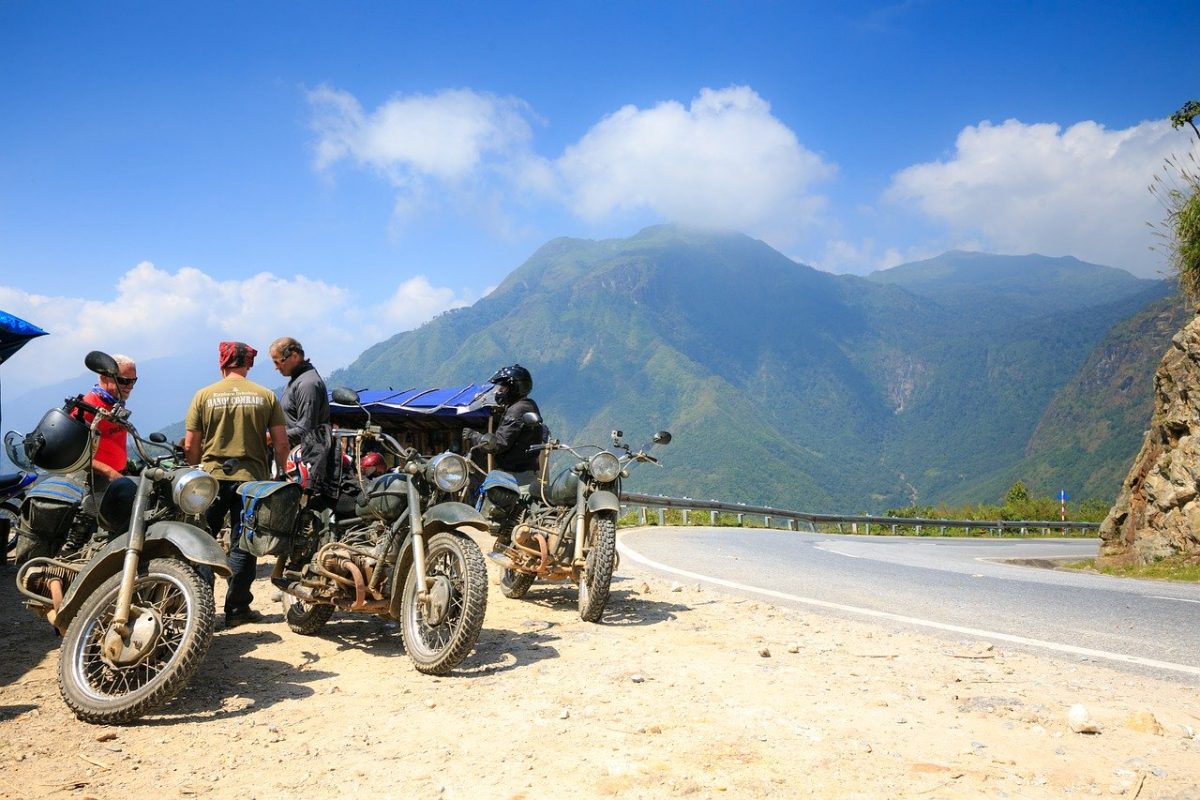
Some things to keep in mind – You should have some prior bike-riding experience(especially preferable in SE Asia/Asia) if you want to experience Vietnam on a motorbike.
The roads are terrible in smaller towns and around mountain areas, which makes it dangerous for an inexperienced person. Also in bigger cities, the traffic is chaotic and can get overwhelming if you lack experience.
It is quite common for foreign travelers on motorbikes to land themselves in serious and sometimes fatal accidents. Most of these happen due to their recklessness, unnecessary speed and drunken driving.
So to avoid this, wear your helmet without fail, keep an eye on the speed and mind on the road, and stay away from driving if you consume alcohol.
Beaches in Vietnam
Beaches are not the top highlights of Vietnam. So don’t expect a beach life that you would find in Thailand, Indonesia, Malaysia or the Philippines, which are known for some of the most beautiful beaches.
Whether it is the quality of clear-water turquoise beaches or nightlife and socializing around them, you shouldn’t go to Vietnam if beaches are what you got in mind. Vietnam is all about culture, food, country life, history and nature.
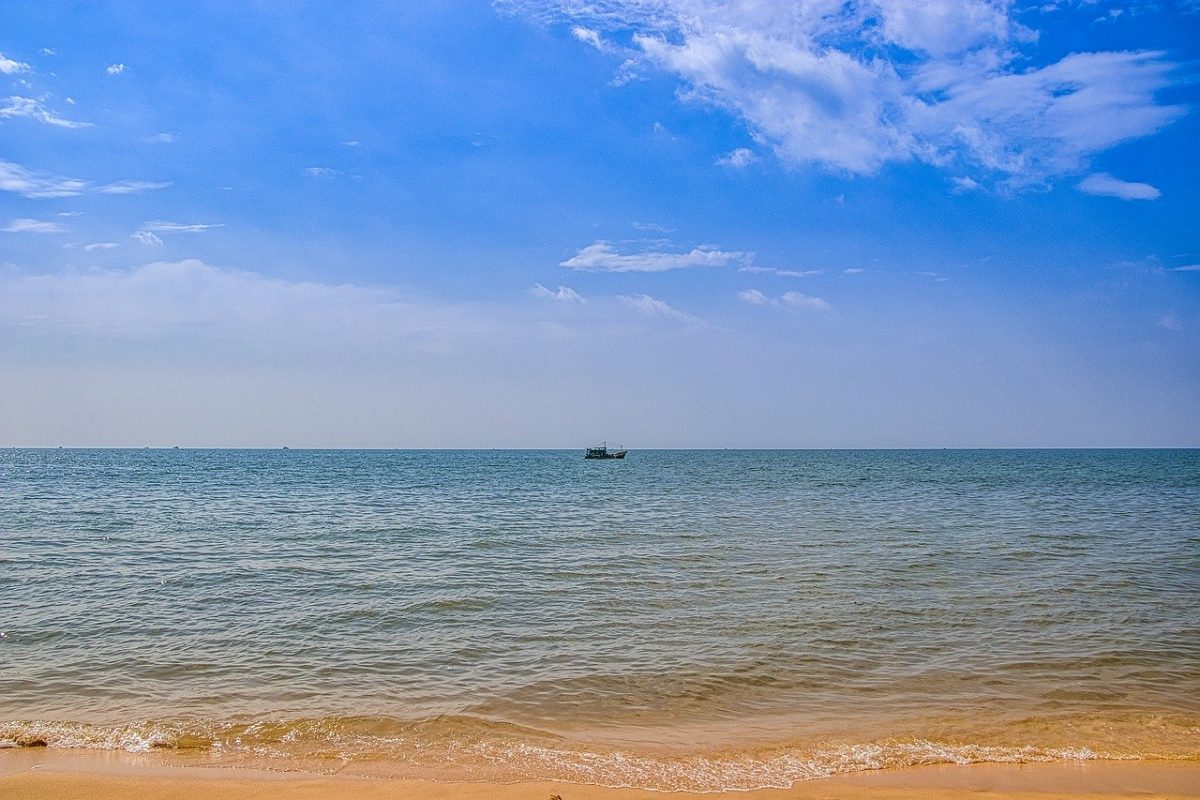
Nevertheless, you can still experience a decent beach holiday at some of the places, if you keep your expectations quite low. The beaches near Hoi An are beautiful but accessible and crowded.
The same goes for those around Danang and Nha Trang, where you will see a massive influx of Chinese and Russian groups.
Phu Quoc caters for mass tourists, and so you might not like it if you prefer serene getaways. The stretch along Qui Nhon, located on the way to Danang from Hoi An has some lovely beaches, and are ideal for relaxing and unwinding.
Similarly, watersports are not a great deal in Vietnam. It is not the destination where you would go diving or snorkelling, but you can still enjoy swimming and kayaking at some of the beaches.
Traveling alone in Vietnam – What to know
Vietnam is one of the safest countries to travel alone. Even if you are traveling alone for the first time, it is a perfect country to start.
One of the many reasons why people go Vietnam backpacking is that it is safe to travel solo. However, here are some things that you need to keep in mind.
How to stay safe while traveling Vietnam
- Keep your belongings safe. Don’t leave them unattended. Bag and mobile snatching are typical in Vietnam, so keep them safe by being alert all the time.
- Keep your passport and other essential travel documents locked, and don’t carry them around.
- Don’t carry a lot of cash, and split your credit cards and cash and keep them at two different places.
- Use your common sense and take general safety precautions that you would with your luggage, especially electronic items including phone, camera and laptops.
- Don’t reveal much information, even to other travelers that you just met – where you stay, your personal and marital info, your travel plans and such.
- Keep a tab on your alcohol consumption – You have to of course enjoy, but don’t go overboard or crazy.
- Don’t flaunt expensive stuff, a lot of cash or valuables in public – it attracts unwanted attention and might elicit dangerous incidents.
In this post, I have provided exhaustive Vietnam solo travel tips covering all sections including food, transport, solo female travel tips and more . Check out to learn more.
Tourist traps and how to avoid
Like any other famous tourist destination, Vietnam has its share of tourist traps, which I feel is unfortunate. If you follow the standard route for all tourists, you will witness the low-quality, crowded group tours at all places, which are focused on rushing people to get things checked off their list.
Don’t get me wrong, travelers need to support the growth of the local economy, but it shouldn’t come at the expense of travelers or against their will.
We travelers shouldn’t feel duped, and unfortunately, it is upon us as things can be subjective. There are alternatives to these tours, which are much better, more authentic and relaxed.
Vietnam is a beautiful country, and I don’t want to induce anything negative, but my point is to share honest/realistic information.
Some traps are minor or hard to miss. And some, you will recognize, even if you are backpacking Vietnam for the first time. Let me share some of them with you.
Halong Bay Cruises
Halong Bay was once a beautiful paradise comprising of untouched islands rich in marine life.
It still is to some extent, but what killed most of the beauty is over-tourism and excessive commercialization, both of which have robbed the authentic experiences for travelers.
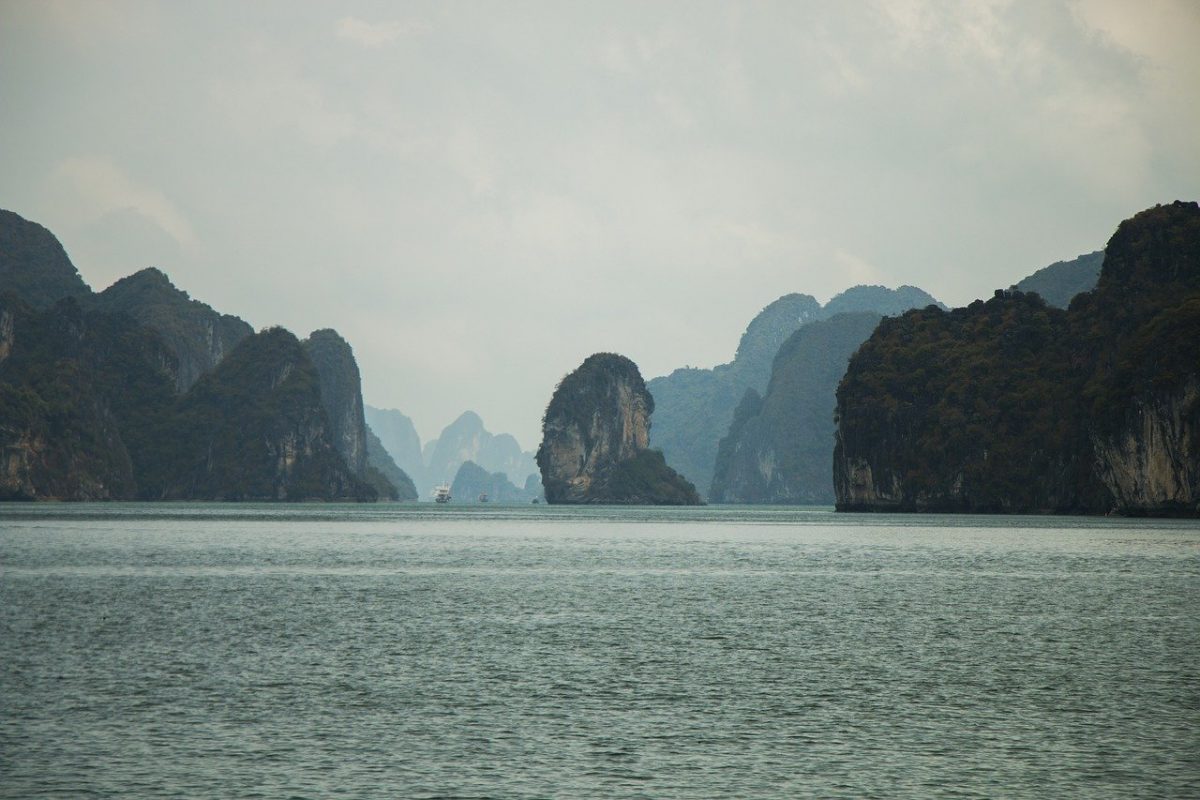
You will notice that the prices are steeper, and boat trips can get ridiculously expensive during high seasons, especially on the weekends and holidays.
You will feel unjustified to pay hefty costs for the food, accommodation and tours. Trust me, you are not alone, as plenty of travelers feels cheated/dissatisfied with their Halong Bay cruises.
Add to these, the tipping culture where guides and boat owners rip off substantial sums without hesitation.
How you can avoid – The only way to prevent is not to be a part of it at all. If you still must, go directly and compare prices(which will take a lot of time, though), before booking a tour. Alternatively, you can book a cruise online after checking for reviews.
Or even better, head to other islands, one of them is Cat Ba, which is slowly getting a lot of attention.
There are a few islands around Cat Ba where taking a boat trip is more satisfying and feels worth your money. The hotels, food and tours are cheaper and better here.
Hiking in Sapa
I know. You must be wondering why I am classifying the most popular Vietnam’s experiences under tourist traps. Unfortunately, that’s what the over-marketing of a destination does.
Sapa was once a remote region blessed with rows and rows of terraced fields surrounded by mountains, and home to villages with people disconnected from the chaotic cities.
As the words of its beauty spread, so did the influx of tourists. The communities started catering to accommodate travelers(which was right up to a certain point), digging trails and marking territories.
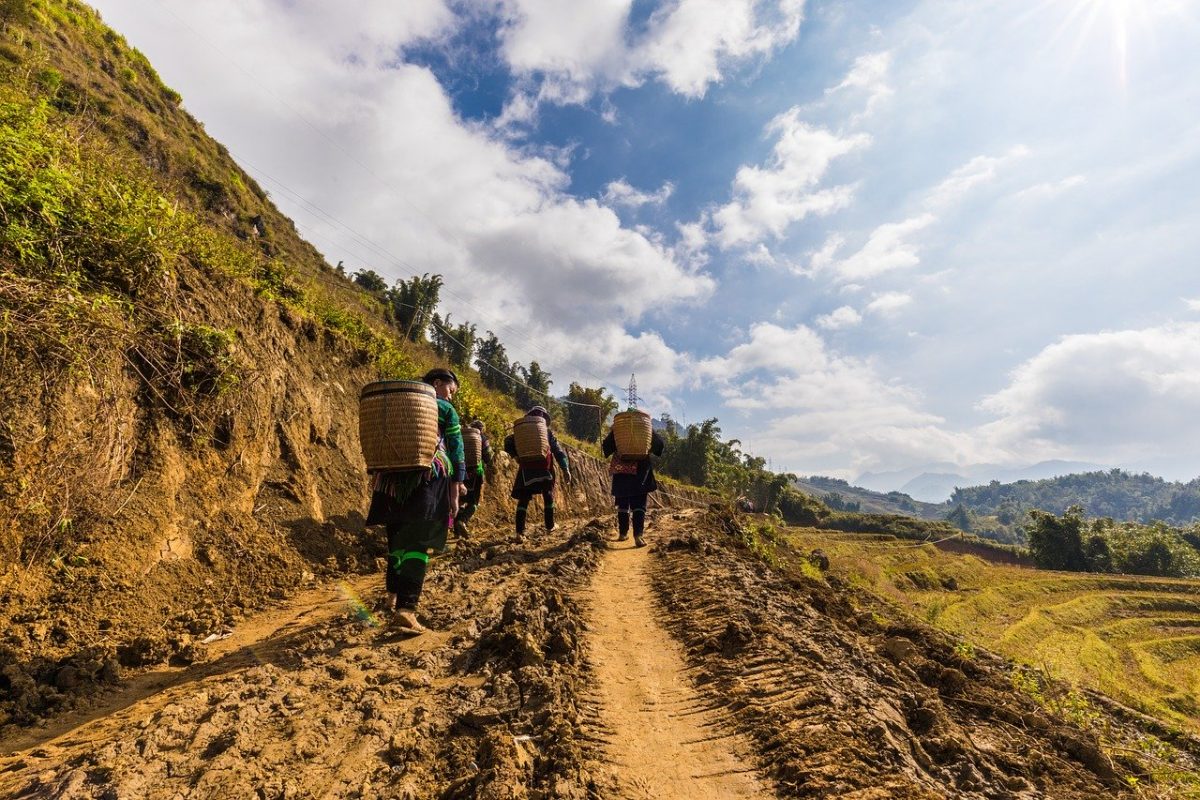
Now, ‘staying with locals’ is not an authentic experience like it used to be, but is staged and experiences are mechanical, including hiking through the fields, where you will see a drastic difference from the pictures you see online.
How to avoid it – Skip Sapa, which is the best thing to do. Head to Ha Giang instead and drive the loop on your own, stop by villages as you please, ask the help of villagers, stay with them, and try to experience their ways of life.
There are guided hiking tours in Ha Giang which are worth doing too, as they are much better compared to Sapa.
Boat trip at Ninh Binh
Taking a boat trip at Tam Coc is one of the highlights of Vietnam experiences. But not many know about how touristy, crowded and commercialized the tours are. The boat trip costs are expensive to begin.
They shorten the trips to include more batches in groups per day, and boatmen and women will demand a hefty tip from you – They even state what they want to be tipped, and the numbers are shocking. Refusing to pay will not work, as they get angry and try to abuse verbally too.
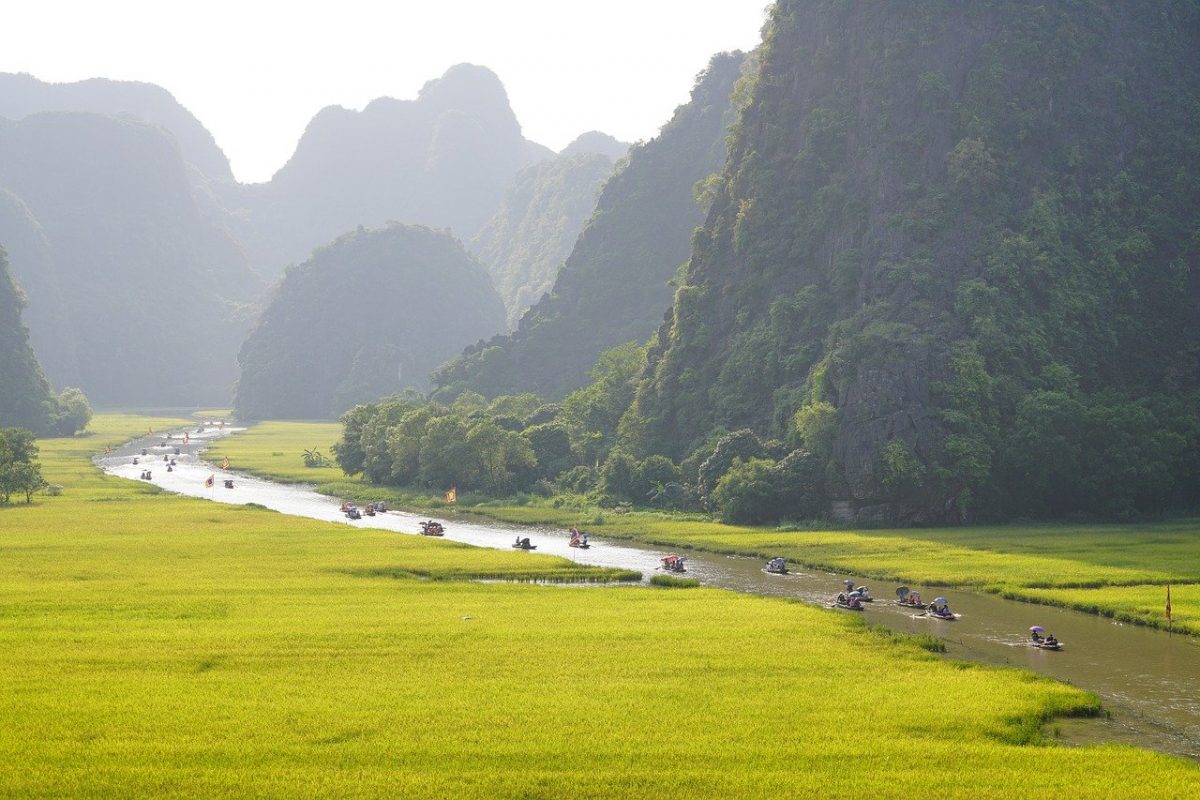
How to avoid it: Avoid taking the boat trip from the city centre at Tam Coc. Instead, go to An Trang a little further away from the town for a boat trip.
Take the longer route, carefully negotiate the tip rates as well, and insist on the boatman/woman take you slowly and thoroughly without being rushed.
The Mekong Delta Island trips
The Mekong delta in southern Vietnam is again, one of the tourist hotspots, and this alone should be the reason why you should avoid visiting these islands.
Once upon a time, large settlements existed around the river, where people lived on(still do) wooden houses built on stilts, moved around on boats, had floating markets and businesses.
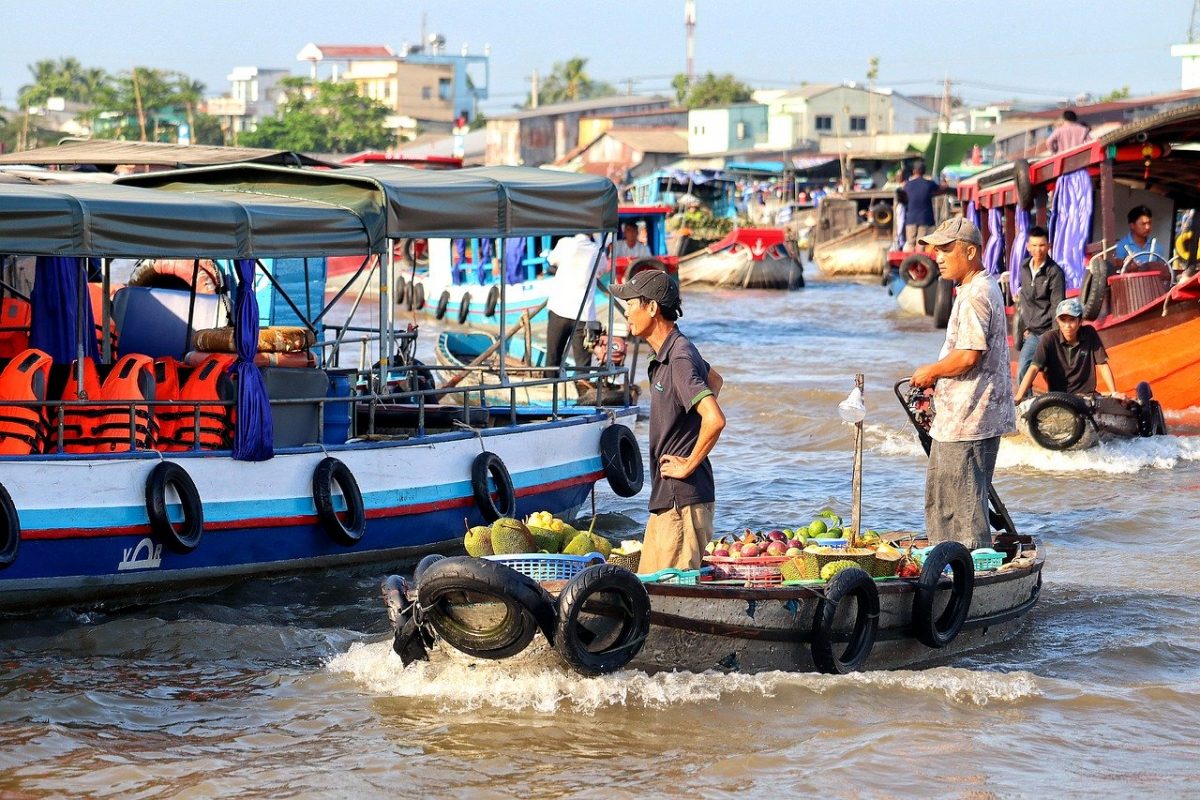
Now, all you see are staged primarily for the tourists. I mean the businesses happen for real of course, but in reality, most of the actual shops of the floating market have moved to land, and what remains are for a show for tourists.
Phu Quoc island is the most popular among them all and is the most commercialized.
How to avoid: Instead of taking combo tours, try planning trips to smaller islands, and don’t spend more than half a day or a day at best.
There are alternative cultural and even private tours that offer better experiences, so book them instead of these tours that will put you with another 50.
Tackling Vietnam Tourist scams
Alongside tourist traps exist scams in Vietnam, some general in nature, and a few specific to this country alone.
In recent years, Vietnam’s tourism industry has matured a lot, and once very notorious scams don’t happen now, which mean you can say that the worst is behind.
But still, you need to use your common sense and go away if things sound too good to be true or people are more helpful than you expect them to be.
The Vietnamese are some of the kindest and the friendliest people, so don’t get confused or suspicious, but look out for some things.
One of them used to be and still is Visa, which you can sort online. You might be approached at every town by tuk-tuks and tour operators trying to offer incredibly low prices at first, and then once they engage with you, quote whopping prices.
Some people can try to come up offering offbeat and unique experiences – somethings that you might never have heard or read, so if something sounds fishy, it probably is. Trust your gut, and everything should be fine.
Sex tourism and drugs
Prostitution is illegal in Vietnam, so don’t expect rampant sex tourism to happen, at least not out in the open. If you want to find girls in Vietnam, take care, be nice and respectful them if you want to date them.
Sometimes foreign travelers, especially young guys, are scammed, and locals approach them on the pretext of finding Vietnamese girls and date nights.
Similarly, all drugs are illegal in the country. Local touts will approach you throughout your trip, but you should avoid possible.
Vietnam backpacking – What to pack
Due to different weather in different regions of the country, your packing for Vietnam might look a little confusing at first.
Don’t worry; I have sorted it out for you. Check this detailed post to get your ultimate packing list for Vietnam.
Travel insurance is mandatory for your Vietnam backpacking as it is always recommended to keep yourself insured when on the road.
Vietnam Backpacking Budget
Let’s talk about money and everything around it.
Currency in Vietnam
The currency of Vietnam is called Dong, commonly called Vietnamese Dong – VND. There are plenty of denominations available, which means you will feel your hands full of currency with various denominations – aka, you will feel rich!
Seriously though, don’t display all the cash, definitely when you have an audience.
ATMs or Currency exchange?
If you are wondering whether it is better to use ATMs to withdraw or head to currency exchange centres to get your money converted, I’d suggest ATMs. The reasons are:
- The exchange rates, conversion fees and withdrawal fees are all reasonable and standard(can be high for Euros and USD sometimes).
- Next, you can avoid scams of duplicate local currencies, overcharging and overpricing, which are possible at exchange centres.
- Also, if you use ATMs, you have control over how much you withdraw, which you can keep it to a minimum to avoid carrying massive amounts of money in your wallets.
International travel cards have become the new norm, which you can get through your home banks. They are easy to use, and the rates are better.
Now, if for some reason, you have a currency that you need to exchange, avoid doing so at airports as they give the worst rates. When you first land in the country, you can straightaway go to an ATM at the airport, and draw a minimum amount.
Then once you get to the city centre, you will find plenty of small and big shops offering currency exchange. Walk to many of them, compare their rates and go for the best.
How much does it cost to go backpacking Vietnam?
Your Vietnam backpacking cost is subjective. It depends on how much money you have or plan to spend, like your mode of preferred transport – flying V/s taking buses and trains, the season during which you travel, accommodation preferences, your food and drinking choices and shopping habits.
Some of these make minor differences while many of these shift your final budget by significant degrees.
The general ballpark figures would be USD 12 to 15 per day per person for a backpacker(you can even keep it to 10 per day), USD 25 to 30 per day for a mid-range traveler, and USD 40 to 55 per day per person if you want to enjoy luxury.
Let me share a further breakdown of daily costs to give you an estimate for all types of travelers.
Vietnam Backpacking daily costs:
Budget travel in Vietnam – Some tips
Below tips are not only applicable for Vietnam, but these are general tips that would help in keeping your costs at a minimum. So some of the ways how you can cut down further on your expenses are:
Try Couchsurfing
Couchsurfing means you will get a free place to stay, a friendly host to show you the areas around and fellow travelers that you can befriend.
The food in Vietnam is incredibly cheap, but you can reduce your expenses even further if you fix your breakfast, lunch or dinner at your hostels. Seven-Eleven shops have very affordable ingredients, including veggies, meat, pasta, bread and noodles that are quick to make and to fill.
Go hitchhiking
Thanks to plenty of travelers on the road in both directions, it is fairly easy to stick your thumb out and ride alongside them. It is a chance to save some money and also make friends and have company as you go backpacking Vietnam.
Where to stay while backpacking in Vietnam
Vietnam is backpacker-friendly in many ways, especially when it comes to budget hostels. You get accommodation for as low as $3 or $4, and these come with pretty awesome amenities and locations.
It is pretty easy to score a place at budget houses and hostels even during the peak season. The good thing is if you plan your trip a little well ahead, you get great deals on hostels and hotels in Vietnam.
Here are some of my recommendations for backpacking hostels in all the destinations.
Sim card, Internet & WiFi in Vietnam
The internet in Vietnam is great, and if you are a digital nomad who works on the go, heading to one of the plenty of cafes would be your best bet, where the WiFi is great. Sure, there are certain exceptions, but overall, the quality of the internet in Vietnam is high and available easily.
All of the hotels, restaurants, cafes and even bars have WiFi, most of the time freely available(of course, you have to buy something).
If you are wondering whether you need a Sim card, the decision is up to you. The prices are very cheap and a sim card will not weigh heavily on your pocket.
One advantage of having a local sim card is that you will have access to maps all the time and navigating is easier when on the road, especially if you are driving or traveling alone.
Another advantage of having a sim card is that you can book cabs and motorbikes using Grab app(You need a local number to book on Grab).
Of course, you can also keep in touch with your loved ones with a local number. So if you want a sim card, do go ahead.
Buy them at one of the stores rather than at hotels, hostels or guesthouses as the price at stores are lower.
What to eat in Vietnam
Vietnam, the foodie’s paradise offers you plenty of cuisines. Here are some of them that you should try:
Pho – The Vietnamese Pho or the Noodle Soup is the staple food throughout the country, which comes in different variants. Made of basil, sprouts, lime, bamboo shoot and lemongrass, the Pho tastes different in all regions.
Try it at the local restaurants or on the streets where locals eat, because that’s where you will find the best Pho.
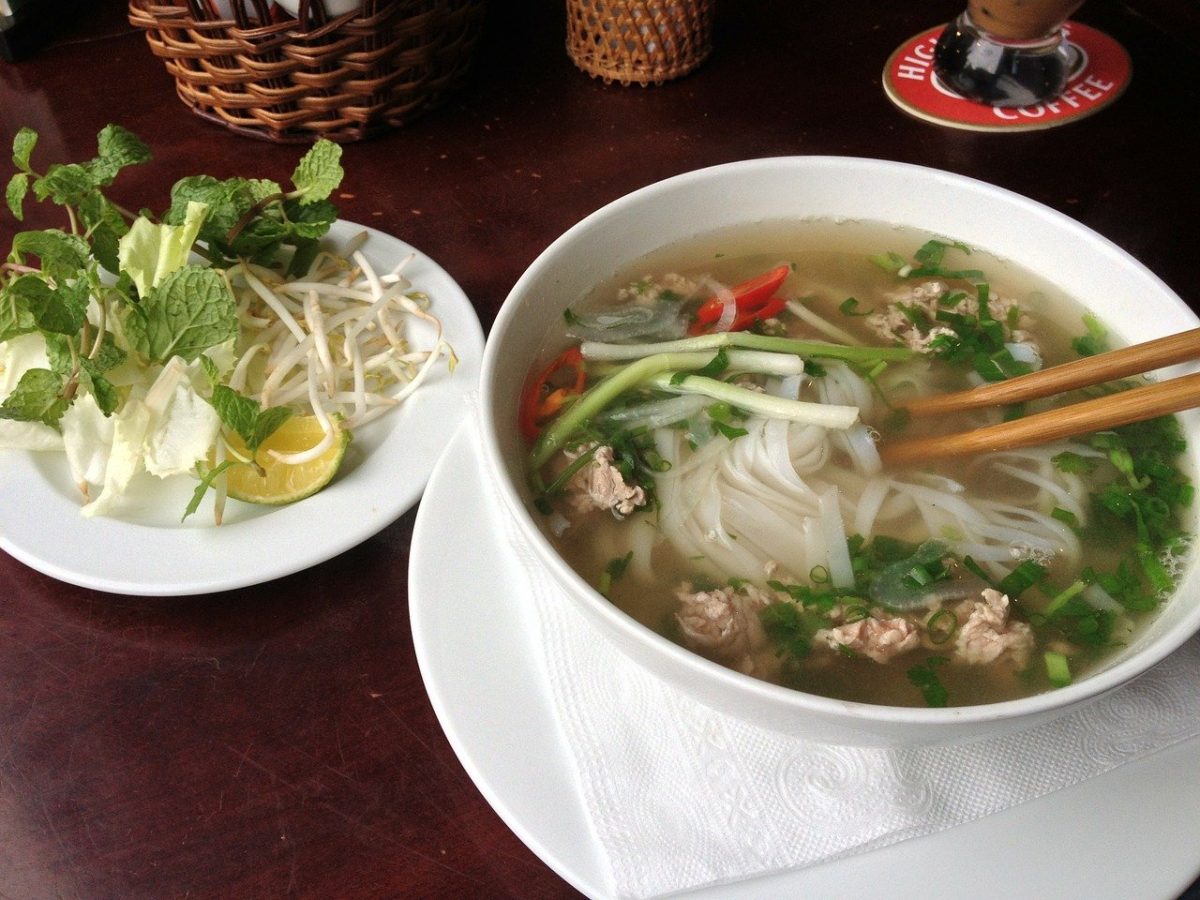
Egg Coffee – Vietnam’s coffee is among the best in the world. Here, you will probably also find more flavours and experiments in any other country.
Try Egg coffee or Cà Phê Trúng made of condensed milk, egg yolk and coffee beans. You will either hate it or love it, but to know that you should try it once!
Vietnamese spring rolls – Spring rolls are one of the best dishes in the country. Wrapped in thin rice paper, you will find noodles mixed with vegetables, meat and seafood. Don’t get deceived by the small size, because they are filling.
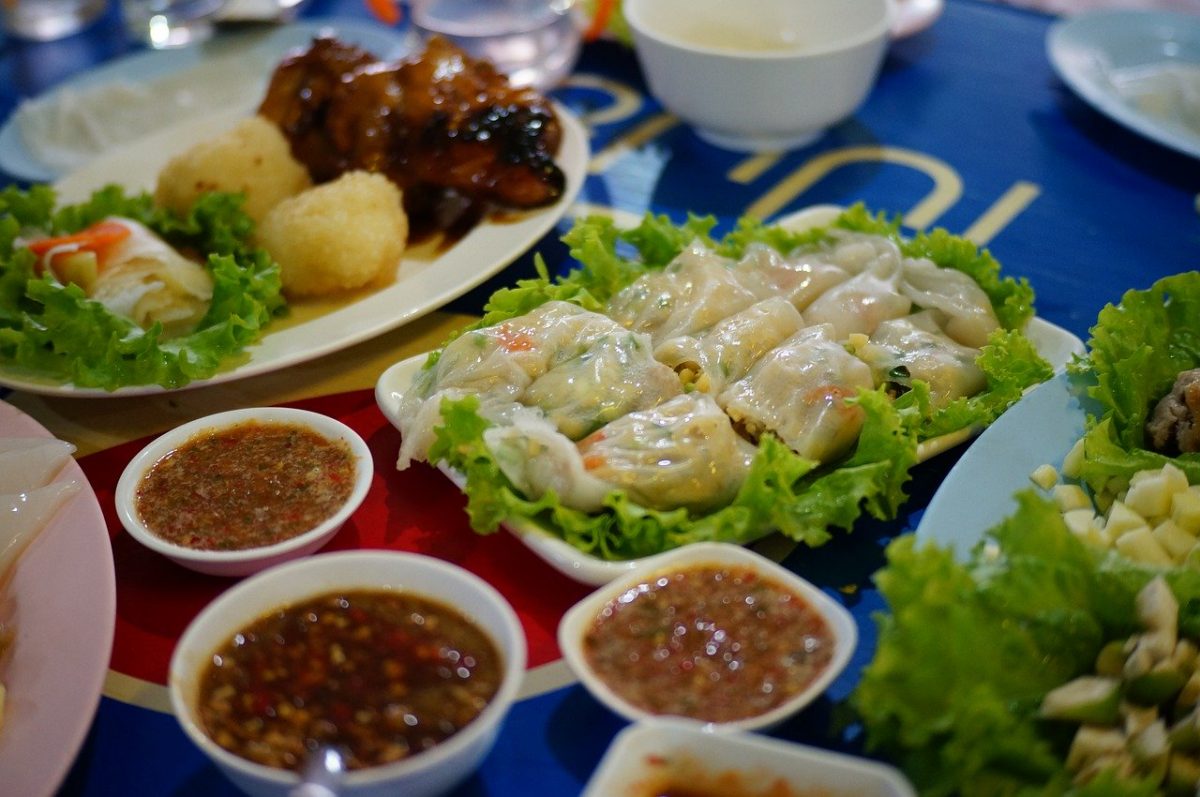
Steamed Sticky rice – Steamed sticky rice is another staple food across SE Asia. Called Xôi, you can try anything – mango pulp, coconut, beans, with a clear soup or any meat. It is one of the cheapest and most readily available dishes in the country.
Cau Lau – Cau Lau is a dry noodle that’s less known than its counterpart Pho but is undoubtedly worth trying when you go to Hoi An, as it is the town’s speciality.
Language in Vietnam
Most people in service in the tourist industry including hotels, guesthouses, tour operators and motorbike vendors in Vietnam speak fluent English and some know even French.
Otherwise, people in the cities are aware of basic English phrases, and if you go deep into the rural towns, it is hard to find English speakers. But sign language works! Seriously, language shouldn’t be a problem while backpacking Vietnam
Basic Vietnamese Phrases
Get a hang of some of these basic Vietnamese phrases that will come in handy and make locals smile.
What Books to read while traveling Vietnam
There are plenty of incredible books that tells us a lot about this beautiful country of Vietnam. Here are some of the ones that I would recommend you to read before your Vietnam backpacking.
Saigon: An Epic Novel of Vietnam – This is a fiction book based on the war that involves romance and tragedy too, and is a must-read to get a glimpse of how the war changed the lives of the people.
Catfish and Mandala – It is the travel journey of a man who cycled across Vietnam for over a year, and is a beautiful book that captures the country.
When heaven and earth changed places – This is the story of a survivor of the war who moved to America and back to Vietnam, and gives an account of life at both places during these times.
Fields of Fire – One of the great books about the war, which beautifully captures the various unseen and unheard stories and emotions, which gives us a glimpse of life around the war.
The Sorrow of War – It is written by a Vietnamese soldier who was in the war in the northern region, and as the name suggests, it is a heartfelt, firsthand account of the horrible outcomes of a war.
Embers of War – A Pulitzer prize-winning book that exhaustively documents the series of events that led to the destructive war in Vietnam, claiming lives and livelihood.
The Quiet American – A beautiful fictional novel and one of the great movies about life in Vietnam
Vietnam A to Z – This colourful book gives a lovely introduction to the country, and is perfect for children or if you want to read it while traveling with them to Vietnam.
Inside out and back again – How about knowing a beautiful perspective of Vietnam from a 10-year old girl? This is another book to enjoy with your family.
Ways to do Responsible Vietnam Backpacking
It is important to appreciate and be grateful while traveling. Also, being a responsible traveler doesn’t mean you enjoy less or compromise or have to put in a lot of effort.
Your simple deeds and acts can go a long way in contributing to the environment, economy and in the life of the people you meet. Here is how you can do your bit
Carry a refillable water bottle
This is a small but very significant way to travel responsibly as you will avoid buying and hoarding hundreds of plastic water bottles.
The hotels and hostels in Vietnam generally provide clean, filtered water, which you can use, and thus save some money as well as be thoughtful.
Do Volunteering in Vietnam
If you are a nomad that spends the better part of the year traveling, one of the ways to enjoy Vietnam backpacking is to volunteer, which will enable you to spend many months in the country and enjoy it very much.
It is one of the best ways of having an enriching and fulfilling experiences on the road.
You can volunteer at hostels, be a bartender in pubs and restaurants, home sit or take care of pets. Some of these pays, but most are not paid, but your accommodation and food will be covered.
This is a win-win for both parties. You will have some of the incredible experiences of volunteering in a foreign country.
If you want short or long paid gigs – you can teach English in schools, which way pretty well if you are a native English speaker.
There is always a demand for foreign English teachers and you can easily find a job as a teacher. You can also try farming or teaching basic computer skills to students.
Eat at local restaurants
The phrase ‘Eat where the locals eat’ has more than one advantage.
You will get to taste the most authentic and delicious Vietnamese food at great prices, make friendships with locals and most importantly, this way, you will contribute to helping small shop owners and their staff monetarily to sustain and grow.
Avoid activities that torture animals
In many parts of SE Asia and also in the world, thousands of animals are tortured in many ways, which we don’t see at first as they are disguised to be a part of tourist activity or entertainment.
Torturing animals in any form is a sick way to get entertained – Riding elephants, caged animals in a zoo, animal shows, trained animals putting performances – Stay clear from any of these.
It is your personal choice if you still want to go ahead, but understand how ethical it is to treat animals in these cruel ways. Your participation as a foreign traveler will only encourage locals to continue believing that there is nothing wrong.
For example, there is this Ostrich-riding activity in Mui Ne, which I was shocked to witness. It is appalling and heart-wrenching to see poor birds trying hard to carry more than they can, and being beaten and malnourished on top of it.
You should at least avoid being part of these things if you can’t do anything more.
Teach your children that these things are not okay, and you will do your further contribution in being a responsible traveler. I have been guilty of visiting these activities myself in my early traveling days, and now, I completely avoid entertaining such businesses.
Avoid buying animal products
In SE Asian countries including Vietnam, you will notice weird products made from animals that are already endangered. – Selling turtle meat and shells – Avoid consuming turtle meat.
Whiskies from snakes and scorpions, bags and clothes from animal hides, sculptures and statues from tusks of elephants and so on. Strictly stay away from buying all these products.
These are sold illegally and you could be punishable for possessing these items if you are checked at borders or airports.
Avoid the use of plastics
Vietnam is one of the countries that is striving hard to move towards being plastic-free. So avoid carrying or purchase of plastic bags and non-recyclable items.
You can refuse to use plastic bags when you shop at Seven-Eleven or any other markets and shopping malls. Instead, bring a few paper bags when you travel and use them.
Avoid haggling a lot
Yes, it is true that the locals quote unreasonable prices to tourists some times, but try not to bargain a lot. You are reducing their profit margin when you haggle so do it reasonably. Remember that through any purchase in any way you are contributing their economy and helping their livelihood.
Take fewer planes
Sure, planes are comfortable, time-saving and whatnot. But think of the carbon footprint and how it is impacting our planet, and be mindful to avoid them as much as possible while traveling.
If every one of us does our bit, we will collectively keep our earth a better place. For example in Vietnam, there is excellent connectivity via buses and trains, so take them instead and avoid the flights.
Support local enterprises and community development
Vietnam is home to plenty of local enterprises that provide economic and social support, especially in remote towns in the north and central Vietnam.
Centres such as plantations, farm stays, small-scale industry, textiles, paintings and weaving are some of them where you find centres.
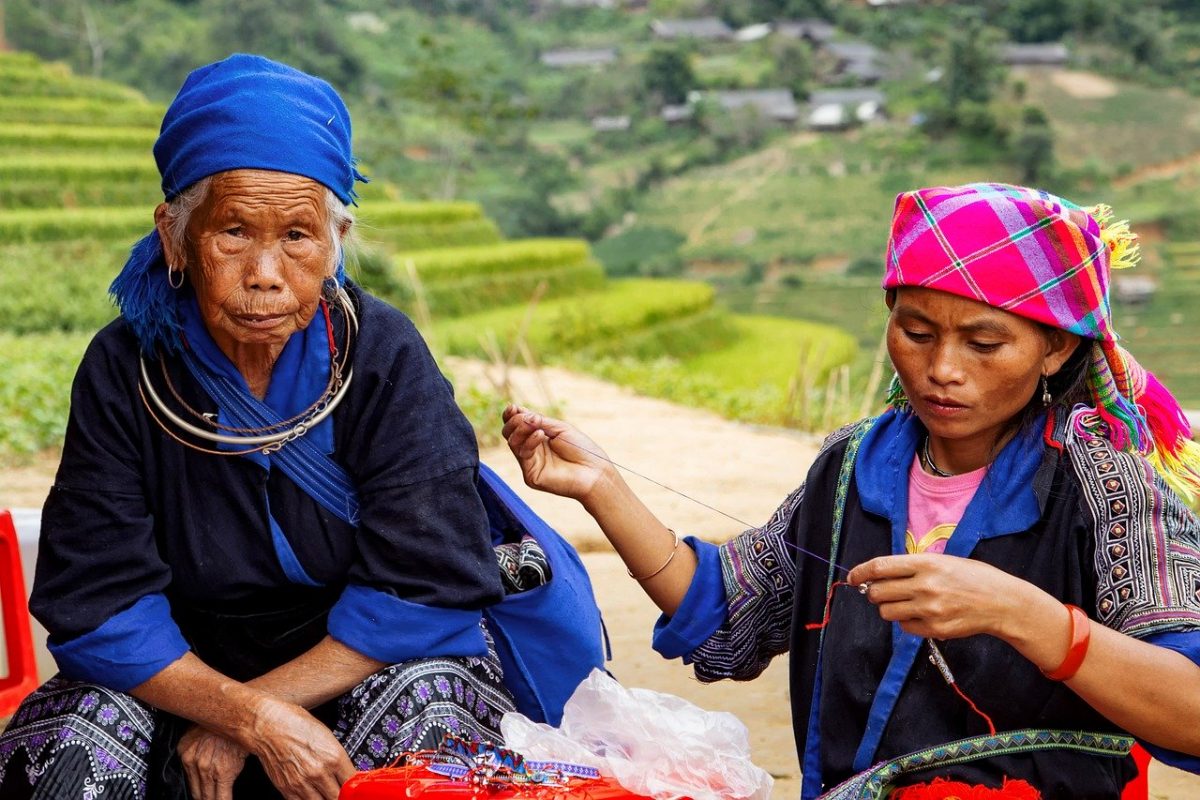
You can visit them and buy a few things, and help them in any way possible. Staying at homestays run by communities in villages is not only super fun, enjoyable, an opportunity to witness the countryside life and spend time with locals, but it is also a contribution to these people.
Respect everyone and be kind
These things go without saying, but unfortunately needs to be mentioned as travelers, especially foreign travelers are known for their holier-than-thou attitude, which creates resentment in the locals.
Treat everyone the way you would like to be treated – Tuk-Tuk drivers, street shop vendors, tourist guides, hostel janitors, waiters and helpers in restaurants, mechanics – whoever it is, be kind and respectful, and know that all are equal. You are not superior to them in any way.
Especially, if you come in contact with sex workers, treat them with respect, and know that they are only doing their job. Keep your beliefs and thoughts about prostitution to yourself. Women and girls in Vietnam in the sex industry are people at the end of the day and treat them as such.
Vietnam Backpacking – Final thoughts
Backpacking in Vietnam is one of the most enriching, incredible experiences you can have as a traveler. Whether you are traveling alone or with your partner or with your family, you will enjoy most of the pieces of the country throughout your trip.
Stay safe, take care and don’t forget to have fun while you explore the beauty, culture, hospitality and food of Vietnam. If you have questions regarding anything, shoot them in the comments below.
There are tons of posts on Vietnam for you and I’d recommend you check them out to plan and enjoy your Vietnam backpacking the most.
TOP VIETNAM POSTS
Title for this block.
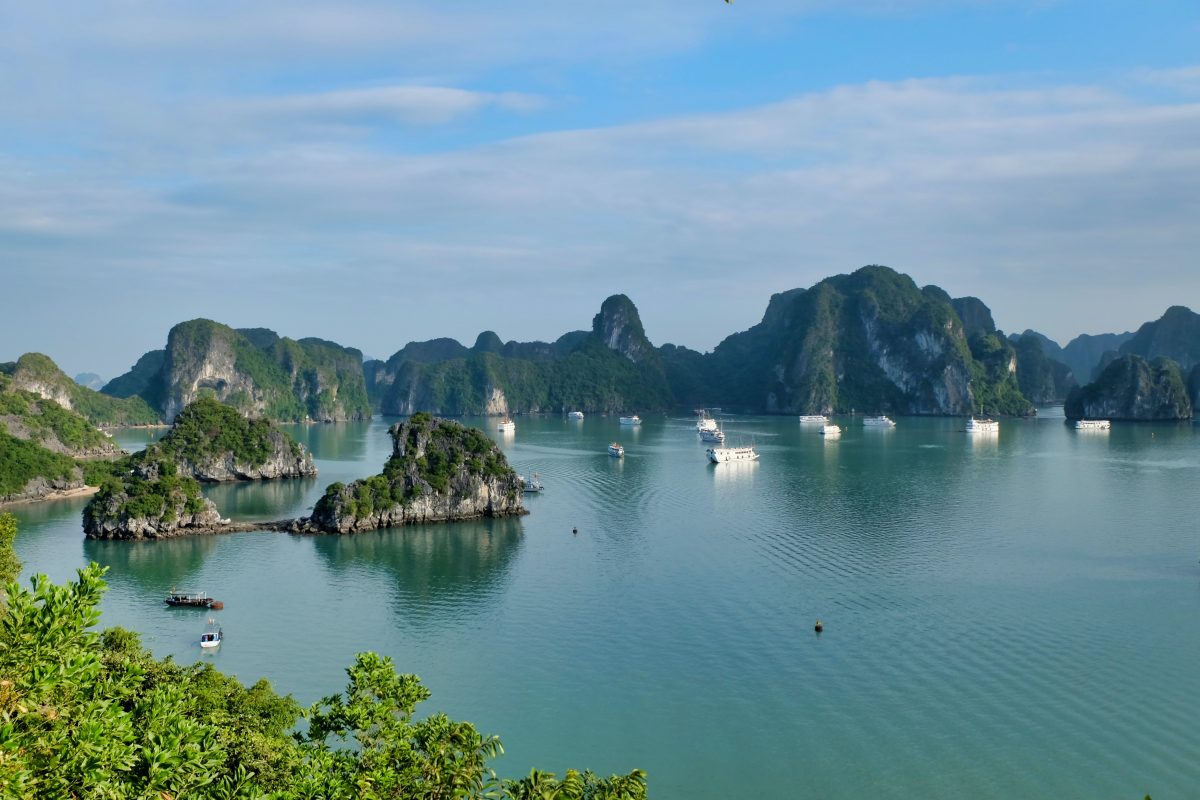
The Ultimate Halong Bay Itinerary – How to Spend 2 Epic Days
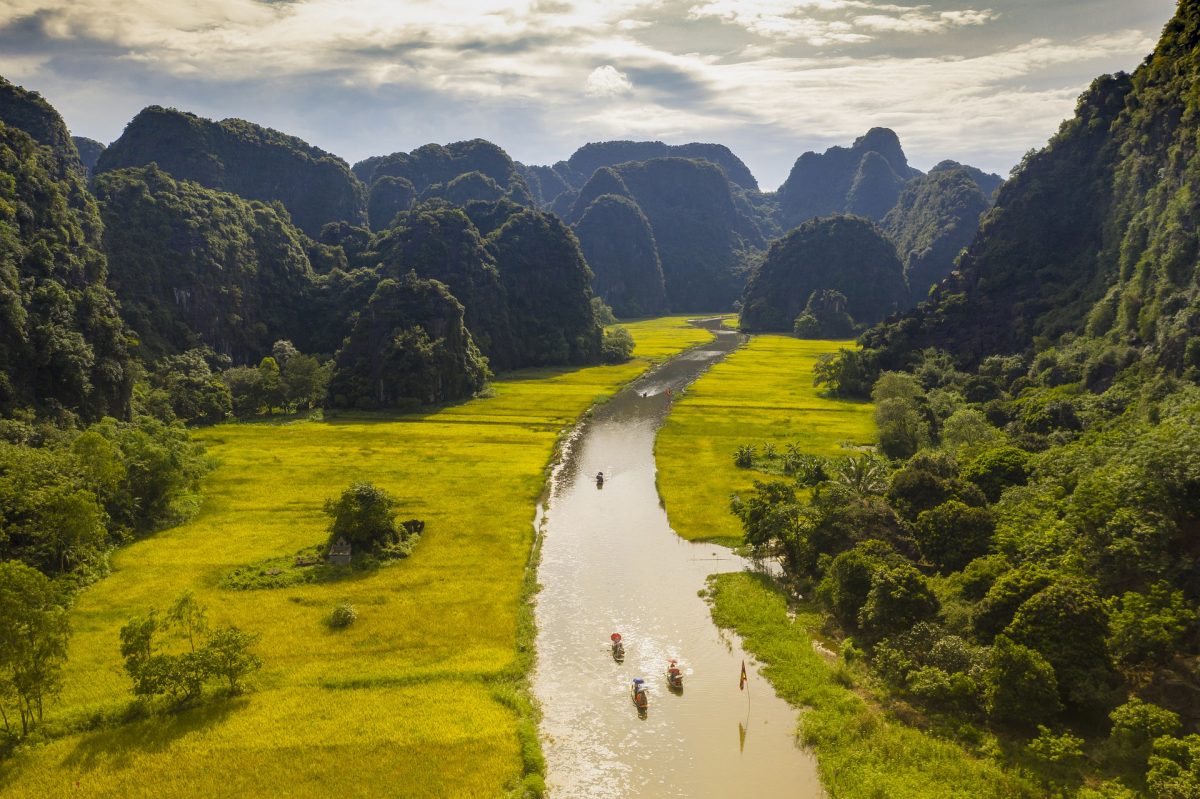
How to Get from Hanoi to Ninh Binh – The Best Possible Ways To Travel
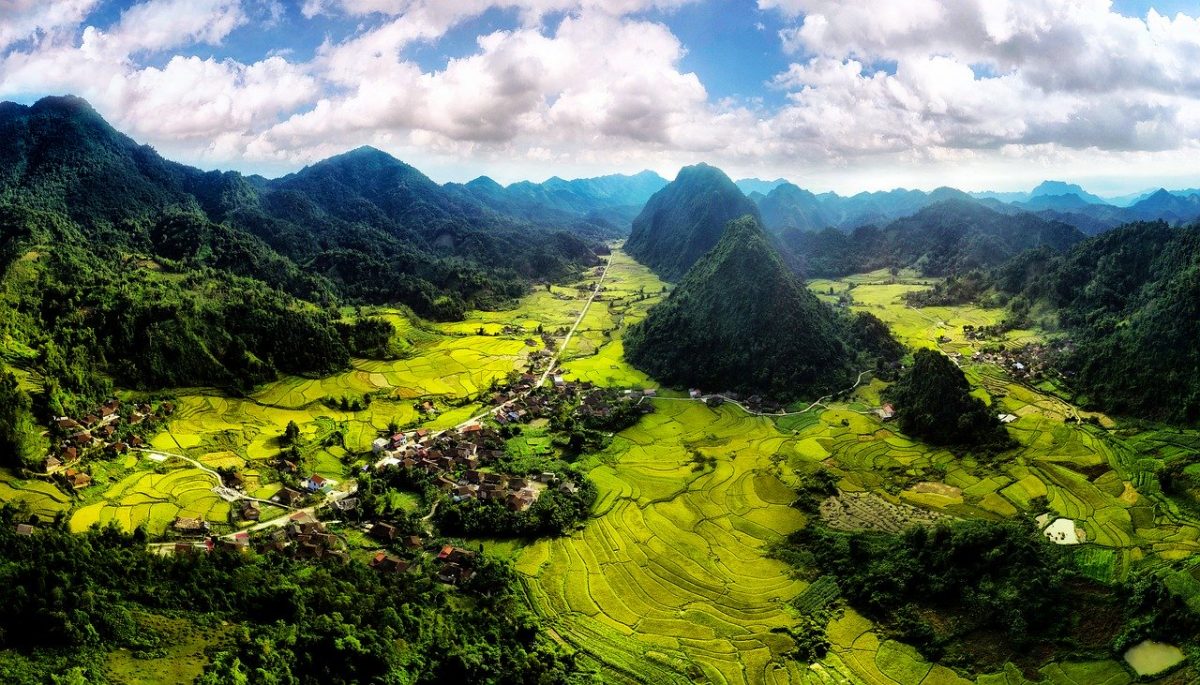
Solo Travel in Vietnam – The Only EPIC Guide You Need to Check Out
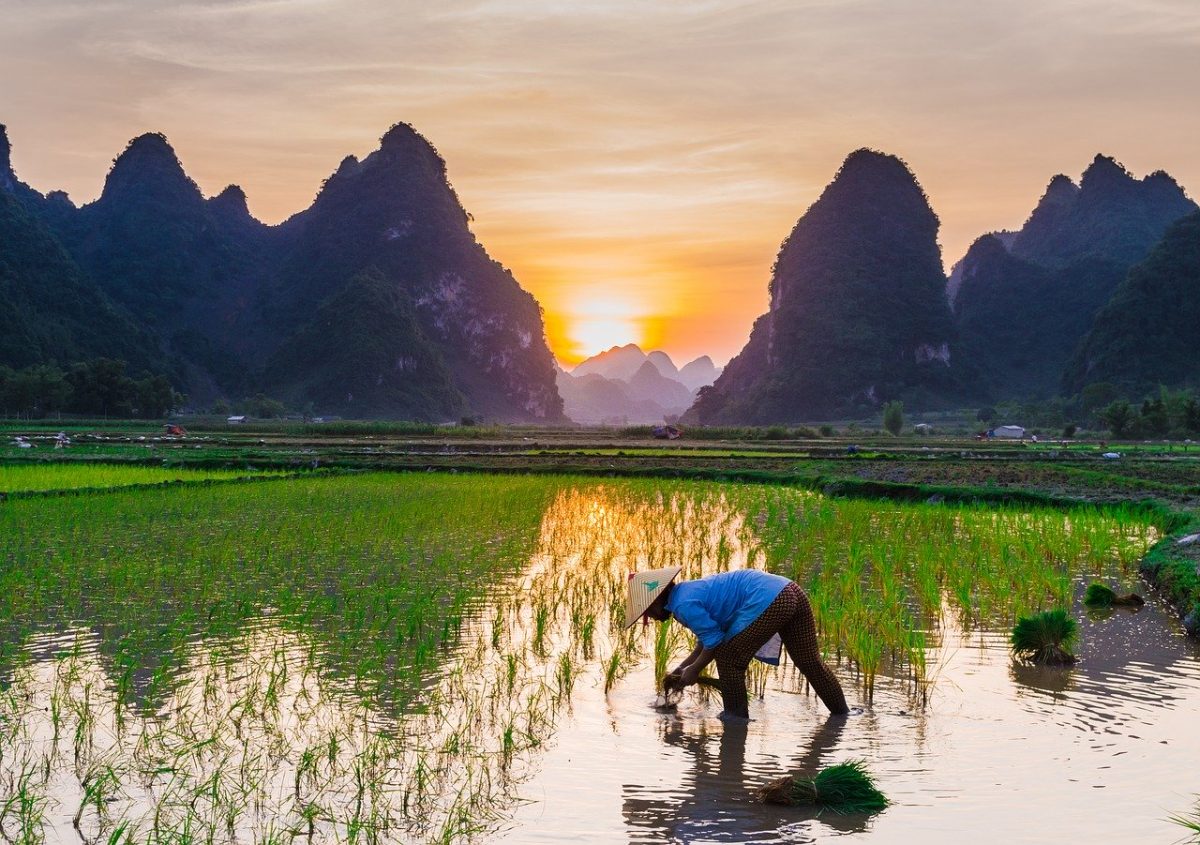
EPIC 3 Weeks in Vietnam Itinerary With budget tips & tricks
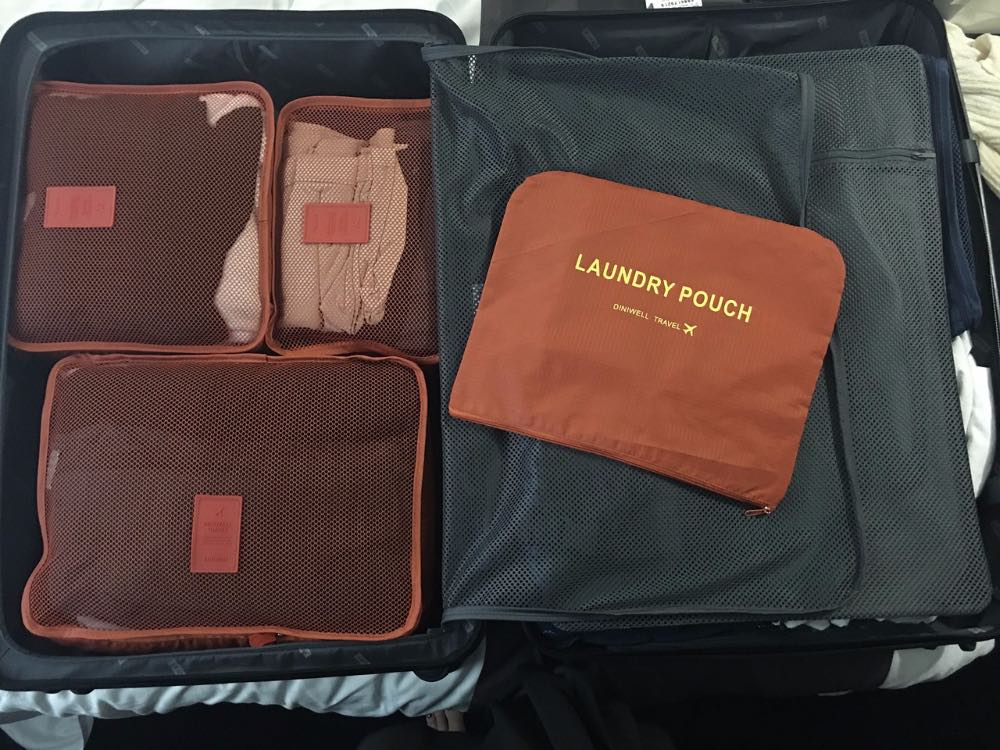
What To Pack For Trip To Vietnam Checklist – Vietnam Packing List
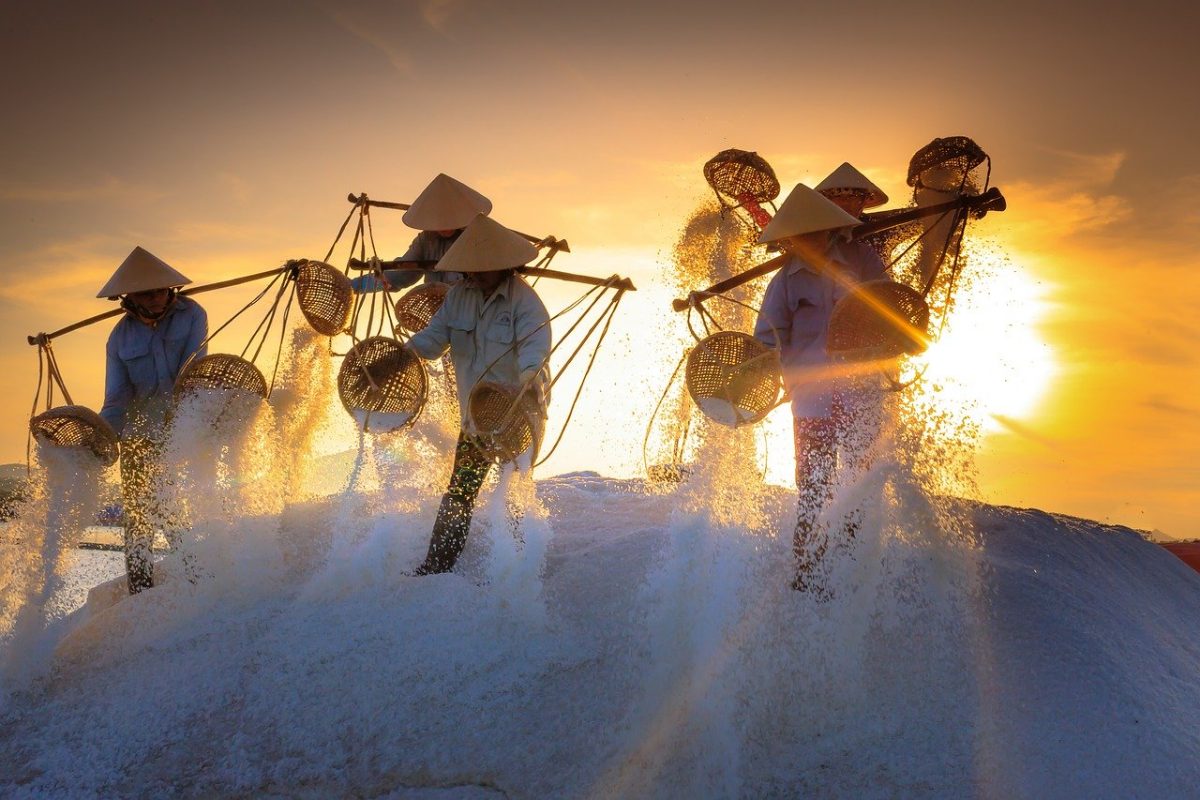
30 Things To Know Before Going To Vietnam
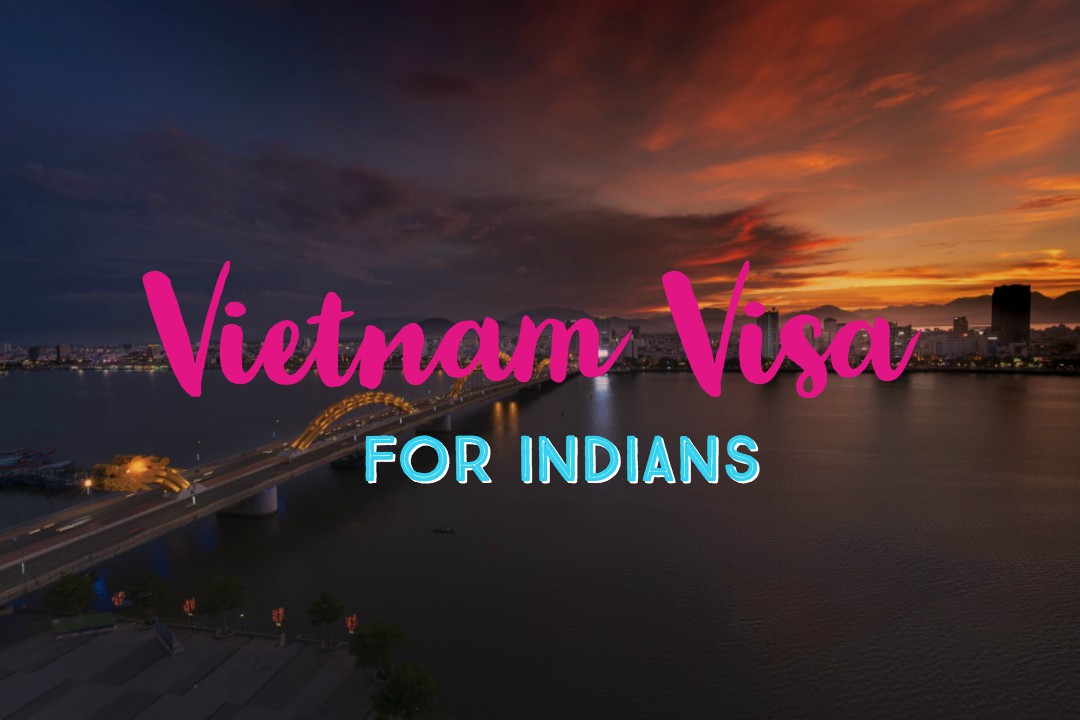
Vietnam Visa For Indians: Here’s How To Get Vietnam Visa From India
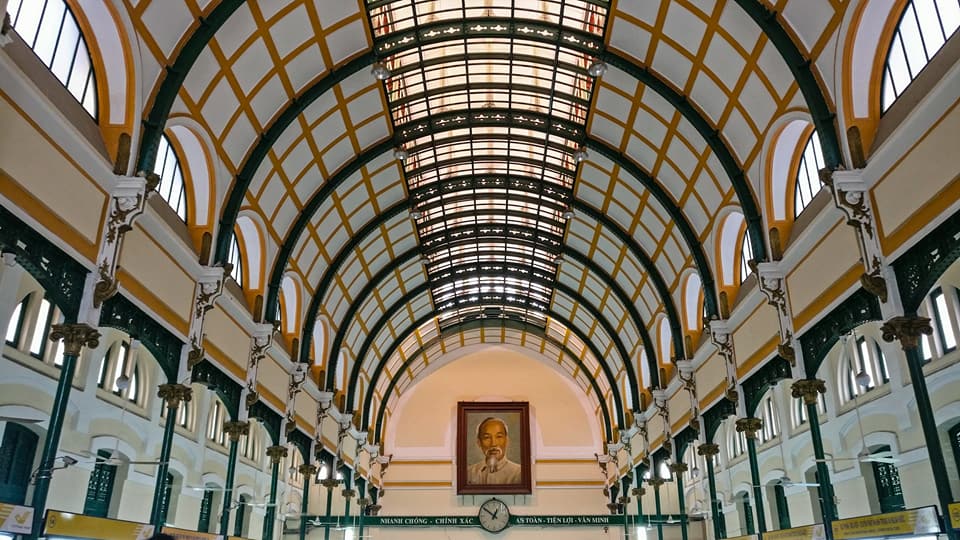
21 Interesting Places In Ho Chi Minh That You Should Visit in Vietnam!
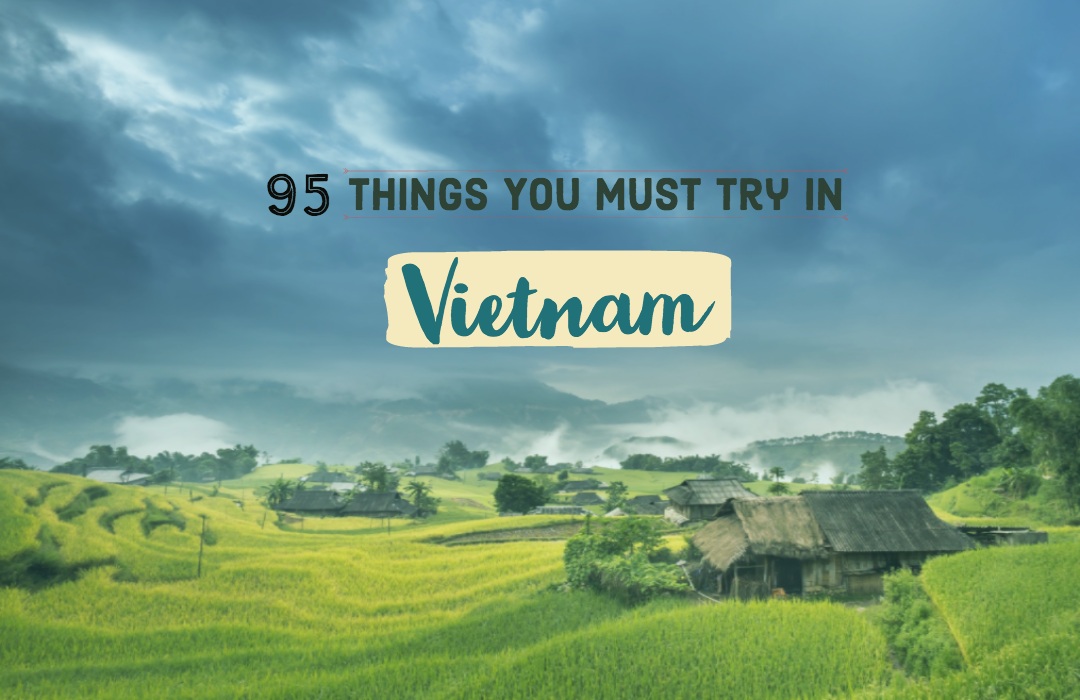
What To Do in Vietnam? Here Are The 95 Things To Try
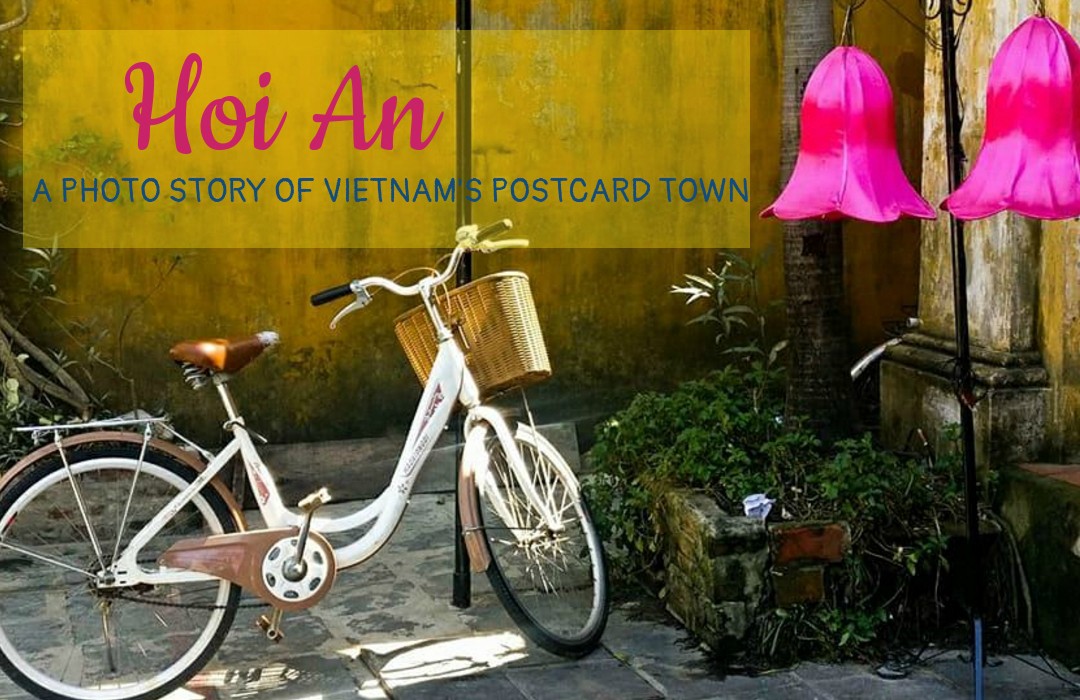
Hoi An in Photos – Walking Through Vietnam’s Post Card Town
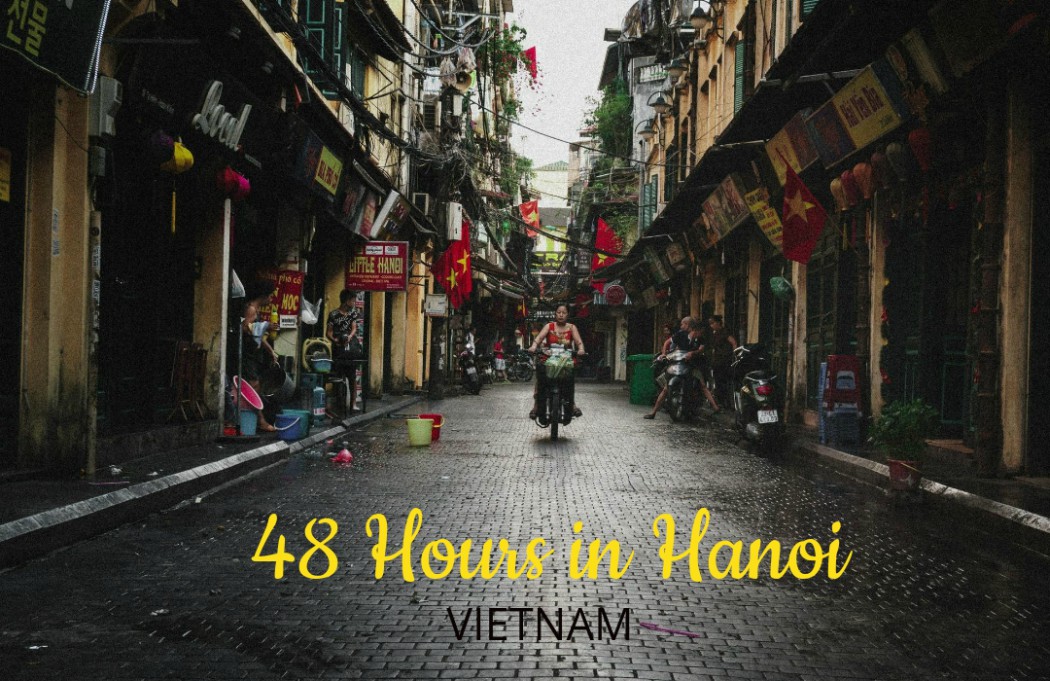
Hanoi Itinerary – How I Spent 48 Hours in Vietnam’s Capital

10 Top Things To Do in Phong Nha Vietnam + Extra Tips & Budget Tricks

Want to Experience Rural Vietnam? Ninh Binh Is The Place To Be!

Things to do in Mui Ne, Vietnam’s Pretty Beach Town
- Recent Posts
- Your Ultimate Guide to the Best Things To Do in Krakow, Poland - April 12, 2024
- Exploring the Hidden Gems of European Ski Resorts - March 28, 2024
- 25 Beautiful Landmarks In Poland For Your Bucket List - March 16, 2024
Related Posts
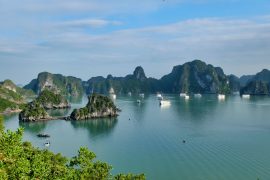
Write A Comment Cancel Reply
Save my name, email, and website in this browser for the next time I comment.
- SOLO TRAVEL
- ARUNACHAL PRADESH
- HIMACHAL PRADESH
- UTTARAKHAND
- THE PHILIPPINES
- UNITED STATES
- TRAVEL FACTS AND TRIVIA
- WORK WITH ME
Type above and press Enter to search. Press Esc to cancel.
The Ultimate Backpacking Vietnam Route Planner
05/10/2017 by Kristin Addis 38 Comments
Vietnam is an essential stop for most people who are backpacking across Southeast Asia. If you want a destination where your money will go far, and where you can get access to jungles, history, beaches, and gorgeous natural areas with ease, then Vietnam is an excellent choice.
Vietnam is also very special when it comes to food. It’s interesting to see the way that it changes from region to region, and yet how cheap and delicious it is, and generally healthy too!
Here’s my guide to many of the best spots in Vietnam, in the direction that I took from South to North. This can easily be reversed if you’re coming from the other direction:
Table of Contents
Ho Chi Minh City
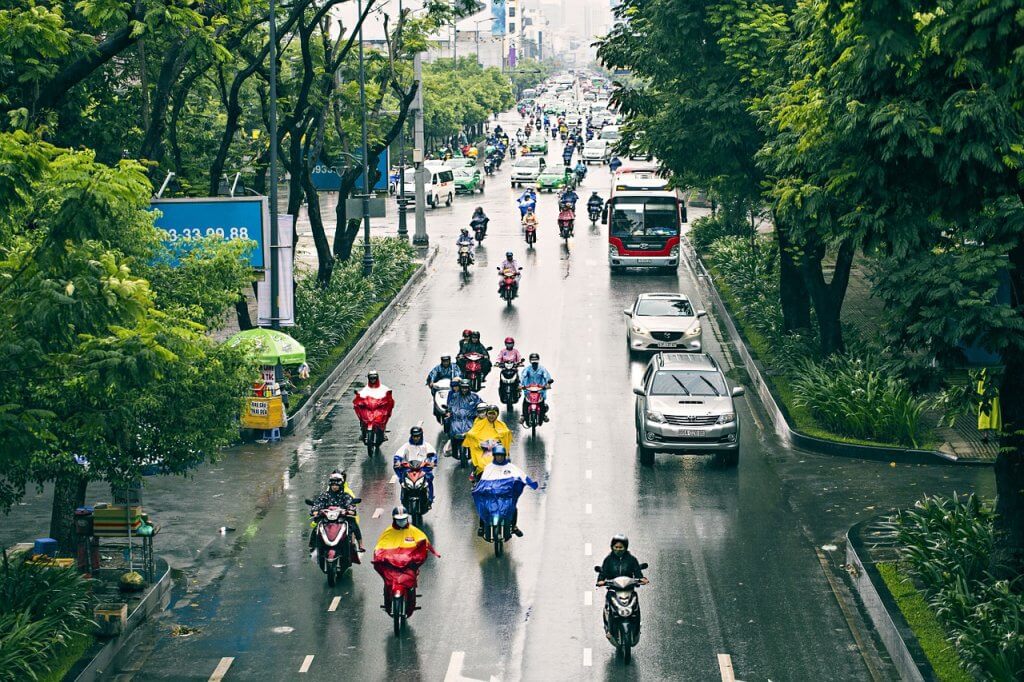
Whenever I see a stop motion film or time lapse of Ho Chi Minh City I’m reminded of how crazy it was simply to cross the street there. Everything seems to run in a sort of organized chaos of motorbikes and roundabouts in a city that still has some hints of French colonialism in the architecture and even in the food (Banh Mi in a French roll, anyone?).
Formerly Saigon, Ho Chi Minh City is a very common first stop in Vietnam. For me, it was primarily a foodie adventure and my introduction to Vietnamese cuisine, which must be some of the freshest, most flavorful, and light food I’ve ever tasted.
Apart from stuffing one’s face, there’s a lot of history to explore especially for those interested in visiting the Củ Chi tunnels and the War Remnants museum. Both activities help to give a better understanding of the Vietnam of today. Check out more things to do here .
Stay: Townhouse 50 – walkable to the backpacker area but a nicer part of town, with included breakfast!
Beware: bag snatch thieves are all over HCMC, particularly in the backpacker area. Never take your phone out on the street and if you are walking with a bag, make sure that it has a strong strap it is not easy to slash or you could become a target. I just took my money out in a pocket that buttoned when I left for the evenings so that I wasn’t an attractive target without a bag or a phone.

Mui Ne is a higher end beach destination with oceanfront resorts. It’s a popular spot for kite surfers and has sand dunes to play in as well.
This is a resort town with less of the debauchery that you’ll find in Nha Trang. If you’re looking for a spot to unwind, Mui Ne is one of the nicer beachy areas in Vietnam.
Stay: Mui Ne Bay Resort
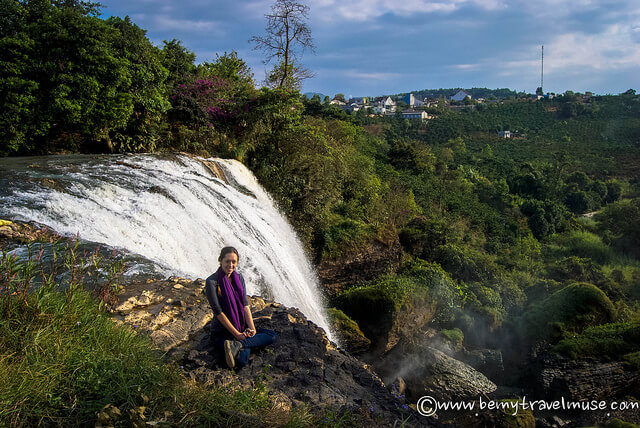
Beautiful and quirky Da Lat is actually an area where you will find more Vietnamese than Western tourists. It’s a popular local spot which is part of what makes it so cool. The town has great night markets, and an especially festive atmosphere if visiting around lunar new year. The monastery and elephant falls excursions are must-dos.
This is another popular beach destination but though it tends to have more of a party vibe. There are some nice beaches around Nha Trang, but for the most part I thought it was a pretty touristy, somewhat seedy alternative to the much nicer Mui Ne and Hoi An.
Stay: Mozjo Inn has the friendliest staff and it’s a fun place to meet other backpackers to head to the beach with.
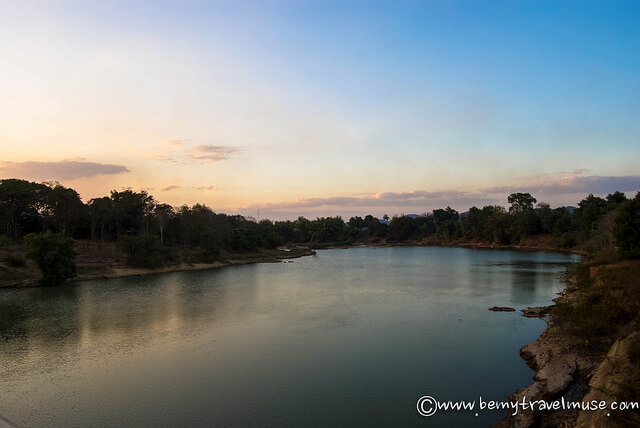
I ended up at this park simply because I wanted to find one place in Vietnam that was truly off the beaten path. I can say that Yok Don fits the bill, and receives very few tourists each year. It’s a little tricky to get to , but once you do you can get some peace and solitude away from the backpacker crowd and much of anything at all!
Stay: The accommodation is tied to the park, so ask in the HQ when you arrive. It is slightly expensive for a solo backpacker, so bring a friend!
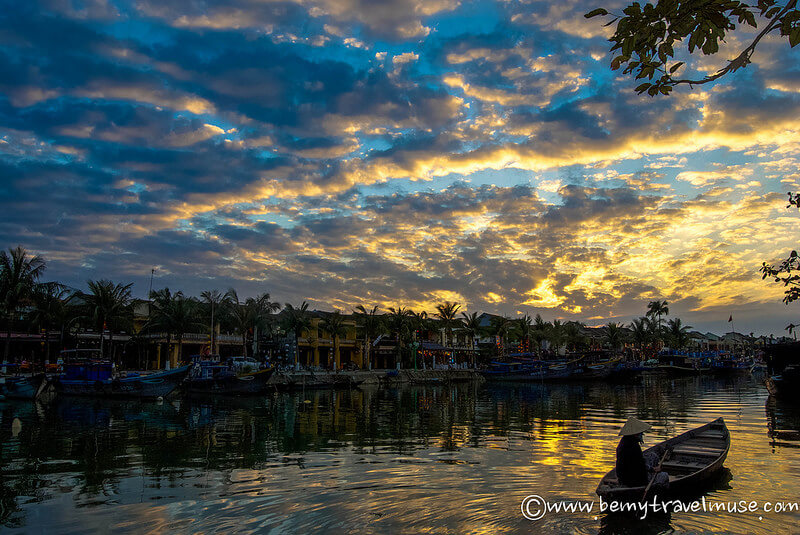
Hoi An is my personal favorite city to visit in Vietnam because for me it’s a triple threat – it’s photogenic, it’s on the beach, and I can get custom made clothes and shoes there. What’s not to love?
Apart from wandering around the old town, checking out the Chinese temples and getting awesome handbags, suits, rompers, dresses, and shoes made, you can enjoy some rest and relaxation as well as this spot is much less crowded than Hanoi or Saigon.
Click for different accommodation options in Hoi An depending on your budget. There are some beautiful options!
Phong Nha Ke Bang
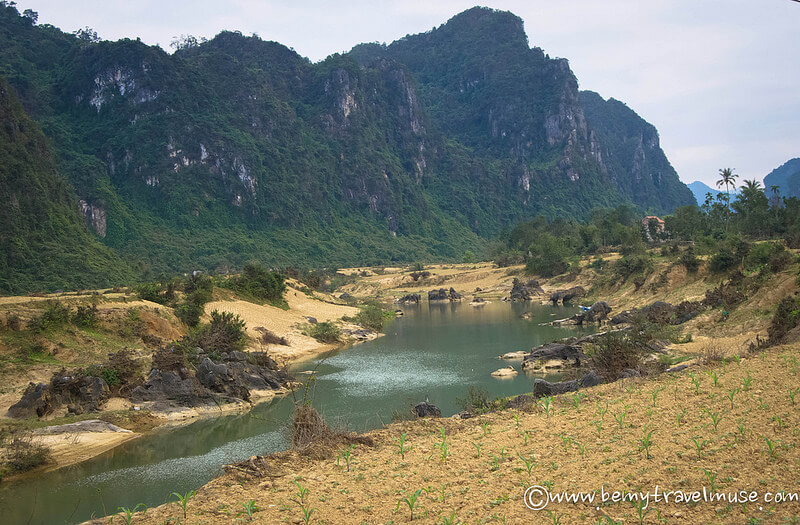
While Hoi An was my favorite city, Phong Nha is my favorite non-urban area in Vietnam. The undulating, unique rock formations and the idyllic rice patties all around this tiny little town just makes it all so dreamy. The locals were friendly and welcoming, flashing peace signs, and there were caves to play in and swim in too. It’s a little slice of paradise.
Not as many backpackers make it here, and that has made all the difference in a positive way. If you love nature, definitely stop in this park, rent a motorbike for a few days, and go have adventures.
Hue primarily entered my itinerary because of bun bo Hue, a soup I was very keen to try. What I found was a quiet city (mostly because it was just after Tet, or Lunar New Year), full of ancient history. It was almost haunting in a way.
I didn’t stay for long, but I highly recommend Jodi’s guide to anyone looking for more on Hue and what to eat there.
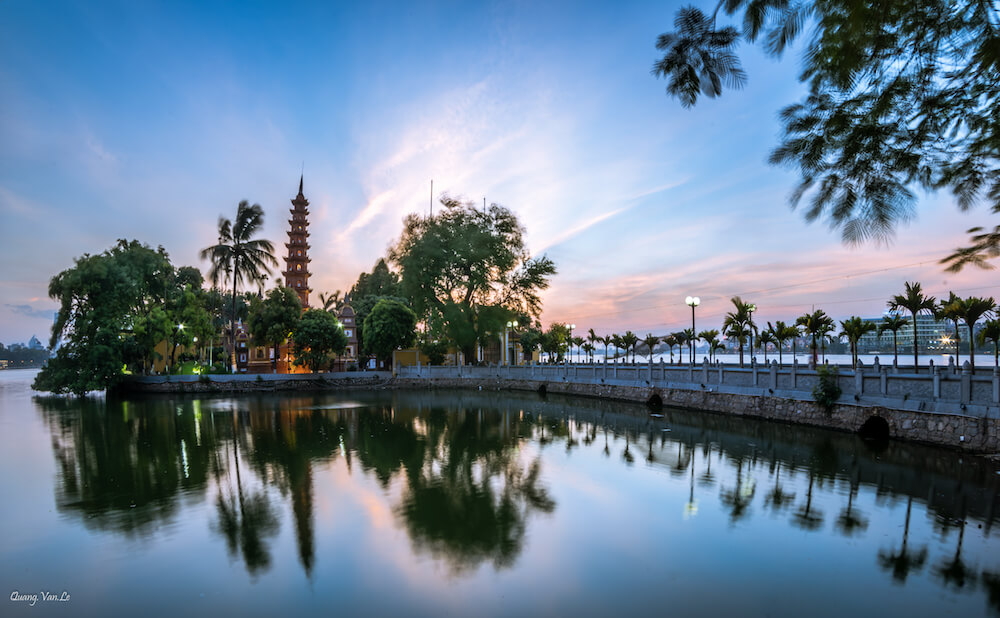
My favorite memory of and Hanoi circled around Cafe Giang where I tried the famous Hanoi egg coffee. Please, if you find yourself there, stop everything you’re doing and head to this café. I know it sounds like a gross concoction but egg coffee is like a Cadbury creme egg and a cup of coffee met in heaven and spawned a beautiful love child.
Apart from that, Hanoi is known for its is shopping in both high end shops and excellent markets all around town, and its interesting mix of East and West as the French influence is also still present in the quaint tree-lined city streets and old buildings. It’s also the jumping off point for Halong Bay and Sapa in the north.
Stay: Little Diamond Hotel
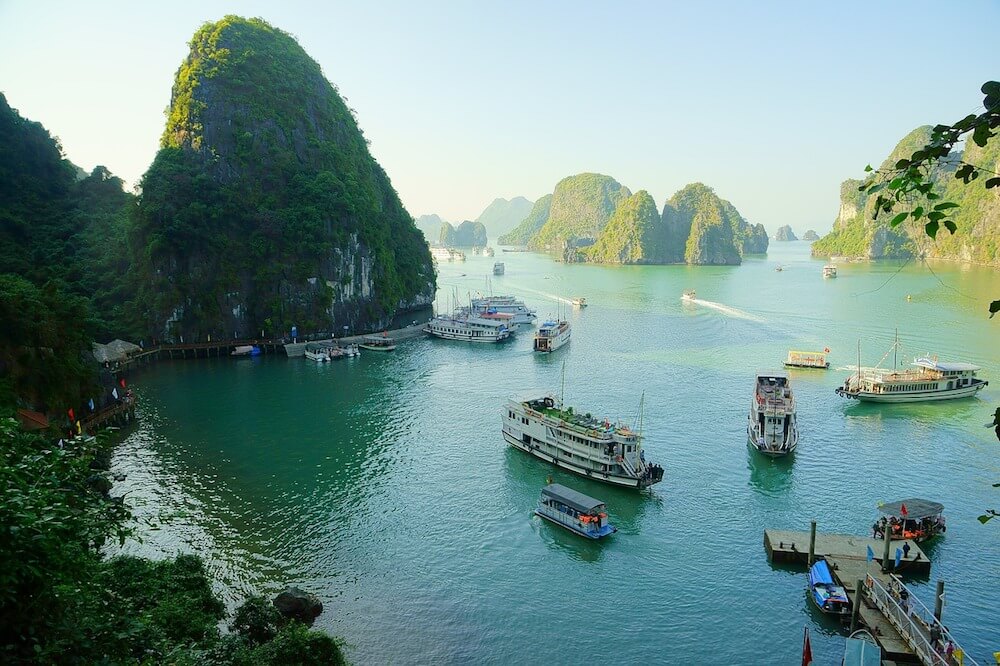
All around Hanoi, you’re bound to see signs advertising 2-3 day trips out to Halong Bay, famous for the magical landscape of limestone rocks shooting right up out of the bay’s waters.
The trips usually involve at least one night on the boat and one on an island, and can vary in luxury and price point. The party option is the Castaways Tour which is more of a booze cruise than nature excursion. For something higher end, visit a few tour operators in Hanoi and see who can give you the best price on the tour that suits your desires best. Get a few different prices and negotiate.
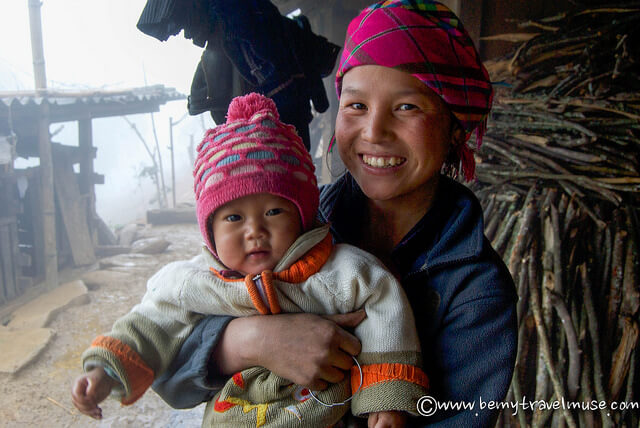
Spending the night in a Hmong village in Sapa is kind of a must when in Vietnam. It’s a chance to get a local experience as well as seeing some of the most beautiful rice paddies in Vietnam.
I went with a group of 14 other backpackers, taking the overnight bus up from Hanoi. We did a hike, had a few meals around a camp fire, and enjoyed an overnight in the home of our host in the rural area around Sapa. More on how to book here .
Honorable Mention: Phu Quoc
Phu Quoc is an island in the South of Vietnam, closer to Cambodia. I haven’t been, which is why I can’t wholeheartedly recommend it. However, I want to add it here because it’s apparently very laid back, and probably has the best beaches in Vietnam. Judging how close it is to Cambodia and how incredible that coastline is, if you have time, add it to your itinerary (then please come back and comment on your experience!).
Here’s a map to help you plot your points. Actual travel time will be much longer on buses, motorbikes, and trains, but this can give you a sense of distances:
Transport tips:
Getting in:
Vietnam requires that most tourists have a visa. For Americans and most other nationalities, the best way is to obtain the 30-day visa ahead of time in the capital city of a nearby country at the Vietnamese embassy or consulate. You can also buy a visa online (I used myvietnamvisa.com ), print the approval letter, bring along passport sized photos, and pay a $45 stamping fee when you arrive. Definitely bring USD to pay the fee, as any other currency will cost more! The ATM in the airport also rarely works.
Transport-wise, there are several easy ways to get around Vietnam:
- Buses: I mostly took buses, which usually provide a snack and are quite comfortable, with flat beds for longer or overnight journeys. They are also easier to book on short notice than the train during lunar new year
- Trains: This is the most popular method for getting around Vietnam and also quite comfortable, but it’s important to book in advance during holidays like Lunar New Year.
- Motorbike: It’s also popular to buy a motorbike and take it from top to the bottom of Vietnam, or vice versa. The upsides are, of course, the adventure and the freedom. It’s impossible to imagine coming out of an experience like that without more than a few good stories. However you can also plan on hanging out at the mechanic, spending a lot of time in Vietnam, and potentially crashing. Sometimes people give up and saw their bikes partway through, so you might get lucky and be able to buy a bike in Hoi An.
- Taxis: In cities, taxis are a good option if and only if you take the right companies. To avoid scams, always insist on the meter, including to and from the airport, and take a Vinasun or Mai Linh taxi. Those two companies do not rig the meter nor scam tourists. The others often do!
Vietnam is an adventure, and it can be a ton of fun and delicious too. Plus, with the ease of getting around and the cheapness of the country for visitors, it’s a no-brainer for those backpacking around Southeast Asia.
About Kristin Addis
Kristin Addis is the founder and CEO of Be My Travel Muse, a resource for female travelers all around the world since 2012. She's traveled solo to over 65 countries and has brought over 150 women on her all-female adventure tours from Botswana to the Alaskan tundra.
Leave a Reply Cancel reply
Your email address will not be published. Required fields are marked *
Save my name, email, and website in this browser for the next time I comment.
subscribe to our newsletter
This site uses Akismet to reduce spam. Learn how your comment data is processed .
Image Earth Travel says
05/10/2017 at 12:02 pm
Great post and photos! This reminded me of our 2+ months backpacking through Vietnam back in 2014 – I’d love to return.
Grainne says
05/11/2017 at 2:58 am
I would definitely add Ninh Binh, it is the perfect chillout place only a couple of hours away from Hanoi…it’s known as Halong Bay on the rice paddies…without all of the tourists.
05/11/2017 at 5:42 am
I love this guide and the one you posted on Thailand a few days ago! I’m planning a long-term Asia trip with my boyfriend for next year and these guides will definitely be coming in handy! 🙂
Kristin says
05/16/2017 at 2:51 pm
Awesome! Is there any other info you’re looking for an not finding? I’m happy to make more!
05/11/2017 at 7:55 pm
I came here to look at the pictures and to see if you had the same itinerary as I did, haha. I would also add Tam Coc, if you liked Nha Trang it’s a very similar environment with boat tours in the river and ancient heritage sites to explore on a motorbike, it was one of my favourite places in Vietnam.
(I also went to Phu Quoc and it rained heavily the whole time. FML.)
Also about the visas: a lot of nationalities now can get in for 14 days without a visa, but unfortunately I don’t think that includes Americans – and who wants to only spend two weeks in Vietnam anyway?? I overlanded from Cambodia and to avoid the embassy hassle I paid an agency in Phnom Penh (recommended by my hostel) 50 dollars and they had the visa ready in a day. In my opinion that’s the easiest way to do it if you’re taking a bus into Vietnam.
Not sure if you knew these things already, but thought I’d put in my two cents 🙂
Ijana Loss says
05/12/2017 at 6:34 am
Vietnam often plays second fiddle to Thailand, but it seems there’s enough to do here to fill an entire trip by itself! I like the idea of Vietnam because the route is a straightforward north-south line lol, so there’s no question where to go next.
05/16/2017 at 2:46 pm
Lol I like that too. I found Vietnam to be a little bit less touristy
Pilot Mark says
05/12/2017 at 6:32 pm
The sand dunes in Mui Ne are beautiful; they remind me of La Guajira in Colombia where the desert meets the sea. Asia is such a diverse continent – I loved Hong Kong but am itching to visit Vietnam.
Vanessa says
05/15/2017 at 6:21 pm
This is a very helpful post! When do you think is the best time to visit Vietnam?
05/16/2017 at 2:42 pm
any and all times but I thought it was particularly pretty and festive during Tet (lunar new year)
Brady and Shelly says
05/16/2017 at 7:33 pm
Great post! I love Vietnam and the food is simply amazing everywhere! Backpacking Vietnam is easy and safe. We did the reunification express train and took our time going north to south which stopped by some of the places you mention. We however liked Nha Trang mostly because we are SCUBA Divers and the diving is decent there. Agree with Hoi An of course. We stayed at Cat Ba island in Halong Bay. Great place to stay, cheap cheap cheap and you can get on junks to tour the bay easily without booking from some weird Hanoi travel agency brochure that misrepresents the tour.
05/21/2017 at 8:35 pm
LOVE that suggestion for Halong Bay! Thanks so much and I need to stay there next time!
09/21/2017 at 11:27 pm
Hello Kristin, Thank you very much for taking the time and effort to share such amazing details. I am planning my first solo backpack trip to Vietnam and i am following your blog as a Bible for my trip. I would really appreciate your help in planning my trip further, I think you were on a long trip, i have just 9 days to explore the entire country, i will reach Hanoi and leave from Ho Chi Minh. Can you please suggest which places should i go and which i can miss. I also wanted to know how to go from Halong Bay to Nha Trang or Hoi An. Thank you
09/22/2017 at 1:22 am
Hmm, definitely see Hoi An. You’ll want to break it up anyways with a stop in the middle. You can take overnight trains in order to help save time as well. I couldn’t do trains because it was Tet so they were booked up, but any other time of year it should be possible. I did overnight buses which aren’t as much fun, but still get the job done. Halong Bay takes at least 2-3 days, and usually people do tours that bring them from Hanoi up there and back down. I thought it was just OK even though yes, it’s pretty. I loved Phong Nha the most, but that’s just because I love small villages when I travel. If you can go there, do it!
09/22/2017 at 7:37 am
Thank you very much Kristin. You are very very kind. I feel motivated to go I am going next week.
09/22/2017 at 9:22 am
Dear Kristin, this is what my temporary itinerary looks like, would be really grateful if you could go through it and give your suggestions.
Day 1 Hanoi Day 2 Halong Bay Day 3 Halong Bay Day 4 Travel by train to Hoi An Day 5 Hoi An Day 6 Da Lat Day 7 Mui Ne Day 8 Ho Chi Minh Day 9 Return
09/23/2017 at 1:55 am
The problem is taking into account how much travel time is between those places on the chance that you can’t always take an overnight train (plus, you’ll be exhausted). You’ll end up with just a few hours in each spot. I’d remove Da Lat and Mui Ne and give yourself more time in Hoi An so you don’t feel like you’re always on the move. Or, I’d scrap heading south of Hoi An altogether, unless you fly out of Ho Chi Minh. It’s just a lot to try to do in one week.
09/24/2017 at 2:52 am
Thanx Kristin…. taking into account your suggestions….i have slightly altered my itinerary..i am flying to Da Nang from Halong Bay instead of taking the train…also I am planning just a day tour to Halong Bay instead of staying there for 2 days…If I had to choose between Dalat and Mui Ne…which one would you you suggest?
09/24/2017 at 7:06 am
Depends on what you want. Mui Ne is beaches and sand dunes and Da Lat can actually feel cold, and is more mountainous and has a very local feel.
Filippo says
10/26/2017 at 8:06 am
HI Kristin,
love your blog: very inspirational and since i’m going to Vietnam soon I’m going through all these older posts again 🙂 I had a question I hope you could help me with. I’m effectively backpacking north to south and will end up in HCMC where I’ll also go to the mekong delta. After that I’m planning to go to Phu Quoc to finish off the trip. unless I decide to stay in Phu Quoc for longer, I have a couple extra days to potentially spend around HCM. How many days would you recommend spending in HCM? I’m also considering going to Vung Tau for a day or so, but have heard mixed opinions. is there anything else worth exploring in the Area for a day or 2?
many thanks!
10/27/2017 at 12:47 am
A lot of people go to the Chu Chi tunnels outside of HCMC. If you’re a foodie you could explore it endlessly. Jodi is my guru for that https://www.legalnomads.com/saigon-street-food/
11/03/2017 at 1:00 am
Hey Kristin…I never thank you enough, I just came back from my first solo backpack trip to Vietnam and I cant describe in words how amazing it was and you are largely responsible for it. Thanx to you and your blogs, I had a fair idea of where I had to go and what I was doing. You inspired and influenced me in a way I’ll never forget. Lots of people helped in making this possible but you my friend were the first one, your blogs were my window into an unknown country. Hope to meet you some day. God bless you Thank you once again
Alessia says
01/06/2018 at 5:56 am
Hi Kristin, I am planning for Vietnam from february 5 or 6th , for 20 days. I have read your blog ( and Others) and this is what I have so far
HCMC 2 days Cha Tho, delta of Mekog 3 days (this can be done as a tour, right?) Hoi An 5 days Hue 2 days Hanoi 2 days + Halong bay 2/3 days + Nin bing 1 day trip Sapa 2/3 days and back to Hanoi to Fly back
I still have to give a better look at transportations, though. Do you think it is feasible?
01/06/2018 at 5:34 pm
Sure, though I don’t think you really have to plan it ahead that much. I was there during Tet a few years ago and I tended to book things a couple of days ahead of time and just winged it. You might find you want longer in some places and shorter in others. If you’d prefer to look ahead of time, though, this looks good! I’m unsure about the Mekong Delta tour to be honest but most hostels can help you book those.
02/12/2018 at 4:30 pm
Hello, I am now following this blog and I love it. I have a few more detailed questions. You mentioned holding on to your purse or not taking money out and putting it away where people can see it. What is the best way to keep a copy of your passport and your money safe while walking the streets, paying for food, and while sleeping?
If you do get attacked or robbed and they are pulling on you and won’t stop, can you fight back or are you going to go to jail if you hit them (not recommended, but sometimes you have to:)
Also, were you concerned about getting bed-bugs and how do all of these places keep the mattresses that are sooo used from getting crabs, lice, and bed bugs?
How do you secure your belongings when you are sleeping in a dorm? Thank you, I truly enjoy all of your posts. Tammy
02/12/2018 at 5:02 pm
Glad you like the blog! To answer your questions: – Lock everything up back at the guesthouse/hotel/hostel – They’re driving by on a motorbike so there’s very little opportunity to fight back. – I do check for bedbugs. Check the corners of the bed for little spots. I’ve found them twice and decided not to stay. – Many dorms do have lockers (bring your own lock) and I also use a wire mesh bag protector which has been essential in places where there aren’t lockers. More here: https://www.bemytravelmuse.com/packing-for-southeast-asia/
02/27/2018 at 2:07 am
Beside the comprehensive information, I must say that you’re a fantastic photographer lol
R & B says
06/08/2018 at 8:55 am
Hi, Kristin. Love the blog!
We are planning a month long trip to Vietnam and Thailand, with emphasis on Vietnam. We thought that was tons of time, but once you put pen to paper figuring our where to go — not so much! To avoid a total whistle-stop tour, among other decisions we think we may need to choose between Halong Bay and Phong Nha. You seem quite bullish on Phong Nha, but of course everyone says one MUST do the Halong Bay cruise.
Would it be madness to skip Halong Bay? Or, we could squeeze in an overnighter in each of those places, although that strikes us as a bit rushed. What do you think? Any thoughts would be hugely appreciated!
06/08/2018 at 9:03 pm
Since they’re in completely different parts of the country, I’m wondering why it’s an either/or for those two since you have a month. I personally wasn’t impressed by Halong Bay I’m sad to say, but the weather wasn’t great and I admit it is beautiful, but very touristy. I’d cut out time in the more touristy beach spots. They’re not that special, but Phong Nha, to me, was the best part of Vietnam.
Connie Anderson says
06/14/2018 at 9:37 pm
Great post! I have to say that Vietnam is so wonderful. I started my trip there from Ho Chi Minh city then took the flight to Hanoi Capital. The food was so stunning. A bit surprised by the crazy traffic in peak hours :)). After Hanoi, I headed to Lan Ha Bay (near Halong Bay) as my friend’s recommendation and got amazing experiences. The boat I stayed (La Pinta cruise) was so excellent with services and activities. I’m considering the Central ( Hoi An and Nha Trang) for my upcoming trip in Vietnam.
06/14/2018 at 10:31 pm
I love the central part. Agreed on the traffic. It’s nuts!
11/23/2018 at 10:10 am
Hi there! I am looking into spending a month in Vietnam but I’m having trouble finding information about trekking there. Is it possible to do multiple day hikes independently and camp without booking tours? Would hitting national parks throughout the country be a good way to experience the nature of Vietnam? Thank you!
11/23/2018 at 11:12 am
I didn’t actually do much hiking there, which is rare for me to be honest, but I’m sorry I don’t really know the answer to this one.
02/04/2019 at 5:34 am
Hi Kristin! Can I ask how long this trip took for you?
02/05/2019 at 8:32 pm
About a month. I took my time but if you can give it a month then do!
Mariz Lee says
08/19/2019 at 11:10 pm
Do you transfer accommodation in every city you go? Or do you just stay in one accommodation only?
08/20/2019 at 8:45 am
You’d have to stay in new places in each town, yes.
08/19/2019 at 11:14 pm
Me and my family is planning to travel in Vietnam or 7 days. Please recommend us where to stay when we arrive from airport. Thank you!
- South Africa
- Philippines
- Travel Resources
- Work With Us
- House Sitting Enquiries
Vietnam Backpacking Route

Backpacking in Vietnam is incredible. This wonderful country will keep you captivated with its rolling rice terraces, beautiful landscapes, cultural and historical sites, bustling cities, steaming bowls of pho and addictive sweet coffee. In this guide, we share our 3-week Vietnam travel route and the best places to visit in Vietnam.
Why Backpack in Vietnam
Backpacking vietnam route map.
- Where To Go Backpacking in Vietnam
- How To Travel Around Vietnam
- When To Go Backpacking Vietnam
Vietnam Travel Costs
Backpackers will love Vietnam because it’s cheap to travel. There’s a well-established Vietnam backpacker route, which is easily travelled from north to south by bus . There are opportunities to go off-the-beaten track if that’s what you like. There are cities and untouched nature, museums, galleries, hikes and rice terraces. The locals are welcoming (even though they do love to drive a hard bargain!)
Vietnam was our first backpacking destination, and we’re so glad it was. Being a backpacker in Vietnam and choosing a travel route is easy due to the country’s thin, vertical shape. This means the best travel route in Vietnam runs directly up or down the country (depending on which way you choose to travel). Planning a route is straight-forward and each place has transport routes to the next place along.
Our Vietnam backpacking route runs from north to south . It would be equally good to go backpacking from south to north . Day buses and overnight buses run the length of this route and are the cheapest way to travel around Vietnam.
If you plan on crossing the border and continuing backpacking in neighbouring South East Asian countries, it may be worth looking at the best areas to cross the border before deciding which end of Vietnam to start your backpacking trip.
This map shows our backpacking route, starting in Hanoi and stretching south until our final stop in Ho Chi Minh City:
Where to Go Backpacking in Vietnam
To backpack from the north to the south of Vietnam, you’ll need 3 weeks. If you only have 2 weeks to backpack in Vietnam, split the route in half and choose to travel either the north or the south of Vietnam. Whether you decide to travel the north or the south depends on which activities you most enjoy and the weather.
Our 3 to 4 week travel itinerary for backpacking in Vietnam includes the big cities and well-known towns where Vietnam’s most notable sights are located. But there’s also opportunity to go off the beaten track to discover lesser known areas of Vietnam for yourself.
Hanoi (2 days)
Hanoi , Vietnam’s capital city, is a great place to start backpacking in Vietnam. Not only is it overflowing with museums, monuments, markets and cafes. It is a bird’s nest for travellers making trips to the surrounding areas. Luke and I fell absolutely head over heels in love with Hanoi because it was bustling, cultural and had the most delicious coffee you’ve ever tasted.
Best things to do in Hanoi: Indulge in Hanoi’s cafe culture , revel in the hustle and bustle of the streets, wander around Hoan Kiem Lake, visit the Temple of Literature, and definitely check out the Vietnamese Women’s Museum.
Where to stay in Hanoi: Thu Giang Guesthouse . Basic guesthouse in Hanoi run by a local husband and wife. Very cheap rooms.
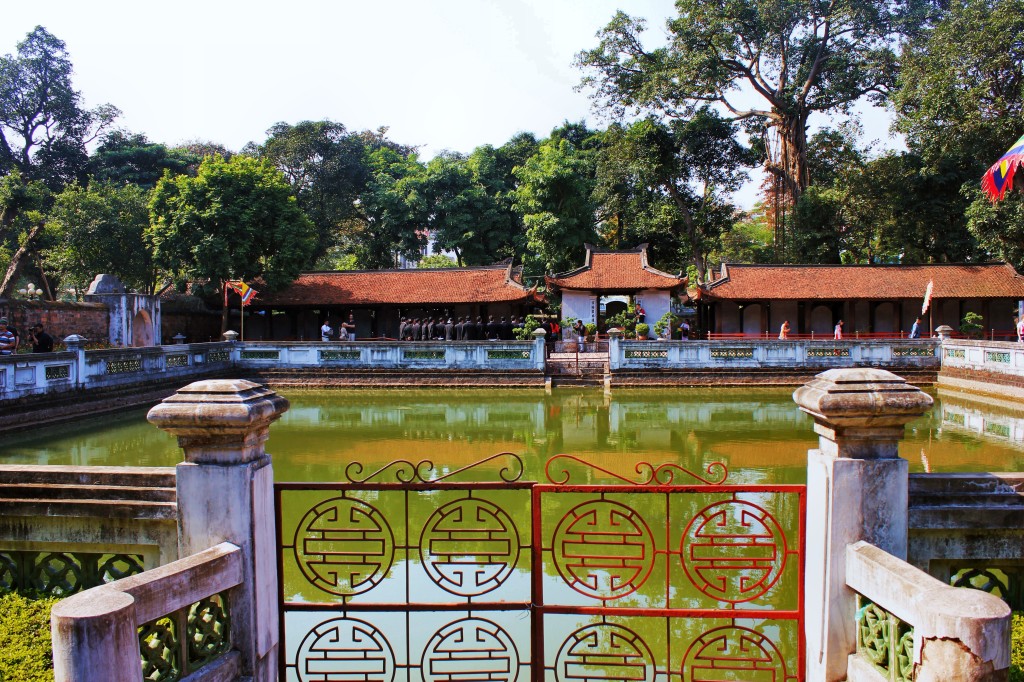
Halong Bay (2 days, 1 night)
The next stop for many travellers who are backpacking in Vietnam is the stunning Halong Bay. Here you can cruise around thousands of limestone karsts and islets. Always ranked as the top sight in Vietnam, it’s undeniably beautiful and romantic, but it’s also teeming with tourists and scam merchants, so mind how you go. We felt that the 2 days, 1 night tour was enough time in Halong Bay.
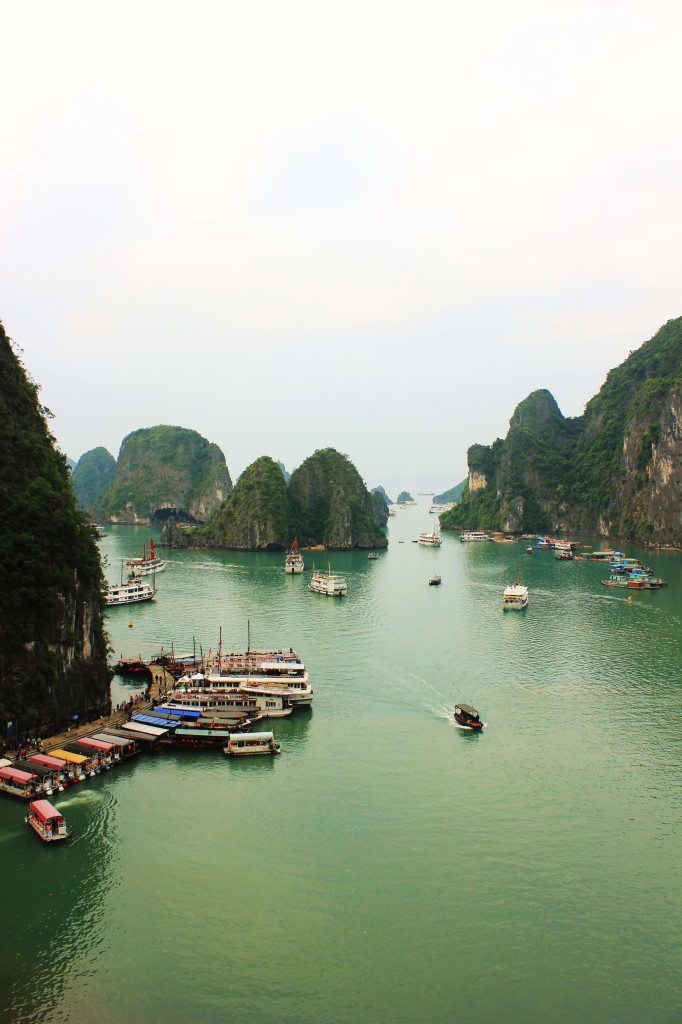
Sapa or Mai Chau (2-3 days)
After a pit-stop back in Hanoi, head to the tribal villages and rice terraces of the highlands. The most popular is Sapa, famed for beautiful treks and colourful ethnic minority tribes. However, the town is overrun by tourists and tribal women trying to sell their wares from woven baskets on their backs. Some travellers may not mind that, but we found it quite difficult to handle the constant pleas of locals there.
In retrospect, we would opt for a smaller, lesser developed settlement like Mai Chau . It is closer to Hanoi and offers a more low-key and authentic experience. We heard from other backpackers in Vietnam that Mai Chau is beautiful too. Don’t miss out on visiting a local tribal village when backpacking in Vietnam.
Best things to do in Sapa: Visiting Sapa is all about hiking with the hill tribes and admiring the beautiful rice terraces. We recommend going on a trek with Sapa Sisters , a social enterprise owned by the local guides. You could also consider booking a Sapa trek online before your trip. Stop by Baguette and Chocolate , an ethical cafe that employs local students from low-income families.
Where to stay in Sapa: Luong Thuy Family Guesthouse . Open fires, hot pho in the enclosed rooftop restaurant and spacious bedrooms make this family guesthouse the best in Sapa.
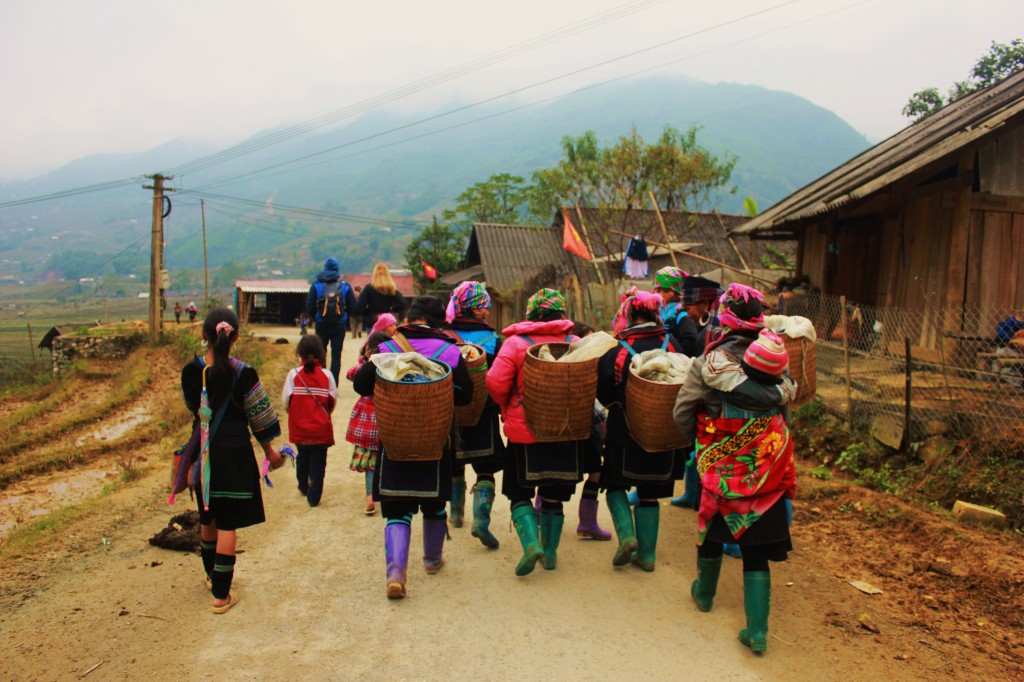
Hue (2 days)
If you’re ready to move on from the cold mountainous north, an overnight train will take you south down to the historic Hue . Despite being an UNESCO World Heritage Site and famous for its Imperial Citadel, Hue is often overlooked by backpackers in Vietnam. We loved Hue, even though we got caught in rainstorms multiple times while we were there!
Best things to do in Hue : Rent a bicycle to get around the magnificent citadel and if you’re feeling up for a little adventure then you can go further out to see the colourful incense making village. Eat at the Lien Hoa temple , an excellent option for vegetarians and a tranquil place to enjoy a meal served by the temple’s monks.
Where to stay in Hue: Hoang Huong Guesthouse . Basic and cheap hotel with a friendly owner. Home cooked banana pancakes for breakfast. Unfortunately this guesthouse cannot be booked online.
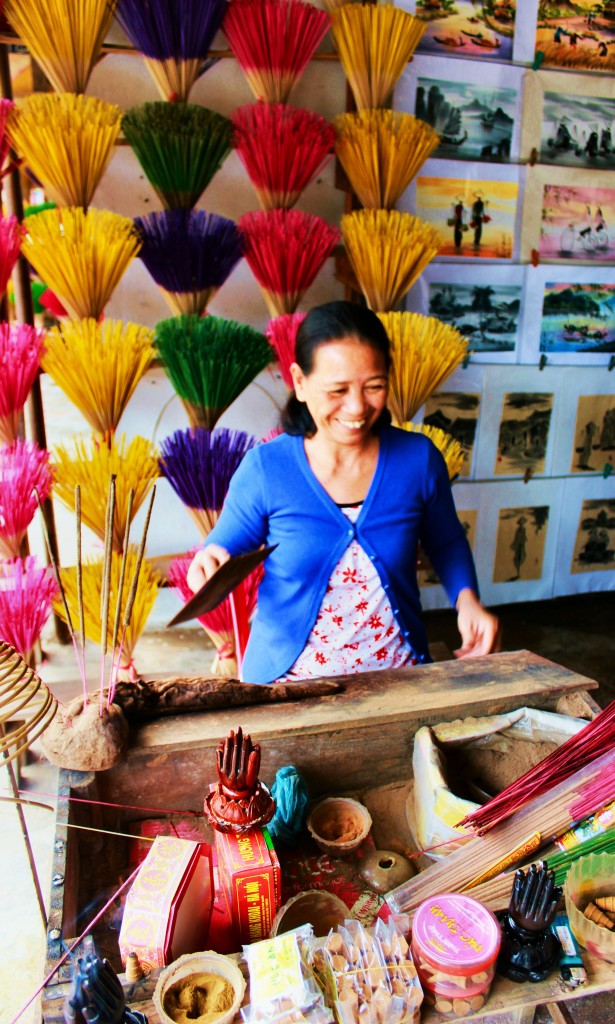
Hoi An (3-4 days)
The ancient city of Hoi An , is bustling with tourists bartering with rows and rows of tailors for suits, dresses, shoes and all other number of garments. Hoi An is an absolute gem. Cobbled streets adorned with sunshine yellow-painted wood architecture line the river banks. You’ll definitely need 3-4 days here if you are planning on visiting a tailor in Hoi An .
Best things to do in Hoi An: Aside from visiting tailors and browsing shops, you’ll want to check out the Japanese Bridge. There’s a delicious Vietnamese vegan cooking class in Hoi An which we absolutely loved. It was one of the only vegan cooking classes we found in Vietnam, so take the chance while you have it! Hoi An is a great spot for Vietnamese cooking classes .
Where to stay in Hoi An: Hop Yen. I mmaculate hotel with nice rooms downstairs and cheaper rooms in the attic. Good for budget travellers and mid-range travellers alike.
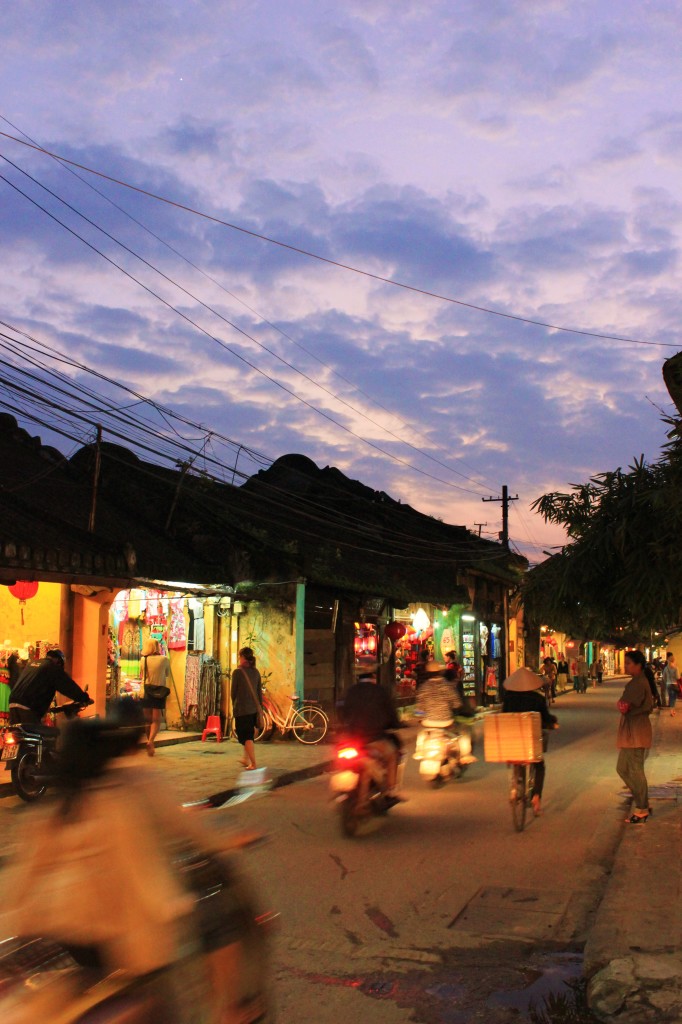
Nha Trang (1 day)
Nha Trang gets a bad wrap from other backpackers in Vietnam for being full of hedonistic gap-yah bingers and Russians. While that’s not untrue, there’s a lot more to Nha Trang than you first realise. Nha Trang is home to the Cham Towers and some very cool earthy Mud Baths. If you prefer though, you can spend all day drinking banana smoothies on the beach.
Best things to do in Nha Trang: Nha Trang’s Cham Towers and Mud Baths make for a really excellent day out and a much more interesting (and cultural) than the main-strip and tourist beach. It’s a long walk to the towers and the baths, so we’d recommend renting bikes in town and cycling over.
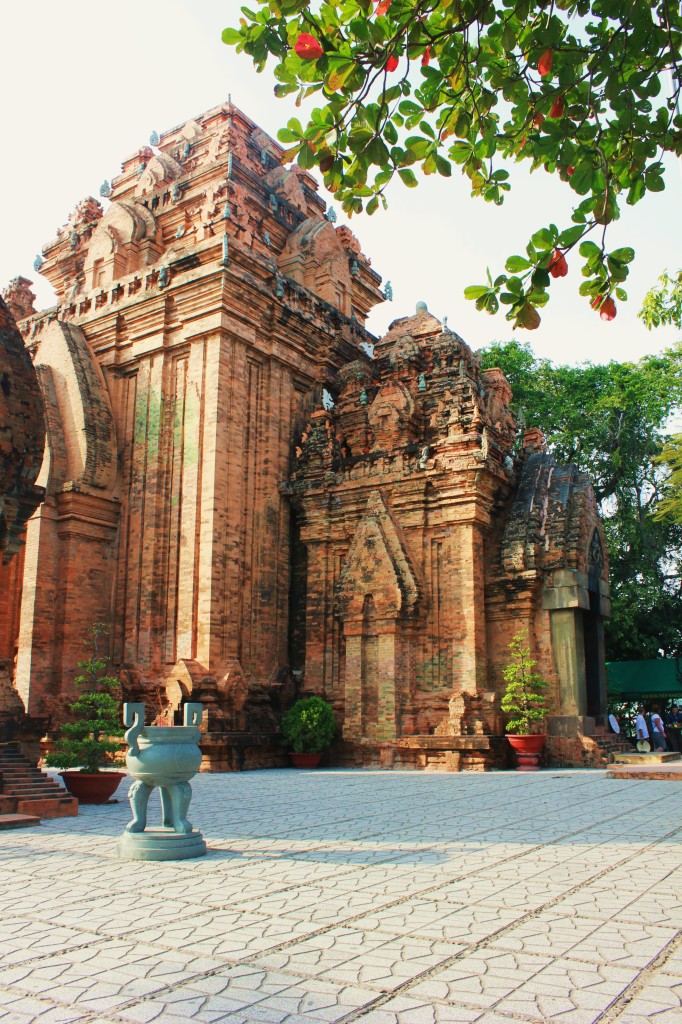
Dalat (1 day)
Head inland to Dalat , the “city of eternal spring.” Over-rated by Lonely Planet, Dalat is better seen as a gateway to Vietnam’s national parks and adventure activities in our opinion. We recommend just one day in Dalat to enjoy the town’s picturesque lake. The next day, head north to Yok Don or south to Cat Tien, or book onto adventure activities in the area.
Best things to do in Dalat: There’s not a huge amount to do in Dalat itself and many travellers use Dalat as a base for adventure activities like canyoning and kayaking, and other day trips. We heard great things about the Elephant Waterfalls. In the town, you can visit the Crazy House, though we don’t really recommend it. Stop by the Bicycle Up Coffee Bar if you’re in town during the day and head to Dalat Market a local hot soy milk drink to warm up in the chilly evenings.
Where to stay in Dalat: Zen Valley Dalat . We stayed in some average accommodation in Dalat and later found out about the beautiful looking Zen Valley. Other travellers said the rooms were comfortable, the views were lush and the staff were lovely.
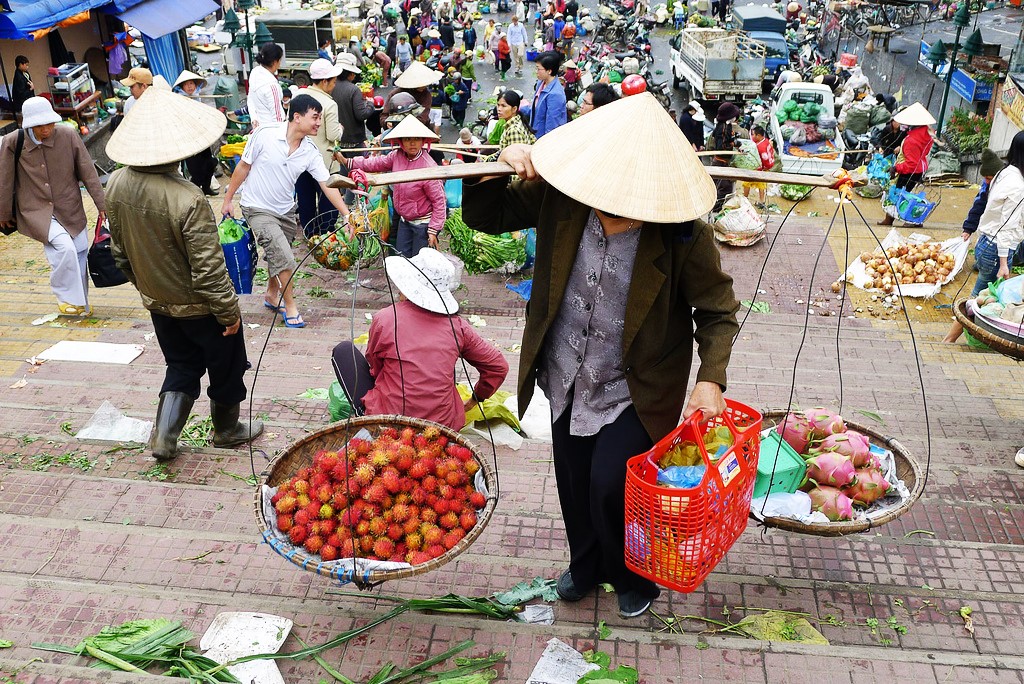
Dalat Market by Bang Nguyen
Yok Don (3 days)
Want to get-off-the-beaten track while backpacking in Vietnam? Then Yok Don is for you. Fewer people speak English and white-faced tourists are rarely seen. Locals don’t bat an eye-lid when a foreigner goes by because they don’t care. Unlike other places in Vietnam, locals here aren’t trying to sell to backpackers because there aren’t enough around for them to make a good trade from it. The nearby town of Ban Don is a good rest stop away from the constant you-buy-something sellers and high-commission tour operators littering the main backpacker route.
Trekking with elephants in Yok: In the National Park, you can go trekking with elephants along with one of the park rangers. Just down the road though, there are some very unethical elephant rides taking place. Avoid getting involved with this as the elephants are mistreated, and instead opt to support the nation park.
Where to stay in Yok Don: You can stay in a traditional stilt hut in Ban Don or in one of the rooms just inside the National Park entrance, while visiting Yok Don.
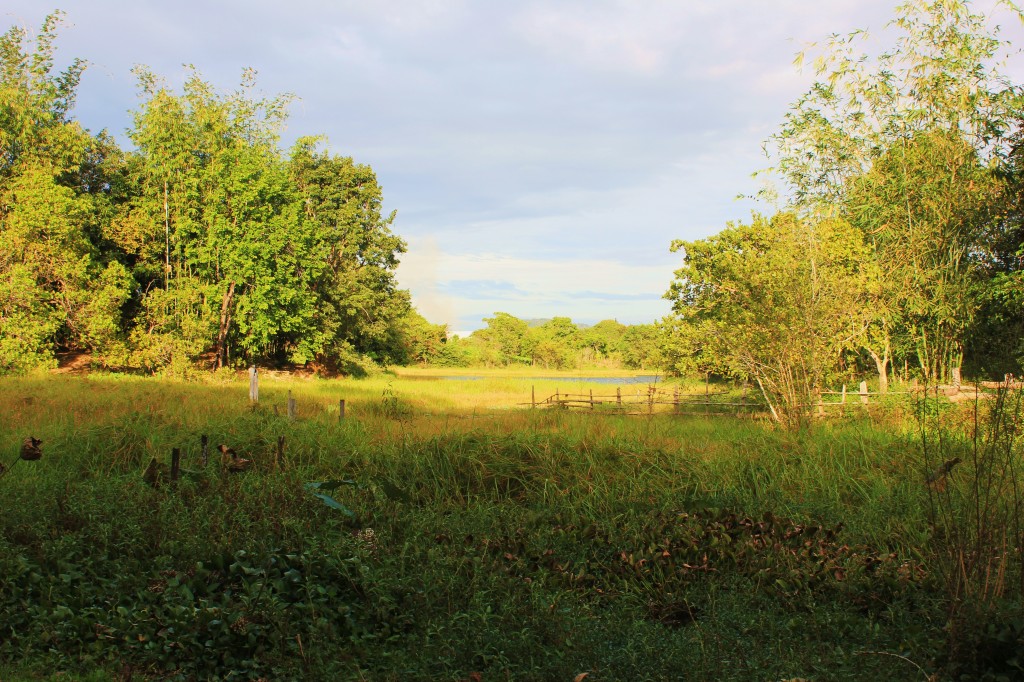
Mui Ne (2 days)
Mui Ne , talked up by backpackers as a similar but better version of Nha Trang, actually had equal numbers of drunks and Russians. The only difference was that Mui Ne came with a luxury price-tag that doesn’t really suit the budget of most people who are backpacking in Vietnam. However, we did love cycling along the main drag out to see the beautiful fishing boats and to find the red sand dunes.
Best things to do in Mui Ne: Motorcycle away from the beach to Mui Ne’s real treasure: the red sand dunes. These dunes were absolutely stunning, though the sand is burning hot! The Fairy Stream is also worth a walk along too. Avoid ostrich rides that happen not far from the Fairy Stream as these are not an ethical activity.

Ho Chi Minh City (2-3 days)
Heady and heaving, Ho Chi Minh City (still called Saigon locally) is alive with neon lights, world food, and markets. It’s a backpacker favourite because of the excellent transport links. It’s more metropolitan, more multinational, louder and sassier than the rest of Vietnam, but it’s also not so quintessentially Vietnamese. There are a lot of great experiences to be had for backpackers in Ho Chi Minh City, including exciting street food and grand museums and art galleries.
Best things to do in Ho Chi Minh City: Top of our list of things to do in Ho Chi Minh City is the Ho Chi Minh City Museum, which tells the history of Vietnamese independence. When we went, there was a great little art gallery outside the back too. Be sure to pass by the Saigon Notre-Dame Basilica.
Where to stay in Ho Chi Minh City: Ngoc Thao Guesthouse. Comfortable and well-kept hotel in the quiet but safe backstreets of Ho Chi Mind City.

Photo by Anthony Tong Lee
Mekong Delta (3+ days)
If you have a little extra time, the Mekong Delta is the next big stop for anyone backpacking in Vietnam. Unfortunately we only had 3 weeks for our backpacking trip in Vietnam and we didn’t make it down to the Mekong. If you’re backpacking from north-to-south in Vietnam, you’d ideally leave yourself 4 weeks so that you definitely have time to make it to the Mekong as well.
If you have a little extra time and cash, travellers also say Phu Quoc Island is paradise.
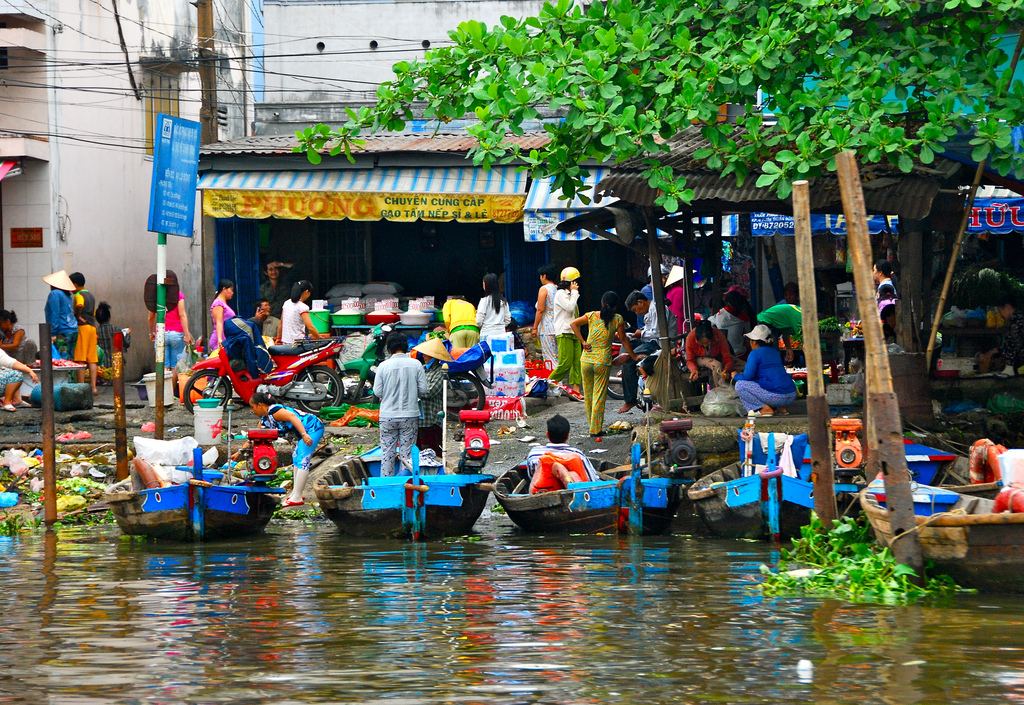
Photo by Malingering
How to Get Around Vietnam
Bus – Bus travel is the cheapest way to travel around Vietnam. You can buy a multi-stop bus ticket in advance or you can book bus journeys individually. Buying tickets individually means you’re less restricted and can be more flexible with your travels. It is never any trouble to buy last minute tickets between the major towns and bus travel is very easy. However, the night buses in Vietnam aren’t for the faint-hearted.
Trains – The trains in Vietnam were a nicer option was buses. While they weren’t fancy, you could get a more comfortable night’s sleep and a more pleasant journey on a train compared to the night buses. We travelled by train from Hanoi to Hue and would highly recommend it.
Motorbike – Travelling Vietnam by motorbike is a very sought-after experience. We’re too sensible though and decided against renting a motorbike. This was mainly because we were concerned about the risks of driving on Vietnam’s roads (both in busy cities and mountain roads). But also because we didn’t want the hassle of bartering for a motorbike or it potentially breaking down.
Luke’s younger brother visited Vietnam and motorbiked from Ho Chi Minh to Hanoi. He’s a lot more ‘go for it’ than us and said the experience was incredible, but also dangerous. While he was fine, one of his friends came off his bike and broke his ankle.
When to Go Backpacking in Vietnam
Deciding where you want to go backpacking in Vietnam is only one part of the equation. You should also think carefully about when you want to go backpacking in Vietnam.
Winter is from November – April
We travelled in November, which is the beginning of rainy season in Vietnam. At this time of year, the weather is slightly cooler. However, in the northern hilltribe villages like Sapa and out in Halong Bay, we experienced really misty and sometimes rainy weather that meant our views of the rice terraces in Sapa and limestone karsts in Halong Bay were often obscured. However, prices tend to be lower at this time of year.
Summer is from May – October
The summer season means clear weather all the time, but it also means that there are even more backpackers in an already popular backpacker destination. July and August is high season and prices for hostels and accommodation will be much higher during this time.
Rainfall in Vietnam
Rainy season in Vietnam varies depending on the region. In northern Vietnam, summer season is the rainy season. In central Vietnam, rainfall varies. Around Hue, you’ll likely see rain from September to February, while further south towards Nha Trang it’s most likely to rain in November and December. In southern Vietnam, it usually rains from May through to November. Rainfall tends to be in short bursts, so you just need to duck into the nearest cafe when you feel it coming. You can read more details on Vietnam’s rainfall here .
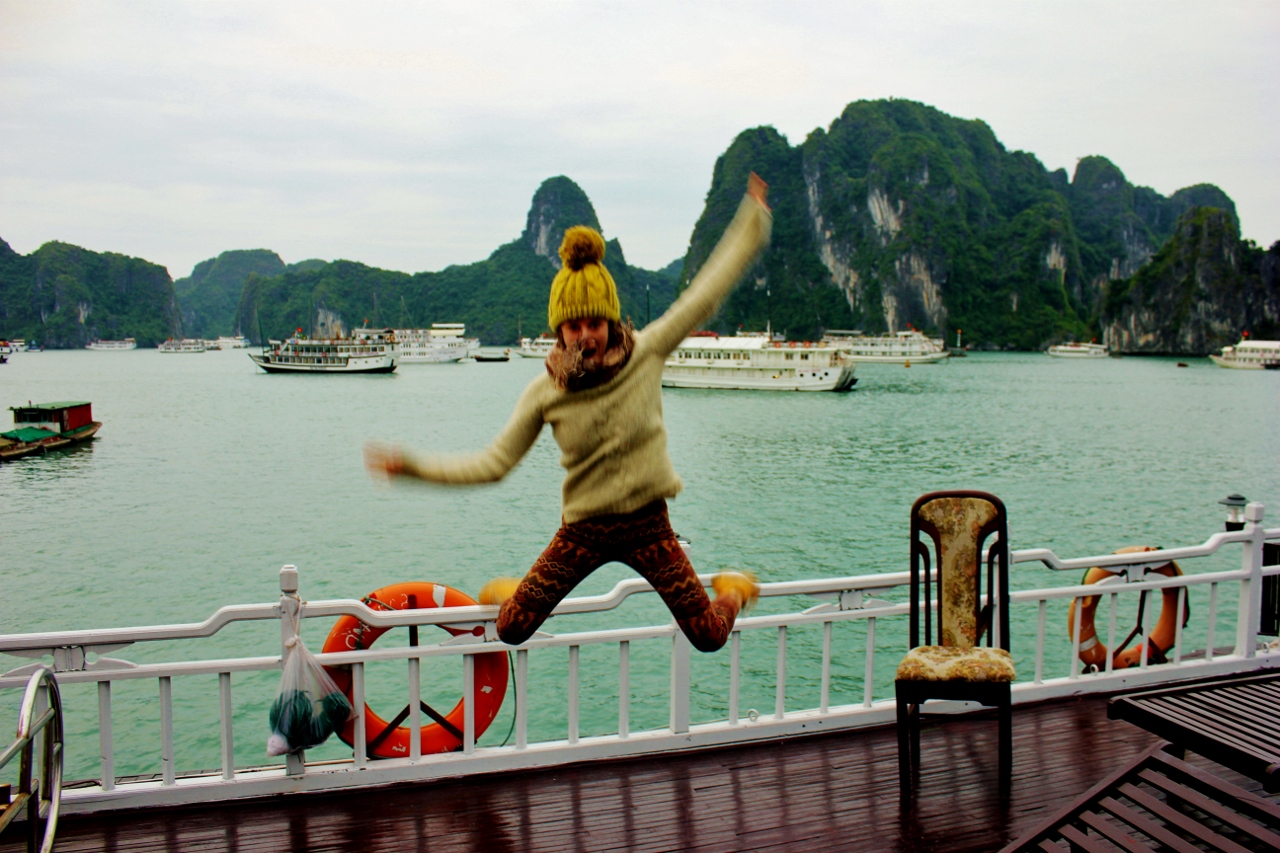
Vietnam is cheap to travel. How much you spend depends on how you like to travel, how many activities you do and how many beers you have each night. We had a tight budget during our trip and kept our travel costs low. We recommend a budget of:
- $336 / £256 for a 2-week trip in Vietnam
- $24 / £18 per person each day
Read a full breakdown of our Vietnam travel costs or check out the cost of living for an expat in Vietnam .
Read More About Backpacking in Vietnam
- Interested to know how much a backpacking trip like this would cost? Check out our Vietnam travel expenses .
- Love films? Here are 4 Films to Watch Before Travelling Vietnam .
- Our favourite Vegetarian Street Food in Vietnam .
Do you have questions about backpacking in Vietnam? Ask in the comments below.

Charlie Marchant
Hanoi’s café culture: how to make the most of coffee in vietnam.

Many thanks for all the excellent information,has saved me a lot of time . I checked out Phu Quoc and i must say that looks like the place to relax after the rigours of travel.
You’re insight and experiences are amazing and you have convinced me to book a trip to vietnam! Looked like you had a blast and I can’t wait to try out some of your recommendations.
Just a quick note… there was a spelling mistake in the travel by bus section :) Again thank you so much!
Menno & Janneke
Nice article Charlie. Myself Menno & Janneke, my wife are new to traveling as “midlifebackpackers”. We are from South Africa & are planning a Vietnam trip from North to South. Unfortunately, many young backpackers have their focus on parties. We prefer nature’s beauty, cultural exchange & generally savoring the experience. Reading your post, I see that your focus is also more inclined towards these things which is why I find your blog useful. We will be sure to keep your post as reference when our draft plans get off the ground. I think we will have around 6 weeks, so glad to see that it is a realistic time frame. We are after all 49 & 50 years young midlifebackpackers. :-)
Lynn Bonellie
Hi Charlie was hoping to pick your brains…. My friend and I are looking to back pack from the North to the South Vietnam Unfortunately we only have 2 weeks to do this could you please help us to make up an itinerary and maybe point us I the right direction to make the most of our time there. We are on a budget so will be using the bus and train…staying at guest houses.. I love your posts and hope you can help Many thanks Lynn
Thank you..I am booking my tickets and leaving for Vietnam asap..will be following you’re itenary..will give it some tweaks..hopefully it all goes well… 😀
Leave a reply Cancel reply
About charlie & luke.

We’re Charlie and Luke — UK travel bloggers, adventurers and storytellers. We travel slow and write about sustainable travel . We want to make responsible travel choices and help you do the same. Get to know us .
Subscribe To Our Newsletters
Hand curated travel guides and sustainable travel inspiration straight to your inbox.
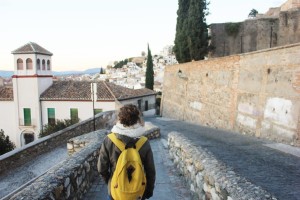
- Myanmar (Burma)
- Philippines
- New Zealand
Backpacking Vietnam – The Ultimate Guide!
Of all our adventures around the globe, our experiences backpacking around vietnam are some of our most favourite memories..
Whether it’s trekking in the stunning lush green highlands, cruising around the fascinating waterways of the Mekong Delta, or sailing through the limestone karsts of Halong bay, the opportunities for adventure are almost limitless. If you’re looking for inspiration on what to see, where to go and what to do in Vietnam, read on for our in-depth guide to backpacking around Vietnam! In this guide, you will:
- Discover the best places for trekking and amazing homestay experiences. From Sapa trekking and Ba Be national park in the North, to living with locals at Yen Duc village , we’ve got the North of Vietnam covered!

- Get inspired to visit the epic UNESCO world heritage site of Halong Bay , including when to go, how long to go for and which company to book with .

- Untangle the complicated and confusing options in the Mekong Delta with our 1 week DIY itinerary around these magnificent waterways.

- Find your relaxing stop off at one of Vietnam’s beautiful coastline towns and cities, from Hoi An , to Mui Ne and Nha Trang .
- And finally, check out our ‘ideal’ 4-week Vietnam itinerary for first-timers!
Northern Vietnam
Arriving into Hanoi and its bustling street food heavy districts, it’s difficult to consider leaving this city and heading out into the countryside. But if you can tear yourself away from the steaming bowls of Pho and cool cafes, then the North of Vietnam can offer you some spectacular rewards. A train or drive north brings you to the crisp, fresh air of Vietnam’s national parks, within which you can trek to your heart’s content, and live like a local on the many homestay options in this region. Our top two picks for this region for trekking are the well known Sapa region, and the lesser known Ba Be national park.
Both are beautiful, but you should read our Sapa trekking and Ba Be national park guides to make your own decision on what is right for you.

If you want to escape the city, but trekking isn’t for you, then how about a cruise around the magnificent limestone karsts of Halong Bay? This UNESCO world heritage park is a sight to behold, and we’ve been lucky enough to cruise on its waters twice, both times awe inspiring.

You’ll have read mixed reviews on Halong Bay, from party boats to rat infested junks, but if you do your research (and take our advice) then you can have a luxurious and exhilarating time in Halong Bay, and in particular Bai Tu Long Bay which is where we recommend you cruise around. Read our guide to Halong Bay here and get inspired to visit this incredible place! After your cruise around Bai Tu Long Bay, if you’ve gone with our recommendation of Indochina Junk tours, then you’ll have the opportunity to experience a homestay at Yen Duc village, a quaint village between Halong Bay and Hanoi. Here you can spend a night or two living with locals, and learning about their way of life, from rice growing and harvesting, to fishing, dance, music and history. We spent two nights at Yen Duc and loved every moment of it, and you can read all about this homestay experience here . So you’ve already got some incredible adventures lined up from your launchpad of Hanoi, but there is so much more to Vietnam, especially if you head south to Ho Chi Minh City, the capital and base for an adventure in the Mekong Delta. For more in-depth articles of our adventures in the North of Vietnam, click one of our articles below or read on for our top tips for the South of Vietnam!

Backpacking Vietnam | The North Articles If learning about the country’s fascinating history and culture interests you, then you’ll find it in bucket loads in Southern Vietnam. Ho chi Minh city is different to Hanoi in the north, with more of a cosmopolitan and international feel. You’ll notice the food is slightly different here too, the Pho sweeter than the savoury broths of the north. This city could keep you busy for weeks, but again if you want to venture out and experience rural Vietnam in the south, we recommend heading into the Mekong Delta.

The Mekong Delta is not the easiest place to get around, and even planning a journey through it is daunting given the options available and difficulties in travelling between destinations. But never fear, we’ve done all the hard work for you and you can read all about our DIY Mekong tour here . If you’re ready to begin planning your adventures from Ho Chi Minh city, you can dive into our in-depth articles below or read on for our tips on relaxing in one of Vietnam’s coastline towns and cities!

Backpacking Vietnam | The South Articles After all your adventures in the north and south, or perhaps as a pit stop in between the two, lies the long, coastal central region. This is an area with numerous small towns and cities dotted along the coastline, providing relaxation and beach lounging to recharge your batteries.
If you would like a holiday within your trip, then we recommend Nha Trang. This coastal city has good accommodation options, a nice beach and plenty of great food and drink destinations. You can read our guide of things to do in nha trang here.

If you want something a little more cultural, but still with an element of relaxation, then Hoi An is the place for you. A quaint town, it is full of boutique hotels and guest houses, high end eateries and the beach is a mere cycle ride away. Oh and if you need a new suit this is the place to get one! Even after all your adventures in the north and south, you might still want some more action, in which case we’d recommend you hit the kite surfing coastal town of Mui Ne for some surfing action and sand dune buggying. We didn’t try the kite surfing, but watched people much braver than us try it whilst we sipped on coffees! You can fly between Hanoi and Ho Chi Minh city, but to do so would mean missing out on so much of the Vietnamese coastline. So jump on that train and make your way overland, stopping off at our recommendations along the way and see so much more of Vietnam!
Backpacking Vietnam | The Coastline Articles backpacking Vietnam | The Food
If our adventures haven’t persuaded you, then maybe the next reason will!
Vietnamese cuisine is, in our opinion, the best in the world.
A big statement yes, but we absolutely love Vietnamese cuisine, especially the steaming hot bowls of Pho at breakfast, lunch and sometimes even dinner! Gosh, just the thought of it is making my mouth water…!
The food of Vietnam left such a mark on us that for months after leaving, we longed for just one more bowl of hot steaming Pho-y goodness (special noodle soup!), or a tasty bite of Goi Cuon (fresh spring roll) followed by the delectable Banh Xeo (an enormous savoury pancake full of shrimp, pork bean sprouts & egg) with a side of Goi Du Du (green papaya salad)! In fact, we’ve even tried to cook our own ‘Pho’ noodle soup. Tasty as it was, it never quite matched up to the real thing unfortunately…and so we have another reason to return!

But seriously, travelling to a country just for the food isn’t the top reason most people have for choosing their destinations, but when it comes to Vietnam we would make an exception! backpacking Vietnam | our route advice [
As you’ve probably gathered so far from this guide, Vietnam is a vast country offering a large variety of destinations and experiences for all types of travellers, and of course your itinerary will very much depend upon your passions and how much time/budget you have available. However, our first recommendation would be to try to allocate at least 2 – 3 weeks to this wonderful country (and longer if possible), especially if you’re visiting for the first time.
Based on our 2 experiences of wonderful visits to Vietnam, we have come up with the following travel plan, based on our ‘ideal’ Vietnam itinerary for a 4 week trip.
Starting Point: Hanoi City – spend a least 2-3 days exploring this wonderful and vibrant capital city.
- Take a tour from Hanoi to Sapa or Ba Be National Park (or both) for 2-3 days trekking/homestay experiences.
- Return to Hanoi for at least 1 day recovery then tour to Halong Bay for a 3 day/2 night cruise followed by a 2-3 day homestay experience at Yen Duc Village (enroute back to Hanoi).
- Take train or flight to central Vietnam to visit charming Hoi An for 2-3 days (followed by possible visits to Nha Trang or Phong Nha-Ke Bang National Park depending on the season).
- Take train or flight to Ho Chi Minh City and spend a least 3 days exploring this amazing city and its surrounding historical sights, including the famous Cu Chi Tunnels .
- Embark on a 1 week Mekong Delta adventure (see Exploring The Mighty Mekong Delta, Vietnam for further details of our full 1 week ‘DIY’ tour)
- Take flight or ferry to Phú Quốc island for a few days relaxation by the beach to end a wonderful trip before returning back to Ho Chi Minh City!
Obviously this itinerary is based on our personal preferences and we recommend that you tailor it to suit your own travel needs and aspirations. However we hope that it’s sparked some inspiration for an exciting route round the highlights of Vietnam!

So that’s it! A whistle-stop tour through our Vietnam highlights and passions. If you’ve never been, we hope you’re feeling inspired to visit. Or if you’ve been before then we’d love to hear your highlights and experiences from backpacking Vietnam in the comments section below. Get in touch!
Book Your Train/Bus/Flight Tickets Online!
We always recommend that you book your journey in advance, so you have peace of mind that your seats are booked! We recommend using 12go.asia as they offer train, bus and ferry ticket booking online in advance! Check out your journey options and prices here and get your seat reserved!
Some of the links above are affiliate links, which means if you choose to book somewhere though our link, we receive a small commission. Don’t worry, it doesn’t cost you anything more, and most importantly, we only recommend companies that we use ourselves so you can trust our recommendations!
Looking for more inspiration? Take a look through all of our Vietnam articles here !
- Skip to primary sidebar
- Skip to content
- Skip to footer

My Five Acres
Make Travel Truly Transformational
Backpacking Vietnam – The 15 Things to Know Before You Go
If you’re thinking about backpacking Vietnam, the first thing you need to know is that you definitely should! Now that decision is made, here are the essential travel tips to help make the most of your Vietnam backpacking adventure!
1. How long do you need to backpack Vietnam?
2. how much does it cost to backpack in vietnam, 3. where to go when backpacking vietnam, 4. what’s the best vietnam backpacking itinerary, 5. what’s the best time to visit vietnam, 6. what’s the weather like in vietnam, 7. is backpacking vietnam safe, 8. how do you get a visa for vietnam, 9. how to get around in vietnam, 10. how should you dress in vietnam, 11. what to pack for vietnam, 12. is street food safe in vietnam, 13. three things avoid in vietnam, 14. what vietnamese words should you know, 15. our favourite hostels in vietnam, a final note about backpacking vietnam.
This article may contain affiliate / compensated links. For full information, please see our disclaimer here.
Vietnam might be the perfect destination for backpackers, especially for those who are travelling to Asia for the first time. The people are incredibly welcoming, the infrastructure for tourism is well organized, and there is a huge variety in landscapes, culture, food, and interesting things to do.
Beyond that, Vietnam is still extraordinarily cheap, so you can backpack on a budget and still have a great time.

I’ve travelled to Vietnam so many times now that I’ve lost count. I’ve been there as a solo backpacker , as a cycle tourist , as a house and pet sitter, as a volunteer, and most recently as a temporary expat in Hoi An.
These adventures have taken me from the far north-eastern border with China all the way to the southwest coastal border with Cambodia , and all stops in between.
If it’s your first time backpacking in Vietnam, the tips below will help you make the absolute most of your journey to Vietnam.
So read on for your guide to…
Backpacking Vietnam – The 15 Things You Must Know Before You Go
Don’t miss these posts! Our best Vietnam travel advice , our guide to solo travel in Vietnam , and our guide to transformational things to do in Vietnam .
Even though it looks small on a map , that narrow strip of land is deceiving. Vietnam is about a thousand miles from north to south, and on slow trains and overnight busses, this is a huge distance. Not only that, but across this distance there’s a huge variation in culture, food, landscape, and atmosphere.

We’ve spent close to a year in Vietnam over the course of at least 7 different trips and have still not seen everything there is to see or learned nearly as much about the culture as we’d like!
Alas, you probably don’t have unlimited time to spend wandering Vietnam’s many incredible destinations . If not, here are our recommendations for what you can see in the time you have.
One month to six weeks
If you want to cover the three main regions of Vietnam – north, central, and south – without flying or rushing from place to place, you’ll need at least a month. Six weeks will give you a better chance to get off the beaten track, spend some time relaxing on the beach, and to avoid hellish 15-hour bus rides!
Three weeks
If you have 3 weeks or less, we recommend concentrating your visit in the north and central regions of Vietnam. Leave the south for another time unless your main goal in life is to visit beautiful beaches . If that’s the case, go beach and island hopping in the south and add in some adventures in Dalat and the Mekong Delta.

If you only have two weeks or less in Vietnam, just visit the north or the central region. The north is better for rugged adventures and breathtaking wild scenery, while central is better if you want a combination of history, culture, and beaches.
If you only have one week in Vietnam, reconsider whether it’s worth going. If you only have a week of vacation, it would be much better to travel somewhere in your home country – you’ll have more time to enjoy yourself and less stress.
If you’re planning one week in Vietnam as part of a Southeast Asia trip, think again. With limited time, it’s much better to just go to one country and spend longer there, than to try and pack several countries into a couple of week’s vacation!
The great news about Vietnam is, even though it’s a hugely popular backpacking destination, you can visit very cheaply and still have a great time. Backpackers with a sense of adventure and a tight budget can still travel in Vietnam for under $15 per day.

Here are some typical costs of things in Vietnam:
- A filling banh mi or noodle soup from a street stall is less than $1.
- Hostel beds, in nice hostels with lots of amenities, cost $5–10.
- A clean and comfortable double hotel room is about $12–20 per night.
- A 5-hour bus ride will run you about $6.
- A pair of elephant pants is $3–8.
- A street food tour is $15–25.
Not including your flights or visa, for three weeks in Vietnam, budget $500–700. This leaves room for a few nights of more comfy accommodation, a few tours, and some nicer meals.
Handling Vietnamese dong
In Vietnam, the currency is Vietnamese Dong (VND). It is used for everything except paying for your visa on arrival. For that, you will need USD or Euros.
Dong is one of those currencies which can be desperately confusing because there are so many zeros.
$1 USD is worth about 23,000 VND. 100,000 VND is a little less than $5.
When dealing with currency like this, it’s important to always pay attention and take your time when paying for things.
It can be all too easy to hand someone 500,000 VND instead of 50,000! I have done it countless times. While most Vietnamese people are very honest and will point out your mistake, there are always a few bad apples waiting to take advantage of rich, mathematically challenged foreigners.
Wondering how to handle tips? Check out our guide to tipping in Vietnam!
We love travelling in Vietnam so much – there are seemingly endless options for fun, adventure, beautiful landscapes, and deep cultural experiences.

Our don’t-miss highlights for backpacking Vietnam include:
Northern Vietnam
- Hanoi, just an amazing city
- Sapa / Ha Giang, for incredible views and cultural immersion
- Bai Tu Long Bay / Cat Ba Island, a little touristy but you really have to see those karsts
- Tam Coc / Ninh Binh, luscious inland karst landscapes
Central Vietnam
- Phong Nha , incredible caves and a small village experience
- Hoi An , touristy but so pretty and unique in Vietnam
- Hue , great food and imperial history
- Da Nang, beach city with lots of nightlife

Southern Vietnam
- Mui Ne , budget beach destination
- Dalat, for highland trekking and the Crazy House
- Ho Chi Minh City , big city life in Asia
- Can Tho, to experience the mighty Mekong Delta
This is a just a shortlist of places to visit in Vietnam. For a more detailed look at our favourites, check out our Vietnam 2-week itineraries and our guide to transformational things to do in Vietnam .
While there is no optimal route for backpacking Vietnam, we can make some suggestions based on variations in the length of time you have there and where you plan to go next.
Need help to plan your trip? Use our recommended Vietnam itineraries for two weeks in northern, central, or southern Vietnam. Add them together for 4 or 6 weeks!
Here’s a route that you can expand or reverse, depending on how much time you have and which other countries you are visiting.
10 days to 2 weeks in Vietnam
If you only have 10 days or 2 weeks in Vietnam, we recommend travelling only in the north. Fly in and out of Hanoi.
- Day 1–3: Soak up the culture in Hanoi
- Day 4–5: Trek in Sapa or Ha Giang
- Day 6–8: Cruise Ha Long Bay or Bai Tu Long Bay
- Day 9–11: See the karsts in Tam Coc
- Day 12–13: Stay at a homestay in Mai Chau
- Day 14: Back to Hanoi for your flight
3 or 4 weeks in Vietnam
If you have more time, you can also visit central Vietnam. After your northern adventures, head south to go:
- Day 15–18: Caving in Phong Nha
- Day 19–20: See the Imperial Palace in Hue
- Day 21–23: Take in the night life in Da Nang
- Day: 24–28: Visit the ancient city of Hoi An
You can then fly out of Da Nang or return to Hanoi and fly from there.

5–6 weeks in Vietnam
If you have even more time, then you can also add the south to your itinerary. Lucky you! From central Vietnam, you can make the long trek south by train or bus.
- Day 29–31: Beach time in Nha Trang or Mui Ne
- Day 31–33: Trek in Da Lat
- Day 34–35: Marvel at Ho Chi Minh City
- Day 36–39: Boat trip on the Mekong Delta
- Day 40–42: Luxury beach escape on Phu Quoc
Arriving from Laos
If you’re coming overland to Vietnam from Laos, you have a couple of options.
- You can take the bus from Vientiane to Hanoi but that’s 18 hours of pure torture!
- Make your last stop in Laos at Muang Khua and then take the bus across the border, arriving in Dien Bien Phu . Much better option.

Leaving via Cambodia
If you plan to leave Vietnam and head to Cambodia , do it! We love Cambodia too.
There are two main routes out of Vietnam and into Cambodia.
The first option is to go by bus, or bus and boat, from Ho Chi Minh City to Phnom Penh. You can break this up by stopping in Chau Doc overnight.
The second option is a little more adventurous. Take the bus south to Hat Yai and then travel by hired scooter across the border to Kep. This is how I did it last time and it was a great independent adventure.
For backpackers heading to Vietnam, the best time to go is right now .
Seriously. Vietnam’s long coastline and varied geography means that it has three distinct climate patterns (or more). Since the weather varies so much from place to place, it’s hard to find a specific month or two when everything will be perfect everywhere.
Plus, budget travellers tend to have a better tolerance for “adventurous” weather and we are happiest when fewer people are around – meaning we can get better deals on accommodation and tours!
Here’s what you can expect from the seasons in northern, central, and southern Vietnam.

Northern Vietnam Weather
Best time to backpack: October & November, March
In northern Vietnam the best weather is from October to December, when it’s usually sunny but not unbearably hot — although we have sweated buckets in October plenty of times!
December is high season, so if you can go earlier in the year, you’ll find everything less crowded and less expensive.
For backpackers, March is also a great time to go north. It’s just before rainy season and not usually too hot. You’ll see fewer crowds than in December but it can still be busy at this time of year.
Central Vietnam Weather
Best time to backpack: February–April
The rainy season on Vietnam’s central coast tails off towards the beginning of February, making this month the ideal time to visit. Book your ticket for after the Tet holidays, which can close down lots of places for about a week as locals celebrate their new year.
If you’re a beach bumming backpacker, June to August are perfect in central Vietnam. It’ll be too hot to do much sightseeing but it will be perfect beach weather almost every day.

We lived in Hoi An during November and December last year and really loved it. The weather was often cool and rainy but we also had plenty of hot sunny days to get out and explore. Hoi An is quieter at this time of year too, so you’ll have fewer crowds to wrangle.
South Vietnam Weather
Best time to backpack: Jan–March
Southern Vietnam has the least volatile climate of the three regions, with temperatures remaining hot but bearable throughout most of the year. Rainy season is from May to November — but the rain tends to fall in a predictable pattern with a short mega-downpour every afternoon.
This leaves the rest of the day for sightseeing, and keeps the dust down, too.
It can be very busy in December, especially in Ho Chi Minh City, when prices will rise accordingly. Wait until late January to visit for cool(ish) weather plus a less crowded experience.
Safety First!
We don’t leave home without travel insurance and neither should you. World Nomads is ideal for short-term travel — affordable, great coverage, and responsive. For long-term travel, check out Safety Wing .
Get Insured!
Yes! Vietnam is a very safe country to travel in. Whether you’re a solo female traveller, travelling with small children, or going as part of a group, you’ll find little to worry about in Vietnam.
Throughout my many months of travelling in Vietnam, in both busy cities and remote mountain areas, both alone and as part of a couple, I have never once felt threatened or had an unpleasant incident.
In fact, by far the most dangerous thing about Vietnam is trying to cross the street in Hanoi or Ho Chi Minh City!
Of course, as with any place you go, a little common sense goes a long way.
Just like anywhere, there are bag snatchers and scammers and dodgy guys in Vietnam – so always be aware of your belongings and surroundings to make sure you’re not a target.
Don’t get so drunk you don’t know what you’re doing and don’t wander around alone in unfamiliar areas late at night. Same stuff you’d do anywhere in the world to stay safe.
Still worried about safety? Read our guide to solo travel in Vietnam to find out what it’s really like!
Vietnam has a slightly more complicated visa system than the other countries in Southeast Asia. The requirements vary depending on which passport you hold, how long you want to stay, where you’re arriving, and whether you need multiple entry or not.

Almost everyone will need to start by getting a visa letter from an online visa agency before you arrive in Vietnam. Bring your letter with you to the airport or land border and apply for your visa when you arrive.
Need your visa? Our quick and easy guide to Vietnam visas will get your sorted in minutes, no matter what passport you have.
Another bonus for backpackers in Vietnam is the organized and inexpensive transportation network. The system is super easy for travellers in Vietnam to get around!
Here are our favourite ways to travel in Vietnam.
The bus network in Vietnam is extensive and unless you’re going somewhere really crazy, you won’t have a problem getting a bus. Usually, you can book your bus ticket at your hostel, and someone will come and pick you up to take you to the bus station. You might pay an extra dollar for the service but it’s totally worth it! Busses are also extremely cheap in Vietnam.
They are usually slightly run down sleeper busses, where the seats recline three-quarters of the way and there’s a raised spot for your legs to stretch out. If you’re taller than about 6 feet, they can be pretty uncomfortable, so you might want to limit your time on the bus.
Busses can also be noisy, bright and smelly, so don’t plan on getting a great night’s sleep. I have found it possible to get some shut-eye on a few overnight bus rides though, so it can be done.
Recently, some bus companies have introduced snazzy VIP busses with bigger, comfier seats, better air conditioning, WiFi and more. So if you hate busses, you might want to look into this option, which costs a little more but might be worth it.
We use 12go.asia to book our bus and train tickets in Vietnam.
There are internal flights in Vietnam and since the country is so huge, it can be tempting to fly. We say “don’t do it!”.
First of all, there’s a climate crisis on, so you don’t need to be adding extra CO2 into the atmosphere. Second, you came to experience Vietnam, so why spend your time flying over it? Third, Vietnamese airlines are notoriously unreliable so you will almost certain face flight delays and spend hours sitting in the airport instead of soaking up the culture.
If you’re short on time, plan a Vietnam itinerary that is focussed on one region of the country. You’ll find plenty of amazing experiences without having to fly.
The train network is limited in Vietnam. You can take the train from Ho Chi Minh City to the west coast and up north along the coast, but stations are often pretty far from tourist destinations. The few trains I’ve taken in Vietnam have been pretty uncomfortable and noisy. Along with frequent delays and a higher cost, I would recommend taking the bus instead.
Buying a cheap motorbike and driving around Vietnam yourself is a popular option which will give you lots of freedom to come and go as you please. However, traffic in Vietnam is utterly crazy so if you’re not an experienced driver, take the bus instead. No one wants to spend their Vietnam holiday in the hospital.
Unlike some of the neighbouring countries, where religion (or sexism) dictates a certain kind of clothing, there is no strict dress code in Vietnam. In cities and small towns, most Vietnamese people wear Western-style clothing and in the cities, some women wear extremely revealing outfits. In remote areas, many local people still wear their traditional costume and are generally more conservative with their clothing.

As a tourist, you can choose to wear just about anything. It’s OK to wear shorts, tank tops, short dresses and whatever else you might pack for hot weather.
However, to show respect for your hosts and for those in the community who are more conservative, covering up a little bit is not a bad idea.
For women, I’d recommend leaving your super short shorts at home, along with your low-cut tank tops and extra tight mini-dresses. For guys, avoid wearing your chest-revealing sleeveless shirts except at the beach.
If you’re visiting temples or other religious sites, you will be asked to cover your shoulders and knees. This is where a sarong and a light scarf can come in handy.
To help deal with the hot weather and protect your skin from the sun, light loose clothing with long sleeves and long pants works best.
Our biggest tip about packing for Vietnam is to pack light!
There are a few great reasons for this:
- In Vietnam, many hostels and hotels are hidden down narrow alleys where cars can’t go, so you will be carrying your luggage quite a lot.
- Hotels are usually narrow and tall, with no elevator, so be prepared to lug your bag up multiple staircases as well.
- If you don’t pack something you need, it can usually be bought in Vietnam easily and cheaply.
Packing made easy! Use our comprehensive packing list (with printable checklist) for Vietnam to be sure you don’t forget anything.
Yes! And no! There are a huge range of street stalls in Vietnam and they are only as safe as the person who runs them makes them.
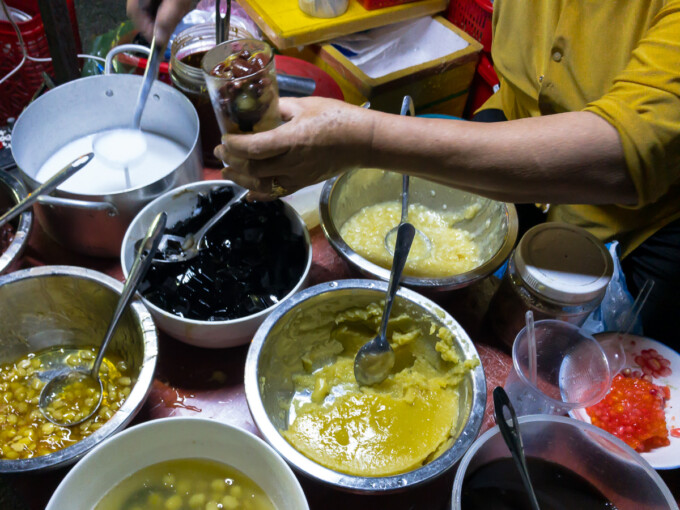
Once, in Vietnam, we were sitting waiting for our food at a street stall when we saw the cook tip some honey from a jar into the dish and then, before putting the lid back on the honey, she LICKED THE EDGE OF THE JAR to clean away the excess honey.
So gross and potentially virulent.
However, most street stalls are not run like this and we highly recommend you try at least some street food during your trip.
Here are a few safe ways to eat street food in Vietnam.
- Take a street food tour. These are run by pros who already know where the best stalls are and have already fed the same food to other tourists, so you know you’ll be safe.
- Look for stalls with long lines or crowds. If locals will spend extra time in line at a stall, you know that the food is not only clean, but delicious. Don’t forget to check who is in that line. A more diverse crowd, including women and children, indicates a better offering. While if it’s just a line of local workmen, they are probably not as picky with what they eat.
- Eat at local mealtimes. Vietnamese people eat early. Usually 7am for breakfast, 11am for lunch, and 6pm for dinner. If you’re eating street food, go at those times so you’ll get freshly prepared food.
- Bring your own cutlery. Often in Vietnam, while the food is great, the chopsticks are disgusting. Bring your own portable cutlery, like these ones we use , for cleaner street eating.
Are you vegan or vegetarian ? You don’t need to miss out in Vietnam! Just grab our guide to finding vegan food in Vietnam .
There’s not really a lot you have to watch out for in Vietnam. But there are a couple of things we recommend you avoid in Vietnam.
Avoid Mosquitos
If you’re a frequent reader of this blog, you’ll know that I almost died of malaria a couple of years ago. I’ve also had dengue fever a couple of times and so has Stephen. The good news is, we have never gotten mosquito-borne illnesses in Vietnam.
The bad news is, malaria and dengue fever do exist in Vietnam, along with Zika and Japanese Encephalitis. Wear your mosquito repellent and cover your arms and legs during the peak mosquito hours near dawn and dusk.

Avoid taxi scams
We don’t know why but all around the world, taxi drivers seem to take great pleasure in scamming their customers. They’ll either overcharge, pretend they don’t have change, or drive you around in circles to up the fare. To avoid this, we use Grab (a ride-hailing app) whenever we can.
If it’s not possible, then hop into a Mai Linh or Vinasun taxi which are reputable companies with (mostly) honest drivers. Whatever you choose, bring small change with you and always follow your route on the map so you can keep track of where you are and where you’re going.
Avoid bag snatching
Not a huge problem in Vietnam but bag or phone snatching does happen. It works like this. Motorbike driver sees unaware tourist dangling their camera, bag, or phone near the side of a busy street. Driver revs the engine, grabs the item, and drives away. Say goodbye to your stuff. You will never see it again.
To avoid this, either wear a backpack or cross-shoulder bag or carry your shoulder bag on the shoulder that’s away from the street. If you have to check your phone, don’t do it while walking. Instead, step into a doorway or corner away from the street to look.
Most Vietnamese people in tourist areas speak at least enough English that you will be able to get by without learning any Vietnamese. But where’s the fun in that?
Hello = xin chào ( sin chow ) Please = làm ơn ( lahm uhn ) Thank you = cảm ơn ( kahm uhn ) Yes = dạ ( ya ) No = không ( khohm ) I am vegetarian = tôi ăn chay ( toy ahn jai )
It’s very hard to pronounce phrases correctly but at least you’ll get a few smiles for trying!
When it comes to hostels and other inexpensive accommodation, Vietnam is the best country in Southeast Asia. Hostels tend to be of very high standard, staff are amazingly friendly and helpful, and you can get a comfy, safe bed for $5 or less per night!

It’s almost always worth spending a dollar or two more instead of getting the absolute cheapest bed you can find. A couple of dollars can take you from dingy cockroach-infested fleapits to a gorgeous boutique hostel with all the bells and whistles. Totally worth it!
- Hanoi: Nexy Hostel – Comfy full-privacy beds, plus great spaces for meeting people and hanging out.
- Hanoi: Old Quarter View – Spacious well-equipped rooms with lots of social spaces and daily free beer.
- Hoi An: Tribee Bana Heritage Hostel – Located right in Old Town, this hostel is famous for their amazing list of activities.
- Ho Chi Minh City: Prei Nokor – Small and extremely clean hostel, with comfy beds and perfect location.
- Ho Chi Minh City: The Art Nice to Home – Cozy and friendly, on a quiet street but centrally located.
- Phong Nha, Ninh Binh, Can Tho: Nguyen Shack – In three off-the-beaten path locations, Nguyen Shacks offer bargain beds in a beautiful setting.
Many backpackers to Vietnam make the huge mistake of trying to cover too much of the country in a single trip. Though it looks small on a map, Vietnam is deceptively huge and it can take a long time to get between destinations.
When planning your trip, stick to one or two regions and immerse yourself in the variety of activities available there. We want you to meet local people and get a chance to experience a few transformational activities! If you try to do too much, your memories of Vietnam will mostly be of long, uncomfortable bus journeys!
By planning more activities in fewer locations, you’ll get to see and experience the best of Vietnam.
We hope these tips for backpacking Vietnam are a huge help in planning and taking your trip. Our goal is to help you make every journey a transformational one, where you come back home a little different than when you left. If you have any questions about backpacking in Vietnam, give us a shout on Instagram or by email .
♥ Happy transformational travels, Jane & Stephen

Share With Your Friends
Get 101 travel tips.
Get our free ebook, 101 Travel Tips for Mindful Adventurers. It’s packed with our best tips for saving money, planning for travel, booking flights and accommodation, traveling sustainably, and staying on the road for longer! We ask for your email address so we can send you an email about once every month with our latest travel tips, destination advice, and personal stories about life on the road.
Thanks for joining My Five Acres.
Oops. Something went wrong. Please try again.
No spam ever. Your privacy is protected!
About Jane Mountain
Hi, I'm Jane, founder and chief blogger on My Five Acres. I've lived in six countries and have camped, biked, trekked, kayaked, and explored in 50! At My Five Acres, our mission is to inspire you to live your most adventurous life and help you to travel more and more mindfully.
Get Your Copy of How to Transform Your Life Through Travel!

About My Five Acres
Eight years ago, we sold our house and quit our jobs. Now we travel full-time and help others transform through travel.
We're here to help you find life-changing travel experiences that widen your perspective, challenge your beliefs, and shake you awake into your own life.
Find out how →
Useful Links
- Our Favourite Travel Tools
- Our Latest Blog Posts
- Press & Awards
- Privacy Policy & Disclaimers
Affiliate Disclosure
Search my five acres.
- Privacy Policy
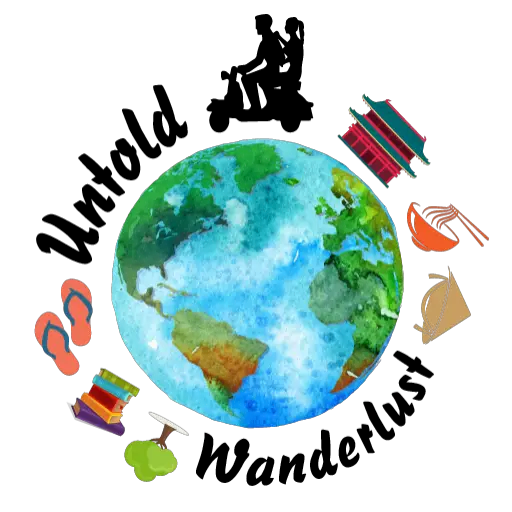
- Disclosure Policy
- Travel Tips
- 109 Genius Travel Hacks
- Teach Abroad
- Work With Us
Asia Guides
Vietnam itinerary 3 weeks | the most amazing things to do.
Here is the ultimate jam-packed Vietnam itinerary (3 weeks), filled with everything from the chaotic streets of Ho Chi Minh, and Hanoi, Vietnam’s deep history, and delicious food, to sailing on a junk boat through one of the world’s most pristine natural wonders; Ha Long Bay. This 3-week itinerary allows you to experience a bit of everything the country has to offer. P.s. for more information on travel in Vietnam, don’t miss this awesome Vietnam guide.
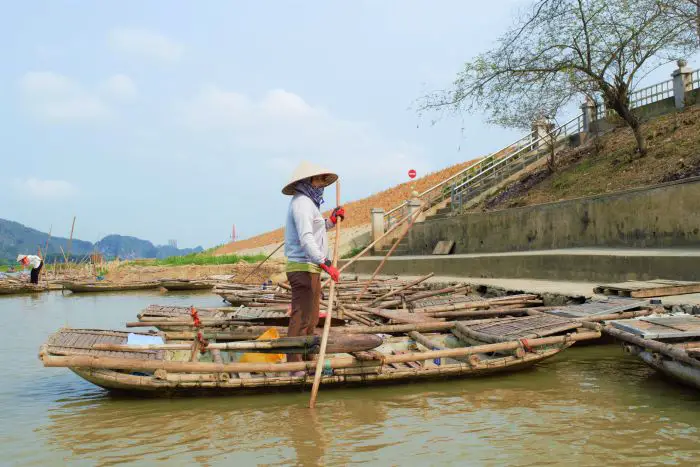
Disclosure: Untold Wanderlust contains affiliate links. If you click on these links and make a purchase, we will earn a small commission at no extra cost to you. You can find our full disclosure policy and privacy policy here.
How to spend 3 weeks in Vietnam
Before we begin this itinerary, if you’re strapped for time or want to take the stress out of navigating Vietnam by yourself, then consider taking a 30-day adventure tour ! You will see all the places on this itinerary and more.
3 days in Ho Chi Minh City – Vietnam itinerary 3 weeks
The first stop on this backpacking Vietnam itinerary (3 weeks), is Ho Chi Minh City, which is easy to reach by bus from Cambodia if you’re on a wider Southeast Asia itinerary. Note: Whilst this route starts in the south of the country, it’s also very easy to do the same route in reverse. So, without further ado, let’s kick-start this awesome itinerary.
Bui Vien is backpacker central! The main strip in Ho Chi Minh City is filled with bars, eateries and cheap dorm rooms. The strip is buzzing until the early hours of the morning with travellers from all over the world, who sit up chugging down cheap beers and tucking into local street food.
Mekong Delta
Book a trip to the Mekong Delta at one of the many tour shops along Bui Vien. Shops offer similar packages but shop around for the cheapest. The price of the tour depends on the size of the group and your length of stay. We recommend booking the cheapest 1-day option because you’re likely to receive the same experience. The average cost of a shared half-day tour ranges between 200,000 – 250,000 VND ($8.64 – $10.79) per person and includes lunch. However, if you really want to immerse yourself in Mekong Delta life, we recommend you book a private 3-day tour .
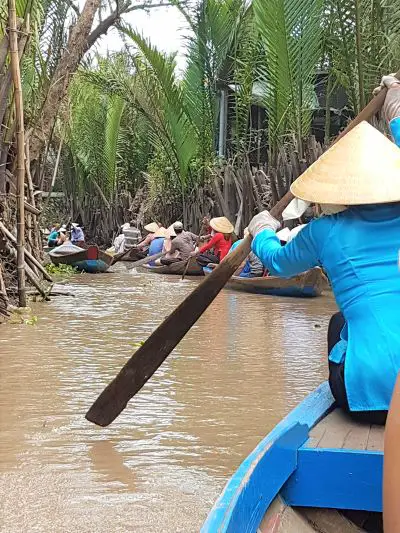
Cu Chi Tunnels
The Cu Chi Tunnels are a fascinating part of the Vietnam/ American War. A trip to the Cu Chi Tunnels will leave you with a better understanding of how guerrilla warfare enabled Vietnamese troops to defeat the American army. As with the Mekong Delta trip, we recommend booking a tour at one of the many tour shops along Bui Vien. Trips are as cheap as 120,000 VND ($5.18) per person for half-day tours. The cost of the trip includes transport, a guide, and your entrance fee into the Cu Chi Tunnels.
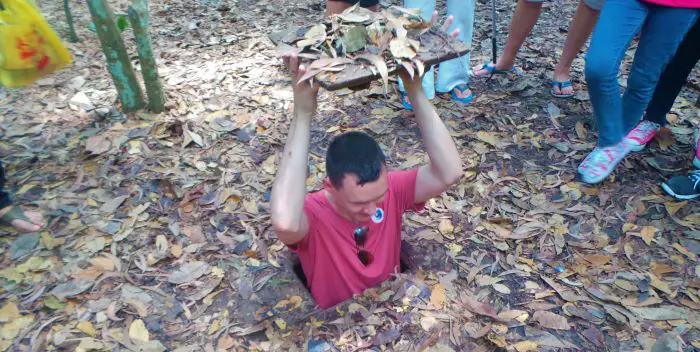
Ben Thanh market
Check out the massive market that is packed with all sorts of stuff, from clothes, coffee and typical Vietnamese gifts . You can spend hours here mooching around all of the stalls. Although, it can sometimes get frustrating when you are constantly being nagged by the vendors to ‘look’ or ‘buy something’. Don’t feel pressured, and just politely decline! It’s a good idea to scope out the prices of items first, so you know what items are worth and to help you avoid overpaying.

Saigon Notre-Dame & Post office
Visit the famous Notre Dame Church and old post office. Both attractions are located next to each other, so it makes sense to visit both at the same time. Both are FREE to enter. There are also some nice eateries nearby to grab lunch.
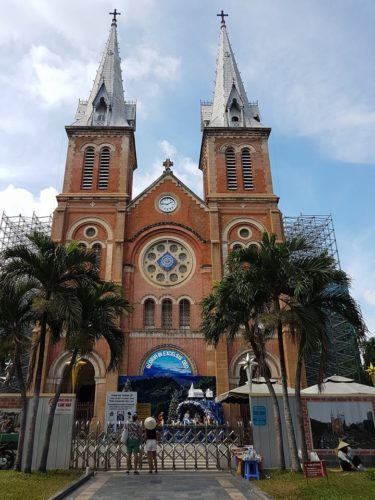
War Remnants Museum
The War Remnants Museum is not an easy place to visit for some people. However, it is most defiantly worth a visit to learn about the atrocities of the war. The cost to enter the museum is 10,000 VND ($.043) per person. To fully explore the 3-floor museum, it typically takes around 2 hours.
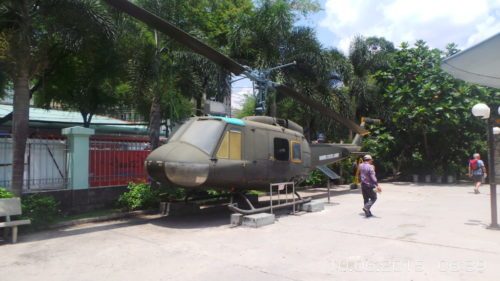
Dam Sen Water Park
The water park is located slightly out of the main tourist area but can easily be reached by taxi or local bus. The cost to enter the water park is just 110,000 VND ($4.75) for the day. The park has plenty of slides, a lazy river, a wave pool, and ordinary pools to relax.
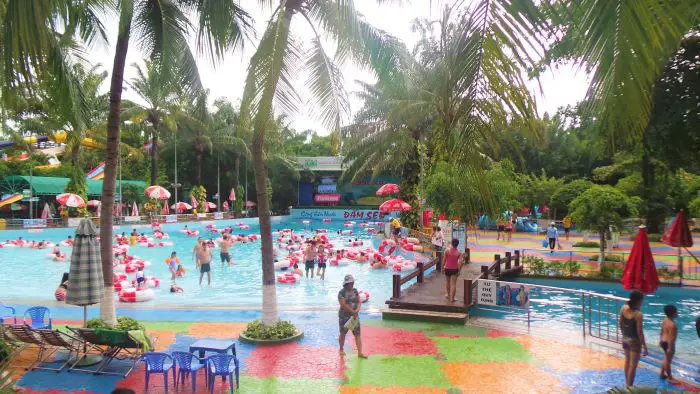
Bitexco tower
Bitexco Tower is an iconic building of HCMC, where you can admire the views of the city from up high. The cost to go to the sky deck is 200,000 VND ($8.64) per person. However, there is a café just a few floors below the sky deck, which is free to enter. The cost of a drink is more than what you would pay on the street (we paid 90,000 VND ($3.89) for a bottle of Tiger), but it’s half the price of entrance to the sky-deck, and you get a drink to admire the views with.
Where to stay in Ho Chi Minh City
Galaxy Capsule Hotel – Excellently located less than a minute’s walk from Bui Vien but tucked down a quiet alleyway for a good night’s sleep. The staff are extremely friendly and helpful. The rooms are new, modern and clean. You can book tours and bus tickets here as well.
3 days in Dalat – Vietnam itinerary 3 weeks
Trek through the jungle, abseil down a 25-foot waterfall before letting go to drop 5 meters in the water, jump from a cliff edge, and get your heart racing with tons more adrenaline-pumping activities. Tours can be booked from one of the many tour shops, or your accommodation. We booked a canyoning trip throughout the hostel, with a company called Viet Action Tours for 700,000 VND ($30.21) per person for the day. The cost included 2 professional guides, equipment, sandwiches and fruit for dinner. Warning : Always book with reputable companies and never attempt to do this by yourself!
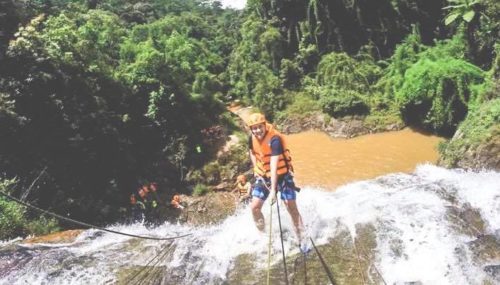
Crazy house
An artistic building filled with many corners and wacky stairs to explore. The Crazy House is worth a visit whilst in Dalat. The cost to enter is 40,000 VND ($1.73). Guests also have the option to stay overnight in one of the many themed rooms.
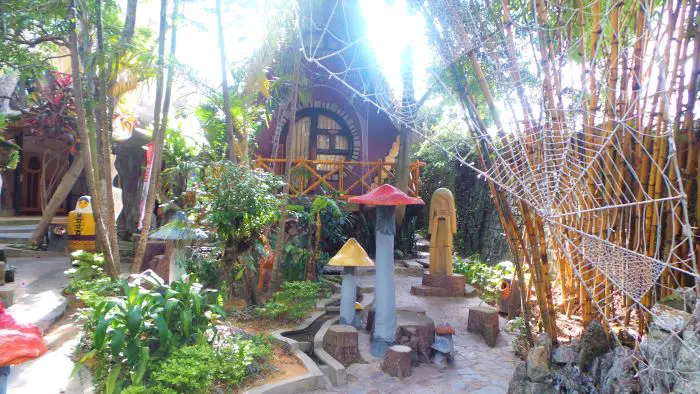
Romantic lake and more
Dalat is a beautiful place that is surrounded by a forest. Take some time to explore its surroundings and check out the lake, where many honeymooners go to relax.
For a more detailed guide on things to see and do in Dalat, check out our Dalat guide . Here you can find more details on prices, places to eat, accommodation, and more attractions. But here is just a quick list of what to expect in Dalat:
- Mountain drives
- Clay Tunnel
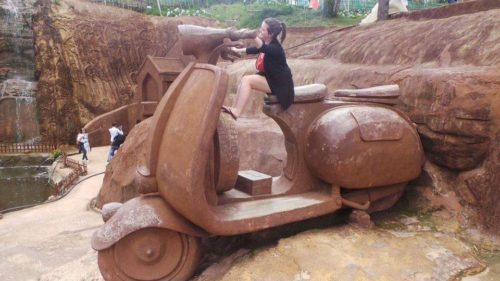
Where to stay in Dalat
Original Kens Backpacker Hostel – We stayed here the first time we visited Vietnam in 2015. The room was very clean, and the staff were extremely friendly and helpful. The hostel offered welcome food and breakfast each morning. A member of staff even took us on a free tour of her beautiful city, and we made a life-long friend.
Dalat Backpackers Hostel – On our most recent trip to Dalat, we stayed at Dalat Backpackers Hostel in a private double room, with a private bathroom. Whilst the room was basic, the bed was comfy, and the room was clean. The hostel staff were extremely friendly and very helpful in providing information. The hosts cooked us a very delicious meal on our first night, and we received breakfast and coffee each morning. The hostel also offers free pick up from the bus station; provided it’s after 6 am. The hostel is conveniently located just a 10-minute walk to the night market.
3 days in Nha Trang – Vietnam itinerary 3 weeks
Egg-mud baths.
After a whirlwind of time exploring Dalat and canyoning down waterfalls, you may be ready for some relaxing time. The egg-mud baths are a great way to do this. The baths are egg-shaped pods that are placed on top of a mountain. After relaxing in the mud for a while, there are hot tubs for you to continue to relax.
Prices vary depending on the package that you choose. We opted for the 300,000 VND ($12.95) per person package. This price package included a private egg pod and access to the two swimming pools and hot tubs. The egg mud baths are a little out of the main area, so you would either need to rent a motorbike or order a taxi. Taxis are cheap in Vietnam; just make sure the driver starts the meter.
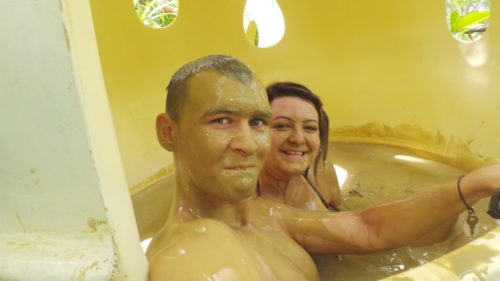
Snorkelling trip
Book a boat trip and spend the day admiring the sea and small surrounding islands. Now and then the boat will stop and allow you time to do some snorkelling. The cost of a large group trip is 260,000 VND ($11.22) per person. The cost includes the snorkelling gear and lunch on the boat. However, if you want to feel comfortable on your snorkelling trip, make sure to invest in some good quality water shoes , which will come in handy for any water activities or just simply lazing around at the beach.
Po Nagar Cham Towers
Po Nagar Cham Towers is a very old complex of temples that date back to the 12th century. They are located just outside of the main strip in Nha Trang and are amongst the best temples in Vietnam. The cost to enter is just 22,000 VND ($0.95).
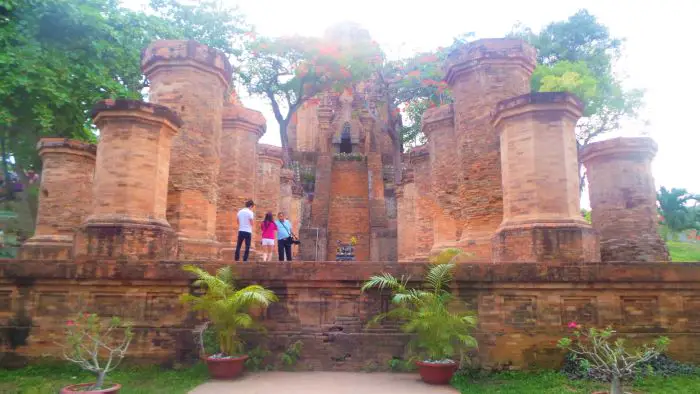
Where to stay in Nha Trang
Mojzo Inn – This accommodation boasts large, modern and clean rooms that are well-equipped with everything you need! The hotel offers both dorm rooms and private rooms, depending on your needs. They also offer bicycle rental and ticketing services.
4 days in Hoi An – Vietnam itinerary 3 weeks
Explore the ancient town by bicycle.
Hoi An is probably going to be your favourite destination on this 3-week Vietnam itinerary. Motorbikes and cars are banned from entering Hoi An Old Town. Instead, rent a bicycle and roll around the romantic town, filled with old narrow streets and lanterns. You can rent a bicycle for the day from one of the rental shops or your accommodation. Bicycle rental typically costs 20,000 VND ($0.86) per bike for 24 hours.
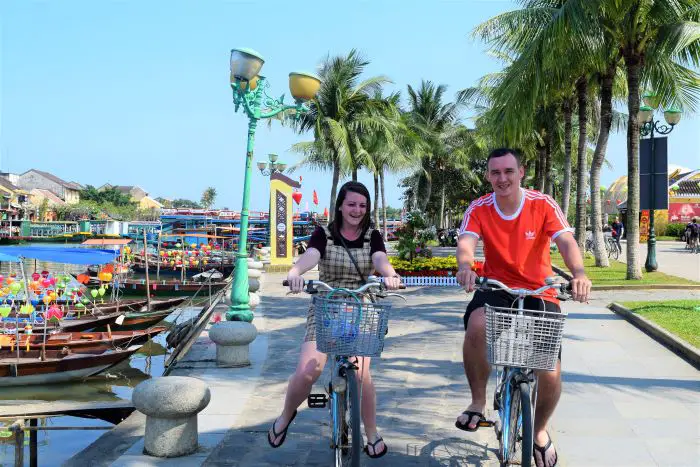
Cooking tour
The cooking tour starts with a trip to the local market to pick up fresh food. You will then board a bus towards the rowboats that will take you to a private island. You will be allowed to cook some of Vietnam’s most popular dishes throughout the day. Expect to try your hand at fresh spring rolls for starters, and a steaming hot bowl of Pho for the mains.
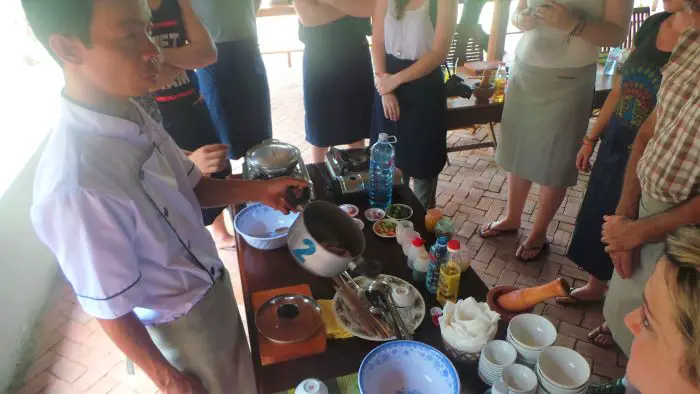
Admire the lanterns at night
Hoi An is well-known for its pretty lanterns and festivals that are held every Lunar month. The river and streets look so magical when the lanterns are lit during the evening. If you fall in love with the lanterns, you can always pick up a few of your own from one of the market stalls.
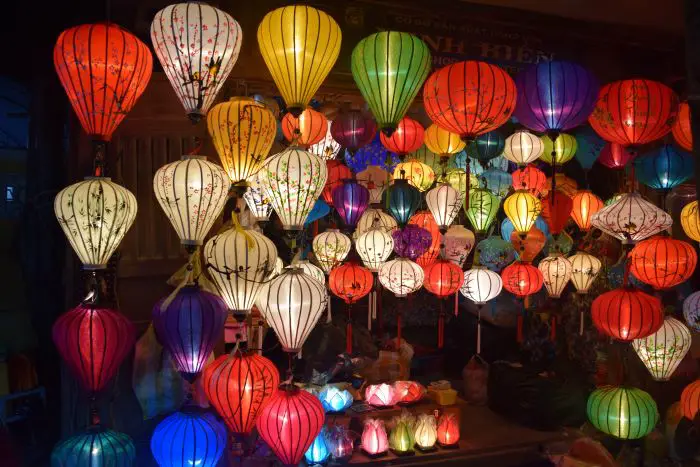
Take a trip to Danang and Ba Na Hills
Hoi An is just a short drive away from Danang City, and Vietnam’s newest development, Ba Na Hills . Ba Na Hills is a new French-inspired resort that is home to the famous Golden Hand Bridge, You can easily spend an entire day here admiring the architecture and playing games in the arcade. To get there from Hoi An, you can drive yourself by motorbike or join one of the day tours.
Find a more in-depth Hoi An itinerary here !
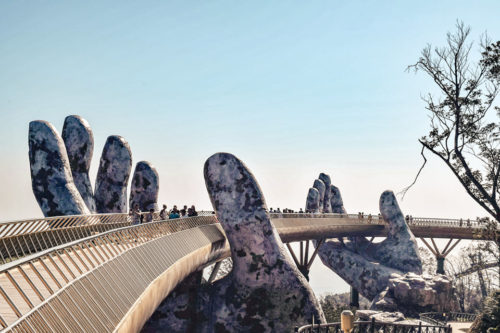
Where to stay in Hoi An
Aroma Homestay & Spa – The best area to stay in Hoi An for those on a budget is on Tran Cao Van Street. We recommend Aroma Homestay & Spa. The homestay is in a great location, surrounded by shops and eateries, and only 1 km from Hoi An Old Town. It offers modern and clean private rooms. The beds are comfortable and the staff at the homestay are welcoming and helpful. Great value for money!
2 days in Hue – Vietnam itinerary 3 weeks
Old citadel.
Hue is the former capital of Vietnam and is home to the Old Citadel; the most famous attraction in Hue. The gardens are beautiful and there are plenty of archways and designs that you should take note of as you walk around the grounds. The entrance fee is 150,000 VND ($6.47).
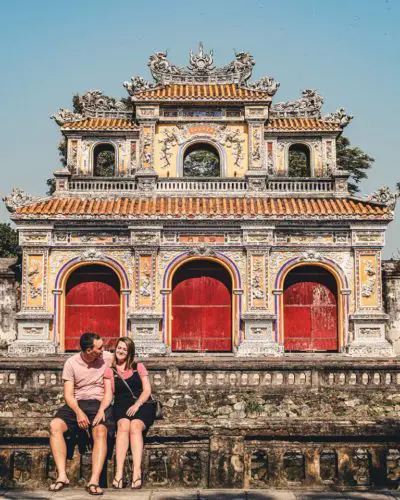
Abandoned water park
The water park closed in 2004 and has since become an attraction for visitors. The main recognisable feature is the huge dragon in the middle of the lake that is starting to decay and become discoloured. Whilst you cannot ‘officially’ enter the water park, there are ways to enter !

Where to stay in Hue
Bon Ami Hostel – Excellent location! Down a quiet alley for a good night’s sleep, but within 1-minute walking distance to plenty of bars and eateries. The beds are comfy, and the rooms are very clean, making it great value for money. The staff members are also very attentive.
2 days in Ha Long Bay – Vietnam itinerary 3 weeks
Ha Long Bay is a UNESCO world heritage site that is famous for its thousands of limestone islands surrounded by emerald waters. A 2-day trip to Ha Long Bay is an absolute must and should not be missed on this backpacking Vietnam itinerary (3 weeks).
Overnight tours can be booked from one of the many tour companies or your accommodation in Hanoi. Alternatively, you can easily pre-book a tour beforehand for peace of mind. The price of the package varies depending on the luxuriousness of the boat. Being the budget backpackers we are, we opted for the cheapest option. Unfortunately, the food with this option wasn’t great and we barely ate for 2 days. So, don’t get caught out like us. Make sure to do your research beforehand.
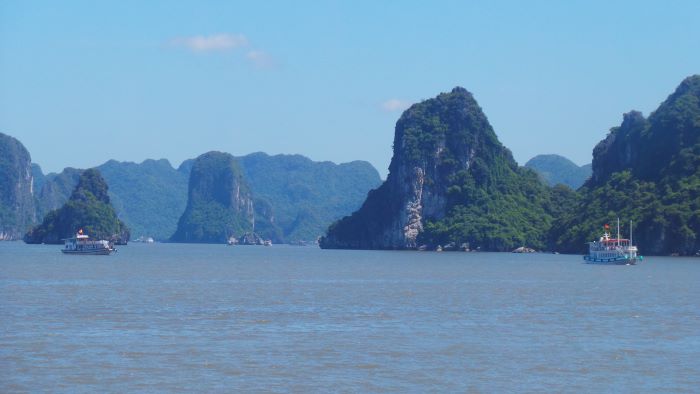
3 days in Hanoi – Vietnam itinerary 3 weeks
Hoan kiem lake.
Hoan Kiem Lake is a large lake in the centre of Hanoi, that is home to Turtle Tower. The area is a major scenic spot and a nice place to relax. In the daytime, you can stroll around and admire the scenery. By night it’s one of the best things to do in Hanoi during the evening , and the road is completely shut off to vehicles. You will find young locals showing off their talents in the form of dances, singing, skipping and more. After a walk around Hoan Kiem Lake, finish your evening with a few cheap beers over on Beer Street . Beers are just 5,000 vnd ($0.21) per cup so it makes for a great cheap night out.
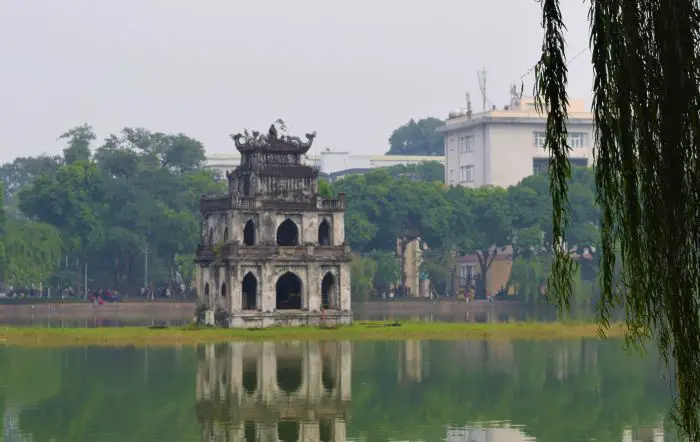
Hoa Lo Prison
Hoa Lo Prison is an interesting and educational experience. At the ex-prison, you can learn about the prisoners of war and what life was like for them. The cost to enter is 20,000 VND ($0.86) per person.
St. Joseph’s Cathedral
St Joseph’s Cathedral was built in 1886 and is still in use today. You will find this French-influenced-style building on Nha Tho Street. The area is great to hang out and to do a spot of shopping too.
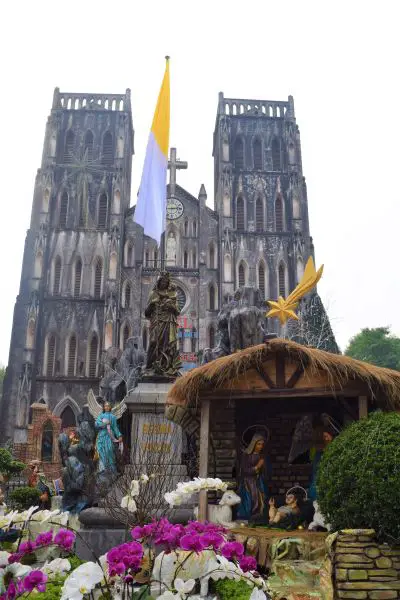
Bargain hunt at Hanoi Night Market
Fancy a spot for cheap shopping? Don’t miss the Hanoi Night Market , located on Hang Dao Street. Vendors turn out in their thousands to sell all kinds of products, from cheap elephant pants, funky fruit outfits, cheap sports gear, electronics, Vietnamese trinkets, paintings, embroidery, and more. Even if you don’t plan to splash the cash, the market is well worth a walkthrough for the chaotic atmosphere alone.
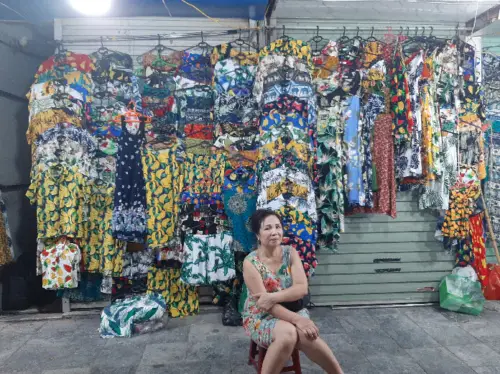
Drink egg coffee at The Note Coffee
If you’re feeling thirsty whilst exploring Hanoi, make sure to call at The Note Coffee . This coffee shop is no ordinary coffee shop! It has a unique twist, with hundreds of thousands of notes handcrafted by visitors from all over the world. Not to mention, the drinks are utterly delicious.
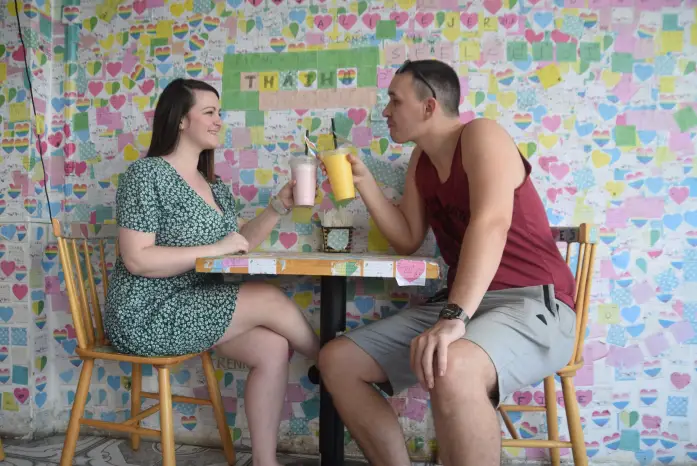
Are you ready for some beach time? Take a flight back South to Phu Quoc Island for some fun-filled island time. Or, are you more of a nature lover? the journey from Hanoi to Ninh Binh is only 2 hours and you’re sure to get your nature fix.
Where to stay in Hanoi
Nexy Hostel – A relatively new funky hostel that is in an excellent location; just 500 meters from Hoan Kiem Lake. The rooms are modern, clean and cosy. The hostel has both dorm rooms and private rooms, making it perfect for couples on a budget and for solo travellers who want to meet other people in the bar area.
Costs of this Vietnam itinerary (3 weeks)
Currency: The currency is the Vietnamese Dong. The exchange rate is 23,000 VND to $ 1.
Daily budget: To complete this Vietnam 3-week itinerary, we recommend a backpacker’s daily budget of around 600,000 VND ($26). This should cover the cost of a cheap dorm bed, street food and all of the activities mentioned.
Accommodation: Private double rooms with a bathroom average 300,000 VND ($12.95) per night. Dorm rooms range from 150,000 – 250,000 VND ($6.48 – $10.79).
Food and drink: Food and drink are extremely cheap. Local street food costs between 30,000 – 60,0000 VND ($1.30 – $2.60). Local beer can be found for as cheap as 5,000 VND ($0.22) at the Bia Hoi places on the street. In bars, the typical cost of a beer is 35,000 VND ($1.51).
Transport: Transport around Vietnam is relatively cheap. There is a hop-on-hop-off bus service that can take you from Ho Chi Minh to Hanoi or vice versa. The open bus ticket costs 950,000 VND ($41), and you can stop at any of the hot spots along the way. Alternatively, you can book all of your transport online through Bookaway . There’s no need to go to a tour shop, just find your route and receive the ticket directly to your phone.
Motorbike rental: The cost of motorbike rental averages 100,000 VND ($4.32) per day.
For a more detailed post on the cost of travelling to Vietnam check out this post !
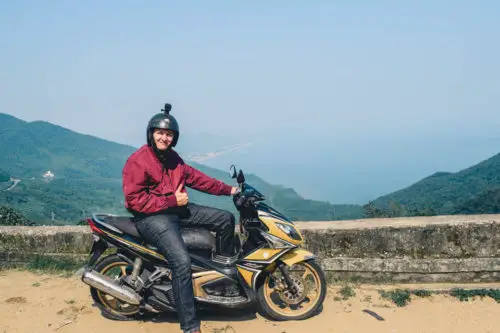
Backpacking Vietnam travel tips
Always agree on a price – Like when backpacking anywhere in Southeast Asia , always agree and be clear on the price before you receive the service. Make sure you communicate the exact amount you will pay and agree on what you will get in return. We got caught out by a driver who offered to take us on a tour around Ho Chi Minh City. The driver told us to “pay what we think is fair”. At the end of the trip, he demanded 4 million Dong. Luckily for us, our hotel staff kindly resolved the issue and in the end, we paid a fair price.
Use Grab – To get around the towns or cities, use a Grab bike or car. Grab is a taxi system like Uber. You enter your location and your drop-off point, you will then see the fare before your trip begins. You can pay in cash when your journey is complete. Since living in Vietnam, we use Grab daily and have never had any issues. The cost is extremely cheap and is often cheaper than using a Vinasun taxi.
Market barter – When shopping around the markets, don’t be afraid to barter at a lower price. Outside of the tourist areas, the same item will cost 1/3 of the price.
Be careful with your Dong notes – Some of the small notes and big notes are similar in colour. For example, a 20,000 VND ($0.86) note is the same colour as a 500,000 VND ($21.59). Pay careful attention to the number on them, or you could end up massively overpaying.
Be an adventurous foodie – Vietnam, arguably, has the best cuisine in Southeast Asia (if not Asia). The food is truly delicious, so don’t be afraid to try new things. If you hold back, you will miss out on some mouth-watering flavours. Here is a quick guide to some of the best Vietnamese dishes in Saigon .
Make sure to pack essential items – Depending on the time of year, the weather in the south of Vietnam can be very different from that in the north. The south of Vietnam is scorching all year round, whilst the north can get very cold in winter. So, don’t forget to bring along some warm clothing! For more tips on what to pack click here.
What to wear – Speaking of packing, you may be worried about the dress code in Vietnam. Don’t let that stress you out though, just check out this dress code in Vietnam post to help you out.
These are just some of the top Vietnam travel tips. For a more detailed Vietnam travel tips post make sure to click here to find 31 of them !
Essential resources for travelling in Vietnam
Travel Insurance – No matter where you’re travelling to, it’s a good idea to make sure you’re covered for any accidents or losses. We spent days and weeks searching for insurance, but most insurers would not allow us to take out a policy as we were already abroad. Our personal choice is Safteywing . You can opt for automatic monthly payments, just like a subscription. More importantly, it is available in 180 countries and can be purchased whilst already travelling. There is no cap on the duration of travel.
Visa – Before you travel to any country, make sure to check if you need a visa. iVisa is a fantastic website that is super easy and quick to use. Just type in where you are from. and where you are going. to check if you need a visa. If you do, you can quickly make an application online.
Accommodation – Booking.com is our go-to when looking to pre-book accommodation online. Booking.com tend to almost always have the best rates and a FREE cancellation policy for most properties.
Overland transport – Our go-to website for overland transport is Bookaway . Bookaway offers multiple forms of transport, from buses, mini-vans, trains, and ferries. The routes on offer are extensive and certainly cover most of the backpacker trails. Bookaway works a little like Skyscanner but for overland transport. You will find plenty of transport options from a range of companies. All you simply need to do is book online and receive your ticket by email. The email will contain essential information, such as where the bus leaves from and departure and arrival times.
Tours & Activities – If you want to book tours and activities online, make sure to check out Get Your Guide . Get Your Guide takes the stress out of booking activities abroad. You will also find a range of benefits, such as skip-the-line passes, lunch included in your tours, and so much more.
Travel tips ebook -Before you head off on your adventure, make sure to download our free ebook. It has a whopping 109 budget travel tips to help you make your hard-earned cash go further. Click here to download your FREE ebook.
We hope you enjoyed this backpacking Vietnam itinerary (3 weeks). Of course, it does not cover everything, but it is a great start for first-timers, and we believe it will allow you to experience a mix of city life, nature and culture. Let us know if you have any questions in the comment section below.
Where to next? Maybe you’re on the banana backpacking trail and your next stop is Cambodia! Check out our full backpacking Cambodia itinerary to get you started.
Like this post? Pin it!
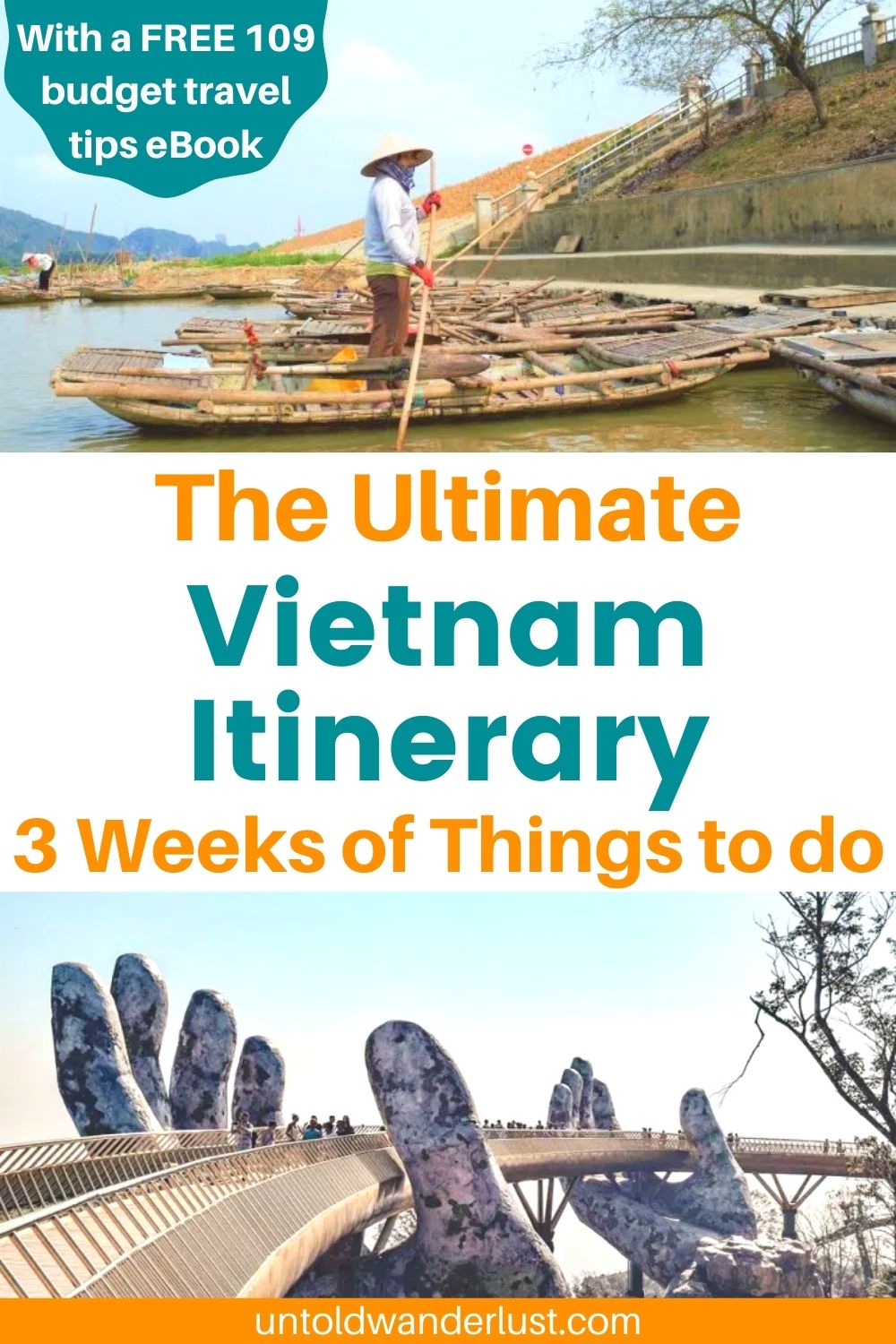
Leave a Reply Cancel reply
You must be logged in to post a comment.
This site uses Akismet to reduce spam. Learn how your comment data is processed .


How to Plan the Perfect Vietnam Itinerary (2-3 Weeks)
By: Author Taylor Lorenz
Posted on Last updated: 10/25/2023
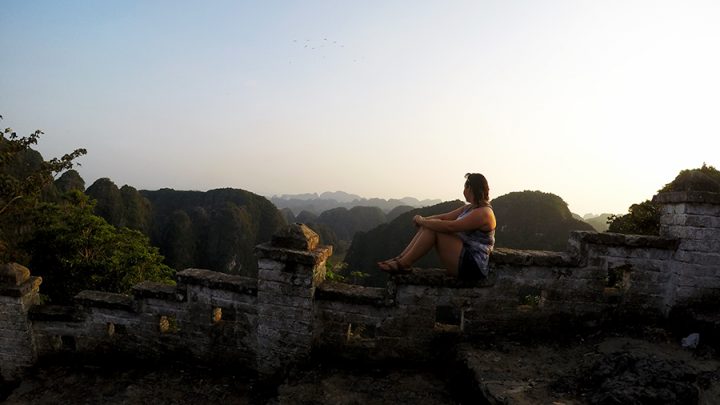
If you’re a backpacker or crave a little luxury while immersing yourself in culture, then Vietnam is for you. Vietnam is one of your best choices because the country is easily one of the most budget-friendly in the world making your luxurious vacation possible.
But with so much to see and do how do you even begin to plan traveling through Vietnam? Luckily Vietnam caters to tourists in many ways.
It’s a breeze to travel either by bus, train, or by motorbike, it’s relatively easy to communicate, and everyone travels on the same path so it’s easy to make friends (either north to south or south to north).
My best advice is to make sure you give yourself enough time to see all of the country. I’d say a minimum of 2 weeks, but even that makes for a tight schedule so I’d follow my Vietnam 3-week itinerary instructions below.
It’s easy to get a month-long Vietnam visa so I recommend getting one and being able to extend your stay if you need to (as you’ll probably want to!).
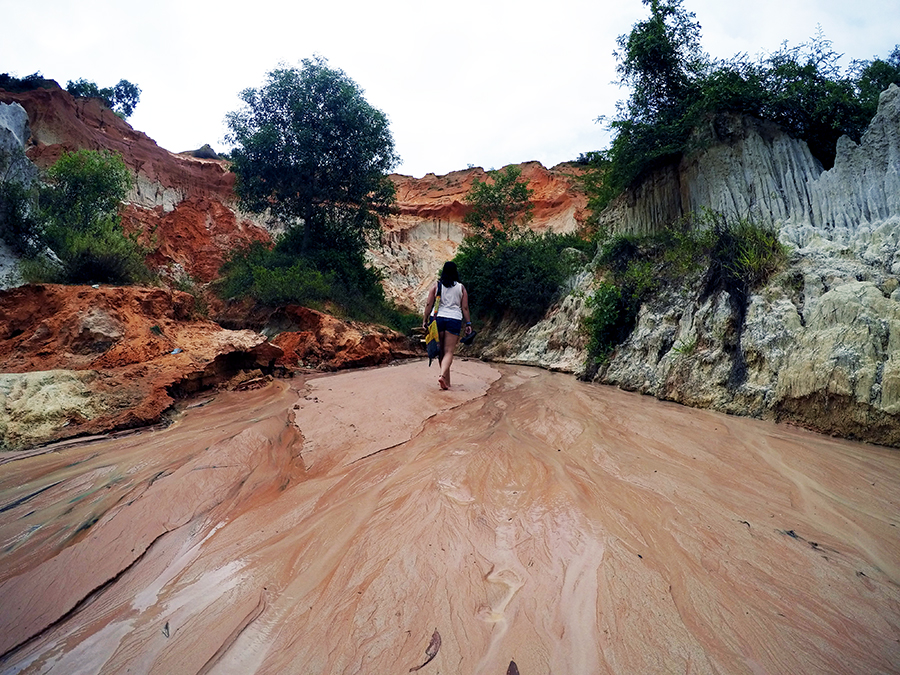
Table of Contents
Vietnam Fast Facts
Currency: Vietnamese dong Language: Vietnamese Population: 96.5 million Religion: Buddhist is the majority
Now that you know all of the budget tips, here’s a rough backpacking Vietnam itinerary; what places to visit in Vietnam, for how long, and what things to do in Vietnam! Keep in mind this is a rough guide to give you an idea of how much time to spend in each place.
Vietnam Itinerary
Now it’s time to figure out where to go in Vietnam. This Vietnam route covers all of the best places to visit in Vietnam and what to see in Vietnam but there are definitely some other areas worth checking out too. This Vietnam travel guide covers the basics so you won’t miss the good stuff.
Recommended Vietnam Tours
- Vietnam Express Northbound – 10 days
- Vietnam Intro – 12 days
- Vietnam Experience – 12 days, read my review of Contiki tours
Vietnam Itineraries by Length
2 weeks in Vietnam
- Hanoi (2 days)
- Sapa (2 days)
- Halong Bay (2 days)
- Hue (2 days)
- Hoi An (2 days)
- Mui Ne (1 day)
- Ho Chi Minh (3 days)
3 weeks in Vietnam
- Halong Bay (3 days)
- Ninh Binh (1 day)
- Hoi An (3 days)
- Nha Trang (3 days)
- Mui Ne (2 days)
How this Vietnam backpacking guide works: If you wish to spend 2 weeks in Vietnam choose the minimum amount of days for each destination. If you want a Vietnam 3-week itinerary choose the maximum amount of days. This itinerary moves north to south, it can easily be done in reverse.
Daily Breakdown of My Vietnam Trip Itinerary
Hanoi: 2 days.
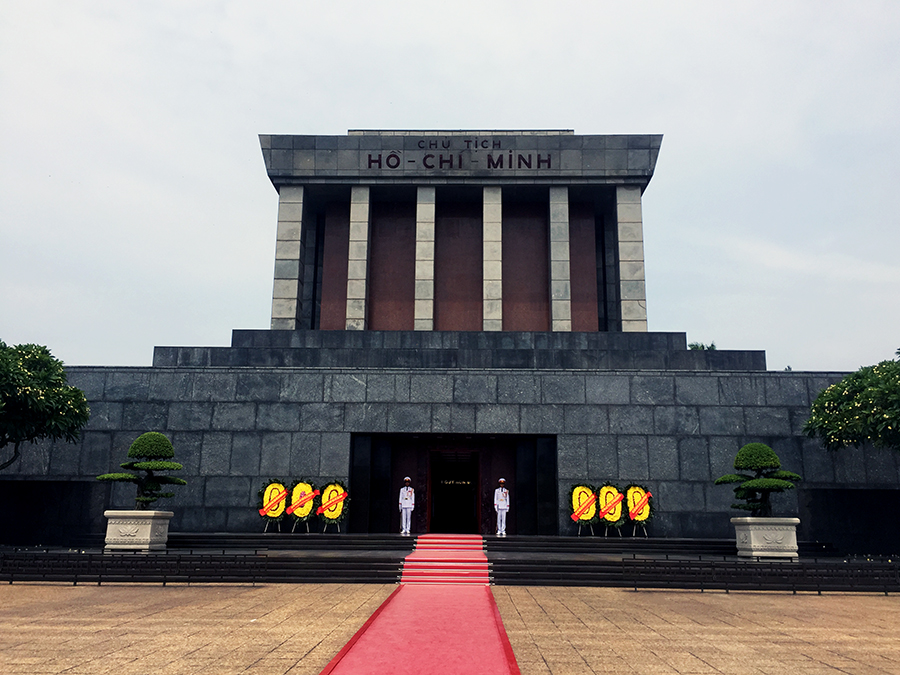
DAY ONE: Start to orient yourself in this hectic city by exploring the streets. You’re bound to find something cool. Visit the Old Quarter to take a step back in time with the French colonial buildings that stand between the merchants selling all sorts of random things.
Take a peek at the Women’s Museum to understand more about the women’s role in the Vietnamese culture and make sure you find a spot to try some egg coffee.
DAY TWO: Get out early and head straight to the Ho Chi Minh Mausoleum . It’s quite interesting to see how they’ve preserved Ho Chi Minh’s body and all the grand facilities. It closes early (approx. 12PM) so be sure to line up early and double check the times.
From there you can visit the Vietnam Museum of Ethnology and/or the Ho Chi Minh Museum which are both close to the Mausoleum. Then spend the afternoon on a street food tour of the city.
READ MORE: What to do in Hanoi & Where to Stay in Hanoi
Sapa: 2 Days
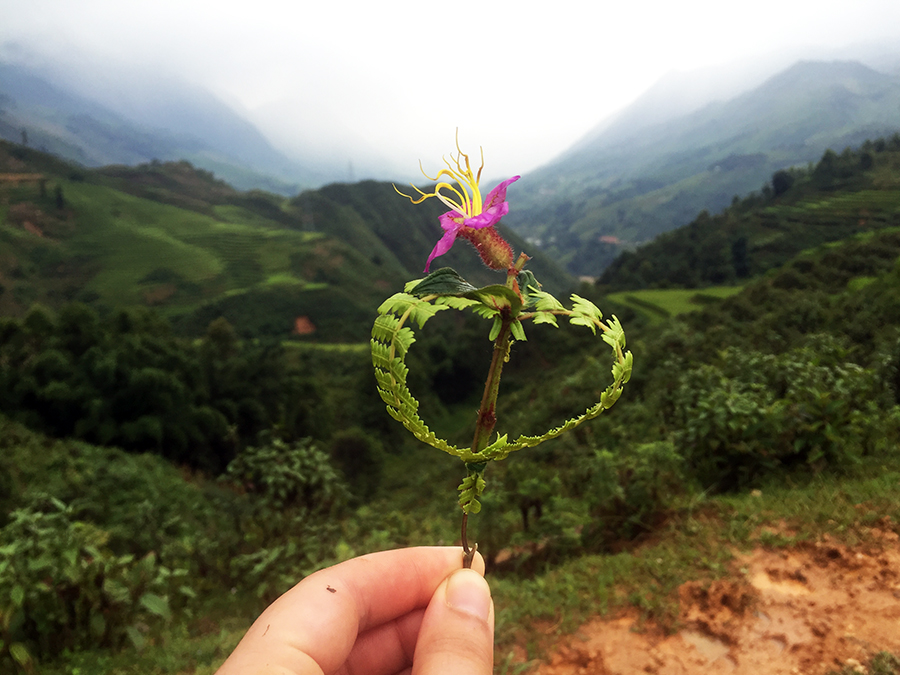
Sapa is one of the best places to see in Vietnam. And it is the place in Vietnam for trekking. You can either book a 2-3 day tour through a company that will include your buses to Sapa and back to Hanoi that includes your trek leaders, homestay, and food. Or you can choose to do it on your own . Plenty of backpackers stay at homestays so you’re bound to find someone to go trekking with if you’re solo.
READ MORE: Trekking in Sapa: The Good, The Bad and the Landslides
Halong Bay: 2-3 Days
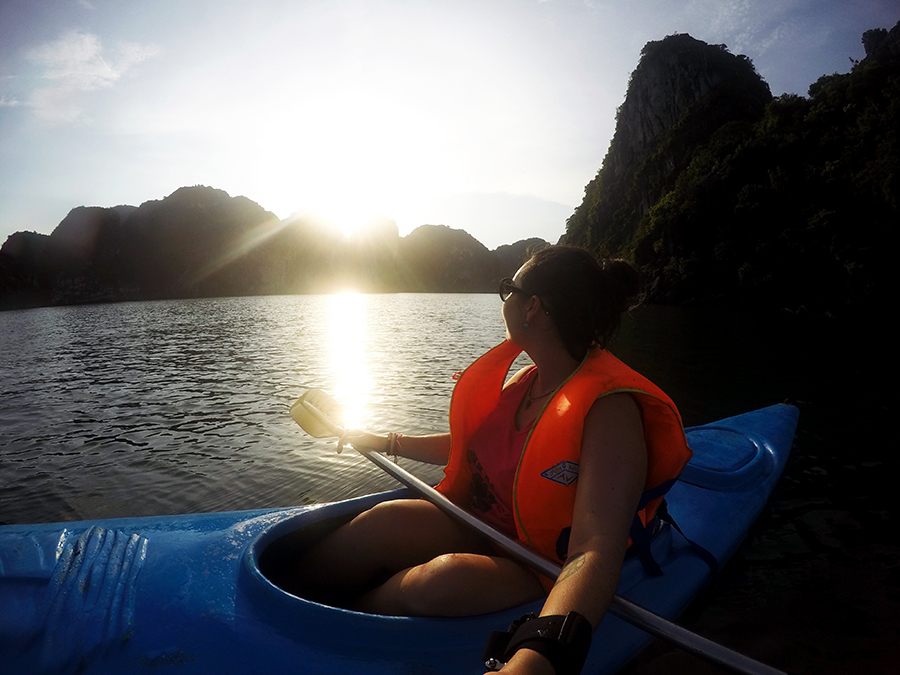
Halong Bay is definitely some of the best of Vietnam. Most tours and buses will use Hanoi as their start and end point, so if you choose to do Sapa and Halong Bay (which I highly recommend) then you’ll come back to Hanoi in between for a night.
The majority of people choose to do a tour for Halong Bay (there are literally hundreds) that are either 2-3 days long. Or you can do it on your own. Most people who do it on their own will head to Cat Ba island which is the largest island in the area. Many tours include a stop at Cat Ba, but not all.
Tours can include either sleeping on the boat, on an island or both. They can include activities such as kayaking, cliff jumping, hiking and more. Though most are pretty much the same it’s best to go with a recommendation.
The one advertised in Central Backpackers has good feedback and by-far the most popular for backpackers is the Castaway tour. It has stellar reviews but is definitely for people who like to party and it’s not the most budget-friendly. But if you’re going to splurge while in Vietnam, Halong Bay is the place to do it!
Ninh Binh: 1 Day
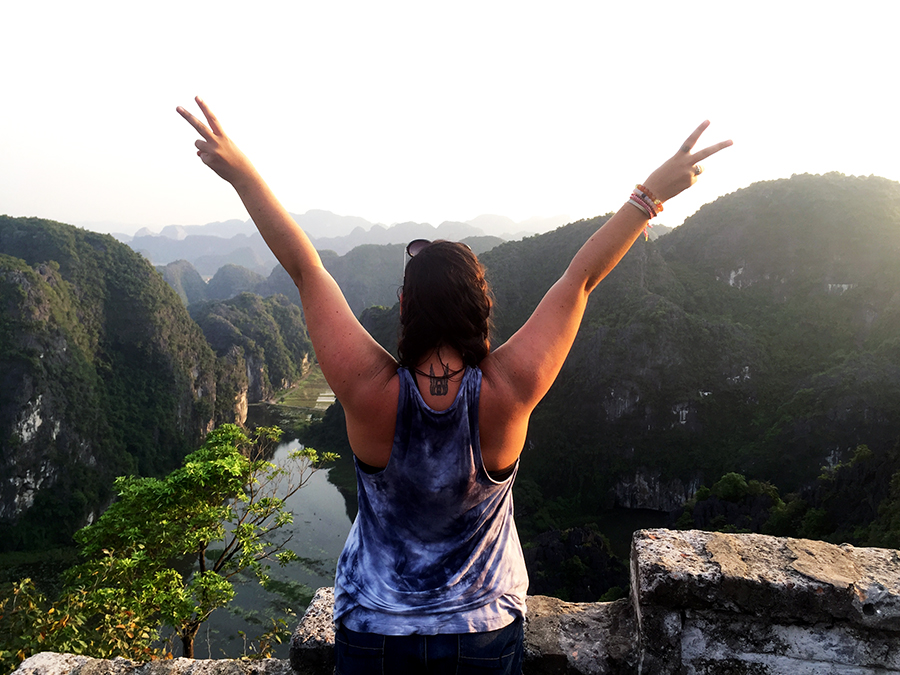
My best advice for Ninh Binh is to get in and get out. Though it is beautiful and referred to as the Halong Bay on land, there is not much to do and you can do it all in one day. Stay in the Tam Coc area as it is the closest to all of the major attractions.
DAY NINE: Before it gets too hot jump on a boat and ride through Tam Coc to see all of the limestone formations and caves. Close by is Bich Dong pagoda, which is not spectacular, but interesting to see.
And lastly take a walk up the 500 steps to the top of the mountain to admire the limestone formations from above. Trust me, it’s worth the walk up!
Hue: 2 Days
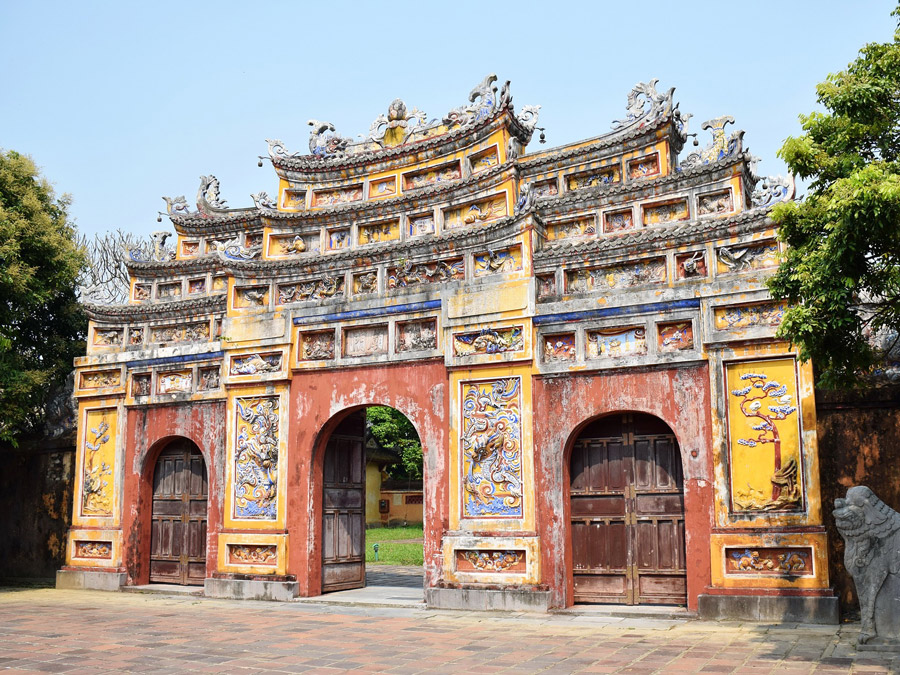
Though Hue can be done in a day, it can be exhausting to take two nights buses back to back. So either get through quickly or take an extra day to leisurely explore Hue.
DAY 10: In the morning explore the citadel . It’s a lot of walking so be prepared for the heat. In the afternoon rent a scooter and head to the abandoned waterpark for Instagram-worthy pictures.
DAY 11: There are seven tombs around the countryside that you’re able to go take a peek at. They’re where some of the rulers from the Nguyen Dynasty lie. Then head over to Thien Mu Pagoda for a bit more history. It’s still regarded as a holy site that has many monks visiting every day.
And lastly check out the Dong Ba markets to get a taste of the local culture.
Hoi An: 2-3 Days
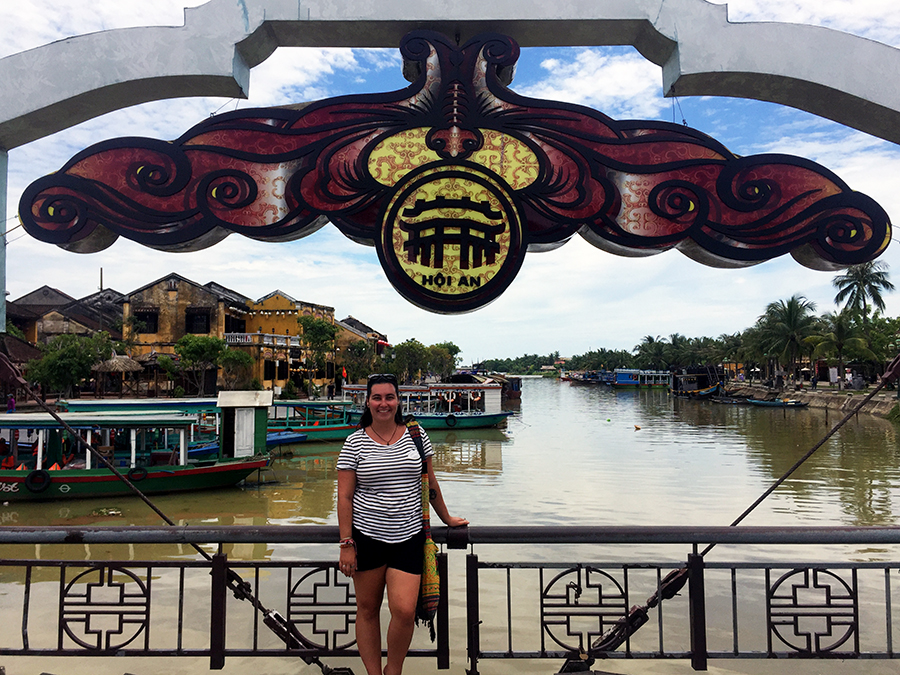
Hoi An is often called the Venice of Asia because of the river that runs through the city and all of the historical sites. Its got more of a small town than city feel and is famous for having anything tailor-made for you.
DAY 12: Take the morning to get yourself oriented in town and start getting ideas of what you want made. It’s best to browse through the shops to see what they can make, though the tailors can make virtually anything.
If you need to move on quickly then go to a shop for a fitting as sometimes they need 2-3 fittings to get your piece exactly as you want it. You can then spend the afternoon lounging on one of Hoi An’s beaches that lie just outside of town.
DAY 13: This day you’ll have to head back to any fitting’s that you may have. Before or after you can roam the streets some more and visit any of the historical sites that interest you. You need to purchase a ticket to see these sites.
During the evening make your way to see a traditional Vietnamese water puppet show. It sounds funny, but it was actually quite entertaining. Tickets can be bought in town the day of the show.
DAY 14: Finish up any fittings you may have left. Take a cooking class in Hoi An because they have some unique dishes that are only made in this area of Vietnam and are some of the best dishes in the country.
On your last evening spend time walking by the river to see the lanterns and to explore the food and shopping markets in the area.
READ MORE: 11 Things to do in Hoi An, Vietnam and Where to Stay in Hoi An (The Best Hotels and Hostels)
Nha Trang: 2-3 Days
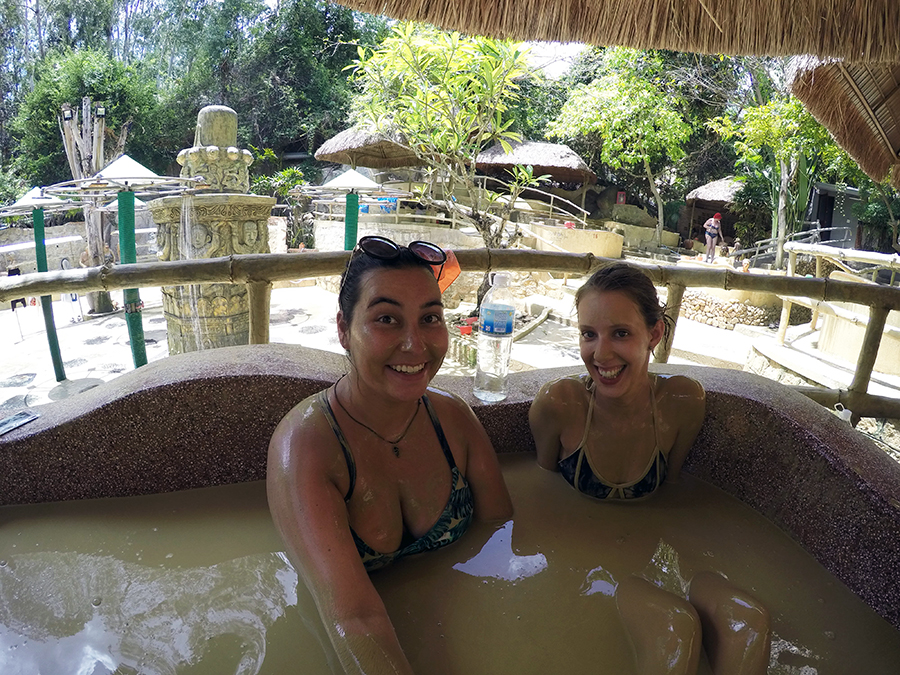
Though Nha Trang is known as the place where all the Russian tourists go in Vietnam, there’s good reason why they go: Vietnam beaches. It’s the perfect spot to rest up and enjoy some quality beach time before tackling the south of the country.
DAY 15: Enjoy the beach! Trust me, you’ll be tired after arriving on an overnight bus at 4 AM. At night head to Skylight to par-tay. Its got a seriously great 360 degree view and the drinks are worth the price. They’re delicious!
Warning: the party may not start right away, but it will end up a good time with everyone dancing. Pro tip: If you’re used to strong drinks make sure you ask for it, drinks in Vietnam are made weaker than western standards!
DAY 16: Embrace the inner kid in you and go to Vin Pearl. It’s a water and theme park in one. It is a pricier day, but it’s well worth it. Head in early to avoid line-ups and go to the water park first, everyone will go there in the afternoon and it gets packed but in the morning almost no one is there.
DAY 17: After a day of acting like a child and playing you can take some time to enjoy the spa. Head to one of the famous mud spa’s and leave feeling refreshed and cleansed. It’s a four step process and after you can relax by the pool. There are multiple spas to choose from, I arranged one with a pick-up and drop-off through the recommended hostel below.
READ MORE: 9 Things to do in Nha Trang and Where to Stay in Nha Trang
Mui Ne: 1 Day
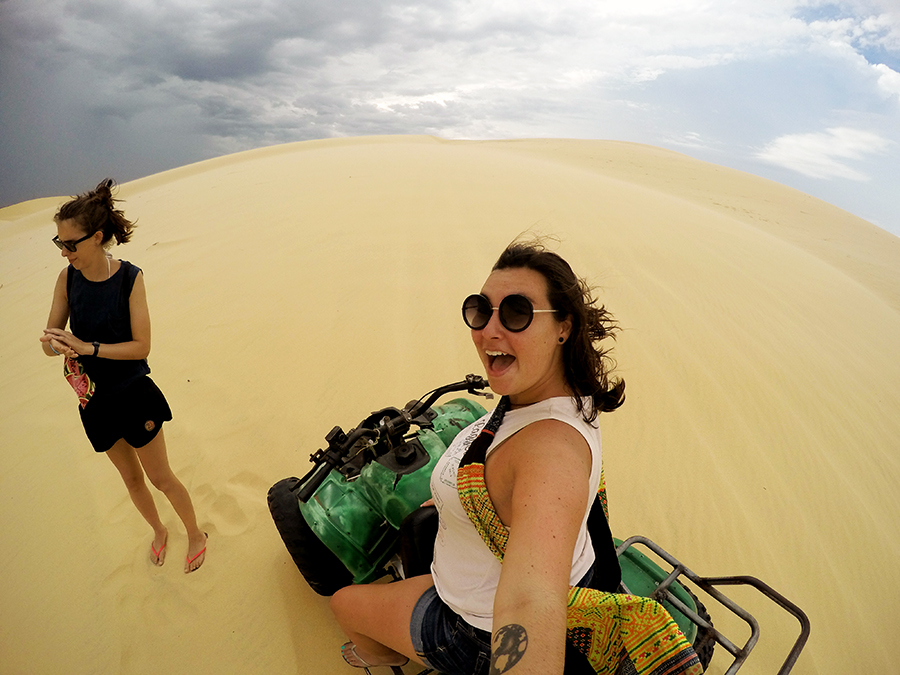
DAY 18: Mui Ne can easily be done in a day. Spend the morning lounging at the pool at the hostel I recommend below then go on a tour of the red and white sand dunes and the fairy stream. You can head out that evening on another night bus to your last destination.
READ MORE: 8 Epic Things to do in Mui Ne & Where to Stay in Mui Ne
Ho Chi Minh: 2-3 Days
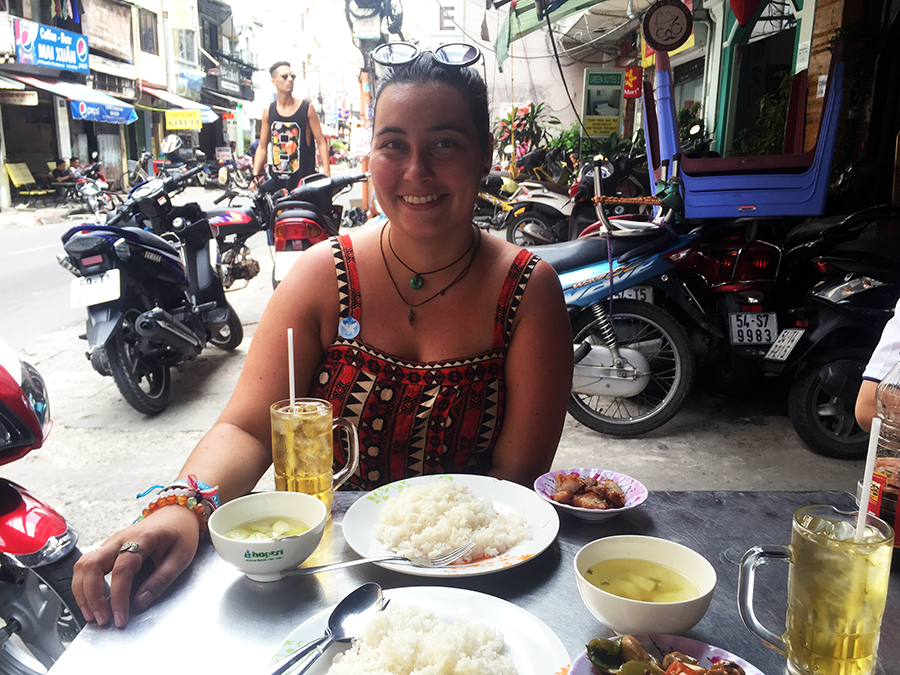
Ho Chi Minh is more often referred to as Saigon, its original name that is preferred by the locals.
DAY 19: Arrive in Ho Chi Minh and prepare yourself for a somewhat somber day. Ho Chi Minh is full of war history that’s both interesting and good to know.
First, you can head to the War Remnants Museum to learn about the Vietnam war. Secondly, check out the Independence Palace to be taken back to the 70’s that served as a government building during the war. And lastly, you should see the Bến Thành Market for some shopping and dinner.
DAY 20: Take a day trip to the Củ Chi tunnels . They’re outside the city so it’s very popular to book a tour and have a bus full of tourists take you out. These tunnels are famous because they were used during the war, some locals even living in them. It’s difficult to understand what it was actually like until you go into the tunnels, which you actually do on the tour!
When you get back to the city find a rooftop bar (there are plenty) to chill at for the night and enjoy the view of the bustling city lights.
DAY 21: For your last day in Vietnam you can take another day trip to the Mekong River or use this day to relax at another spot during your trip!
READ MORE: 12 of the Best Things to do in Ho Chi Minh & Where to Stay in Ho Chi Minh
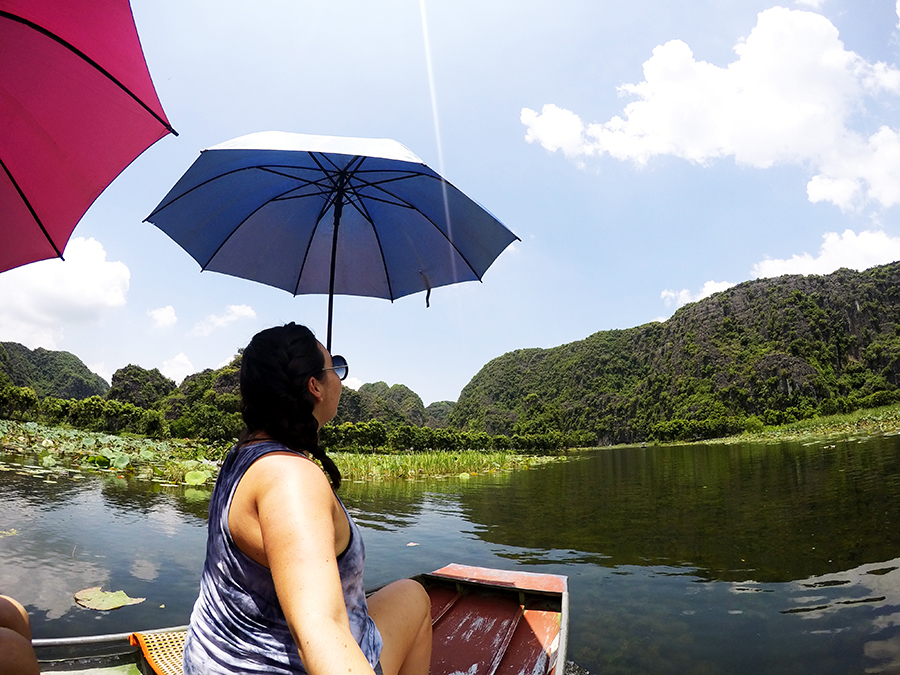
There are some Vietnam destinations that I didn’t mention, Dalat is one of them. I unfortunately, had to skip it because it is for those adventurous souls who like to jump from heights or go canyoning (these were not possible with my sprained ankle).
But if you’re into that then definitely take 2-3 days to see Dalat between Nha Trang and Ho Chi Minh.
Where to Go in Vietnam
A quick overview of the best places to visit in Vietnam that are detailed in this Vietnam itinerary.
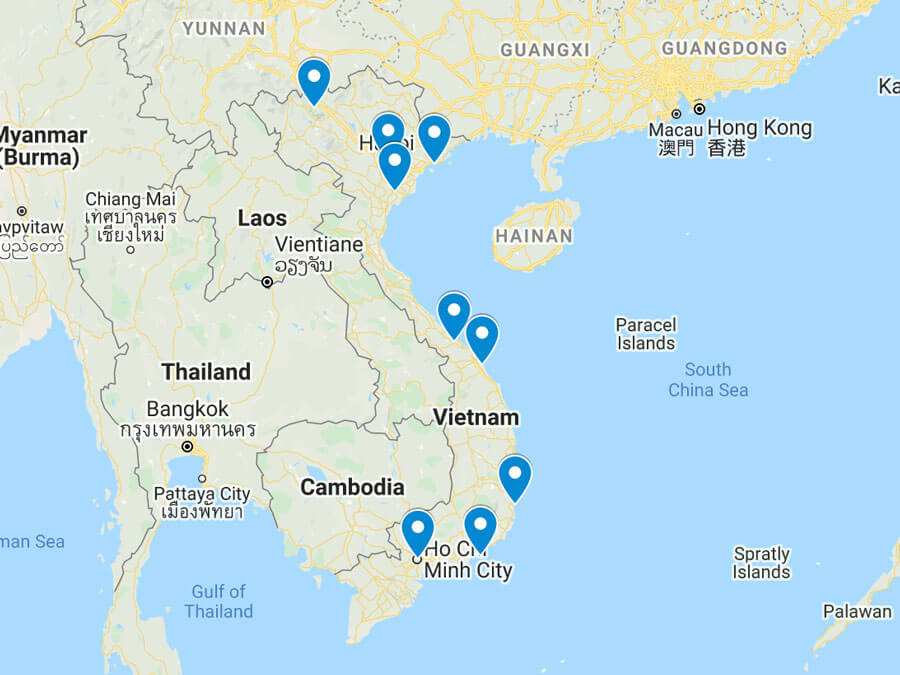
Best Time to Visit Vietnam
Deciding when the best time to visit Vietnam is tricky as the country is dominated by monsoon reasons (don’t be surprised to see streets flooding) and since the country is so long from north to south it can make picking one month of the year to travel difficult but not impossible.
Ideally, the best time to go to Vietnam is in the spring (February-April) or fall (August-October) as you will see the least amount of rainfall (but still expect some) during these two time periods. The temperature will be warm but not scorching hot and in the north you should expect to have a few layers as temperatures are cooler.
Avoid the north in the winter as places such as Sapa can get snow or the summer where the heat in the cities is almost unbearable.
In the spring and fall Hanoi (north) averages temperatures as low as 16°C and as high as 30°C. (60°-86°F). Ho Chi Minh (south) hovers around the 30°C (86°F) mark.
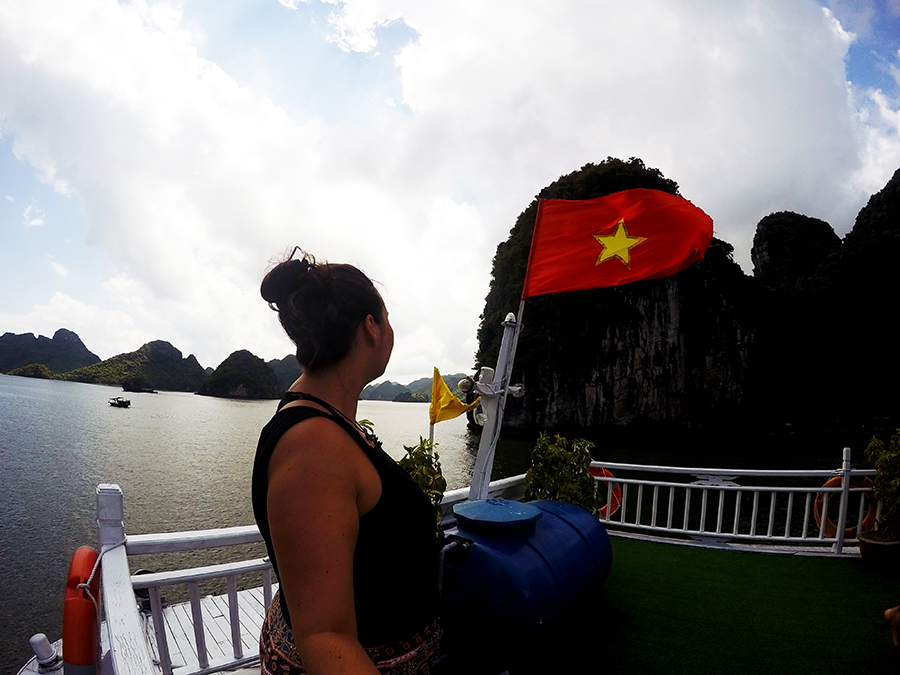
Vietnam Budget
Get excited because Vietnam is so cheap! You’ll be able to stretch your dollar far in this country with a backpacking Vietnam budget that doesn’t have to generous to get you far.
For a Vietnam daily budget you will be able to do everything you want and drink your heart out at night while backpacking in Vietnam easily for $50 a day which is a very easy Vietnam backpacking budget to follow. And if you’re on a tight budget you can still do plenty on $25 a day.
If you want a little luxury $75 a day will get you that and anything above $100 a day (which is a very high budget for Vietnam) and you’ll be living the life.
Vietnam accommodation is where you’ll save a ton. Hostels typically start at 100,000 ($5) for a night including breakfast and sometimes even a pool. There’s no need to pay more than 230,000 ($10) for a hostel as these will be plenty nice. Many also include free beer for 1-hour everyday.
Food is also dirt cheap. You can get a bowl of pho or other dishes at street stalls for as cheap as 20,000 (less than $1) (you must try Bánh mì). Sit down restaurants are typically double the price or more (so still very affordable) and western restaurants will be the most expensive 150,000 ($6.50) for a higher end meal.
Fresh beer is the cheapest for 3,700 ($0.16) in a restaurant with bottles costing between 20,000-30,000 ($0.86-$1.38) but expect to pay double in clubs.
Transportation is, you guessed it, also cheap but there’s more about that below.
Lastly, activities will be your most expensive cost in Vietnam. Entrances to most museums and buildings are around 15,000-45,000 ($0.65-$2). Day trips are typically $15-25 and multiple day trips average at about $100.
READ MORE: How to Create a Backpacking Budget for a Southeast Asia Trip
If you’re worried about not having enough money for your Vietnam trip, why not try volunteering to extend your travels? With Worldpackers you get access to a ton of volunteer opportunities with verified hosts in Vietnam (and around the world) plus you join a community of over 1 million travellers for only $49 a year (BUT you get $10 off when you use the code TAYLORSTRACKS ).
READ MORE: How to Volunteer in Southeast Asia (So You Can Travel for Longer)
Getting Around Vietnam
Travel to Vietnam can be easy or complicated but once you’re in Vietnam it’s quite simple.
Bus: Vietnam is known for its night buses, and they’re dirt cheap. They have the best sleeper buses in Southeast Asia so your chance of getting a decent night’s sleep is pretty good.
I recommend buying them as a package. You simply pick which destinations you want (or may want) to go to as the price changes based on how many places you want to visit. You pay upfront and get the tickets on the spot. Then at each new destination, you call a day before and let them know you want on the next night bus.
Some I even booked day of and only once was I not able to get on that night’s bus. For $45USD I took 5 buses. Keep in mind that when taking night buses it means you don’t have to pay for accommodation!
Train: Trains in Vietnam are a true Vietnamese experience where you may even get to mingle with some locals. They are a more expensive option compared to buses but they are more comfortable.
The best part is that sleeper trains are available so you can save on accommodation as you travel longer distances overnight and not waste precious daytime travelling around Vietnam by air. Most train stations are in the city centre in main cities (with the exception of Hoi An, the closest train station is Da Nang which is only a taxi ride to Hoi An). Tickets can be as cheap as $11.50 but as much as $50 depending on the length of the route or class you opt for.
Motorbike: A lot of travel in Vietnam is through the country by motorbike if you’re feeling a little adventurous. You’ll find plenty for sale either in Hanoi or Ho Chi Minh. I was definitely too much of a chicken to try but heard so many good things by others who chose to explore Vietnam by motorbike .
Flying: Flying in Vietnam should be your last option. I only recommend it if flying from one end of the country to the other or simply to fly into the country from wherever you are. Flying in Vietnam is cheap too as there are low-cost carriers. Just be sure to have the right visa if flying into the country.
For the most part you can walk pretty much anywhere in Vietnam if you’re staying in the central areas (which you can do so cheaply). Or taxis are very affordable. Be careful to not get scammed, it’s best to take the green taxis because they’re metered. You can also get taxi bikes through Grab.
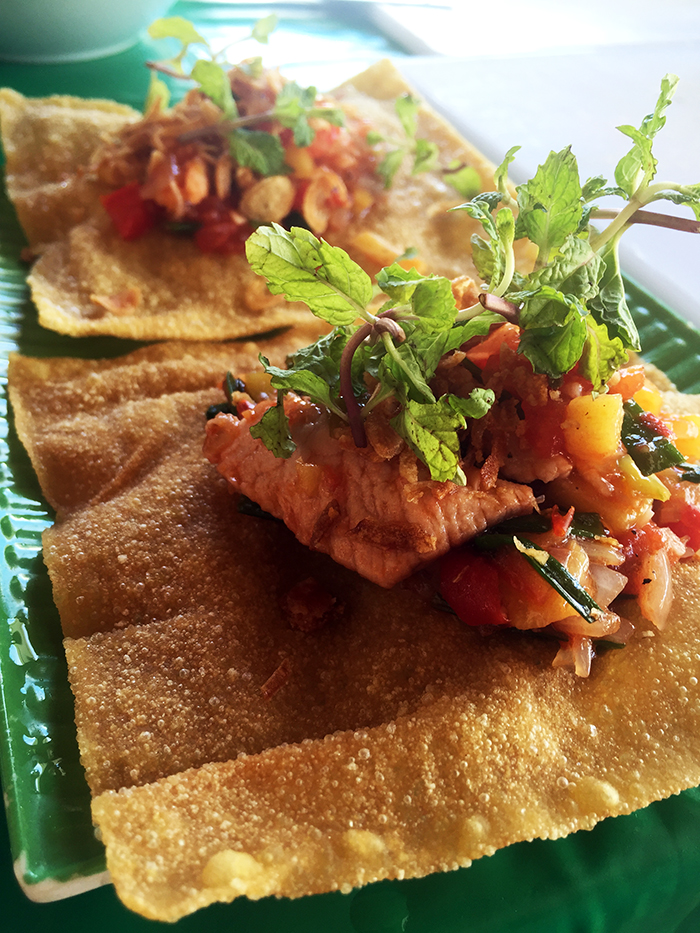
Travel Insurance Vietnam
READ MORE: 11 Common Southeast Asia Travel Mistakes (And How to Avoid Them)
Did you get all of that?! Vietnam is a country so vastly different from North to South that it needed to be broken down like this. Every place I mentioned is worth a visit and there are still more places to visit. These are the highlights and some of the best places in Vietnam that are the ideal Vietnam backpacking itinerary!
Be open to the people, the customs, and the food when you backpack Vietnam. Visit Vietnam without any expectations. Let the country tell you how to feel and you will have an unreal time and unforgettable adventure during your Vietnam holidays.
Heading to Southeast Asia? You’ll love these posts:
- Vietnam Trip Planning Resources
- 51 Travel Tips for Backpacking Southeast Asia
Disclaimer: This post may contain affiliate links which I earn a small commission from and are at no additional cost to you. See my disclosure policy for details. Thank you for supporting my small business!
Disclaimer: Taylor’s Tracks is a participant in the Amazon Services LLC Associates Program, an affiliate advertising program designed to provide a means for us to earn fees by linking to Amazon.Com and affiliated sites.
- Work With Us

Backpacking Vietnam - The Only Guide You'll Ever Need!

Get Your Free "Ultimate Travel Bucket List" eBook!
It’s my first ever e-book, and I want to share it with you!
Everyone hates spammy emails, so do I. Rest assured, I will never spam your inbox!
Backpacking Vietnam has been one of the must-do things when traveling in Southeast Asia. Amazing foods, picturesque landscapes, friendly people, and lively cities, Vietnam has them all . Other than that, Vietnam also has one of the lowest cost of living among Southeast Asian countries, making it perfect for backpackers who have a budget to follow.
The fact that you’re reading this guide suggests that you’re probably planning to go backpacking in Vietnam . You made the right call! It will be a life-changing experience, especially for those who just started traveling with backpacks.
Are you ready to go backpacking Vietnam and see the world from a new perspective? If so, let’s dive in!
Fun fact: Vietnam is the only country in Southeast Asia where you can see snow! (In Sapa, Vietnam)

- 1 Brief Introduction to Vietnam
- 2 Visa For Visiting Vietnam
- 3 When To Visit Vietnam For Backpacking?
- 4 Basic Vietnamese Phrases
- 5 Getting Around in Vietnam
- 6 Best SIM Cards in Vietnam
- 7 FAQ – Things To Know While Backpacking in Vietnam
- 8 Budget for Backpacking Vietnam
- 9 Places To Visit In Vietnam
- 10 What to Eat in Vietnam
- 11 What to Pack For Vietnam
- 12 Useful Travel Apps For Backpacking Vietnam
Brief Introduction to Vietnam
- Population: 95 million
- One of the five remaining communist countries in the world
- Capital: Hanoi
- Largest city: Saigon or Ho Chi Minh City
- Time Zone: GMT +7
The Socialist Republic of Vietnam, a.k.a. Vietnam is located in the eastern Indochina Peninsula in Southeast Asia. It’s located east of Laos and Cambodia, and south of China.
Vietnam also has an area of 331,690 km 2 and the longest coastline in entire Southeast Asia. With the Vietnam War happened from 1955 to 1973, Vietnam is famous for those who’re into histories.
Vietnam is one of the five remaining communist countries in the world. The other four would be Laos, China, North Korea, and Cuba.
Visa For Visiting Vietnam
Visa application for visiting Vietnam is easy as they offer online service. Head over to the official website here.
There are 4 types of tourist visas in Vietnam, all with different length of stay and entries:
- 1 Month Single Entry ($17)
- 3 Months Single Entry ($25)
- 1 Month Multiple Entry ($20)
- 3 Months Multiple Entry ($65)
The processing time varied too, depending on your selected options:
- Normal (2 working days) – No Extra Charge
- Urgent (1 working day) – Extra $10 Charged
- Super Urgent (4 working hours) – Extra $20 Charged
Travelers from 24 countries do not need a tourist visa for visiting Vietnam. However, all travelers are required to bring their passports while traveling. Take note if you’re one of them below:
- Length of stay less than 90 Days – Chile
- Length of stay less than 30 Days – Cambodia, Indonesia, Kyrgyzstan, Laos, Malaysia, Singapore & Thailand
- Length of stay less than 21 Days – Philippines
- Length of stay less than 15 Days – Belarus, Denmark, Finland, France, Germany, Italy, Japan, Norway, Russia, South Korea, Spain, Sweden & United Kingdom
- Length of stay less than 14 Days – Brunei & Myanmar ( Source )
Want to save the hassle? Apply your Vietnam visa online here in just 5 minutes!

When To Visit Vietnam For Backpacking?
Overview on vietnam.
When it comes to the best time to visit Vietnam for backpacking, it’s simply ‘general’.
Why do I say so? Well, if you look at the map, Vietnam covers more than 1,000km in length from north to south, with varieties of weather happening in the north and the south.
During winter months (some called it the dry season) from December to February, it can get particularly cold in the north, while the south remains tropical, with Dalat as an exception due to its geography.
If you want a short answer, I would say Vietnam is best visited in January or February because you’ll get less crowd as it’s winter months.
Locals are not on holiday too, which means you’ll less likely be squeezing the crowds in some popular attractions.
Now if you want a deeper view on the best time to visit Vietnam, read on as we dive into different weathers in different regions in Vietnam.
North Vietnam
North Vietnam includes Hanoi , Sapa, Ninh Binh, Halong Bay, Mai Chau, and other parts in the north.
Let’s talk about the mountainous region in North Vietnam first, which is Sapa . Winter months are not recommended if you’re planning a visit to Sapa, because it literally snows there. It could get very cold and uncomfortable for some.
But the great thing about this is that most of the hotels, homestays, and hostels are not fully occupied because of the lack of crowds. Hiking will be pleasant in terms of having everything to yourself.
The best time to visit Sapa would be March, April, May, June, September & October . The cooler climate made hiking and outdoor activities more comfortable and it seldom rains in these months.
The best time to visit Hanoi, Halong Bay, Ninh Bing, and Mai Chau would be January and February . The weathers are colder and drier, with January being the coldest at 17-22°C.
To be frank, Hanoi can be visited all year round, but the drier season made your trip planning easier because there’s no rain to disrupt your Vietnam itinerary.
Central Vietnam
Central Vietnam includes Hoi An, Danang, Hue, and more.
The cold climate starts to fade in Central Vietnam. The best time to visit Hoi An, Danang, and Hue is January to August . Having said so, Central Vietnam is good to visit all year round.
The reason I recommend the above months is that it’s warmer and fewer rainfalls during these months. Heavy rains are common in October and November.
South Vietnam
South Vietnam includes Ho Chi Minh City, Phu Quoc, Dalat, Nha Trang, and more.
There are generally two seasons down south – dry and wet season. The dry season begins in November and ends around April and May. The wet season starts from May to early November. Temperature ranges between 25 to 30°C all year round.
So the best time to visit Saigon, Phu Quoc, Dalat & Nha Trang would be all year round .
Overall, I would recommend visiting Vietnam in the first quarter of the year as you’ll get a cooler and drier climate in the north while enjoying the tropical weather in the south.

Basic Vietnamese Phrases
The best part of traveling is to learn about the cultures and basic languages of the country, right? Here are the basic Vietnamese phrases that you’ll need throughout your Vietnam backpacking trip.
- Hello – Xin Chao
- Goodbye – Tam biet
- Thank You – Cám on Ban
- No Problem – Khong Van De Gi
- Do you speak English? = Ban noi tieng anh duoc khong?
- What is this? – cái si te nài?
- I am Sorry – Toi Sin Loi


Getting Around in Vietnam
Public buses.
Getting around in Vietnam with public buses is convenient only in Hanoi and Ho Chi Minh City , where the public transport systems are better. Outside of those cities, it would be a no-no for public transport.
For example, Da Nang has several public buses that run throughout the day, but most of them are worn out and badly-maintained, with no clear signs of how much you should pay at the entrance of the bus.
In Hanoi, the prices for each trip is written at the entrance of the bus.
If you’re looking for more information about public buses in Vietnam, head over here .
Renting a Motorbike in Vietnam
Vietnam has the cheapest motorbike rental price in entire Southeast Asia. I’ve come across one with a rate of US$3 per day in Cat Ba Island. That’s ridiculously cheap!
But of course, you’ll have to pay for the petrol you fill in. But here’s a few things you should know when renting a motorbike in Vietnam :
- Rental shops will keep your passport as a deposit when you’re renting.
- Helmets are provided by most rental shops.
- Sometimes you’ll get a motorbike with a near-empty tank, so you’ll have to spend a few bucks to fill it up. Most Vietnamese workers at the petrol station do not understand English so they’ll fill it fully even though you said half. That means you’ll be returning the motorbike with half-tank full.
- Avoid renting motorbikes from the locals without a proper shop. You’ll be asked whether you want to rent a motorbike by a random Vietnamese chilling on the sidewalk. Reject them politely because you’ll have to hand over your passport in order to rent the motorbike.
- Traffic polices do not care about foreigners on motorbikes.
- Traffic in big cities like Hanoi and Saigon is hectic so I wouldn’t recommend renting a motorbike there if you’re not used to it.
I definitely recommend renting a motorbike outside of big cities as you’ll get to explore the more-attractive gems in the outskirts.
GrabCar in Vietnam
GrabCar is the most widely used platform in Vietnam, especially in cities. If you never heard of it, it worked the same way as Uber, but the rate is fixed instead of following the meter. It’s also very widely used in Malaysia too.
The special feature for Grab in Vietnam is that passengers get to choose whether they want a car or motorbike. The latter is a more popular option because it’s cheaper and faster, probably the easiest way to get to the airport.
Get it from Apple App Store or Google Play .
Bicycle in small towns is not so popular among travelers due to the cheap rates for motorbike rentals. Most travelers prefer renting a motorbike than a bicycle since the price difference is not huge. But bear in mind that you’ll need some practices if you’ve never ridden a motorbike before.

Best SIM Cards in Vietnam
There are 3 main internet service providers in Vietnam: Viettel, MobiFone & Vinaphone .
Well, of course, there are more providers in Vietnam like Vietnamobile but I wouldn’t recommend this despite the cheaper rate they offered.
Why? It’s because the coverage isn’t that good compared to the 3 giants.
What’s more frustrating than getting lost somewhere you’re not familiar with, and the internet is not working?
So my advice is to go for one of the three providers mentioned above throughout your backpacking trip in Vietnam.
Here are some ideas of how much the SIM Cards cost in Vietnam:
- The internet service providers will usually encourage tourists to buy the 30-days SIM Cards. Therefore it’s not strange to see the tiny price gap between the 14-days and 30-days SIM Cards.
- 30 -days SIM Cards will cost you around $10 for more-than-enough internet quota with Hotspot available.
- Some SIM Cards allow calling while some don’t, so you’ll have to check when you get down the plane.
While I’ve read about cheaper SIM Cards outside of airports, I saved the troubles and bought it once I got down the plane anyway.
And I’m glad I did that because most of the telecom stores do not have English languages at all. And it seems like every travel agency are also selling them, making it chaos.
So if you want to save the troubles, what you’ll have to do after arriving in the airports is to ask for the rates from the three internet service providers’ stalls .
Compare them and see which one best fits you.
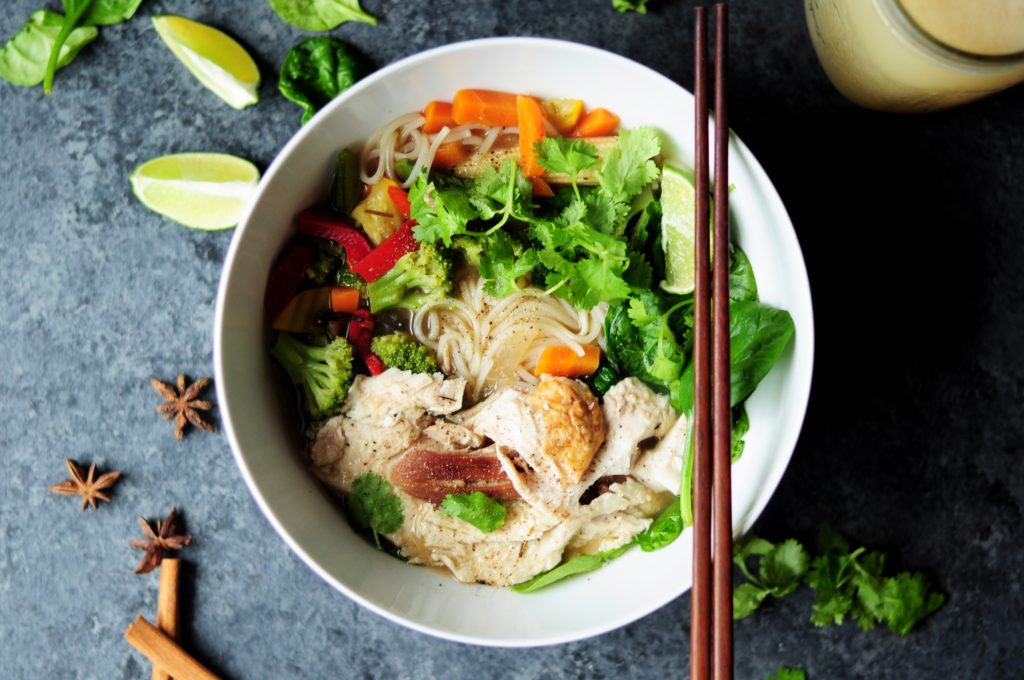
FAQ – Things To Know While Backpacking in Vietnam
Do vietnamese people speak english.
Not surprisingly, most Vietnamese do not speak English, especially those living outside of big cities like Hanoi, Da Nang, or Ho Chi Minh City.
The English language is taught in school but was never the main subject they focus on. You might also notice most has some difficulties communicating in English as well.
In touristy places like Hanoi Old Quarter or Hoi An, your chances of finding Vietnamese people who speak English are much higher because they’re used to serving foreigners.
So if you’re approaching the locals with questions, ask if they speak English or not first because you pop your questions out.
In short, not everyone in this world speaks English, so be respectful to other countries’ cultures and languages.
US Dollars in Vietnam
Most of the travel agency offices and high-end restaurants do accept US dollars. You might also find some stalls in the popular night markets accepting foreign currencies.
Some night market stalls even take Korean Won and Chinese Yuan, due to the exponential growth of tourists from these two countries.
But one thing for sure, their exchange rate is ridiculously bad.
Let’s take US Dollars, for example, the exchange rate is 1 US Dollar to approximately 23,000 Vietnamese Dong. Most of the stalls take 20,000 VND instead. So check before you pay.
The best thing to do is to change the Dongs before doing any shopping in Vietnam.
Is Vietnam Backpacker-Friendly?
Vietnam is probably the most backpacker-friendly country after Thailand in my opinion. Backpacker hostels are everywhere to be found and there are plenty of things to do for backpackers in Vietnam.
Riding motorcycles in Vietnam is so easy that you don’t even need a license or deep pocket. The cheapest rate I’ve come across was only $3 per day in Cat Ba Island.
Everything in Vietnam can be cheap, it’s just a matter of knowing where to find it or not.
Wi-Fi in Vietnam
Surprisingly, the Wi-Fi service in Vietnam is much better than I expected . Almost every restaurant and cafe has its own Wi-Fi, so you’ll definitely have a connection while waiting for your meal.
I’m talking about restaurants here, so don’t expect Wi-Fi while you eat your Pho on a stool beside a street stall.
In fact, I spent half or more meals in restaurants because it’s really cheap and I really need the Wi-Fi to plan my itinerary.
Most of the Wi-Fi services are protected by a password so you might have to ask for the password from the manager or waiters. But what’s funny is that most of the time, the passwords are the same in every restaurant.
My partner actually cracked the password of our sleeper bus in her first try. Well, not cracked, she just entered the most common password and actually connected. Even though the speed was slow as hell.

Budget for Backpacking Vietnam
Everyone has a different style of traveling, luxury, or budget, here’s a rundown on how much it costs for backpacking in Vietnam.
First of all, everything you eat is cheap in Vietnam. The street foods are cheap, so are the beers. So are the snacks you find in the convenience stores.
Don’t set yourself a tight budget because you might miss out on what’s amazing sometimes. Like some Pork BBQ on the street. Oh my…
Transportations are also relatively cheap in Vietnam, with 10 hours overnight bus at around $20. You can go for higher-end buses, while there are also cheaper fares than what I mentioned.
Here’s a rundown on the costs of traveling in Vietnam.
Accommodation :
- A bu nk bed in a shared dorm: Around $5-10 per night
- A double bed in an average hotel: Around $8-20 per night
- A double bed in high-end hotels: Around $25-80 per night
Entrance fees to attractions :
- On average, it costs around $4 per person per entrance to attractions in Vietnam
- Street food meals: Around $1.5 – 3 per meal
- Restaurant meals: Around $2.5 – 5 per meal
- On average, a can of beer in Vietnam costs around $1 in the convenience stores
Motorcycle Rental :
- Varies among different destinations. On average, the motorcycle rental will cost you around $4-8 per day. If you want to go for a better option, expect $10 per day for a decent motorbike.
Places To Visit In Vietnam
Hanoi is the capital of Vietnam, and probably the most enjoyable backpacking city destination in Southeast Asia.
Tourism has long been adapted into the local culture, and thus you’ll find traveling in Vietnam relatively easy compared to other neighboring countries like Laos and Cambodia.
Hanoi is also a paradise for street food lovers like myself. Take your time to enjoy the vibes in this city and try all the street foods.
If possible, try to pay your visit to Hanoi during the weekends, as there will be huge night markets on the weekend nights.

Ho Chi Minh Mausoleum
The final resting place of Vietnamese Revolutionary leader, Ho Chi Minh. If you’re interested in knowing what happened in the past decades, look up for the history of the Vietnam War.
It’s one of the two wars that the U.S. ever lost.
Ho Chi Minh Mausoleum is one of the most popular attractions in Hanoi, so you’ll have to expect crowds of tourists at any time of the day.
But visiting earlier in the morning will guarantee a smaller crowd.

Hoan Kiem Lake
The landmark of Hanoi city, Hoan Kiem Lake is one of the most happening destinations in your Hanoi itinerary . Every weekend nights, the streets will be sealed off, prohibiting any vehicles from entering.
The streets instantly transformed into a square where locals come out and enjoy their weekend evenings.
Pay a visit to the Temple of the Jade Mountain in the middle of the lake too. The entrance fee is very reasonable and you’ll catch a glimpse of a legendary giant turtle preserved inside a glass chamber.
There is a legend surrounding the turtle, read on.

Thang Long Water Puppet Theatre
Probably one of the most popular things to do in Hanoi city. There are a few places you can watch the water puppet shows, but the best place would be Thang Long Water Puppet Theatre .
Stories, legends, and myths like the one I mentioned about the giant turtle are often performed here. You’ll then learn more about the tale and the history of Hanoi city.
Probably the most popular trekking destination in Vietnam, if not South East Asia.
To get to Sapa, you’ll need an overnight train from Hanoi city. There are several service providers for that so remember to check the price and your beds.
My advice is don’t go for the cheapest one. You’ll not have a comfortable sleep and you’ll risk sleeping with bed bugs, which could ruin your Vietnam backpacking trip.
Visiting on the right season and you’ll get an impressive view over the golden rice terraces . If you’re doing this during the sunset, it’ll definitely be one of your highlights on your Vietnam trip.
Go for the multi-day guided treks in Sapa to take in everything Sapa has to offer. Challenge the tallest peak in Sapa, Fansipan Peak at 3143m above sea level!
Not a fan of hiking? Take the cable car from the station to the peak of Fansipan Mountain!

Ha Long Bay
No backpacking trip to Vietnam is complete without visiting the legendary Ha Long Bay. The limestone karsts stabbing out from the water under a hundred feet tall. Where can you find something like this?
There are plenty of cruise tours running in Ha Long Bay and Lan Ha Bay. But if you’re going to explore Ha Long Bay for a longer time, I definitely recommend planning your stay in Cat Ba Island.
A cruise day-trip from Cat Ba Island cost around $15 which includes a buffet lunch, kayaking in the maze of limestone karsts, swimming in the cold vast ocean, hiking in Monkey Island, and hours-long deck-top view of the cruise.
Best-valued tour I’ve ever taken in Southeast Asia.

Cat Ba Island
To be honest, Cat Ba Island is slowly transforming into a tourist hub, as dozens of hotels are being built there now. So, plan your trip to Cat Ba Island as soon as possible before it gets overcrowded.
There are plenty of things to do in Cat Ba Island, arguably one of the best places to stay for a week or two for backpackers in Vietnam.
There’s a national park for hiking, renting motorcycles is ridiculously cheap here and things are pretty cheap too. The best thing is the quiet environment and the cool weather.
No hectic traffic, a great place to relax if you’ve spent days in Hanoi city.
Check out this comprehensive guide for visiting Cat Ba Island here !
Replace the sea in Ha Long Bay with lands, and you’ll get Tam Coc.
Tam Coc is often regarded as Ha Long Bay on land, and that’s not an exaggeration. After my visit to both, I would say both are equally impressive and fun to spend time in.
Plenty of hikes to do in Tam Coc, and it’s easy to rent a bicycle to roam around the town. Cycling along the paddy fields is my favorite thing to do in Tam Coc.
Golden paddy fields, with limestone karsts as the backdrop, imagine that. Pretty cool, huh?
Comparatively, Tam Coc will be a little pricier because it’s basically a tourist town. But it’s worth it because most of the time you’ll spend time outside the town.
It’s kind of like Vang Vieng in Laos, but Tam Coc is much cleaner and foreigner-friendly. If you plan to have a boat tour surrounded by limestone karsts, consider visiting Trang An for the boat tours!

Hue is located in Central Vietnam. From Tam Coc to Hue, it takes 10 hours by sleeper bus, which I highly recommend because you’ll save the cost of accommodation and you wake up in a new destination in the morning.
Fun Fact: In Vietnam, you’ll have to hand your passport to the hostel manager as a deposit. During my stay in Tam Coc, I left my passport in the hostel and realized that when I was on the way to Hue. Panic attacks, but luckily the manager in my Hue hostel helped me to get back the passport.
From Hanoi to Hue, it takes slightly more than 10 hours.
There are plenty of attractions like Hue Imperial City . I highly recommend visiting here especially if you’re interested in the history of Vietnam.
The city played a vital role and had gone through a lot during the Vietnam War several decades ago.
Personally, I found the Vietnam War very interesting and I think you would too, after your trip to Vietnam.
While you’re there, don’t forget to try out Hue’s Banh Xeo, their fried pancake. With prawns, vegetables, and meat slices sandwiched between a pan-fried pancake, it’s crazy good you’ll definitely want for more.

If you were to ask me what’s the best town in Vietnam, I would undoubtedly say Hoi An Ancient Town. It’s also one of the UNESCO World Heritage Sites in Vietnam, along with Ha Long Bay, Hue, My Son, and more.
Despite its tourist crowds, Hoi An remains one of my favorite towns of all-time. Every night, the heritage streets got lightened up with lanterns . The night market was set up and street foods were everywhere to be found.
Even if you’re not hungry or buying anything, sitting by Thu Bon River is still a great way to enjoy your time in this very town.
Instagrammable spots are everywhere in this town, especially at night. If you don’t mind the crowds, of course.
Restaurants are also plenty around the heritage area, serving cuisines from all around the world. Not to mention bars, which are flocked by backpackers every night.
I recommend staying in Hoi An for 3 days or more to take everything in.
Rent a motorcycle and explore the outskirt of the town during the day and definitely spend the night at the heritage area. There are beaches around which are worth your visit, like An Bang Beach.
Arriving in Da Nang will leave you questioning whether you’re still in Vietnam. It’s a very developed city with one of the best city-planning I’ve ever seen in Southeast Asia.
Property investment projects are everywhere here. Seems like Vietnam is building a first-class city here to boost their economy, which they are now.
Most of the travelers’ activities are focused on the eastern part of the city near the coast.
Surfing is a popular thing to do in Da Nang city, you’ll find locals and foreigners surfing in the sea especially during the evening.
It’s also surprising that despite Da Nang being so rapidly developed, the seawater is crystal clear .
Da Nang is also located close to Hoi An, around an hour by motorbike. If you’re missing Hoi An already, you can ride a motorbike and get back there anytime you want.
What to do in Da Nang city? Again, rent a motorcycle and visit Linh Ung Pagoda before riding up Son Tra Peninsula.
Never skip Son Tra Peninsula for God’s sake, it’s so underrated but at the same time, more beautiful than all attractions in Central Vietnam.
The steep ride up the mountain is challenging for some motorbikes, so make sure to get yours as well as the brakes.
See what you can do in Da Nang in 3 days here !

Ho Chi Minh City
Ho Chi Minh, also known as Saigon is one of the two biggest cities in Vietnam. The other one is Hanoi.
Unlike Hanoi, the weather in Ho Chi Minh city remains tropical throughout the year , with a decent amount of rainfall and humidity. The temperature is also much warmer, around 30ºC.
Ho Chi Minh City has more hectic traffic compared to Hanoi in my opinion. Riding motorcycles in these two cities are comparatively more dangerous than other smaller towns and Da Nang city.
While you’re here, remember to check out the Pho. The Southern Pho is different from the Northern Pho for your information, there’s no reason not to try both!
Definitely pay a visit to Ben Thanh Market if you want to experience the local cultures and way of life in Vietnam. Cu Chi Tunnel is also worth visiting for those who’re interested in the history of the Vietnam War.

Like Ho Chi Minh City, Dalat is also located in Southern Vietnam. But due to its altitude 1,500 meters above sea level, the weather there remains cool throughout the year.
It’s much more relaxing and slow-paced here compared to Saigon, ideal for those who’ve spent many days backpacking in Ho Chi Minh city. No more hectic traffic, no more dizziness from the heat under the sun.
There are not many things to do in Dalat, instead, it’s more of a place for those who’re looking for a place to chill out and refresh.
Rent a motorcycle and explore outside the town. There are several natural attractions surrounding this city because of the hilly landscapes, like Tuyen Lam Lake and Datanla Waterfall .

Nha Trang is a coastal resort city on the southeast coast of Vietnam. The main attraction of the town is Vinpearl , the theme park built on the island facing Nha Trang mainland.
You’ll need to hop on a cable car to get there, and you could easily spend a whole day there if that’s your thing. (Personally, I don’t like it lovely there…)
The entrance ticket wasn’t very cheap.
But other than the theme park, there are several attractions and activities you can do in Nha Trang, like diving, snorkeling, having a feast in seafood restaurants, Ponagar Tower, and Long Son Pagoda.
Feel free to skip Nha Trang if you hate crowded places, because most of the time, no matter where you go, you’ll still have crowds surrounding you. Just a matter of big crowds or small ones.

Phu Quoc is an island off the coast in the southwest part of Vietnam, near the Mekong Delta.
Trust me when I say this is a paradise for hikers and beachgoers. Featuring fine white sand beaches with most parts of the island covered in dense tropical forest, Phu Quoc has a lot to offer for nature lovers .
It’s easy to spend a whole week here without feeling too bored.
I would recommend visiting Phu Quoc after visiting other destinations in Vietnam. Because Phu Quoc is a perfect place to chill off and refresh for your next coming trip or before returning home.
In the main town, Duong Dong, there are day and night markets selling gifts and souvenirs, and of course street foods. But I found that the street foods here aren’t as good as those I found in Hanoi and Saigon.

What to Eat in Vietnam
The wide variety of Vietnamese cuisines made Vietnam one of the most popular destinations among backpackers. From noodle soups, spring rolls, hot pots to coffee, every food has its own distinctive flavor you can’t find in other parts of the world.
Common ingredients in Vietnamese cuisine include fish sauce, shrimp paste, soy sauce, herbs, rice, and vegetables. With spices and seasonings like lemongrass, mint, ginger, coriander, Saigon cinnamon, bird’s eye chili, lime, and Thai basil leaves, the flavor is unique to Vietnam.
Unlike cuisines in other Southeast Asian countries, traditional Vietnamese cuisines are admired for the fresh ingredients, minimal use of oil, and the reliance on vegetables and fresh herbs. You’ll also find fish sauce in most Vietnamese dishes too.
Did you know Vietnamese food is one of the healthiest cuisines in the world?
And while all Vietnamese foods share some features, you’ll find some food in Hanoi different from those you find in Saigon. For instance, the Pho I mentioned just now.
I have a blog post solely on the Vietnamese foods that I know you’ll love.
Vietnamese Pho
Pho is a Vietnamese noodle soup made of broth, rice noodles (banh pho), some greens, meat slices, and the locals’ favorite coriander.
It’s undoubtedly the most popular street food in Vietnam and can be found in every city and town.
Having said so, there are good Phos and bad Phos especially in big cities like Hanoi and Saigon. The best way to find the best one would be to look up for it in TripAdvisor or follow the crowds.
Look out for the stalls or restaurants with the biggest crowd, then join them, that’s the most reliable way to experience the best street food for your Vietnam backpacking trip.

While Pho is taking all the spotlight, the one dish you should never miss out is Bun Cha, my most favorite Vietnamese dish.
I had it almost every alternate days while backpacking in Vietnam.
Bun Cha is a dish with grilled pork and rice noodles originated from Hanoi. The dish is served along with plenty of vegetables and herbs.
The best thing about this dish is the dipping sauce made of fish sauce and other ingredients like garlic and chillis.
Wrap the grilled meat slice and greens with the rice noodle, then dip it into the sauce. Oh.. I miss Vietnam now…

While this might also be one of the most well-known Vietnamese cuisines, I personally don’t fancy Goi Cuon that much.
Goi Cuon is the Vietnamese spring rolls, made of pork slices, prawns vegetables and rice noodles (bun) wrapped inside a Vietnamese banh trang (rice paper).
The first time I tried it on the street in Hanoi, I was disappointed because they weren’t as nice as I thought it would be.
To be honest, it’s hard to find good spring rolls in Vietnam, though the dipping sauce will always make up for that.
I preferred the fried spring rolls more than the cold and authentic ones.
Maybe another reason I didn’t like Goi Cuon is that it’s traditionally served cold instead of warm.
My favorite snack during my backpacking trip in Vietnam goes to Banh Mi.
Banh Mi is a Vietnamese sandwich made of meat slices, vegetables and sauces sandwiched between a Vietnamese baguette.
The thing I loved about Banh Mi is the crunchy baguette, and it’s easily available throughout the city, so it makes a great snack whenever the hunger strikes.
The key to finding the best Banh Mi is to buy from a more established and bigger stall instead of a small roadside stall without a menu.
You’ll get much better quality from bigger stalls. To find them, TripAdvisor is definitely the best tool. I had my best Banh Mi in Hoi An thanks to this app.

What to Pack For Vietnam
Depending on where you’re visiting, your needed attires could be different. Check the best time to visit Vietnam above, and check whether you’re visiting during the colder season or the warmer season.
If you’re visiting North Vietnam during January or the cold season, you might need a jacket because it gets to around 15ºC at night. For Sapa, it’s even crazier because sometimes it gets to 0ºC.
For South Vietnam, you’ll need no more than some shirts and short pants.
Here are the essentials you need to include in your packing list during your Vietnam backpacking trip:
- Sunscreen You’ll probably spend more of your time outdoors in Vietnam. On Ha Long Bay Cruise, you’re likely to spend your time on the deck enjoying the surrounding limestone karsts view. There’s no reason not to bring sunscreen along.
- Sunglasses Although the UV in Vietnam is not the highest, it’s still important to protect your eyes from the bright as hell sun. Sometimes it gets so bright that it makes me a little dizzy.
- Insect repellent Mosquitoes are common in Vietnam, so if you’re enjoying your beer on the street, it’s important to spray some insect repellent on. Dengue fevers are quite common in South East Asia, so don’t risk it.
- Baseball cap
- Swimwear (Hard to resist the urge of swimming)
Useful Travel Apps For Backpacking Vietnam
Smartphones are a part of our lives now, so it makes sense to travel with it, right? With these apps installed on your smartphone, you’re guaranteed to have a smoother trip in Vietnam. What are they? Let’s take a look.
- Google Maps You’d probably guessed it because who traveled without an online map or GPS? It’s one of the smartest inventions in modern history, let’s utilize them to the maximum. With Google Maps, you can download an offline map, so that you can access and know where you are even without internet connection. Useful if you rented a motorcycle and is exploring around with it.
- GrabCar I’ve mentioned about GrabCar above that it works the same way as Uber, where you can call for a ride to a destination on your smartphone and pay after the service was done. The fare is fixed, which is good. And the best part about GrabCar in Vietnam is that there is a motorcycle service too, which is much more practical, cheap and efficient in the country’s hectic traffic.
- TripAdvisor The most useful app when it comes to looking for the best restaurant in town. I’ve always used TripAdvisor whenever my hunger hits me and I don’t remember having disappointments upon the recommendations.
Are You Ready For Backpacking Vietnam?
That’s it for everything you need to know for backpacking Vietnam. What do you think about this Vietnam travel guide? Feel free to leave a comment below and let me know.
Vietnam is a very enjoyable country, traveling there is easy compared to other Southeast Asian countries, like Cambodia, Indonesia, Laos, Malaysia & Myanmar.
I know you’ll definitely enjoy your Vietnam backpacking trip. As usual, thanks for reading and have fun traveling in Vietnam!
Would You Pin This?

Yen is a university student from Malaysia and a huge fan of Blues music and photography. His passion for travel can be traced back to 2016 when he spent 6 months traveling New Zealand. By blending into the locals and traveling long-term, he shares all the comprehensive and detailed travel ideas and guides for the countries with his footprints.
Related Posts:
8 Best Spots For Taking Photos in Vietnam During Winter Yen // November 9, 2019 Visiting Vietnam during the winter season soon? Then check out this article to find the best places to take photos in Vietnam in winter. While it does not...
3 Days Da Nang Itinerary - Make Your Every Day Counts! Yen // November 2, 2019 Find out what you can do in 3 days with this Da Nang itinerary and explore one of the most beautiful cities in Vietnam with this comprehensive guide!...
6 Things We Can Learn From The Diet in Vietnam Yen // September 21, 2019 There are always some stories behind a certain dish. Check out this post and find out what we can learn from the diet in Vietnam!
2 Days in Hanoi - Plan Your Vietnam Trip Hassle-Free! Yen // April 1, 2019 Craft your perfect 2 Days in Hanoi Itinerary with this 3000+ words article, which includes things to do, see, eat, safety tips, ways to get around Hanoi city...
Visiting Cat Ba Island? Here's Everything You Need to Know! Yen // March 25, 2019 Cat Ba Island is the ultimate gateway to the legendary Ha Long Bay in Vietnam. Learn more about getting there from Hanoi, things to do, see, eat, getting...
8 Best Foods In Vietnam Not to Miss - We Love No.3! Yen // October 24, 2018 Vietnamese cuisines had long been recognized as one of the best in Asia. Hundreds of thousands of foreigners visit Vietnam solely to satisfy their taste buds. Are they...
7 Reasons to Travel Vietnam NOW! The Cheapest in SEA? Yen // March 10, 2018 Vietnam had been a quite a hot spot for tourists and backpackers to visit for quite some time now. No matter what type of traveler you are, Vietnam...
Leave a Comment Cancel Reply
Your email address will not be published. Required fields are marked *
This site uses Akismet to reduce spam. Learn how your comment data is processed .
- BACKPACKERS WANDERLUST - AN AWARD WINNING TRAVEL BLOG
- Work With Me

- DISCLOSURE & PRIVACY POLICY
- United States
- Cook Islands
- New Caledonia
- New Zealand
- Accommodation Goals
- Budget And Cost Of Travel
- Foodie Goals
- Packing & Planning
- Travel Inspiration
- Volunteering Abroad
- Working & Studying Abroad
- Other Travel Tips
Backpacking Vietnam: Travel Guide & Tips For First Time Visitors 2024
Get ready for your backpacking Vietnam adventure by finding out all you need to know about traveling around this awesome country. Learn about the best travel tips, money, important information, top places to see, and more in this guide on the ultimate budget destination, Vietnam!
Vietnam is one of the most backpacker-friendly destinations in the world and is a highlight for many people traveling to Southeast Asia.
Seriously this country has so much to offer from palm tree-laden beaches, lush rice terraces, backcountry roads with insane views, and bustling cities. No matter what type of traveler you are backpacking Vietnam will be the ultimate adventure.
Being one of the countries on the famous Banana Pancake Backpacking Trail you’ll be able to find plenty of other travelers. Like-minded people will be around every corner fulling their backpacking Vietnam on a budget dreams and making memories that will last a lifetime.
Banh mi’s, pho, and egg coffees, and those are just to name a few of the most well-known favorites. Vietnam is a foodie destination that will not break the bank. With $5.00 accommodation, $6.00 massages, and $0.50 beer hoi, this is a budget traveler’s paradise.
Plus one of my personal favorite things about traveling to these affordable countries is things never cost you much, including if you get scammed in Vietnam , it won’t financially ruin your trip!
This incredible country has such a varied landscape and an assortment of places calling your name. However I will go into what exact places you need to visit further down in this article. You will find most budget backpackers traveling either North to South or vice versa.
I did the latter, but equally, meet travelers venturing in both directions, so there is no real preference. In order to spend enough time to complete this adventure most people, including myself spend at least 3 weeks backpacking Vietnam.
It’s a huge area to cover and no doubt you will do some overnight bus or train journeys.
Though, before we get into all the details of the best places to see in Vietnam and how to actually get to them, let’s start with the basics. I will cover for you everything you will never need to know about backpacking Vietnam.
From money matters, visas, when to go, accommodation, getting around and so much more before finally getting into where exactly you should go and do during your adventure traveling Vietnam on a budget.
Backpacking Vietnam: All First-Time Visitors Need To Know
What is the currency in vietnam, travel budget for backpacking vietnam, entry requirements for backpacking vietnam, best time to travel vietnam, sleeping in vietnam on a budget, getting around while backpacking vietnam, food & drink in vietnam, internet access in vietnam, buying a sim card in vietnam.
- Best Places To Visit While Backpacking Vietnam On A Budget
🚗 How I Book Cheap Transport In Vietnam: Baolau & 12.Go Asia
The local currency in Vietnam is the Vietnamese Dong (VND). Check online exchange rates.

Some may call me crazy, but I actually kept track of all my costs while backpacking Vietnam . This includes transportation, food, accommodation, activities, and even some souvenir shopping.
I tracked all my expenses to make sure I kept on budget and it has also allowed me to hold onto that information to share with you.
In total, I ended up spending $25.55 per day. I kept this spending limit low by staying in the cheapest dorm rooms and only doing a few tours. Originally I had budgeted to spend $22.14 during my travel in Vietnam.
Though as you can see I overspent an average of $3.41 per day. This was due to not actually eating much street food, taking trains over buses, and my trip to Ha Long Bay. Sometimes I am not the best budget traveler, but that is why I keep track of my spending.
As you can see you can backpack Vietnam even cheaper than I did. Though you definitely can’t skip Ha Long Bay- it is worth every dollar! If you are looking at saving money or perhaps want to stay longer I recommend checking out volunteer opportunities and even teaching English in Vietnam .
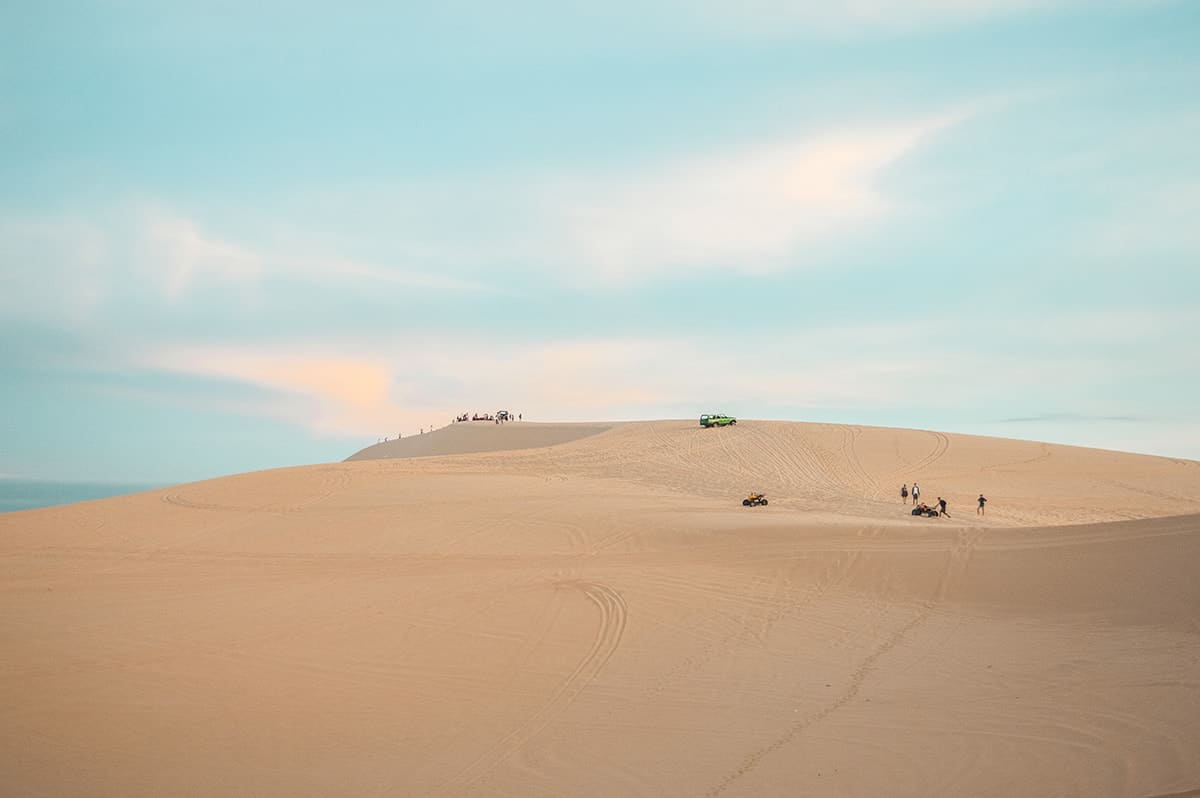
Now I am not going to lie, the entry requirements for Vietnam are a bit of a nightmare, and that is putting it lightly. For the most part, I have a pretty powerful passport being from New Zealand. Though Vietnam has probably been one of the most complicated visa schemes I have ever done (so far).
Before we get too deep into the entry requirements I recommend checking the latest information with the consulate in your home country while planning a trip to Vietnam as information seems to always be changing.
Also, be careful if you decide to organize a visa through a third-party agent online as they can be a bit scammy.
If you happen to be from the U.S., the UK, Australia, New Zealand, and 70+ other countries, you can now apply for an e-visa online here . Be sure to check that every single detail you submit is correct. The immigration officials will check everything super closely! E-visas cost $25, are single-entry, and are valid for 30 days.
Personally, I did the visa-on-arrival scheme as it seemed slightly less complicated, but only ever so slightly. You will have to go through a third-party agent to organize a letter of invitation.
Here you will pay a $20 processing fee and a $25 stamp fee at the airport. Again make sure you will the information out on this one correctly and do so in advance as there are usually processing times. Do not leave it to the last minute at the airport as you won’t be able to check in to your flight!
You will also be required to show proof of departure when arriving at the airport. If you do not have proof of onward travel many travelers use such services as Onward Ticket . The company books a legitimate ticket in your name and cancels it after a certain period.
You just need to pay a small service charge. This provides you with an actual ticket for proof of onward travel. I have used them before, but remember you still need to leave the country within 30 days of arriving. Though this is the perfect amount of time for my 3 week Vietnam itinerary !

Well in all honesty if you are wanting to travel the entire length of Vietnam, I will be honest there is no perfect time to do this. It is such a huge place that the weather in the North is likely to be completely different from the South, and vice versa.
I traveled Vietnam in February and March, during this time Hanoi was about 8 degrees Celsius, Sapa was below freezing and Ha Long Bay was too chilly to swim. In contrast, Ho Chi Minh City was a constant 36 degrees Celsius and we were stuck in a state of sweat.
Therefore sometimes you just have to suck it up and pack for all weather. This is also considered the best time of year to visit, as at least it isn’t during the rainy season.
My personal favorite website to check the weather around the country during particular months is Selective Asia . Here you can see the weather in each region every month, then plan your stay around that.
The Far North (Sapa, Ha Giang, Bac Ha, Mu Cang Chai): This part of Vietnam is divided into two seasons, the dry season runs from October to late March with the wet season lasting from April to September. It can get very cold in December and January, especially at night.
The best months to travel in the far north is during the dry season. It is not recommended to travel the Ha Giang loop during the rainy season (May to September). The best trekking conditions in Sapa and around Mu Cang Chai can be experienced between September & November, and from March to May.
North Vietnam ( Hanoi , Halong Bay, Cuc Phuong, Mai Chau & Ninh Binh): North Vietnam has a winter and summer season. The cool but dry winter lasts from November to April when temperatures average 17-22 degrees Celsius.
Summer is from May to October, during this time expect hot and humid weather with the region experiencing its highest rainfall. July to September are often the wettest months of the year.
Central Vietnam ( Hoi An , Danang, Hue, Dalat, & Nha Trang): Central Vietnam has hot and dry weather from mid-January to late August, with temperatures often reaching the mid-30s.
During the winter months, the rainfall increases with October and November achieving peak levels, occasionally in the form of typhoons and a lot of flooding. Dalat is wet from June to October, and from November to May it is far drier although cold in December & January.
South Vietnam ( Ho Chi Minh City , The Mekong Delta, Phu Quoc & Phan Thiet & Mui Ne): With temperatures remaining constant year round, the climate of the south is split into the wet and dry seasons. The dry season begins in November and ends in April.
The wet season lasts from May until early November with the months of June, July & August receiving the highest rainfall of the year.

There is some awesome accommodation in Vietnam at such affordable prices. Though if you are looking for luxury on a budget this is probably one of the best countries in the world to do it.
In cities, you can find a good mix of hostels, guesthouses, and hotels for all budgets. No matter where you are in the country and what your budget is, it is very likely you will be able to find a suitable option.
Though if you are heading to less frequented parts of the country then you may find yourself without a hostel and need to stay in Guesthouses. Nevertheless, I love the guesthouses in Vietnam and found them excellent value for money if you are traveling with a friend or a partner.
For a dorm room, you can expect to pay between $6.00 to $12.00 throughout the country. This is a super affordable price and even often includes breakfast! A guesthouse, often runs between $15.00 to $25.00, but this can be split between two people.

Even though Vietnam is a freakin huge country, it is surprisingly easy to travel around. Transport links are in abundance, especially on the commonly frequented backpacking Vietnam route, so you should have no problem figuring out how to get from A to B.
You should also have plenty of options to choose from depending on your travel style, plane, train, bus, and even more!
Plane : There are excellent domestic flights in Vietnam with a heap of budget airlines to choose from that’ll help keep your Vietnam budget low. As Vietnam is such a huge country taking a couple of flights will help you from needing to take those long overnight journeys.
An example of this is the journey from Hanoi to Hue , where flights can be found for as little as $30.00!
Bus: Another super easy way to travel around Vietnam is by bus . You can essentially take a bus to any destination in the country, though it may not be the best experience (everyone has their horror stories, including me.
You can either purchase a ticket each time, or certain travel agencies also offer open tickets, otherwise known as hop on hop off tickets. A popular company to do this with is called The Sinh Tourist. I have been on their bus trips throughout Vietnam and can highly recommend their services.
Motorbike : One of the most popular ways to go backpacking in Vietnam is to buy a motorbike and do it yourself. If you start your trip in Ho Chi Minh City or Hanoi you will find many agencies and other travelers selling bikes.
Alternatively, you can also hire them at each destination. Though the majority of people buy their own for complete freedom.
Train: My personal favorite way to travel around Vietnam is the train, though it is a bit pricier than taking the bus. The trains here are comfortable, and there is an assortment of options for any budget, from hard seater to soft sleeper.
The train network runs the length of the country, making it an excellent option. The only places I was able to travel by train is from Nha Trang to Mui Ne and Mui Ne to Ho Chi Minh City .
Though this is simply because there is no train station in the seaside town of Mui Ne. You can read my post on traveling Vietnam by sleeper train to find out exactly what you need to know.

In Vietnam, you can easily find a wide assortment of food. This is even more true in tourist hot spots such as Hanoi, Hoi An, and Ho Chi Minh City. From vegan, Italian, Indian, and Thai. There is a variety of cuisines here for foodies.
Though wherever you find yourself in the country good food will not be far behind. The food here in Vietnam is next level and a lot of the time is a highlight in many travelers’ adventures there. You will mind little locally run eateries and street food stalls dotted all around the place.
In terms of local dishes, Vietnam is any foodie’s paradise. Think Pho, Banh Mi, Banh Cuon, Banh Xeo, the list is endless! You can easily find yourself exploring Vietnam with your mouth.
At local eateries, you can plan to spend between $2.50-$3.50 per meal. Though, eating out at Western-style upscale restaurants you can easily double this amount.

Internet access is pretty decent in Vietnam. As a result, it is a pretty popular place with digital nomads as they can easily work remotely. We never really had any issues with an internet connection. The price of the internet should be included in your accommodation as well.
It is super easy to buy a SIM card, though you do need to watch out for SIM scams in Vietnam . The easiest way to buy a sim card is definitely at the airport when you arrive. The people at these booths are trained to help foreigners and know what plan will be best for you.
This is exactly what I have done multiple times in the past, generally getting a plan with unlimited data for a certain period e.g. 2 weeks or 1 month. The only downside of doing it like this is that it is a lot more pricey than if you were to simply go buy a sim card from the telecommunication companies themselves.
You are basically just paying for the convenience.
I found the 4G reception pretty good in Vietnam, giving me plenty of use. The only times I struggled were during the train or bus journeys where you would often mind yourself in the countryside. Apart from that, I had zero issues whatsoever.
Top Places To Visit While Backpacking Vietnam On A Budget
There are plenty of incredible places worth visiting while backpacking Vietnam. The ones listed here are on the main tourist trail in the country and are written from North to South.
The vibrant city of Hanoi, is the capital of Vietnam and is a huge bustling city. in all honesty, it can feel a little overwhelming. Whether this is your first stop in Vietnam or your last, there isn’t another city like it. Picture busy streets filled with a mix of tradition and modernity, where ancient pagodas stand tall amidst a skyline of tall buildings. Imagine the delicious smell of street food in the air, tantalizing your senses. And how about strolling around Hoan Kiem Lake , taking in the serene beauty that contrasts with the lively vibe of the city? Hanoi, with its rich history, diverse culture, and friendly people, is truly an amazing city that offers an unforgettable adventure. Pretty awesome, right?
From the motorbikes which seem to be driving around at all hours, the people constantly approaching you as you walk down the street, and all the small alleys and hole-in-the-wall buildings make things hard to find.
Hanoi also makes a great spot to venture out on multiple-day trips to places like Sapa and Ha Long Bay which are listed below.
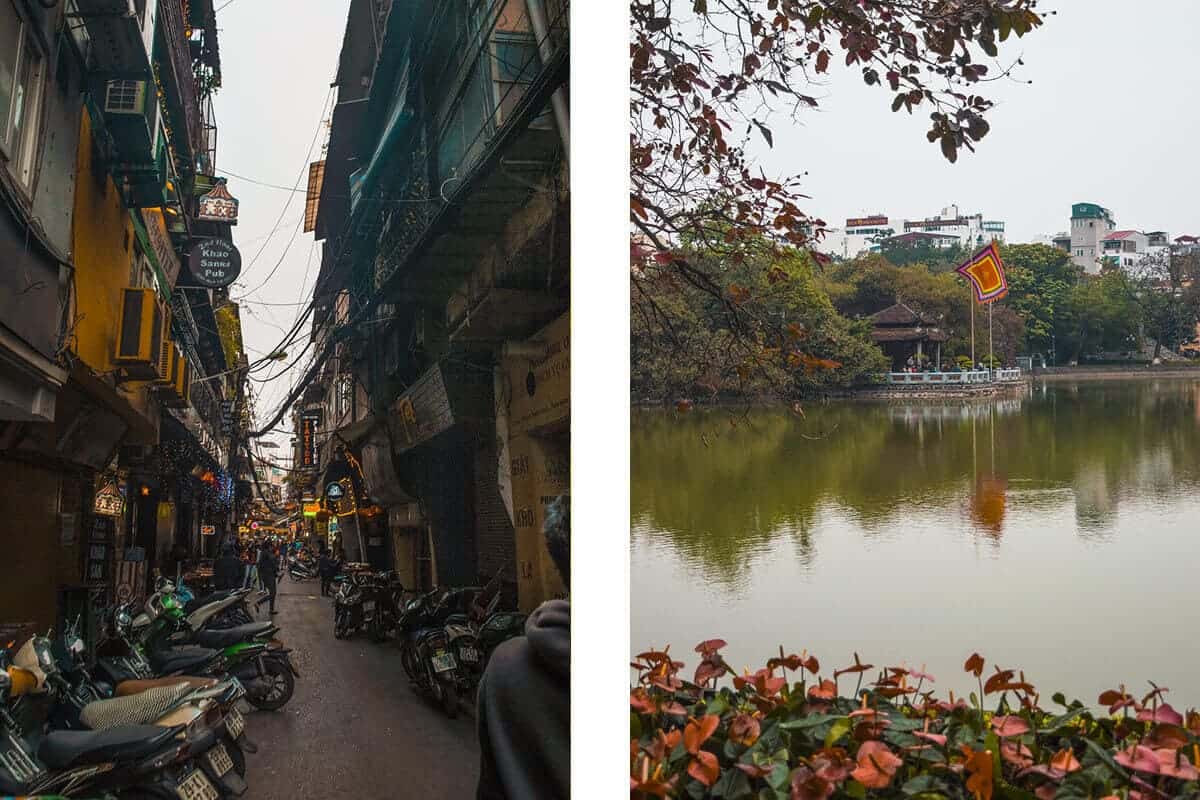
Sapa is nestled in the Hoang Lien Son mountains and is a picture-perfect town. The landscapes are incredible, and you won’t believe the cultural diversity here. Just imagine hiking through rice terraces that look like a staircase to heaven or meeting the friendly ethnic groups who call Sapa home.
Think of bright green rice terraces, mountainous landscapes, and witnessing life in rural Vietnam. This place is absolutely gorgeous and honestly quite different from other popular towns and cities along the tourist trail in Vietnam.
Whether you want to check out some incredible waterfalls, witness the amazing rice terraces, make friends with the local animals, or even hike Fansipan Mountain known as the roof of Indochina. Whether you’re an adventure junkie or a culture enthusiast, Sapa is an absolute must-visit.

Ha Long Bay
Another gem of Vietnam is Ha Long Bay. It has actually been named one of the seven wonders of the New World, so you know it is worth visiting on your backpacking Vietnam adventures. Imagine this: thousands of limestone islands popping up from the emerald waters, covered in a mystical mist. It’s like pure magic! You can explore hidden coves by kayak or hop on a traditional junk boat cruise.
From the moment you arrive in Hanoi, you will constantly be asked if you have booked your Ha Long Bay cruise yet. The number of options seems endless and all the tour agencies that line the streets in the Old Quarter each seem to be selling a different one.

Tucked away in the heart of Vietnam, it’s like a little slice of paradise. Overflowing with natural beauty, Ninh Binh is a stunning blend of rivers, limestone cliffs, rice fields, and ancient temples.
It’s not just a treat for the eyes, but also a paradise for adventure enthusiasts! Whether you’re cruising along the peaceful Trang An River, exploring the historic capital of Hoa Lu, or hiking up to Mua Cave for an epic view of the countryside, Ninh Binh will never fail to leave you in awe.
Now I haven’t actually had the pleasure of visiting Ninh Binh and it’s got to be one of my biggest regrets while I was exploring Vietnam. Who knows why I missed it, but I dropped the ball on that one.
Basically, it’s Ha Long Bay on land. Think of huge lime karst mountains, incredible scenery, and quaint countryside living.

Imagine a city equally amounts quaint and bustling, with a beautiful river running along the middle, and an impressive citadel smack bang right in the middle. This is Hue and it is such a unique place.
Honestly, it is quite different from the other towns along the Vietnam backpacking trail and that is why it is a must-visit. It may not have too much in terms of incredible nature. To gain a better understanding and appreciation of the history and culture of Vietnam I highly recommend a visit to Hue. Hue has an amazing mix of history and modernity, where captivating heritage coexists beautifully with vibrant city life. It’s like a grand open-air museum, full of palaces, temples, and ancient tombs, especially the stunning Imperial City. But that’s not all, Hue has an awesome street food scene that will blow your mind. And don’t forget about the Perfume River, it’s perfect for scenic boat rides, especially at sunset.

Da Nang has it all – stunning beaches, mouthwatering cuisine, and a rich culture. Imagine sipping on a cool drink while lounging on the pristine My Khe Beach . And let’s not forget about the iconic Golden Bridge, held by two giant stone hands – it’s a spectacle you have to see to believe.
The city’s nightlife is buzzing and the local food, oh the food, it’s a gastronomic delight that’s sure to make all the foodies out there jump for joy.
Da Nang is the gateway to Hoi An which is why many people stop over here. I only stayed one night in order to catch a train the next day.
Though there are still plenty of things to do here, the most popular being Marble Mountain .
It is also a popular spot for digital nomads being a modern city right next to the beach.
Hoi An is a dazzling gem! Imagine strolling through narrow, winding streets, where time seems to have paused, and every corner unfolds a new surprise.
Whether it’s the vibrant lanterns illuminating the town, the ancient, well-preserved architecture that tells tales of a bygone era, or the warm, infectious smiles of the locals, Hoi An simply enchants you.
This place is equal parts quaint and beautiful, especially in the ancient town. Prepare yourself for lanterns lighting the night sky, delicious food, and some incredible photo opportunities as you explore this incredible town.
And don’t get me started on the food! From the mouthwatering Cao Lau noodles to the refreshing taste of Banh Xeo, Hoi An is a true foodie’s paradise. Trust me, one visit to this UNESCO World Heritage site, and you’ll be planning your next trip back before you even leave!
There are so many things to do here in Hoi An you will be spoilt for choice. Whether you enjoy lying by the beach, exploring the jungle, or hitting the shops, there is something here for everyone.

Nha Trang is known for its stunning beaches , crystal clear waters, and vibrant marine life – perfect for diving and snorkeling enthusiasts.
Located along the South China Sea (or Vietnam Sea depending on who you ask) it is a mixture of a modern metropolis full of skyscrapers and laid-back living on a relaxing beach.
The city’s nightlife is bustling with amazing food stalls where you can taste the best of Vietnamese cuisine.
But aside from its natural beauty and delicious food, Nha Trang also has a rich history and culture waiting to be explored. The city is home to several historic sites such as Po Nagar Cham Towers , Long Son Pagoda, and the National Oceanographic Museum of Vietnam.
These places not only offer a glimpse into the past but also showcase the country’s diversity and traditions
Ultimately this provides travelers with the perfect playground. You can spend your days beachside, then in the evening hit up rooftop bars and party the evening away for the perfect backpacking Nha Trang adventure.

Mui Ne is a hidden gem tucked away in the coastal region of Vietnam . Though contrary to its size, this place has well and truly earned its place on the banana pancake backpacking trail around Southeast Asia and Vietnam.
Known for its stunning sand dunes, beautiful beaches, and fantastic seafood, there’s never a dull moment in Mui Ne. Whether you’re a thrill-seeker who enjoys kite surfing or a tranquillity hunter longing for a relaxing stroll along the beach at sunset, you’ll find your paradise here.
You will find incredible landscapes there is not anywhere else like it in this country. Think huge sand dunes with impressive views over the ocean, small village vibes, affordable accommodation, and food as well as nearby beaches to visit.

Let me tell you about Da Lat, a jewel of a city nestled in the cool heights of the Lang Biang Plateau in Vietnam. Often fondly referred to as ‘Le Petit Paris’, this city is a breath of fresh air—quite literally!
Its year-round cool weather and misty valleys form a stark contrast to Vietnam’s otherwise tropical climate. Picture this: serene lakes, lush pine forests, and vibrant flower gardens as far as your eyes can see.
But it’s not just nature that stands out, the city’s French colonial architecture is a treat for the history buffs. And let’s not forget the local delicacies you can savor! It is a popular adventure and honeymoon destination with plenty of activities to keep you busy.
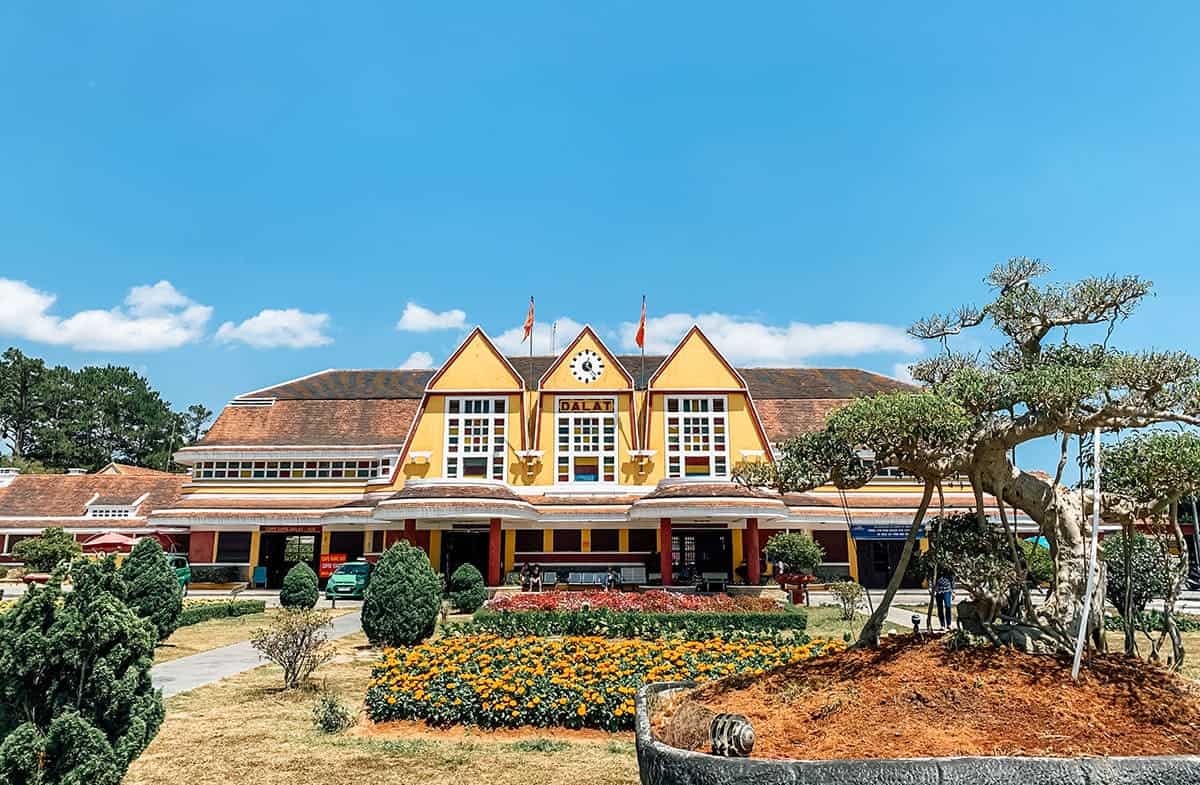
Ho Chi Minh City (Saigon)
Ho Chi Minh City is a huge bustling place. In all honesty, it can feel a little overwhelming when you first touch down.
This vibrant city, once known as Saigon, is fast-paced and high energy, yet deeply steeped in history and culture. I mean there is this huge sprawling city laid out in front of you, with motorbikes and loud noises everywhere.
You’ll find bustling markets like Ben Thanh, brimming with food, clothing, and souvenirs. And let’s not forget the fantastic street food on every corner – Pho for breakfast, anyone?
The city’s French colonial landmarks, including the iconic Saigon Notre-Dame Basilica , add a touch of elegance amidst the urban dynamism.
If I am being honest Ho Chi Minh City wasn’t my favorite stop in Vietnam, but I was still glad that I visited. There is a lot of history to explore in this city as well as numerous other things to do. Also, you need to dedicate some of your time to checking out the delicious foodie spots.
It is well worth spending a few nights here. Whether you want to discover Vietnam’s history, eat some delicious street food, or venture on a multi-day trip.

Phu Quoc is a dreamy island nestled right off Vietnam’s south coast. Imagine soft, white sand lining its shores with palm trees swaying. On land, you’ll find protected tropical rainforests, plenty of accommodation options, and great diving opportunities.
Phu Quoc National Park is a must-visit for nature lovers – it’s a UNESCO Biosphere Reserve no less! And the sunsets? Picture-perfect every single time. And don’t get me started on the local cuisine, it’s a seafood lover’s paradise.
The Phu Quoc district itself encompasses 28 islands. However, you will find the majority of travelers visit and stay on Phu Quoc island, the largest in Vietnam.

Work For Accommodation In Vietnam
Give working for your accommodation a try. Many hostels in Vietnam offer those who are staying a free place to rest their head. Though in exchange you must be willing to help with cleaning, the front desk, and other general duties.
Another option is WWOOFing or Helpx.
LIKE IT? PIN IT!

Want more Vietnam Inspiration? Check out….
- EXPLORE HA LONG BAY ON A BUDGET, VIETNAM
- TRA QUE VEGETABLE VILLAGE IN HOI AN, VIETNAM
- 2 DAYS IN HUE BACKPACKING ITINERARY
- A MORNING AT THE MY SON TEMPLES IN HOI AN, VIETNAM
- EXPLORE THE IMPERIAL CITY OF HUE IN VIETNAM
- HANOI TO SAPA
- SURVIVING A VIETNAM SLEEPER TRAIN
- TAKING A VIETNAM SLEEPER BUS: WHAT YOU NEED TO KNOW
- HOW TO SPEND 3 DAYS IN SAPA
- TRAVELING FROM HANOI TO SAPA
Disclaimer: This post contains affiliate links. So, if you click on it and purchase something, I get a small percentage at no extra cost to you. As always all opinions are my own and your support is much appreciated.
Related Posts
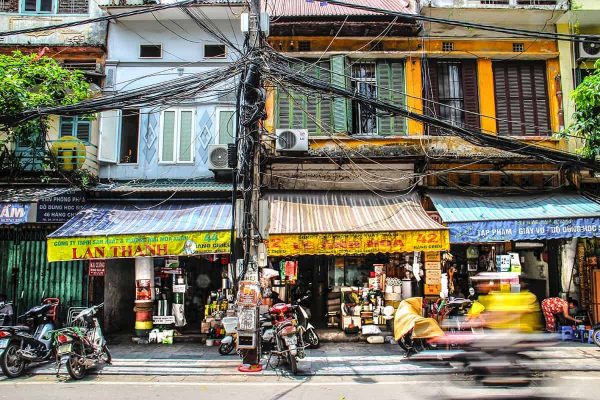
3 Days In Hanoi Itinerary For The Ultimate Visit (2024)
Planning on spending 3 days in Hanoi, but not sure what exactly to do, Come [...]

Discovering Lan Ha Bay and Cat Ba Island, Vietnam
Discovering Cat Ong Island and Cat Ba Island in Lan Ha Bay With Ocean Tours [...]
36 Comments
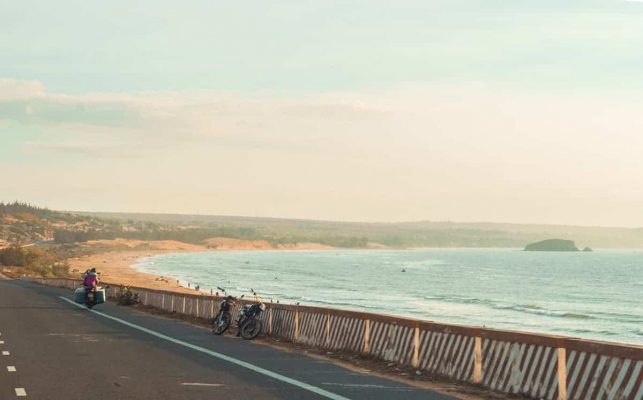
Nha Trang To Mui Ne: Travel By Bus, Train Or Private Transfer
If you are traveling the entirety of Vietnam you will no doubt find yourself needing [...]
Tasha Amy is a true backpacker at heart and has been discovering the world on a budget since 2015. Based in Gisborne, New Zealand she will spend many months each year traveling overseas as a solo female traveler before coming home and sharing her adventures online with you.
Leave a Reply Cancel reply
Your email address will not be published. Required fields are marked *

- RECENT BLOG POSTS
- Sustainable travel tips
- Packing light
- Sustainable travel products
- Volunteering
- Why sustainable travel
- El Salvador
Vietnam | From canyoning waterfalls, colorful lanterns to cruising around mystical limestone formations

Picture yourself backpacking in Vietnam. You’re sitting in a bus, driving along ricefields where you catch a quick glimpse of the workers’ smiles under their straw hats. In the city, you’re welcomed by the scent of hot, steaming buns. Fresh Vietnamese spring rolls. Bahn Mi stalls everywhere you look. You realize that you’re in a street food paradise. But a Vietnam backpacking itinerary has so much more to offer – incredible floating markets, canyoning waterfalls, and the lushest landscapes. So get ready and dive in.
Table of contents

Southern & Central Vietnam | Highlights on your Backpacking Vietnam itinerary
Ho chi minh city | nine million motorbikes.

Impressions of HCMC | Crazy motorbike traffic & markets
ToDo in HCMC:
- Free Walking Tour – It’s the best way to get a feeling for this lively city. With this Saigon Local Sightseeing Free Walking Tour with Nana you can experience HCMC through the eyes of a local, learn about the culture and see some of the city’s highlights.
- Bui Vien Street – The area around this street is the backpacker hot spot with many hostels, amazing street food stalls, bars, and massage studios. Come here for great, authentic Vietnamese street food, or a drink in a bar.
- District 1 – The historic center is still called Saigon and is home to many buildings from French colonial times, such as the imposing town hall (Hôtel de Ville), the Opera House, and the Central Post Office. There’s also a Vietnamese version of Notre Dame Cathedral.
- Cholon (Chinatown) – Enjoy this bustling neighborhood, visit one of its beautiful temples, such as the Thien Hau Temple and grab some yummy street food. “Cholon” means “big market” and that pretty much sums up the vibe of the area.
- Binh Thai market – As in every city in Southeast Asia, visiting a market is a must. Binh Thai market is one where mainly locals shop. As usual, they sell everything over here: household goods, clothes, food. The fruits and vegetables, however, are mainly stored in bowls on the muddy street, with motorbikes rushing through directly next to them.
- War Remnants Museum – A more important part you cannot miss when you explore a foreign country is encountering its history which, in Vietnam’s case, sadly is dominated by a horrible war. The War Remnants Museum documents the horrible atrocities of the war, including brutal photographs of its victims (the tortured ones, as well as those born with horrible birth defects caused by chemical weapons). Intense narrations and brutal thought-provoking pictures that make you leave that place in pondering silence.
Stay in HCMC:
- The wonderful and modern homestay Leiden Homestay&Cafe is in the best location.
- At Silverland Bến Thành you are not only in the best location in District 1, but all the large rooms are very thoughtfully decorated and the whole hotel has a unique design.
- The Lovenote Home does not only have the most beautiful name but also amazing dorm rooms and is decorated with so much passion.
Homestay recommendation for HCMC: Leiden Homestay&Cafe

Impressions of the War Remnants Museum HCMC
Can Tho & the Mekong Delta | By boat through a Floating Market
Todo in the mekong delta: floating market.

Impressions of the floating market & the Mekong Delta
Stay in the Mekong Delta:
- Budget stay: Mekong Rustic has two wonderful homestays in the Mekong Delta: one Mekong Rustic Homestay in Cai Be and another Mekong Rustic Homestay in Can Tho which are both lovely and the best way to experience this area.
- Premium stay: At Can Tho Ecolodge you stay in a beautiful bamboo hut among rice fields next to the river. You can enjoy the huge pool and rent bicycles for free.
- Can Tho Riverside Hostel is the only hostel in the area but it’s amazing. The family who runs it is super lovely & accommodating and the atmosphere is relaxed.
Homestay recommendation for the Mekong Delta: Mekong Rustic Homestay in Cai Be

Mui Ne | Scaling up sand dunes
Todo in mui ne.
- Tour to the sand dunes – There are white and red dunes. The so-called “white sand dunes” are surprisingly large and located next to a big lake, making the drive there pretty scenic. After a short trek up the dunes, the view is amazing, especially when you go in the late afternoon and the deep sun lightens up the sand in warm colors. Check out this tour combining the sand dunes with a stop at the fishing village .
- Fishing village – I’ve never seen this many fishing boats in one place before, all anchored in this one bay. The cutest are all those small, round plastic boats they use in order to get to their bigger boats.
- Kite-surfing – If you’re a kite surfer or have thought about taking a kite-surfing course, this is the place to do it. The waves here are amazing, and it’s much cheaper than in many other countries.

Impressions of Mui Ne: Beach | Sand dunes | Fishing village
Stay in Mui Ne:
- Budget stay: The lovely MiNhon Hotel Mui Ne is a little dream for budget travelers. The whole hotel is decorated and run with much love and the pool area is amazing as well.
- Premium stay: Anantara Mui Ne Resort is not only a beautiful resort but also committed to sustainable measurements such as water and energy conservation, recycling and they support local communities.
- The choice of hostels in Mui Ne is small but at Eva Hut you’re in a cute, calm paradise right by the beach. If you’re more in a party mood check out iHome Backpacker Resort .
Hotel recommendation for Mui Ne: MiNhon Hotel Mui Ne

Dalat | Canyoning waterfalls and riding around by motorbike
Todo in dalat.
- Canyoning waterfalls – This waterfall canyoning tour was one of the highlights of my backpacking Vietnam itinerary. Your guides take you to a beautiful area where a river runs down the mountains through the forest, shaping numerous waterfalls and pools. After a briefing about the basic abseiling techniques and how to secure yourself with the rope and a short trek, the real adventure starts. You can rappel down several cliffs and waterfalls, jump into the river, slide down waterfalls, and enjoy the Vietnamese forest landscape in a fun group setting.
- Renting a scooter – The best way to further explore the beautiful landscape around Dalat, is by renting a scooter. There are organized tours but I recommend cruising around on your own so you can choose where to go, such as waterfalls, temples, rice fields, and flower farms.
- Happy Buddha Temple – With your scooter, take a stop at this huge, super happy Buddha which makes you smile as well when looking at it.
- K’Ho Coffee Farm – A local coffee farm close to Dalat with organic farming/agroforestry practices and eco-friendly coffee processing methods you can visit for a tour and tasting.

Impressions of Canyoning waterfalls in Dalat
Anti-Tip: Why you should not visit a “weasel coffee farm”

By scooter around Dalat & Family Dinner on the floor
Stay in Dalat
- Midori Coffee Farm – Here you can stay in harmony with nature at a coffee farm with a spectacular view, lovely cats and dogs and homemade, organic food (vegetarian is no problem)
- California Hotel – What a gem, even with a vegan breakfast option and a sauna. You’ll love that in the fresh evenings in Dalat.
- Tiny Tigers Hostel – When I arrived at Tiny Tigers while I was backpacking in Vietnam, I was so warmly welcomed at the family-run hostel by a homelike atmosphere. The most amazing offer that I experienced at a hostel so far, was the family dinner that took place every night. Everyone who wanted to could join, sitting together on just some cushions on the floor around numerous freshly prepared original Vietnamese dishes (vegetables, rice, noodles, soups etc – everything your heart desires) and get to know all the different people staying at the hostel. There’s a table by now, but the amazing experience is the same. For me it was for sure one of the highlights of my Vietnam itinerary.
Hotel recommendation in Dalat: Midori Coffee Farm

Hoi An & Hue | Shining lanterns & ancient temples

Impressions of Hoi An
- Rent a bike – During my Vietnam backpacking trip, I rented a bicycle with some other travelers and we went cruising around Hoi An, stopping at cute shops, cafes, and bars. I loved this way of exploring the town.
- Have a drink next to the river – Enjoy the view of the colorfully lit river while sipping a cocktail in a bar at the riverside.
- Day trip to Hue – The small town Huê, around four hours north of Hoi An, used to be the capital of Vietnam until 1945. With its small ancient city center and the old palace, it’s a nice day trip on your Vietnam itinerary. You can also make a short stopover and spend a day here before moving on to Hanoi.
- Tailored shopping – Get affordable handmade shoes or tailored clothing at the small tailor shops. You can usually pick them up within a few days after ordering.
- Reaching Out Tea House – Visit this wonderful cafe in the historic center which provides meaningful work to disabled and deaf people.
- My Son Sanctuary Ancient Temples – With this early morning guided tour you can experience the cultural site of the ancient Champa culture and the impressive temples before the crowds arrive.
Stay in Hoi An
- MaiChi Villa Hoi An – In the best location this is a wonderful oasis with lots of lush plants, rooms with balconies and a pool where you can cool down.
- Victoria Hoi An Beach Resort & Spa – A wonderful resort overlooking Cua Sai Beach which operates without single-use plastics.
- SnapStay Hoi An – A social hostel with a co-working cafe, a pool, and some cute cats located on the local food street just a short walk from Hoi An Ancient Town.

Impressions of Hue, close to Hoi An
Hostel recommendation in Hoi An: MaiChi Villa Hoi An

Northern Vietnam | Highlights on your Backpacking Vietnam itinerary
Todo in hanoi.
- Old Quarter – A maze of busy alleys full of street food stalls and shops, temples, and a wet market (which I’d rather skip with hindsight, as many half-alive animals are sold here or killed directly in front of the eyes of the market visitors.
- French Quarter – With its many pompous villas, this couldn’t be more different from the Old Quarter
- Rail tracks / Hanoi Train Street – The old tracks run straight through narrow alleys in Hanoi, often the train rushes by less than a meter away from residential buildings
- Free Walking Tour – Wander all around Hanoi’s Old Town quarter on this tour with Huyen and learn about its history, sights, and local life in a fun, informative way.
- Free Food Tour – There are several tours where you can explore Northern Vietnamese delicacies, such as this Hanoi Food Tasting Tour in the Old Quarter . There’s even an amazing Free Vegetarian Food Tour in Hanoi and a Vegan Local Food Tour worth checking out.
- Free Hidden Gems Walking Tour – As you can see, I love free tours! This hidden gems walking tour with Lynn takes you through lesser-known parts of Hanoi you’d probably walk past by yourself.
- Hoan Kiem Lake & Temple of Jade Mountain – A peaceful corner in the heart of lively Hanoi. There’s a small island with a Pagoda (Ngoc Son Temple) on a small island in the middle of the lake which you can reach by crossing a red bridge.
- Ninh Binh Express Day Trip – This tour by YESD , a travel agency focused on Responsible Travel takes you to the best of Ninh Binh by visiting Hoa Lu Ancient Capital of Vietnam, Trang An UNESCO-recognized heritage, or Mua Cave with its stunning beauty.
- Explore the Mai Chau region (3D2N) – With this Pu Long Tour you can explore the beautiful Mai Chau region, home to the White Thai Muong ethnic minority people and their great hospitality in a responsible tour with YESD.

Impressions of cold Hanoi in January
Stay in Hanoi
- Myrcella Urban Studio – A super nice studio in the center of Hanoi, equipped with everything you need, even a washing machine and a dryer.
- Concon House – A stylish hotel for design lovers that is like a calm oasis in the midst of Hanoi’s historic quarter.
- Old Quarter View Hanoi Hostel – Nestled in the heart of Hanoi’s Old Quarter, this is not just a beautiful and clean hostel but a great place to socialize. Try to book a bit ahead of time, as it’s very popular and gets full fast.
Hostel recommendation in Hanoi: Myrcella Urban Studio

Ha Long Bay | Mystical limestone formations
Todo: overnight cruise through ha long bay.

Impressions of mystical, foggy Ha Long Bay in January
Cruise recommendation in Ha Long Bay: Bhaya Ha Long Cruises

Vietnam backpacking itineraries
How many weeks do you need for your vietnam itinerary, 4 weeks backpacking vietnam itinerary.
- Ho Chi Minh City (perfect start if you’re coming from Cambodia) | 3 days → bus to Can Tho/Mekong Delta (4 hours)
- Mekong Delta | 2-3 days → night bus to Mui Ne (back to HCMC & from there 6-7h to Mui Ne)
- Mui Ne | 3 days → bus to Dalat (4-5h)
- Dalat | 3 days → night bus to Hoi An (18h)
- Hoi An | 3-4 days → bus to Hue (3h)
- Hue | 1-2 days → night bus to Hanoi (18h)
- Hanoi | 3 days → bus to Halong Bay (3h)
- Halong Bay | 2-3 days → bus to Sapa (back to Hanoi & from there 6-7h to Sapa)
- Sapa | 3-4 days → back to Hanoi
More on slow travel

3 weeks backpacking Vietnam itinerary
- Ho Chi Minh City | 3 days → bus to Can Tho/Mekong Delta (4 hours)
- Mekong Delta | 1-2 days → night bus to Mui Ne (back to Hanoi & from there 6-7h to Mui Ne)
- Hoi An | 3 days → bus to Hue (3h)
- Hue | 1 day → night bus to Hanoi (18h)
- Halong Bay | 2-3 days
2 weeks backpacking Vietnam itinerary
- either northern and central Vietnam (Hanoi, Sapa, Halong Bay, Hue & Hoi An)
- or southern and central Vietnam (HCMC, Mekong Delta, Mui Ne, Dalat & Hoi An)
Map of backpacking Vietnam itinerary

How to get to Vietnam?
How to get around on your backpacking vietnam itinerary.

Bicycles in Vietnam
Good to know | Backpacking Vietnam itinerary
Sustainable travel in vietnam, more on the 3 pillars of sustainable tourism.

What can I do as a traveler?
More tips on sustainable travel.
- Stay with locals: in guesthouses, small B&Bs, or homestays. Especially in the Mekong Delta and Sapa there are many lovely local homestays where you can truly experience local culture and life.
- Save energy & water: In your accommodation, skip on getting fresh towels & cleaning daily, use a fan instead of aircon, and take short showers.
- Support local businesses: Eat and shop in small locally owned restaurants and shops instead of supporting international chains.
- Book eco-friendly tours: Such as Bhaya Cruise in Ha Long Bay to explore the UNESCO World Heritage Site sustainably, or visiting Ning Binh with YESD RESPONSIBLE TRAVEL .
- Cause as little waste as possible: It’s actually simple – Say no to plastic bags and packaging (instead bring a tote bag) and at street food stalls bring your own reusable cutlery .
- Bring your own eco-friendly products: Especially in a country like Vietnam located by the sea, make sure to use reef-safe sunscreen without chemicals that harm the ocean, a shampoo bar that saves plastic, and a bamboo toothbrush .
- Bring your own water bottle: I never travel without my self-purifying water bottle with which I can filter water anywhere I go and make it drinkable.
Interested in getting a water bottle with a filter?
More about reducing waste during your trip.

A drink with plastic waste or natural packaging – the choice is yours.
- Avoid any activities that involve animal cruelty: such as weasel coffee/cat coffee (neither buy or drink it, nor visit these coffee plantations)
- Eat responsibly: Besides eating in local restaurants where ingredients are usually from the regions, try to eat less meat or even plant-based. This can radically improve your ecological footprint, as meat consumption is one of the most severe causes of climate change.
- Use public transport & avoid flying within the country even though distances are far. There is a great bus and train network. If those long-distance bus or train journeys are too far for you, focus on either a southern or northern Vietnam itinerary.
- Be respectful & mindful of local customs. When traveling in Vietnam’s highlands in the far north, be respectful to ethnic hill tribe minorities, especially when taking pictures. Always ask before and respect, if they don’t want pictures taken of them.
More on the power of slow travel
Do you know the feeling when you crave vacation right after you just came home from traveling? Learn here, how slow travel helps, to truly recharge and dive deeper into your destination’s culture.
Tips on how to pack light

With our without plastic – the choice is yours
Weather & travel season
When is the best time to go backpacking in vietnam.
- Southern Vietnam: November to February
- Central Vietnam: February to May
- Northern Vietnam: September to November
Yes this is both Vietnam in January – heat in Mui Ne & freezing in Hanoi
Visa, currency & language
Getting a visa for vietnam, vietnamese currency.
The local currency is the Vietnamese Dong, and it’s a challenge to convert prices.
When I came to Vietnam, my first way led to an ATM, where I withdrew two million Vietnamese Dong (and I felt like a king haha – yet this is less than 80$). I can tell you, calculating prices and exchange rates here is a crazy task.
1 $ = approx. 25.000 Dongs
So a meal for 50.000 Dongs is around 2$.
Vietnamese language & helpful basics
- Hello – Xin chào (or simply “Chào” as a casual hello)
- Thank you – Cảm ơn

Typical Vietnamese Food
- Pho – The classic! A noodle soup usually with meat, but in more and more places you also find vegetarian Pho soup.
- Bun Chay – In general “bun” are the thin rice noodles, Bun Chay is a delicious rice noodle salad.
- Vietnamese Curry – A thin, soupy curry often served with rice.
- Banh Bao – Steamed buns, traditionally with meat but sometimes you can find vegetarian ones as well.
- Banh Mi – A baguette sandwich that is a reminder of the French colonial times but with local filling such as meat or tofu, salad, and a spicy sauce.
- Fresh spring rolls – Raw spring rolls that aren’t fried (sometimes also called summer rolls).

Food in Vietnam: Fresh spring rolls | Traditional family dinner | Street food stall
Backpacking Vietnam itinerary – a wrap-up
Vietnam in three words: Nón lá (the typical straw hats) | street food | colorful lanterns
More travel inspiration for Asia
Discover malaysia, fall in love with thailand, explore indonesia, get a free packing list to travel lighter.
Subscribe to get your free packing list for traveling light or carry-on only!
By requesting the packing list and subscribing to the newsletter, you agree to receiving updates via e-mail.
We respect your privacy. Unsubscribe at anytime.

Share with friends!
Leave a comment cancel reply.
Save my name, email, and website in this browser for the next time I comment.
- Top things to do in london in 3 days
- 12 things to do in Amsterdam in 2 days
- Top 12 things to do in Berlin in 3 Days
- Top 10 things to do in Rome in 2 days. Backpacker’s Itinerary
- Top 12 things to do in Madrid in 3 days
- Top Things to Do in Paris. The Ultimate 3-Day Guide
- Interrailing Tips
- Solo Travel Guides
- Best Travel Apps
- Hostel Tips
- Budget Travel Tips
- Best Hostels Amsterdam
- Best Hostels Barcelona
- Best Hostels Belfast
- Best Hostels Berlin
- Best Hostels Dublin
- Best Hostels Edinburgh
- Best Hostels Lisbon
- Best Hostels London
- Best Hostels Malta
- Best Hostels Milan
- Best Hostels Naples
- Best Hostels Nice
- Best Hostels Paris
- Best Hostels Prague
- Best Hostels Seville
- Best Hostels Split
- Best Hostels Valencia
- Best Hostels Auckland
- Best Hostels Brisbane
- Best Hostels Cairns
- Best Hostels Christchurch
- Best Hostels Goa
- Best Hostels Hanoi
- Best Hostels Hong Kong
- Best Hostels Koh Phi Phi
- Best Hostels Koh Samui
- Best Hostels Marrakech
- Best Hostels Perth
- Best Hostels Singapore
- Best Hostels Cartagena
- Best Hostels Chicago
- Best Hostels Havana
- Best Hostels LA
- Best Hostels Medellin
- Best Hostels Mexico City
- Best Hostels New York
- Best Hostels Rio de Janeiro
- Best Hostels San Diego
- Best Hostels San Francisco
- Best Hostels Toronto
- Best Hostels Tulum
- Make a Booking
The Only Guide You’ll Ever Need For Backpacking Vietnam
Hostelworld Blog | Posted on March 29, 2018 |
Vietnam is one of the most popular destinations among backpackers, and for good reason! It can be hard to find all the info you need while planning a backpacking break, so we’ve put it all together in one place – you’re welcome! From the lowdown on where to stay, the visa requirements, and even a 2 week itinerary, we’ve covered all the bases for anyone backpacking Vietnam.
The Best Time to Visit Vietnam
Vietnamese new year, do i need a visa for vietnam, travelling around vietnam, vietnam travel costs, where to stay in vietnam, vietnam itinerary, vietnamese food, vietnamese culture, is vietnam safe, vietnam travel tips, vietnam packing list.
Recommended by Sophie Spencer
Being such a long country, Vietnam also calls for great regional diversity. You can have a summer beach holiday, go caving in the world’s biggest cave, explore multiple UNESCO world heritage sites, get lost in the hustle of Ho Chi Minh City and Hanoi or do it all together! Sounds pretty incredible right? Although the length of Vietnam means beaches here, there and everywhere, it does make the seasons difficult to comprehend. It’s definitely not as easy as just having Summer, Spring, Winter and Autumn but don’t worry, we’re here to help! We’ve done the research to help you determine the best time to visit Vietnam.
The general rule of thumb is that if you want to travel the entire length of Vietnam and have the gift of unrestricted dates, then go in between February and April or November to December.
Weather in Vietnam in the different regions
The best time to visit the northern region: sapa, hanoi and halong bay.
You really get the best of both worlds in the North. Not only are you blessed with the beauty of Halong Bay, but if you venture inland to Sapa you will find rice paddies as far as the eye can see. Typically speaking, Northern Vietnam is the only region where there is a distinct summer and winter season.
Best time to visit: March – May. Winter temperatures average about 18-22 degrees in the peak of the season (January/February) and there is very little rain around. Make sure you pack yourself a cardigan and scarf though, temperatures can get down to 15 degrees.
Worst time to visit: Late May – August. Summer lasts from May to October and what comes with it isn’t idyllic. At the end of June, the humidity rises and there is whole lot of rain making it an unfavourable time to visit, especially to Halong Bay. It is very possible for tours to the UNESCO World Heritage site to get rained out and you really don’t want to risk missing out. Come on Vietnam, don’t rain on my parade!

Hanoi 📷: @coast_to_costans
The best time to visit the Central Coast: Hue, Hoi An, Danang
If you are looking for the perfect balance of culture and beach, the Central Coast will have you hooked. Hoi An is known for its lantern lined, World Heritage streets, Hue for its impressive temples and Danang for some of the best beaches on the coast. It’s an incredible area but it’s important that you visit at the right time as the beach and rain don’t always go hand in hand.
Best time to visit: February – May. Spring time on the Central Coast is the weather you are really chasing – not too warm that you’ll melt away but not too cold that it’ll stop you from swimming in the sea. Temperatures average in the mid 20’s, the sunshine is warm and the rain tends to stay away so no need for that umbrella-ella-ella!
Worst time to visit: August – December. Further north (Hue), the monsoon starts in September and continues til February, whereas in Danang it only spans between November and December. The central coast is greatly affected by typhoons and hurricane-force winds between August and December.

Hoi An City 📷: @leftietraveler
The best time to visit the South: Nha Trang, Ho Chi Minh City and Mekong River
Southern Vietnam is both loaded with history and is the best place to truly grasp what local life in the villages looks like. Most travellers will come to this region for a few days to have an authentic homestay along the Mekong River and to be totally tantalised by the sounds and smells of Ho Chi Minh City. The weather systems in the south aren’t as complex as the north and can be simply divided into a wet and dry season.
Best time to visit: December – March: The dry season stretches to early May, but temperature wise, December to March is most suitable. Although it’s still hot and humid, the temperatures don’t usually sky-rocket to the extreme and you can enjoy your time a lot more. If you are staying along the Southern coastline the crisp sea-breeze will keep you cool, not to mention the gorgeous water you can dip in to freshen up.
Worst time to visit: May – November: The rainy season doesn’t necessarily hit hard for the 6 months, but it is does linger, bringing rainfall almost every afternoon. The worst of it hits between June and August so we would definitely advise to work your way around it if possible.

Nha Trang 📷: @badgalkarii
Vietnamese New Year, commonly known as TET holiday is the most important calendar event for the Vietnamese people. It’s similar to that of Christmas and New Year’s Day, where families come together, businesses close and a whole lot of celebrations occur.
When is Vietnamese New Year?
TET takes place from the first day of the first month of the Lunar Calendar. This is usually around the last week of January or the first week of February.
2019: February 5 th
2020: January 25 th
Travelling before, during and after Vietnamese New Year
If you have the flexibility to plan around the TET holiday, I would advise you do so. If this isn’t possible, I can still guarantee you will have a great time – just go with an open mind. My recommendations would be to head to the coast to soak up some sunshine on what will be a very secluded beach.
What to expect during Vietnamese New Year
Transport: As the Vietnamese people travel back to their hometowns for TET celebrations, it’s definitely fair to say that the transportation situation can get a little bit sticky. Trains tend to become overbooked and loaded with families. Our 6 bed overnight train berth had four people crammed into the one bed. On top of this, prices become inflated, making it more expensive than usual. Tip: Book tickets in advance if you are travelling around TET.
Accommodation: There isn’t a big issue with finding hostels during TET, nor will it usually exceed a typical South East Asian budget. Unlike Christmas and New Year’s, TET isn’t a leisure holiday, so you don’t have to worry about the locals filling up hostels.
Tours: It’s not uncommon for tour providers to stop their tours over the TET period, but this is particularly important for Halong Bay. Most boats won’t go out during TET so it’s very important to plan your itinerary around this. However, if you do happen to find a company that does, use it to your advantage as it’ll feel like you have the bay to yourself.
Food: Unfortunately, a lot of the restaurants and street vendors will shut their doors during TET so they can spend time with their family. Learn from my mistakes and plan ahead. Buy snacks from the markets beforehand and do some research into places that will be open to avoid hours of aimlessly walking around getting hangry.
Vietnam Visa requirements for US Citizens
As a citizen of the United States you are required to have a visa to enter Vietnam. To apply for a Vietnam travel visa you need to visit www.vietnamvisa.govt.vn submit an application form and wait for approval. A travel visa for Vietnam will cost you less than $20.
Vietnam Visa requirements for UK Citizens
British Citizen passport holders can enter Vietnam without a Visa until June 30th 2018 for a maximum of 15 days. For visits of up to 30 days you can get an e-visa online . For visits of over 30 days you are required to get a visa from the Vietnamese embassy before travel.
Vietnam Visa requirements for AU Citizens
For entry to Vietnam Australian Citizens must have an appropriate visa. Australian Citizens are eligible to apply for an online single entry visa, valid for a maximum of 30 days here .

📷: @helenbldwn
Driving in Vietnam
Riding a motorbike through the streets of Vietnam is one of the best ways to experience the country in an authentic way. Having said this, driving in Vietnam can be very hectic and is not recommended for those who scare easily, or those who doubt their driving abilities.
As well as motorbikes, Vietnam’s city streets are filled with bicycles, small cars and carts zooming every direction. Although driving in Vietnam is typically not as crazy as driving in other Asian countries, a great deal of care is still recommended.

📷: @sofiajulieg
Vietnamese Currency
The currency in Vietnam is the Vietnamese Dong (VND) however United States Dollars (USD) and Great British Pounds (GBP) are widely accepted across the country.
Exchange Rate
As of March 2018, the Vietnamese Dong is very weak compared to USD or GBP. 1 VND is equivalent to 0.000032 GBP or 0.000044 USD.
Average Costs
The current exchange rates and value of the VND make travelling around Vietnam very affordable for the most part. The average cost of a beer is only 0.33 USD and a three-course meal for two at a mid-range restaurant will set you back just a tasty 15 USD.
Tipping is not customary in Vietnam, especially in bars or restaurants in which locals do not tip. Some tour guides or taxi drivers may expect a small tip if the service is particularly good.
The way to get the most out of your accommodation on your trip to Vietnam is to stay in hostels, and boy, you are in for a treat! The hostels in Vietnam are some of the best in the world. Think rooftop bars, luxury private rooms, quirky swimming pools, and free beers and breakfast every day. Vietnam is a long country and we have hostels all over in the hottest places to visit.
Recommended by Hannah Logan
I spent a month exploring Vietnam and completely fell in love. To be honest, I didn’t think I would. I expected the traffic and crowds to be intimidating. I was daunted by the lengthy travel times between cities and worried about the language barrier. But in the end, none of that mattered. Crossing the chaotic streets became a game, the travel times were worth it, and the locals won me over with their warmth.
From the food to the historical cities to its eight UNESCO World Heritage sites, Vietnam has plenty to see and do. This two-week itinerary highlights a little bit of everything. This route uses Hanoi as both the start and end point as it’s the most convenient for a lot of travelers, however, it also involves a bit of backtracking so you may also want to consider reversing the trip by arriving in Hoi An.
Backpacking 2 weeks in Vietnam
Days 1-2: hanoi.
Navigating the streets of the capital of Vietnam, which are a swarm of vehicles, can be a bit of an adventure on its own. There is a lot to discover in Hanoi with plenty of museums and a vibrant Old Quarter that you can spend hours getting lost in.
The Old Quarter features French-Colonial architecture, temples, pagodas and also the tiny Ngo 224 Le Duan street. The Hanoi train speeds through this street forcing pedestrians to flatten themselves against the surrounding buildings. There are 36 streets in the Old Quarter named after the trade that has historically been conducted there; Hang Dau has shoe merchants, Hang Bac sells silverware and Hang Quat sells handheld fan stores. Explore each street to collect souvenirs.
Be sure to find a street food vendor selling bun cha, a grilled pork noodle dish served with a sweet and spicy sauce and herbs. While this dish can be found around the country, it originates from Hanoi and is popular at lunch. One of the best places to find it is around St. Joseph’s Cathedral.
Vietnamese coffee is another popular treat in Hanoi. For an authentic place to try it, search for Café Dinh . It’s a local secret, hidden down a small alley by building number 13 on Dinh Tien Hoang. It can be tricky to find but be patient because it’s worth it! If you need a bit of peace and quiet, you can escape to one of the many cafés located in the Old Quarter. I loved Nola .
Hanoi is also home to the famous water puppet show. Or, if you’re visiting over a weekend be sure to head to the Old Quarter Walking Street area during the evening. Here you will find street markets, local food, music, and traditional games being played by the locals who are more than happy to have you join in.
After your last day in Hanoi, take either the bus or overnight train to Sapa. Both can be noisy, but the train is more comfortable. Keep in mind, that if you do take the train you can’t go all the way to Sapa. You will have to catch a shuttle van for the final leg. These costs are not included in your train ticket price.
We love See you at Lily’s or Flipside Hostel hostels in Hanoi.
Find more hostels in Hanoi

@alxschtmtzlr
Days 3-5: Sapa
Sapa is famous for its trekking and rice paddies, however, I found that Sapa itself looked too touristy and opted instead to head into the valley to Tavan Village. It’s small, with a few homestays, a couple of restaurants, and a small spa perfect for post-hike massages. The views encompass Sapa’s famous hills and mountains, shrouded in clouds, and lush, green rice paddies. Plus, there are plenty of hiking trails of different lengths and difficulty levels that are easy enough to do on your own – no need to hire a guide.
The women from the hill tribes can be found selling their crafts at the local primary school and they will also often offer to guide you. Most of the homestays and hostels offer a family dinner experience which is a definite must.
If you want a break from hiking through the rice paddies, you can rent a motorbike and explore northern Vietnam. You can even go up as far as the border to China if you are feeling adventurous. It’s best if you have experience driving a motorbike though as you will have to take several busy roads with heavy traffic.
Keep in mind, while central Vietnam may be very warm, Sapa is in the mountains and can be quite cool, especially at night. Make sure you have long pants, a sweater, and a raincoat, even in the warmer months.
At the end of your final day in Sapa (or Tavan) take the night bus or train back to Hanoi. From here you can carry on to you next destination, Halong Bay. You can take a bus or a cruise to Halong Bay. It is possible to take a bus from Sapa all the way to Halong Bay but just a word of caution: it’s a long, rough ride that will take around 12 hours.
Hostel recommendation for Tavan Village: Ta Van Hostel
Find more hostels in Sapa

📷: @wowpicturephoto
Days 6-8: Halong Bay
Halong Bay is a World Heritage site featuring over 1600 islands or islets rising precariously from the sea. Yes, it can be busy and touristy, but it is a must for any traveler to Vietnam.
The most popular way to experience it is on an overnight cruise. Cruises can be one or two nights. I definitely recommend the two-night option as one was very rushed and left me feeling like I had missed out.
Cruises come at all different levels of comfort and price points. Party cruises with drinking games and hangovers are common but there are also dozens of relaxed cruises and luxury cruises.
Alternatively you can also base yourself on Cat Ba Island and do a day cruise. Staying on Cat Ba is a cheaper option with the added bonus of being able to get off the water and to explore the island. Most people love this, however some are left wishing they’d taken the overnight cruise to get the full experience. Take the time to fully compare both options before you decide.
Accommodation and spaces on the cruises book up quickly, even during low season. Book your trip in advance through your hostel in Hanoi.
After your cruise ends, head back to Hanoi to take either the overnight bus (16 hours) or fly to Hue. Night buses are cheaper and have the added bonus of also covering accommodation costs. However, they are long, and can be very noisy, and uncomfortable. The night buses are often very rough for travelers who suffer from motion sickness. Flights, on the other hand, will be more expensive, but much faster and more comfortable. The earlier you book your flights, the better the deal. A one-way ticket costs around $45CAD.
Find more hostels in Ha Long

📷: @gabescalise
Start your day early to explore the city and the surrounding temples and mausoleums. Hue’s Imperial City, the historical walled palace located within the citadel, is the highlight. The entrances are incredibly ornate with lots of bright, bold colours. Much of it has been destroyed however leaving little of the original buildings.
For me, the highlight of Hue is the imperial tombs and mausoleums. Hue was, at one time, the capital of Vietnam and many ancient rulers are buried in tombs surrounding the city. You probably won’t have time to visit them all in one day, so I recommend seeing three: the tombs of Emperor Khai Dinh, Emperor Tu Duc, and Emperor Minh Mang. These are the most impressive. Make sure to ask for the combined ticket at the first temple you visit and hold onto it for the rest of your day.
Rent a motorbike or hire a driver to take you to the tombs as they are outside of the city centre. If your hostel doesn’t advertise this as an available option, just ask one of the staff; they will know of a driver who is happy to take you.
Hostel recommendation for Hue: Amy Hostel Hue
Find more hostels in Hue

@alxschtzlr
Day 10: The Hai Van Pass
The Hai Van Pass day trip was probably my favourite experience in Vietnam. Hai Van means ‘sea clouds’ and is a 127km long route from Hue to Hoi An that will take you past hills and distant mountains, ocean views, lush green fields, and cityscapes.
Hai Van Pass was made famous in the 2009 Top Gear Vietnam motorbike special and is considered one of the most spectacular road trips in the country.
You can do your own motorbike tour or use an easy rider program, where you ride on the back of motorbike while someone else drives. Do your research ahead of time and make sure you get a legitimate driver (I used and highly recommend Hue Bike Tours).
Be sure to look for The Elephant Springs where you can swim if the weather is good, viewpoints along the Hai Van Pass (the 19km of road through the mountains), the Marble Mountains, and the Dragon Bridge of Da Nang. If you need a rest stop, just before the Hai Van Pass are a few fishing villages with great seafood restaurants.
Hostel recommendation for Hoi An: Tribee Kinh
Days 11-13: Hoi An
Hoi An is a charming city with a historic and colourful old town and is often a traveler’s favourite destination in Vietnam. It is small but there is quite a bit to experience, so three days is the perfect amount of time.
Hoi An is famous for its tailors who can whip up dresses, suits and even shoes custom fit to you. The popularity of custom clothing means there are now hundreds of tailors in the city but they don’t all offer the same quality of work and many operate as sweatshops. From my personal shopping experience, I found BeBe Tailors to be the best pick; quality materials, beautiful craftsmanship, and professional seamstresses that do the work on site. Make sure to get your order in first thing as you do want to allow time for fitting and alterations. Two-three days is the ideal amount of time.
While the tailors are a major draw, the highlight of Hoi An is the historic old town which dates back to the 15 th century. If you plan on going to the museums or any historical buildings such as the old merchant houses and assembly halls, you will have to buy an old-town entrance ticket (which you need to keep on you) to access the main sights.
Be sure to check out the Japanese Covered Bridge and going to the Central market for lunch for a local dish called cau lau which is pork, noodles, and greens. It’s delicious and can only be found in Hoi An; according to local folklore, the water to make it has to come from a secret well nearby.
And, of course you have to see the night market which is where you can find brightly coloured silk lanterns, which can be found decorating the streets or for sale for visitors to take home.
Another must-try meal in Hoi An are the bahn-mi sandwiches, toasted sandwiches filled with your choice of meat (often chicken or pork), mayonnaise, and vegetables.
Hoi An also has some great bars, with plenty of bars offering cheap drinks and deals across the bridge in the area known as An Hoi. Tiger Tiger is a popular pick and always busy. If you are looking for something a little more upscale try Q Bar which has the most extensive cocktail list in town.
During the day, you can also spend some time at the Hoi An’s beach (about a 20-minute bike ride away) or, if you are up for renting a motorbike, head to the nearby My Son Ruins which is made up of tower-like temples dating back to the Champa Kingdom (4 th -13 th century). It’s the perfect place for a bit of exploring.
Fly back to Hanoi to catch your flight on the 14 th day of your trip.
Vietnam is an incredible country, and while you can definitely spend longer, two weeks is a good amount of time to experience some of the country’s best highlights.
Recommended by Marina Nazario
A trip to Vietnam means the opportunity to taste some of the most exotic and diverse food on the planet. Since wayyyy back when, Vietnam had a rich culinary culture, but in the late 1800s the French colonized Indochina, and since then, Vietnamese cuisine holds a major French influence.
Despite being a freakin’ massive country, Vietnam’s cuisine shares a common theme from north to south, which is balance . That means they can make food taste sour, sweet and spicy all at the same time (don’t ask us how). The Vietnamese love their coffee, produce *arguably* better bread than the French and chow down on heaps of noodles. The best part? The food is insanely cheap. Expect to pay about 10,000-60,000 VND ($1-3 USD) for street food and about 113,000-160,000 VND ($5-7 USD) for a proper meal at a restaurant (we aren’t kidding).
If you’re heading to this beautiful Southeast Asian country bring your appetite and an open mind. You might not know what you’re eating half the time and that’s why we’re here to help! We created a guide of 17 foods you should definitely try in Vietnam. Remember, looks can be deceiving. So just shrug your shoulders and go with it.
Egg Coffee or Cà Phê Trúng
Vietnam has a major obsession with coffee, but they do it differently in Hanoi. They drink egg coffee, which was invented in the 1940s due to a shortage of milk. It’s egg yolk, coffee beans, condensed milk and sugar whisked together and heated with a layer of egg foam on top. It’s thick, rich, sweet and creamy and you can’t leave Vietnam without trying it. You’ll find it in coffee shops for about one-two dollars.

Egg Coffee 📷: @mabuhaymiles
Marinated Octopus or Bạch Tuộc Nướng Sa Tế
If you see a bunch of thick octopus tentacles marinating on a grill at a street vendor, order it. This isn’t your average, overpriced seafood appetizer. It’s a popular and cheap street food that you’ll notice on the plates of many locals. It’s tender and marinated grilled octopus served with a slightly tangy, satay dipping sauce that makes the dish so tasty. If you’re in Ho Chi Minh City, head to Vinh Khanh Street, which is known to be the place to snag some seafood.
Che Dumpling
This is a sweet Vietnamese dessert that’s served in a variety of forms (as a cold beverage, pudding or dumpling-type of thing). We’re going to talk about the dumpling version (real name chè bánh xếp, aka “folded cake dessert”). It’s green bean wrapped in a tapioca/sticky rice dumpling and sprinkled with sesame and coconut. You can get it from food markets or restaurants throughout the country. Beware, it’s addictive!
Vietnamese Pork Meatball and Noodle Salad or Bun Cha
Think of this as an undone salad. Usually, the ingredients come out in separate bowls and you place what you want into your own dish and dig in. It comes with cold noodles, tangy dipping sauce, greens and perfectly grilled pork meatballs (which you can smell from a mile away). Hey, it was enough to catch Barack Obama’s eye , who ordered this at a restaurant in Hanoi with Anthony Bourdain!

Bun Cha 📷: @hellenbeen
Water Fern Cake or Bánh Bè
You’re probably thinking “what the heck is water fern cake?!” Welp, this is another deceiving food, because it’s not cake. It’s a savoury dish that’s basically a steamed rice patty topped with minced shrimp, pork rinds, fish sauce, fried shallots and scallions. It’s popular in central Vietnam, so if you’re travelling through Hoi An, head to Phan Dinh Phung Street and order it at a food cart or a restaurant for less than a dollar.
Black Sesame Sweet Soup or Xi Ma
Remember when we said to shrug your shoulders and just go with it? This is one of those foods where you should do that. We won’t lie, this “soup” doesn’t look appealing, but it’s a sweet dessert that will leave you dumbfounded after you take a bite (it happened to us).
It’s made from black sesame, sugar, coconut and pennywort (a secret ingredient found in Chinese herbal medicine) and comes in a small bowl and served warm. This sweet and nutty dessert is popular in Hoi An. You can find it for about fifty cents at street vendors in old town. We double dog dare you to try it!
Vietnamese Spring Rolls or Guo Cuon
You’ve probably seen these before! It’s shrimp or pork, plus vegetables and vermicelli noodles rolled tightly in rice paper and served with that famous (mouth-watering) peanut dipping sauce. YUM. You’ll find this light snack for a dollar at restaurants throughout Vietnam. Grab a napkin! These can be messy after you take a bite.
Mango Cake or Bánh Xoài
This dessert is seriously deceiving as it contains no mangos and it’s technically not a cake. It’s a powdered ball of sticky rice filled with peanuts and sugar… bet you weren’t expecting that! Apparently, it gets its name because it looks like a mango seed. You can find it for less than a dollar at street vendors in Hoi An. You can also find in packaged in 7-11 or convenience stores. Careful, you’ll get a sugar rush if you scarf down too many!

📷: @tinytruc_art
Snails or Ốc
We know what you’re thinking. You didn’t come all the way to Vietnam to eat snails! But this is a popular delicacy in Vietnam. Oc is a less fancy, way cheaper version of escargot. It’s served differently throughout the country, but if you can find it prepared in a drool-worthy coconut curry sauce on Vinh Khanh Street in Saigon, GO FOR IT. Wash it down with a beer and keep crackin’. You tell us which is better, escargot or Vietnamese oc?
Steamed Sticky Rice or Xôi
Wondering what the Vietnamese eat for breakfast? In addition to their beloved coffee, they’re chowing down on sweet sticky rice. Grab some xoi and top it with something savoury (mung beans, shallots, pork, chicken) or sweet (white sugar, coconut, crushed peanuts). What a hearty breakfast to start the day! You can find it for less than a dollar at street vendors or markets throughout the country.
This is probably the most world-renowned food of Vietnam and we’re totally pho realz (had to). Pho is rice noodles, basil, cilantro, mint, lime, bean sprouts, chicken or beef stirred into a flavourful broth. It’s popular throughout the country, but you’ll find different variations in the North and the South.
Northern Vietnam pho dishes are heavy on the green onions and use a wider noodle. Southern Vietnam pho includes more herbs, bean sprouts and uses a slightly sweeter broth. Wherever you decide to try it, this dish deserves your attention. So find a restaurant to sit down and slurp your noodles in peace.
Cau lau is a dry noodle dish that you’ll only find in Hoi An. Legend has it that it’s made using water from an ancient Cham well and it’s to be eaten upstairs. Yup, if you want to eat cau lau you’ll have to head to the second floor of the restaurant. This dry noodle dish is made with sliced pork, vegetables and topped with pork rinds or rice crackers *drooling*. You can’t skip out on cau lau if you’re making your way through Hoi An! Hope you like heights!

📷: @fartliketheresnotomorrow
Vietnamese Pork Roll or Banh Mi Thit
Looking for something other than a hot bowl of noodles? Feast on banh mi thit — the most epic Asian sandwich! They split a Vietnamese baguette, spread chicken liver pâté on either side, load it with fresh and pickled vegetables, cilantro and pork, then drizzle it with different condiments or sauces. You can find banh mi throughout the country for about 30,000 VND. Go crazy and try it with different meats and sauces. We bet you’ll be ordering this more than once in Vietnam.
Vietnamese Crepe or Bánh Xèo
Banh xeo means “sizzling cake” and nope it’s not a cake (they love to tease us!). It’s Vietnam’s version of a crepe named after the crackling sound that the pancake batter makes when it’s poured over the hot skillet. It’s usually stuffed with slices of meat (pork or chicken), veggies and garnished with bean sprouts, cilantro and mung bean paste. You’ll find this drool-worthy Goliath of a crepe throughout Vietnam, but it’s especially popular in Ho Chi Minh City.
Beef and Vegetable Stew or Bo Kho
If it happens to rain during your stay in Vietnam (most likely during wet season, May-October), bunker down in a cozy restaurant and order bo kho. It’s a slow-cooked stew made with beef and vegetables and served with a toasted baguette. Mmmm. It’s incredibly flavourful and will warm you right up. You’ll find it on menus throughout Vietnam and expect to shell out about 65,000 VND for a bowl.
Egg Breakfast or Op La
Hungry for brekky? Wake up early, navigate your way through whichever Vietnam city you’re in and slide into a restaurant to order a hearty meal of op la. It’s eggs sunny side up, grilled veggies, slices of ham and chunks of sausage all served in a personal pan, accompanied with a Vietnamese baguette. You’ll be energized to explore for the rest of the day!
Spicy Beef Soup or Bun Bo Hue
Venture over to the Imperial City of Vietnam, Hue, and order a HUGE bowl of the most random ingredient soup for just a dollar. It’s made with noodles, pork and beef bones, sliced brisket, crab, shrimp paste, lemongrass and… cubes of congealed pig’s blood (which looks like brown tofu). It seems like they just threw a bunch of ingredients into a pot and said, “Here you go!” But it actually has a nice taste of spicy, sour and sweet all in one bowl *shrugs shoulders*. Worth it.

📷: @meocuckytanac
Facts about Vietnam
- Vietnam is home to the world’s largest cave, Son Doong
- Vietnam has a lot of beaches and a long coastline
- Vietnam has 8 UNESCO sites
- Vietnamese New Year is celebrated in February and is the most important festival in Vietnam
- Water puppetry is a popular art form
- Hoi An has been a core trading hub for Vietnam since the 15th Century
- Vietnam has more registered motorbikes than registered cars
- 37% of the world’s cashews come from Vietnam
- Snake wine is a common drink in Vietnam, said to provide health and vitality to the person who consumes it
- Vietnam is the second largest coffee producer in the world, second only to Brazil
- Vietnam’s name was originally separated into two words: Viet Nam
Language in Vietnam
The vast majority of Vietnam’s population speak Vietnamese, the national and official language of the country. There are a few minority languages spoken in certain regions of Vietnam such as Tày in the northeast and Mường in the mountainous northern region.
In terms of foreign languages, French is the most commonly spoken language apart from Vietnamese due to the French colonisation of Vietnam.
Vietnam is buzzing with energy. With thousands of motorbikes rumbling down the street at once, and market vendors shouting their prices at all hours of the day, this is one country that is full of life, despite it’s tumultuous history. Shopping at street markets, dining with locals, and learning about the country’s past is definitely recommended for anyone looking to get the most out of this beautiful country. Vietnam is safe for the most part, but of course any travelers should be aware of their surroundings no matter where they are. The biggest problem affecting safety in Vietnam is probably the pickpockets or local scam artists. If you keep your belongings close and your wits about you, then you should have no problem when visiting Vietnam.
Recommended by Sarah Funk
Meet locals through apps like Couchsurfing hangouts
Meeting locals is one of the most important things you can do to enhance your travel experience. This is because they can show you local spots that you can’t find in guidebooks, and help you get great prices because they understand the language. They’re also helpful when it comes to questions you may have about their culture.
Saying “thank you” in the local language goes a long way
Being able to master just a few pleasantries in Vietnamese is a huge bonus for anyone travelling Vietnam, especially as an American because they are still recovering from the Vietnam War. To say “thank you” in Vietnamese it is “cảm ơn”, which is pronounced as “come on”. When you say it you should bow your head slightly.

@alxschmtzlr
Eat street food
Some of the best food in Vietnam is served in marketplaces or along the streets. My rule of thumb is to follow your nose. If something smells incredible, it is likely fresh and delicious. Don’t eat anything if it looks like it has been sitting out for a while. Only order dishes that they prepare in front of you. This will ensure that they are safe to eat.
Learn about Vietnam’s history before you go
Much of Vietnam today is a direct result of the Vietnam War. In fact, the Vietnamese still seem to have an internal dispute between the former North and South. Therefore, you should be very careful when mentioning the war to locals unless they bring it up. If you are in Ho Chi Minh City, a great way to learn about it is to visit the War Remnants Museum, however, I recommend doing some reading on it before you arrive.
Get a local SIM card
If you want your phone to work from anywhere in Vietnam get a local SIM card from Vinaphone when you arrive. They have the best coverage out of Vietnam’s cell providers. I was there for a month and it only cost me $8 for unlimited data. You can pick up the SIM card at the airport (though it will be more expensive), or from the Vinaphone store in town. If you want to do this, make sure your cell phone is unlocked otherwise it will not work. To unlock your phone in advance, call your cell phone provider and ask them to do it temporarily for your trip.
Be careful if renting a motorbike
There are motorbike related fatalities in Vietnam on a daily bases, especially with tourists, because of little enforcement of traffic laws. Locals often drive their bikes on sidewalks when the roads get over crowded and it is very easy to get hit. Be aware of your surrounds here. If you haven’t driven a motorbike before, now is not the time to learn! Take an Uber or Grab instead, a ride costs less than a dollar (or euro). Although renting a motorbike is a quintessential part of backpacking Asia, think carefully about your experience and safety before you decide to do so.

📷: @izaak_lewis
Be careful crossing the streets
Crossing the streets in Vietnam is one of the scariest experiences you can encounter! Okay, so maybe we’re being dramatic, but seriously – watch out! There are no cross walks and motorbikes will only slow down or stop if you are directly in front of them. The best way to cross the street here is to wait until you see a local doing it and then follow them. Then you will make it across safety.
Go on the cheap multi-day tours
One of my favorite parts of Vietnam was how inexpensive the multi-day tours were. To book one of these tours, visit the many tour companies that offer them in any major city. It doesn’t matter which company you go with because you will be grouped together with travelers from other companies anyway. Essentially you should negotiate the price and choose whichever company offers you the best rate. Search Hostelworld to find the coolest hostels to upgrade your tour from meh to OMG WOW!
Depending on when and where in Vietnam you plan on visiting, packing could be quite different. If you are in the north the temperature can be as low as 17C (62F) and if you are in the south it could be as high as 35C (95F). The north tends to be dryer and the south is incredibly humid. Keep this in mind when packing clothing.
In general, no matter where you are visiting in Vietnam you should bring:
- Good footwear because the streets are bumpy
- A rain jacket (especially if you’re visiting between May and October)
- Mosquito repellent with a high amount of DEET
- A travel adaptor and converter
- A chargeable cell phone case (this comes in handy because it will hold several extra charges. Get this especially if you take a lot of photos on your phone).
- Hiking boots (especially if you plan on doing more adventurous activities)
- A comfortable backpack
- Polarized Sunglasses
- First aid kit
- Tampons – If you are visiting during that time of month then bring them with you, unless you are okay using pads. It is incredibly difficult to find tampons in Vietnam.
Need more reasons to visit Vietnam? 👇
📷 These photos will send Vietnam right to the top of your bucket-list
🌞 Your home in paradise: The best hostels in Vietnam
Pin this blog for later!

Leave a Reply Cancel reply
You must be logged in to post a comment.
- The Best Places To Go...
The Best Places to Go Backpacking in Vietnam

Between the cascading rice terraces of Sapa, the islands of Ha Long Bay, the caves of Phong Nha, the dunes of Mui Ne and the paddies of the Mekong Delta, Vietnam has a diverse offering of bucket-list attractions to offer travellers. Here we list all the best places to explore, so you can create an itinerary that will make good use of your visa.
Interested in visiting Vietnam? Let our local insider show you the best of the country during Culture Trip’s specially curated 12-day Vietnam tour for small groups .
The chaotic capital of Vietnam is a great place to start or end your journey, depending on whether you plan to head north to south or vice versa. Upon landing, you’re sure to notice the overwhelming amount of motorbikes on the streets. This can feel intimidating but, don’t worry, you get used to it.
The city offers lakes, pagodas, museums and the Old Quarter. It might be a good idea to spend two days here, just to get used to Vietnam before striking out. What makes Hanoi great is that, as a central hub, you can easily catch transport to the rest of the region. Make sure you try a bowl of pho before you leave though. With Culture trip, you can enjoy a walking tour and a street food tour of Hanoi in the company of our local insider on Culture Trip’s exclusive small-group Vietnam adventure .

Sapa is Vietnam’s premier trekking base and you can not leave the country without at least a day of hiking through the rice terraces, lush valleys and endless karst peaks of the region. Include Heavens Gate, Mount Fansipan (the highest peak in Indochina) and Muong Hoa Valley in your itinerary. And instead of booking a hotel, strip back the comfort and spend the night in a village homestay to experience the real Sapa. Let them show you what their life is like in the mountains. Happy water (homemade rice wine) is a huge part of hospitality here.

Ha Long Bay
Ha Long Bay, crowned one of the New Seven Natural Wonders of the World, is home to thousands of limestone karst peaks jutting out of emerald waters and hundreds of uninhabited islands topped with dense jungle. Taking a tour here is the easiest way to get around; most are all-inclusive, though alcoholic drinks and water activities usually cost extra. Check out Cat Ba National Park, explore Dau Go cave and make sure you go kayaking.

You can get to Ninh Binh directly from Ha Long Bay if you do not wish to go back to Hanoi. There are four areas of interest here; Tam Coc, Trang An, Van Long Nature Reserve and Cuc Phuong National Park , the last of which is perfect for camping. Don’t spend less than two days here as there are plenty of mountains, rivers, caves, peaks, ancient pagodas and more to take in.

Phong Nha is home to the largest cave system in the world, Hang Son Doong. Check out our guide on how to explore the caves and the surrounding area. Be sure to book ahead as there’s a two-year waiting list to enter. Don’t let this dishearten you, though, as you can opt for Hang En cave, the third-largest in the world, or Paradise Cave. The Phong Nha Ke Bang national park is also the largest in Vietnam and home to the last wild populations of black bears, elephants and tigers in Vietnam, so you may want to curb the backpacker instincts of wandering off alone.

There are plenty of places to explore in Hoi An – from bronze casting, pottery, coconut and fishing villages in the outskirts of the city to An Bang/Cua Dai beach close to Tra Que vegetable village, the first organic vegetable village in Vietnam. The enchanting, Unesco-listed Ancient Town is unmissable; head over to our experiences hub for a curated selection of culture-embracing tours and cooking classes in Hoi An .
From Hoi An you can take day trips to Da Nang, where you can spend time exploring the Marble Mountains and My Son Temples. The beaches in Da Nang aren’t too bad either, but the ones in Hoi An provide a calmer option. Nearby, Hue offers a bunch of things to see, namely the Imperial City, the former capital of Vietnam. Tempted to visit? You can do so as part of Culture Trip’s specially curated 12-day Vietnam tour .

Nha Trang makes a great luxury stop in your travels. Spoil yourself with a stay in one of the high-rise hotels or beachside resorts. It’s the perfect way to take a break from backpacking. You can hike, shop and party here and, of course, there are plenty of beach activities. Nha Trang is also the diving capital of Vietnam.

After the hot and humid beaches of Nha Trang, the cool weather of Da Lat is a welcome change. The best thing to do here is to rent a bike and explore the many waterfalls for which Da Lat is best known. A popular activity is canyoning or rappelling up a waterfall before jumping into it. You can book white-knuckle rafting tours and canyoning adventures with Culture Trip. 100 Roofs Café and Crazy House are also worth a visit.

Ho Chi Minh City
While Hanoi is the cultural hub of Vietnam, Ho Chi Minh City is the international one. There are lots of exciting experiences to be had in this city – from Jeep tours to the Cu Chi Tunnels that were used by soldiers during the Vietnam war , to sightseeing tours by Vespa , taking in landmarks such as Ben Thanh Market, the War Remnants Museum and the Mekong Delta. If you crave more beach fun after making your way down the coast, head to Vung Tau, only two hours away and famous for their seafood pancakes named banh khot. Alternatively, go to Mui Ne, home to dunes that look more like something from the Middle East than Southeast Asia.
If Ho Chi Minh City is your last stop, head to one of the renowned rooftop bars , and end your journey with a brilliant panoramic view of the city, while reminiscing about the amazing journey you just had.

Since you are here, we would like to share our vision for the future of travel - and the direction Culture Trip is moving in.
Culture Trip launched in 2011 with a simple yet passionate mission: to inspire people to go beyond their boundaries and experience what makes a place, its people and its culture special and meaningful — and this is still in our DNA today. We are proud that, for more than a decade, millions like you have trusted our award-winning recommendations by people who deeply understand what makes certain places and communities so special.
Increasingly we believe the world needs more meaningful, real-life connections between curious travellers keen to explore the world in a more responsible way. That is why we have intensively curated a collection of premium small-group trips as an invitation to meet and connect with new, like-minded people for once-in-a-lifetime experiences in three categories: Culture Trips, Rail Trips and Private Trips. Our Trips are suitable for both solo travelers, couples and friends who want to explore the world together.
Culture Trips are deeply immersive 5 to 16 days itineraries, that combine authentic local experiences, exciting activities and 4-5* accommodation to look forward to at the end of each day. Our Rail Trips are our most planet-friendly itineraries that invite you to take the scenic route, relax whilst getting under the skin of a destination. Our Private Trips are fully tailored itineraries, curated by our Travel Experts specifically for you, your friends or your family.
We know that many of you worry about the environmental impact of travel and are looking for ways of expanding horizons in ways that do minimal harm - and may even bring benefits. We are committed to go as far as possible in curating our trips with care for the planet. That is why all of our trips are flightless in destination, fully carbon offset - and we have ambitious plans to be net zero in the very near future.

Guides & Tips
Culture trip’s best value deals for 2023.

See & Do
Where to find the most spectacular rice fields in vietnam.

Places to Stay
The best hostels to book in vietnam.

The Best Luxury Resorts in Vietnam

The Best Luxury Hotels in Vietnam

Top Tips for Travelling in Vietnam
The best destinations to visit in september.

The Best Beach Hotels to Book in Vietnam

Local Insider – Showcasing the Beauty of Vietnam

Hip Apartments in Vietnam You’ll Want to Call Home

The Best Places to Visit in Early 2023

The Best Hotels to Book in Vietnam for Every Traveller
Culture trip spring sale, save up to $1,100 on our unique small-group trips limited spots..

- Post ID: 1717690
- Sponsored? No
- View Payload
- Media & PR
Sign up for the newsletter!
Email address:

- My Ultimate Travel Bucket List
- 2018 in Review: About Travels, Career and Personal Changes
- Looking back on 2 years of Travel Blogging: My honest Review!
- 2019 in Review: Highs, Lows and Stability!
- 2020 in Review: The year that changed everything!
- United Arab Emirates
- Czech Republic
- United Kingdom
- Product Reviews
Backpacking Vietnam Guide: Budget, Routes, Highlights + Travel Tips!

- share
- save
In the following I would now like to give you all the important information for backpacking Vietnam including travel tips and best places to visit, so that you are well prepared for your adventure!

Why should I go backpacking in Vietnam?
You’re probably wondering what makes Vietnam so special, especially if you have so many other destinations in the region, like Malaysia or Indonesia . For me, there are three main reasons for a Vietnam Backpacking trip : The low cost of travel, the variety of travel experiences and the good tourism infrastructure that makes a backpacking journey through Vietnam so easy and uncomplicated. I will explain all these aspects in more detail below. However, I can already promise you that you will not regret your Vietnam trip.
Vietnam Backpacking Budget: How expensive is Vietnam?
Let’s start with one of the big advantages of a holiday in Vietnam. The country is unbelievably cheap! Southeast Asia in general can be explored on a budget. However, while other destinations in the region, such as Singapore , Bali or the islands of southern Thailand , are not as cheap as you might expect, you will be able to travel Vietnam on a very low budget and with little cost. Of course, your Vietnam budget and your costs extremely depended on your travel standard. Do you sleep in hostel dorms, guest houses or hotels? Are you traveling by domestic flights or by cheap (but uncomfortable) night buses? Do you eat right on the street or in a fancy restaurant? It is difficult to give a general answer to the Vietnam Backpacking costs and budget. If you’d ask me very roughly for a guess, I would say that you can travel Vietnam very well for an average of 20-30 € per day. It’s possible to do it for less, and obviously for more as well if you prefer a higher standard. Further, the classic tourist destinations such as Hoi An and the beach areas are a bit more expensive than the big cities and I also had the impression that Hanoi is generally cheaper than Saigon.
In the following, I would like to demonstrate a few typical price points, which might help you to plan your Vietnam budget better. Of course, these are only rough estimates.
• Night in a hostel dormitory: 5-8 €
• Night in a cheap guesthouse: 10-15 €
• Taxi ride in a big city: 2-3 €
• Night bus: 10-15 €
• Domestic flight: 40-50 €
• Street food: 1-2 €
• Food in a restaurant: 3-5 €
• Coffee: 1-2 €
• Beer: 0,20-1 €

Is it safe to go backpacking in Vietnam?
Before traveling to an exotic country like Vietnam, you’re also worried about security and wondering if a Vietnam backpacking trip is dangerous. I have good news! Vietnam, as well as the whole of Southeast Asia, is generally a very safe travel region and you do not have to worry much. For example, here you will hardly hear of violent or armed robbery as in South America and you can usually walk through the streets of Vietnam both by day and by night. What you should be aware of, however, is petty crime such as theft or minor scams and rip offs. Always pay attention to your valuables, inform yourself in advance about prices and do not let yourself be scammed.
You should be especially careful when you have your mobile phone in your hands next to a busy street, because if you are unlucky, a scooter driver passing by might just grab it out of your hands (unfortunately, this is common especially in the big cities). Further, in busy markets and streets, you should always pay attention to your valuables. In addition, I advise against taking street taxis, as they notoriously overcharge you and sometimes even haven manipulated taximeters. Here it is worth using the app Grab (which works like Uber) to order safe and cheap transport. Another risk when traveling Vietnam is the traffic, as this is really messy. Especially if you want to scooter yourself, you should be careful.
As you can see, you should be aware and careful on your Vietnam backpacking journey, but you don’t need not be afraid of violent attacks.
What’s the best time to travel Vietnam?
Same as in other countries in Southeast Asia, there are also different climates in Vietnam. Keep in mind especially the rainy season, which is in the summer, and the dry season in the winter. However, the climate in Vietnam can not be so easily forecasted, as the country is so long and the north is significantly different from the south when it comes to temperatures and climate. While in the South, for example, it is extremely hot and tropical almost the whole year, it can actually get very cold in the north in winter. In any case, you should avoid the rainy season for a trip to Vietnam and in the winter you should definitely have warm clothes with you if you’re heading up north.
Transport in Vietnam: How do I move around the country?
Fortunately, you will soon realize that there is a very good tourism infrastructure in Vietnam and you have various options on how to get around the country efficiently and for little money. Nevertheless, you should not forget that Vietnam is a fairly large (and long) travel destination and it may require some time to travel from north to south.
Here I would like to briefly explain the different transport options when exploring Vietnam.
Throughout the country you will find a good network of night buses and long distance buses. Note, however, that these are not exactly comfortable and even if you get a “bed” promised, this is usually too small for taller people and the often ridiculous driving makes your night most likely not very peaceful. On the other hand, every small town is accessible by bus, and even longer trips cost you no more than a few Euros. You also save the money for an overnight stay. However, the internet is also full of horror stories about the night buses in Vietnam and you have to weigh how important comfort is to you and how you trust the safety of those night busses.
Especially if you want to travel the country intensively and on a budget, the busses might be the best choice for you.
There is also a train network in Vietnam. Unfortunately, I was a bit unlucky because the train routes were mostly booked out in advance for days and the remaining available classes had a price similar to domestic flights for longer journeys, which made the choice easy for me. Nevertheless, especially the night trains are certainly a cool experience and probably much safer than the night buses.
Taxi / Grab
You’re probably wondering how best to travel shorter distances in the cities. As already mentioned, road taxis (probably as in so many other countries) do not have the best reputation. That’s why I recommend that you download the App Grab on your mobile phone and set up an account there. Grab is the Asian version of Uber and allows you to order cheap taxis that are safe and the fare is determined in advance automatically.
If you have no luggage, you can also order scooter taxis via Grab. These are the cheapest and mostly fastest option to get through the often crazy traffic in the bigger cities.
This is the simplest, but also the most expensive transport option in Vietnam. There are some good and relatively cheap airlines, with which you can easily fly through the country (especially VietJet is a great option). If you want to avoid the uncomfortable night buses and have no problem spending a little more money, this is the perfect way to see a lot in a short time. In addition, the flights are actually not that expensive. I booked my domestic flights only a few days in advance and never paid more than about 50 €. Note, however, that you have to pay extra for luggage (but only a few Euros). Sure, a night bus for the same distance might cost you only 10 €. But especially for longer journeys, such as from Hanoi to Hue or from Hoi An to Saigon, I would certainly recommend you domestic flights. However, if you plan several stops between these known destinations which aren’t connected by air, you will probably have to use busses or trains instead.

Currency and money in Vietnam
The currency of Vietnam, the Vietnamese dong, can be quite confusing because of the multiple zeroes and the similar look of the bills. I recommend, especially at the start of your Vietnam backpacking trip, to count your change always carefully. By the way, there are no coins but only banknotes.
At the moment (April 2019), 1 € equals about 26,000 dong; 1 $ equals about 23,000 dong and 1 £ equals about 30,000 dong.
You get cash quite easily in Vietnam. You’ll find plenty of opportunities to exchange money in exchange bureaus, and you’ll also find ATMs in banks and on the streets where you can use your credit card to withdraw the local currency. For higher sums (for example, for trips to Halong Bay), prices are often quoted in Euros or Dollars and these currencies are often accepted. Be aware that some ATMs charge you a fee (about 5 €) for taking out money, while other ATMs offer free withdrawal for EU credit cards. Here it is worth to test different banks and vending machines and in the end, I mostly used the ACB Bank, since I was charged no fee at these ATMs.
Health: What medicine do I need for Vietnam?
Before traveling to Vietnam, you may also be thinking about what medications you should pack in your first aid kit and what you need to be prepared for when it comes to staying healthy. Don’t worry too much. In Vietnam, there are pharmacies all over the place and most of the time you will also find employees who at least understand some basic English. Therefore, I would probably not recommend you to bring medicine for any unlikely event, because you can buy almost everything locally. After countless backpacking trips, my first aid kit is quite optimized and the most important utensils for me are probably painkillers and medicine for stomach problems and diarrhea. These are the most common medical problems that you might encounter in Vietnam. You should also have a good mosquito spray with DEET factor, as this is still the best defense against tropical diseases like malaria or dengue fever.
How do I get a mobile SIM card in Vietnam?
In general, I recommend that you buy a local SIM card for mobile internet for your Vietnam backpacking trip. This will only cost you a few Euros and will provide 4G Internet almost all over the country! With a sim card, you can easily book accommodations, check Google Maps, order taxis with Grab and research information. There are four major mobile operators in Vietnam: Viettel, Mobifone, Vinaphone and Vietnam Mobile.
Of course, you usually have Wi-Fi in all accommodations. Nevertheless, it is worth buying a local sim card in Vietnam if you want to be always connected and accessible.
Attention: Do not buy a sim card at the airport in Hanoi. I made this mistake and realized in retrospect that scammers are at work at the (on first glance professional) tourist information counters in the arrival hall. They don’t only charge way too much money, but the sim cards are not registered properly and often have less data than promised. My SIM card stopped working after a few days and I was told that I was scammed in the official Viettel store. That’s why you should definitely buy your Vietnam Sim card from an official store. In addition, you must have your passport with you, as it is required for registration.

Do I need a visa for my trip to Vietnam?
Before you start your backpacking Vietnam trip you should inform yourself about the visa and the entry requirements. While some nationalities (e.g. Germans and British) get a “visa on arrival” if they don’t spend more than 15 days in the country, you will need to apply for an e-visa before online if you’re planning to spend more time in Vietnam. Don’t worry, application is easy and you normally receive your e-visa within a few days.
For more information on the Vietnam visa, check the official website here .
Food in Vietnam: What should I eat and drink?
If you love Asian cuisine, Vietnam is a paradise and there are some great local specialties to try. The classics in Vietnam are probably Pho (the famous Vietnamese noodle soup) and Banh Mi (the cheap and tasty baguettes). But there is much more! Especially in Hanoi you should definitely try Bun Cha, which became my favorite food in Vietnam. Further, Vietnam is also known for its (strong!) coffee, which is either drunk black or with condensed milk. By the way, you should not miss trying egg coffee, where you will find a thick foam on top that reminds of tiramisu and is delicious.
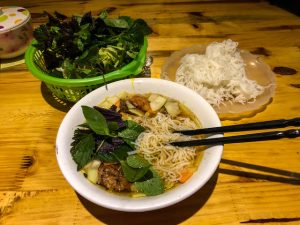
Backpacking accommodation in Vietnam
In Vietnam, there are countless places to stay and sleep, ranging from cheap hostels and guest houses to expensive hotels and resorts. Here you will find my recommended backpacking accommodation for Vietnam!
Is it easy to travel Vietnam solo?
None of your friends has time or interest to join you on a Vietnam backpacking trip? I know this problem pretty well! Fortunately, Vietnam is great for solo travelers.You will not have any problems getting to know other backpackers and travelers and since most people in Vietnam also have the same route (either from north to south or vice versa), you will probably see the same faces over and over again and maybe even meet people with whom you can travel together for some time. Especially the hostels are great for getting to know other travelers, as there is always a friendly and open atmosphere here full of solo travelers. In addition, tours (for example to Halong Bay) are a perfect opportunity to get in touch with other people.
You certainly won’t feel lonely in Vietnam!
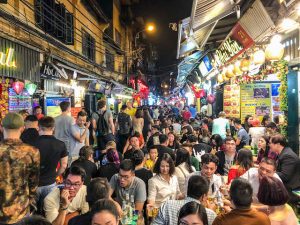
Backpacking Vietnam route and itinerary
Vietnam has so many attractions and destinations to offer that it might be a bit confusing at the beginning. Here I would like to explain some different travel routes and show you the best options for your Vietnam backpacking trip.
Backpacking Vietnam for 1 week
If you only have one week in Vietnam, I would focus on either the north or the south.
Do you like a tropical atmosphere and beach vacation? Then start in Saigon, take 2 days to explore the city and do a tour to the Cu Chi Tunnels. The rest of the time you could go to the beach town Mui Ne, the tropical island of Phu Quoc or on a trip to the Mekong Delta.
You prefer nature and beautiful landscape over tropical beaches? Take Hanoi as a starting point to explore the north of Vietnam. Plan around 2 days in Hanoi before visiting the surrounding areas. You can either take a one- or two-day trip to Halong Bay. If you would like to see the rice fields, you should head to Sapa or Mai Chau for 2-3 days. If there is still time left, you could think about a day trip to Ninh Binh.

Vietnam Backpacking for 2 weeks
If you have 2 weeks in Vietnam, you will be able to explore some of the highlights in the north and south of the country. I will describe the proposed route from north to south, but you can also travel the other way around.
After your arrival in Hanoi, you should take 2 days to explore the city with all its sights. In addition, Hanoi is also a great base for other places and you should take the opportunity to explore Halong Bay for 2 days and to spend 2-3 days visiting the rice fields in Sapa. If you have enough time, think about a day trip to Ninh Binh. As you can see, I recommend you to spend your first week mainly in the north of Vietnam.
Afterwards, you should take a cheap domestic flight to Hue. Here you can spend half a day exploring the imperial city of the former kingdom before taking a scooter tour along the Hai Van Pass to Hoi An. Take 2 days to explore the beautiful old town of Hoi An, with the beach close by and therefore a nice place to get some rest. Hoi An was probably my favorite place on my backpacking trip through Vietnam!
From Hoi An, the airport in Da Nang is easily accessible for the onward journey to Saigon. When you’re running out of time, just spend a day exploring Ho Chi Minh City. Further, you should take a trip to the Cu Chi tunnels, which takes about half a day on an organized tour.
Sounds busy, right? It is! If the proposed Vietnam backpacking route is too hectic for you, I would most likely skip Hue and fly from Hanoi directly to Da Nang, from where you will reach Hoi An.
Backpacking around Vietnam for 3-4 weeks
You have more time in Vietnam? Excellent! This gives you the opportunity to really get to know the country in depth. Of course, you should not miss out on the sights and destinations described above, such as Hanoi, Hue, Hoi An and Saigon.
With plenty of time, however, you have the opportunity to explore many other places in between. For example, you could visit the caves of Phong Nha, go on a motorbike tour around the Ha Giang Loop north of Hanoi, and relax on the beach for a few days either in Mui Ne or on the tropical island Phu Quoc. If you have enough time, you should also explore the Mekong Delta.
If you’re on an extensive Vietnam backpacking journey, you could also think about a detour into Cambodia! From Saigon, it’s not far to the border and you can visit the capital Phnom Penh as well as the famous temple complex of Angkor Wat.

More important backpacking Vietnam travel tips
Read more about the most important travel tips for Vietnam, so that you’re well prepared for your adventure.
Be careful when traveling during TeT
At first glance, it may sound like a cool experience visiting Vietnam during the Vietnamese New Year (called TeT). In reality, you should avoid this period! Since TeT are the main holidays in Vietnam, the whole country is on the move – everyone travels to his / her family’s home and therefore not only buses, flights and trains are completely overcrowded, overpriced and often fully booked, but the streets are empty and the shops are closed. Because during TeT, the family has priority and the locals are at home. TeT officially takes place over 3 days, but the country is affected by it for a week.
I arrived in Hanoi towards the end of TeT and actually struggled to find open restaurants to eat! Also, there could be problems in getting the visa in Vietnam: I met travelers who did not get their online visa (which normally takes only 3 days) in time, because the immigration office was shut down and closed for a whole week during TeT! The country basically stands still for a week. Therefore, you should avoid this time for your Vietnam backpacking trip or plan well in advance.
Skip the beach towns
Big cities, rice fields, mountains – Vietnam has a lot to see and the country is very diverse. Of course, there are also some beaches that you can visit. However, I have heard mixed reviews about many of the popular beach resorts. Especially the well-known tourist hotspots in southern Vietnam are very crowded and less authentic, full of drunk and wild party tourists (especially in Nha Thrang). Popular among backpackers is the beach town Mui Ne, which is also known for its sand dunes near the beach. I you’re there, you should be very careful when renting a scooter – the place is notoriously known for corrupt police officers stopping you and asking for a bribe. A nice place for a beach break is Hoi An.
In general, however, the beaches of Vietnam don’t come close to other beach destinations and I would recommend you to rather go to the beaches and islands of Thailand for a beach vacation.
Be prepared for crazy traffic
This is not only important for Vietnam, but probably for all of Southeast Asia. Nevertheless, the traffic in Vietnam is particularly extreme, especially due to the countless scooters on the streets. Crossing the road definitely requires some practice in Hanoi or Saigon! I recommend to just walk slowly but steadily straightforward. The Vietnamese are used to it and it works surprisingly well.
Always count your change
Especially in Hanoi it happened regularly to me that I received the wrong change after paying my bills. Of course, I do not want to imply that this was intentional – but it was actually noticeable and I recommend that you pay attention and count your money well.
Be aware of thieves on scooters
Vietnam is generally a safe destination, but beware of petty theft. Especially in the big cities like Hanoi and Saigon it often happens that thieves drive past tourists on scooters and grab their smartphones or bags out of their hands. So keep an eye on your valuables – for example, I would rather leave my smartphone in my pocket next to a busy street and turn away from the traffic if I want to use it.

Backpacking Vietnam: Best Places to Visit and Things to Do!
In the following, I’ll show you the best travel destinations and the highlights of the country, which I have split geographically into north, center and south.
Backpacking northern Vietnam
Let’s start with the most popular destinations in the north of Vietnam, which is known for the capital Hanoi as well as stunning nature!
Most likely, your trip to Vietnam will start in either Hanoi (North) or Ho Chi Minh City / Saigon (South), as there are the country’s two major international airports. Hanoi can be a bit hectic and chaotic at first glance, but I recommend you to stay at least two days in Hanoi and explore the sights of the city. Here you will find the famous Ho Chi Minh Mausoleum, the Citadel of Thang Long and several interesting museums, such as Hoa Lo Prison and the Military Museum. It is especially fun to explore the bustling old town with its busy streets and colorful markets. Further, Hanoi also has a super cool nightlife and the streets are full of people in the evenings.
Additionally, Hanoi is also a perfect base to explore the north of Vietnam (more below).

Halong Bay is probably Vietnam’s most famous attraction. The beautiful landscape with the karst cliffs stretches along the coast and is practically and easily accessible from Hanoi. You’ll be able to organize and book cheap trips to Halong Bay from every corner and every tour agency in Hanoi. While there are day trips to the bay, I would probably recommend you book a tour for two days, including a night in the bay.
There are hundreds of different tour agencies and options that vary in price and quality.
For backpackers, two tours are especially interesting: The “Halong Hideaway Cruise” with the Central Backpackers Hostel (the cheapest option that I have chosen as well) or the “Castaway Islands” tour with the Vietnam Backpackers Hostel (a huge binge drinking party – not my thing personally but people seem to love it). On both tours, you stay for a night or two on a “private island”, while during the day you can explore the bay and the islands by boat, kayak, bike or on foot.
Of course, you’ll also find some upscale options with beautiful cruise ships and overnight stays in single cabins aboard.
Do you want to explore Halong Bay independently and without a tour? You can settle down on Cat Ba Island in one of the guesthouses or hostels for a few days and do excursions around the bay from there.
You should certainly not miss a trip to Halong Bay when backpacking Vietnam!

The small town of Sapa is located in the north of Hanoi, near the border with China and in the middle of beautiful rice plantations. For a long time, Sapa has been a popular destination and a highlight for many travelers in Vietnam. However, during my stay in Vietnam in 2019, I’ve heard more and more critical voices about Sapa, which describe the place as too touristy, where visitors are often confronted with intrusive locals wanting to sell their tours and services.
Unfortunately, Sapa is no longer a real insider tip anymore. For its scenery and hiking, the place is still great to visit though. You can book tours to Sapa everywhere in Hanoi. Alternatively, you can reach the place by bus or train and explore the area on your own.
Are you worried that Sapa is a little too crowded and touristy for your taste? Then Mai Chau might be a good alternative. In the end, I also decided to go to this little village south of Hanoi in the rice fields instead. Here I spent two relaxing days in a homestay and explored the area by bike and scooter. Although the mountains and rice fields are are probably not as spectacular as in Sapa, the area is much quieter and less crowded. As another advantage, you can reach Mai Chau faster and easier than Sapa. It’s certainly a nice alternative!

Ha Giang Loop
The Ha Giang Loop is probably one of the most breathtaking areas in Vietnam, but is explored by surprisingly few tourists. Here you are in the far north of Vietnam, on the border with China in the mountains. The best way to explore the Ha Giang Loop is by motorcycle (you can rent one once you’re there)! For the journey, you should plan about 5 days in which you enjoy the incredible landscape.
Attention: In winter it can get very cold and wet, at higher altitudes it can even snow. So be prepared for this weather and bring enough warm clothes.
As you can see, the Ha Giang Loop is more appealing for adventurous travelers. If you do not feel safe on the bike, there are also organized tours where you can sit on the back seat.
Ninh Binh (Tam Coc)
This area is located south of Hanoi and is referred to as “dry” Halong Bay due to the impressive karst cliffs. Here you can enjoy the beautiful landscape with rice fields, caves and rivers, along which you can discover Tam Coc also by boat. It is also worth visiting the Hang Mua lookout point for a nice panorama.
Caves of Phong Nha-Ke Bang
In addition to mountains and bays, Vietnam is also known for its incredible caves. Especially in the Phong Nha-Ke Bang National Park you will find some impressive cave and the area is even a UNESCO World Heritage Site. Here you will also find the largest cave in the world (Son Doong), which is unfortunately a bit difficult for tourists to access. Very popular on a backpacking Vietnam trip is the Phong Nha Cave or the Thien Duong Cave (Paradise Cave) .
The starting point for tours into these caves is the village of Dong Hoi, which you can reach by bus or train from Hanoi (north) or Hue (south).
Backpacking Central Vietnam
On your backpacking journey through Vietnam you will probably pass through the central part of the country. Read more about the places you shouldn’t miss!
The old imperial city of Hue is a popular stopover for travelers traveling on their Vietnam backpacking trip, since the Imperial City is one of Vietnam’s most famous tourist attractions. I’m honest – the Imperial City did not really impress me that much and while it’s historically very significant, I did not find it particularly worth seeing. Still, I wouldn’t recommend skipping Hue, especially since the location is perfect as a start or end point for a trip across the Hai Van Pass by motorbike. However, I wouldn’t spend too much time here (a day should be enough).

Hai Van Pass
The road over the mountains on the coast between Hue and Hoi An is considered one of the best motorcycle roads in Vietnam and is a real highlight on your backpacking journey. The best thing is that you do not have to miss out on it even if you have little or no experience in motorcycling. You can easily book tours in both Hue and Hoi An, where you get a guide for the journey and if you don’t want to drive yourself, you can sit on his back seat. In addition, your luggage will be brought to the final destination in a car and you don’t need to carry it. During the trip, you will have a few stops at viewpoints, waterfalls and other attractions. Certainly a cool experience!

The coastal town of Da Nang is located roughly between the Hai Van Pass and Hoi An and is a convenient hub for Vietnam travelers due to its international airport. In Da Nang, you find a large harbor, city beaches and the city is also known for the fire-breathing dragon bridge!
Further, Da Nang (as well as Hoi An) is a good starting point to visit the recently famous Golden Bridge (Cau Vang) in Bà Nà Hills Resort. Note, however, that the images on social media probably do not quite demonstrate the truth and the bridge can be quite crowded. The admission fee is also surprisingly expensive for Vietnamese standards (about 30 €).
Let’s continue with one of my favorite places in Vietnam! Hoi An is arguably the most beautiful city in the country and is known as the “City of Lanterns”. Especially the old town is one big tourist attraction with the colorful streets full of lanterns, creating a fantastic atmosphere especially in the evening. In addition, Hoi An is located close to beach and surrounded by beautiful rice fields. I spent almost a week in Hoi An and really enjoyed my stay.
Backpacking southern Vietnam
Vietnam’s south has some more sights and highlights for travelers to offer!
Ho Chi Minh City (Saigon)
Similar to Hanoi, many tourists will sooner or later spend a night or two in Saigon. The metropolis of South Vietnam was for me not as authentic and exciting as Hanoi, but a lot more modern and developed. In Saigon, there are some cool places to visit and you shouldn’t miss especially the famous “ War Remnants Museum “, where you can learn more about the Vietnam War. Besides that, you can also visit the historically significant Reunification Palace and some beautiful colonial buildings.

Cu Chi Tunnels
Ho Chi Minh City is also the perfect base for a trip to the Cu Chi Tunnels outside the city. These tunnels were used during the Vietnam War in the jungle in the fight against the (US) enemies and it is super exciting and also shocking to learn more about this time. You can even walk through some of the tunnels yourself!

Nha Trang is one of the most popular beach towns in Vietnam. However, I have heard some mixed (and mostly negative) things about this place. Personally, I have not visited Nha Trang but apparently the beach is pretty crowded and dirty. Moreover, the place is flooded by party tourists, which doesn’t really help for a relaxing and chilled time on the beach. However, if party and nightlife is important for you, it may be worth a visit.
Far away from the coast, in the mountainous region of southern Vietnam, lies the town of Dalat, which is becoming increasingly popular among tourists. Here you can explore the almost untouched nature and find waterfalls, temples and beautiful landscapes.
The beach town Mui Ne is very popular with backpackers in Vietnam. What makes this destination special are the sand dunes, where you feel almost like in the desert. In addition, Mui Ne is also perfect for water sports. Conveniently, you can reach Mui Ne in just a few hours from Saigon.
Mekong Delta
The area around the Mekong Delta spans across southern Vietnam and is undoubtedly one of the most famous places in Vietnam. The rivers of the Mekong create a beautiful environment and you find marshes, rice fields, villages and floating markets along the Mekong. The best starting point to explore the delta is probably the city of Cần Thơ in the middle of the Mekong Delta.
Although you can also find day trips from Saigon to the Delta, I heard mixed reviews and people told me that they felt like they’d be on a big shopping trip while there was not enough time to visit the real natural highlights of the area.
Phu Quoc Island
In the southwest of Vietnam and geographically very close to Cambodia lies the island of Phu Quoc. This place is perfect for a beach vacation and relaxation at the end of your Vietnam backpacking trip. Nevertheless, you should not only lie on the beach, but also take the opportunity to explore the great scenery and the nature of the island.
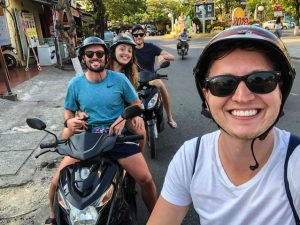
Conclusion on backpacking Vietnam
I hope I could tell you more about backpacking Vietnam and I hope that my guide is useful for you. The country is beautiful and with my travel tips, route proposals and best places to visit you should be well prepared for your trip through Vietnam.
Have you been to Vietnam? How did you like it? Let me know in the comments!
This post includes affiliate links marked with (*). If you buy a product through these links, I earn a small commission. There is no extra cost for you and your purchase helps me running this website. Thanks for your support!

Patrick Muntzinger - German Backpacker
Patrick is the founder of the bilingual travel blog "German Backpacker" and writes on this website about his adventures and experiences exploring every part of the world!
- Meet the Team
- Work with Us
- Czech Republic
- Netherlands
- Switzerland
- Scandinavia
- Philippines
- South Korea
- New Zealand
- South Africa
- Budget Travel
- Work & Travel
- The Broke Backpacker Manifesto
- Travel Resources
- How to Travel on $10/day
Home » Southeast Asia » Vietnam » Packing List
22 Items You NEED in your Vietnam Packing List (2024)
Vietnam is well and truly entrenched as part of the Southeast Asia backpacking route and is fast establishing itself as a destination in its own right. It’s very easy to see why too, it offers lush jungle, adventure opportuinties, amazing food and an intriguing history.
Yes, so Vietnam is amazing and it is calling your name! If you are wondering what to bring to Vietnam, then you are in the right place.
Read on for your top 22-needs packing list, tips on what to wear that’s appropriate for Vietnam street fashion, a breakdown of what to pack for Vietnam by seasonal weather conditions.
By the time you get through all the good stuff we put together for you, you’ll be more ready than ever to explore pagodas in Ha Noi and Ho Chi Minh City, lounge on Nha Trang Beach, stroll along the streets of charming Hoi An, cruise through Halong Bay and dig into some tasty pho !
Let’s get started!Final Thoughts on What to Pack for Vietnam
The Ultimate Vietnam Packing List
What to pack for vietnam checklist: personal gear, the basic stuff to pack for vietnam, final thoughts on packing for vietnam.
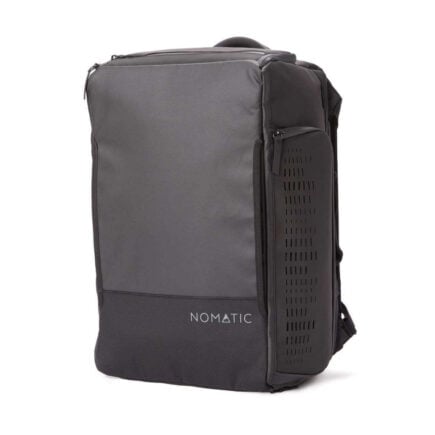
Nomatic Travel Bag
- Capacity > 30L
- Price > $299
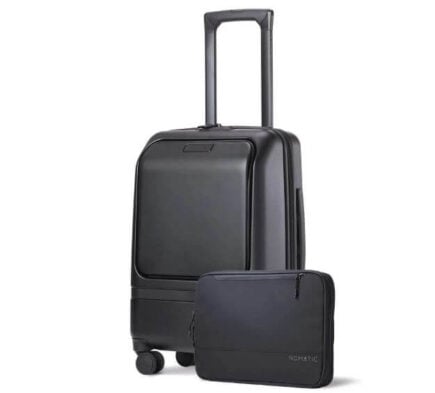
Nomatic Navigator Carry On
- Capacity > 37L
- Price > $400
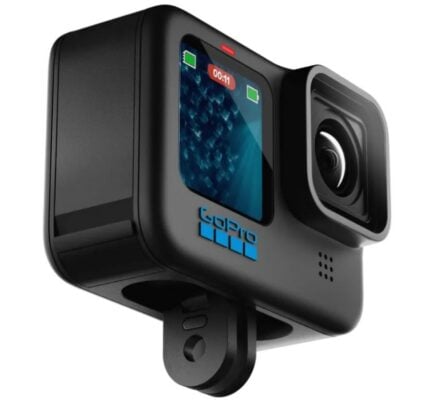
GoPro Hero 11
- Resolution > 5k
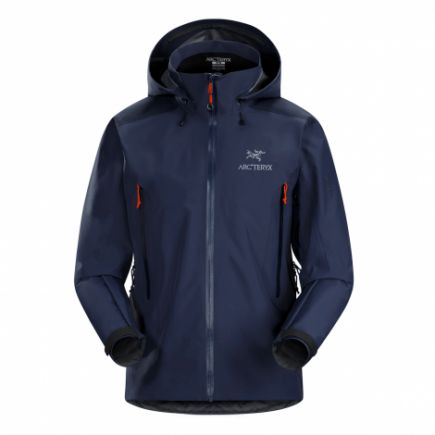
Arc’teryx Beta AR Jacket
- Price > $600

Insurance From World Nomads
- Price > Click For a Quote
Packing for Vietnam is made easy thanks to us. Read on to find out what to bring to Vietnam.
The Broke Backpacker is supported by you . Clicking through our links may earn us a small affiliate commission, and that's what allows us to keep producing free content 🙂 Learn more .
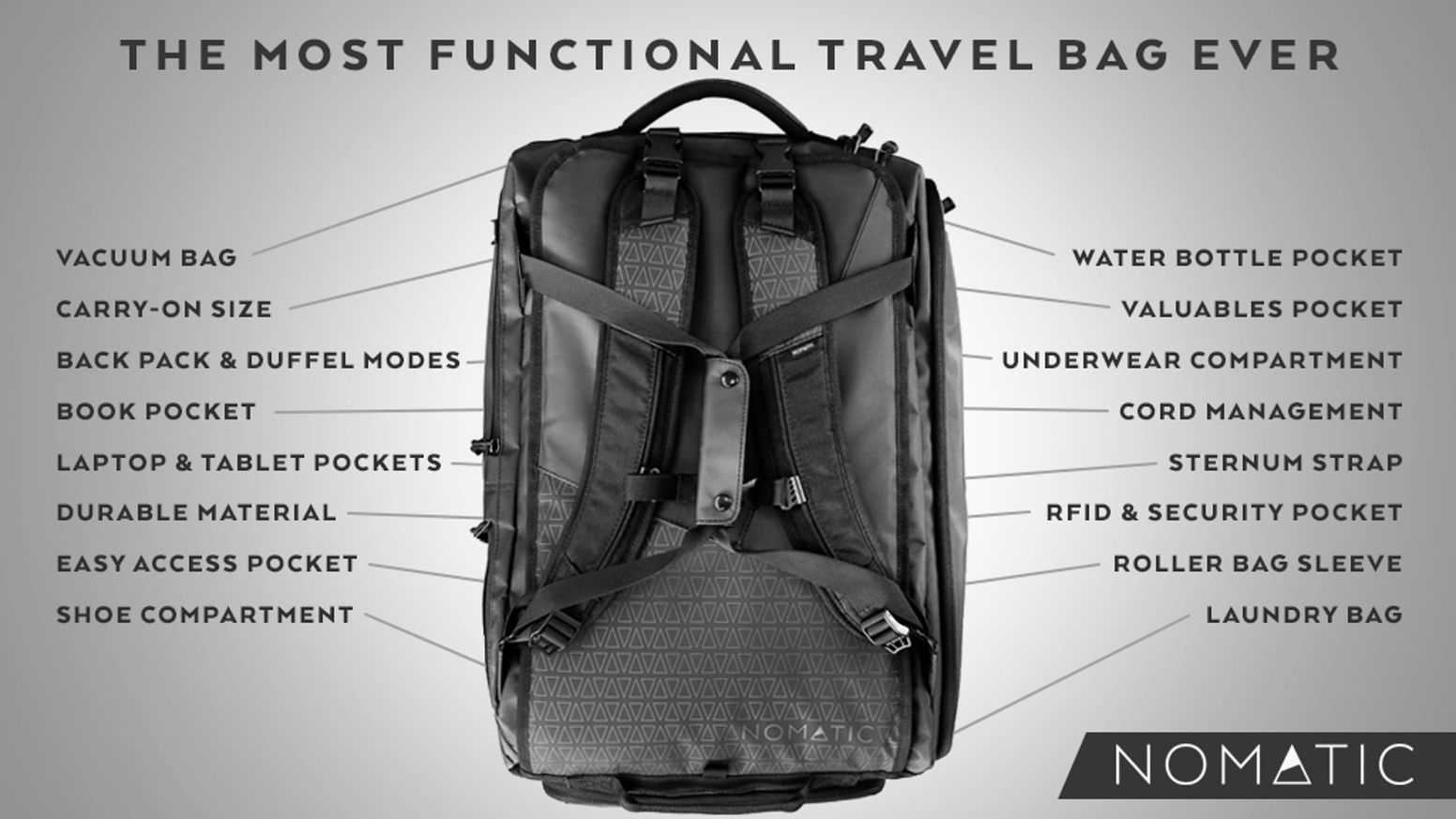
Best Backpack For Vietnam: Nomatic Travel Bag
Before you even take on the task of figuring out what to pack for Vietnam, you’ll need an amazing backpack to pack it all into. For all types of travelers and destinations, our number one recommendation is the Nomatic Travel Bag .
The Nomatic travel bag covers every detail to make backpacking travel the best experience. Because of its smart design, it manages to provide loads of packing space in a convenient, carry-on size package! Its handy built-in pockets make plenty of room for all the necessities on your what to pack for Vietnmam checklist – you’ll find separate compartments for important items like shoes, water bottle, electronics, underwear and socks. As an added bonus, there’s also an RFID-safe and cord management pocket.
You have a choice between backpack or duffel bag carry, and extra carrying comfort for your back thanks to its innovative strap system and detachable sternum strap. And its black, waterproof material is every bit sleek and modern as it is durable and tough. There is a reason why most Broke Backpacker staff swear by this backpack.

Unlock Our GREATEST Travel Secrets!
Sign up for our newsletter and get the best travel tips delivered right to your inbox.
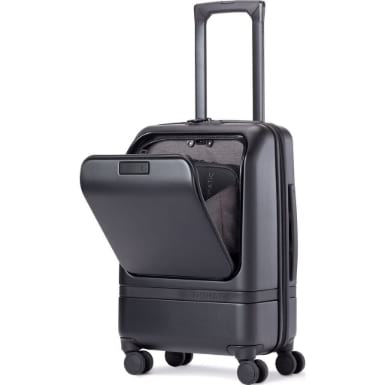
Best Suitcase For Vietnam: Nomatic Carry-On Pro
Backpacks not your thing? That’s ok. Our friends at Nomatic are back again with a great alternative to their badass Travel Bag; the Nomatic Carry-On Pro.
This suitcase is ultra-durable, sleek, and comes with a handy tech compartment for transporting your laptop and other electronic bits. Nomatic has been an industry leader when it comes to travel gear and that reputation is reflected in the quality build design and functionality of the Carry-On Pro suitcase.
Check out our Nomatic Carry-On Pro review to learn more about this epic suitcase.
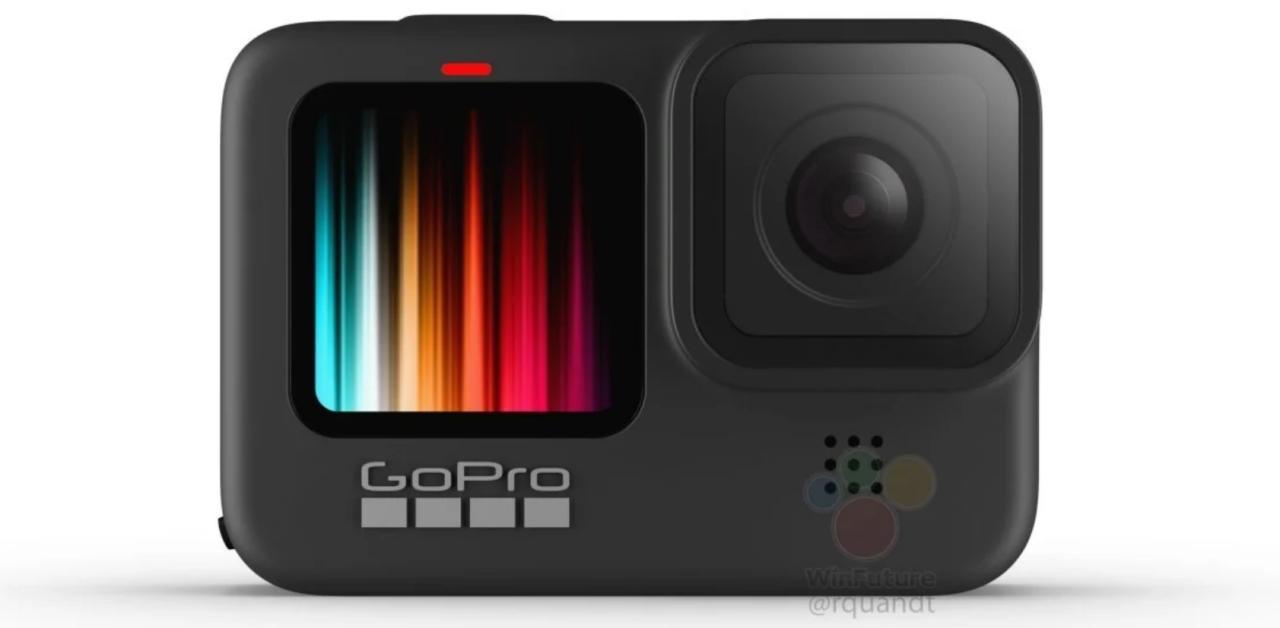
Best Camera For Vietnam: GoPro Hero9 Black
For most of us, our smartphones now feature cameras with stunning photo capabilities.
But… if you are an aspiring photographer who wants to take next-level photos and video beyond iPhone selfies, I recommend going with an action camera like the GoPro Hero9 Black .
It does deliver pro-quality video and gives you a bunch of a different angle options and shooting speeds to work with for photos (including a selfie-mode).
Think of a camera purchase like this as a long term investment that will have you capturing epic shots well beyond your time exploring here.If you are looking for something cheaper for video specifically, check out these epic GoPro Alternatives .
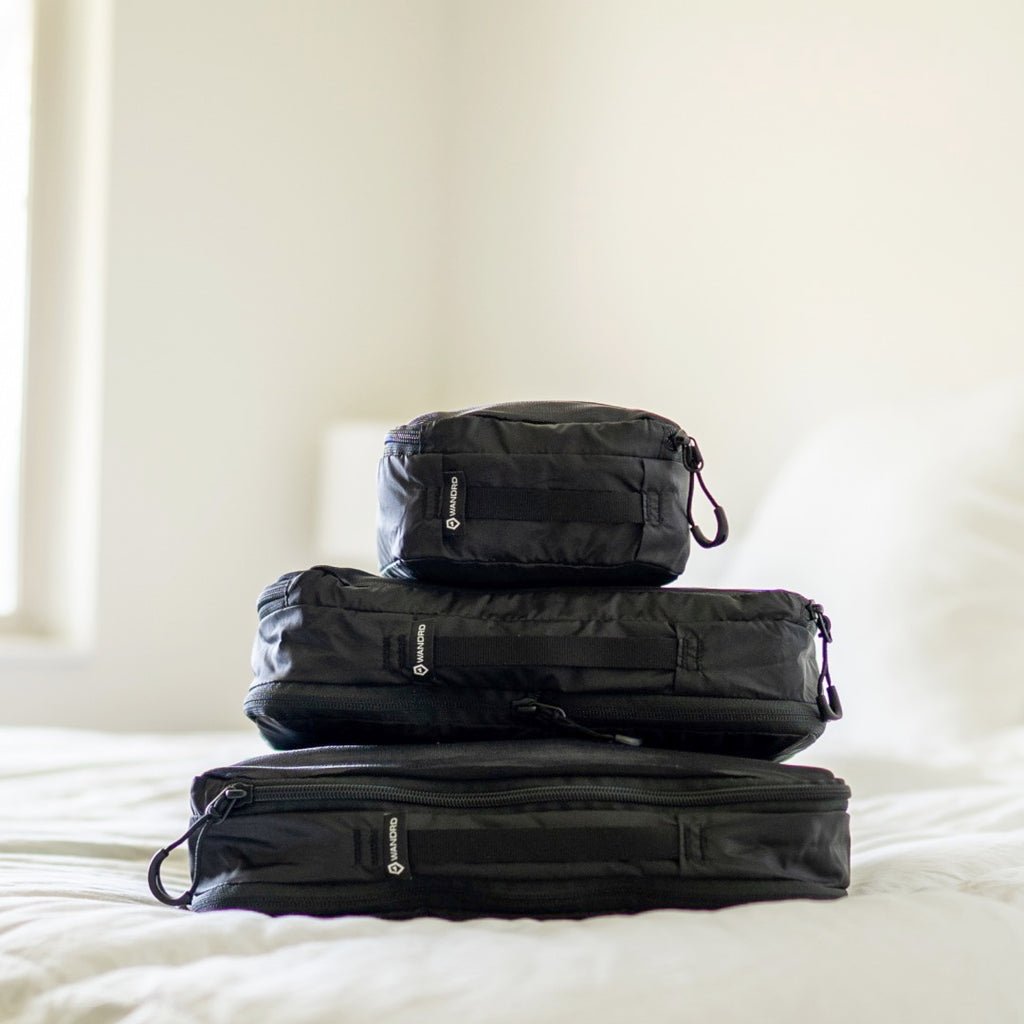
Packing Cubes For Vietnam – Wandrd Packing Cubes
In case you have never used them, packing cubes are little compression cubes that allow you to neatly pack clothes in in order to help facilitate better packing. They allow you to pack more stuff, and to keep it all better organised.
For the longest time, I thought that packing cubes were a superfluous indulgence, but boy was I wrong. Now I never travel without a few.
These ones from WANDRD are great quality and excellent value for money.
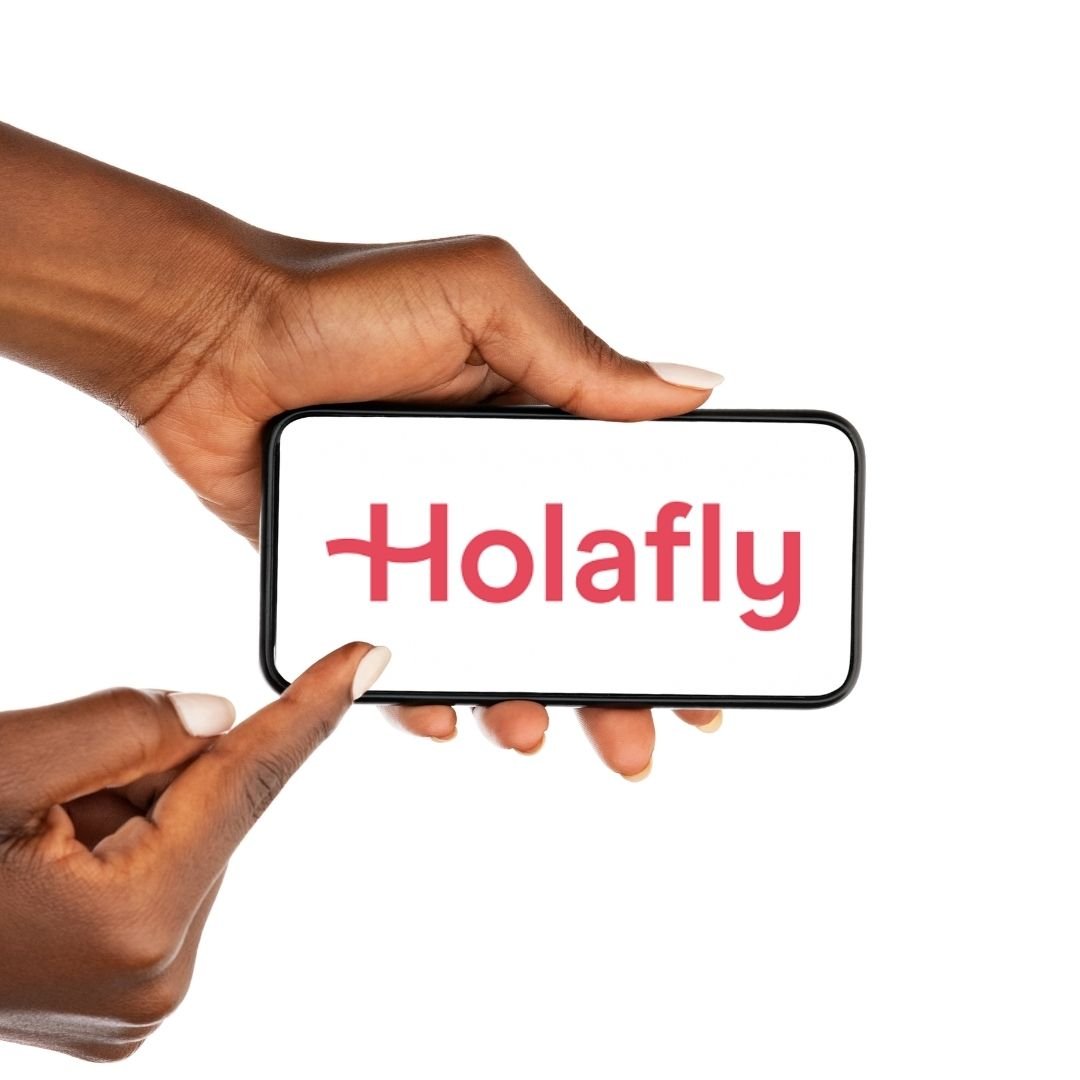
Best Sim For Vietnam – HolaFly eSim
The good news about ‘Nam is that there is excellent 4g and 5g Internet coverage, taxi apps and food delivery apps in all cities and towns (but it does get patchy once you venture out into the wilds and wilderness). The bad news is that your native SIM card will probably not work and so you will not be able to access any of this online goodness until you rectify that particular situation.
You can waste time hanging around phone shops queuing to get a plastic sim or you can is,ply install a eSim onto your phone before you leave home. You just access the HolaFly site, choose the Vietnam, package, download it and off you go – you are online the moment you land at the airport.
eSims are easier to set up and better than the environment than plastic sims. The downside is that not all phones are eSim ready.
Vietnam may be a culture shock to some travellers. To minimise this, we strongly suggest taking the time to get your Vietnam packing right. Choosing the right clothes to wear in Vietnam, and the right electrical to bring can make all the difference between feeling over-whelmed and read to take on the world! Remember that Vietnamese culture is a tad conservative so dress respectfully especially around religious sites.
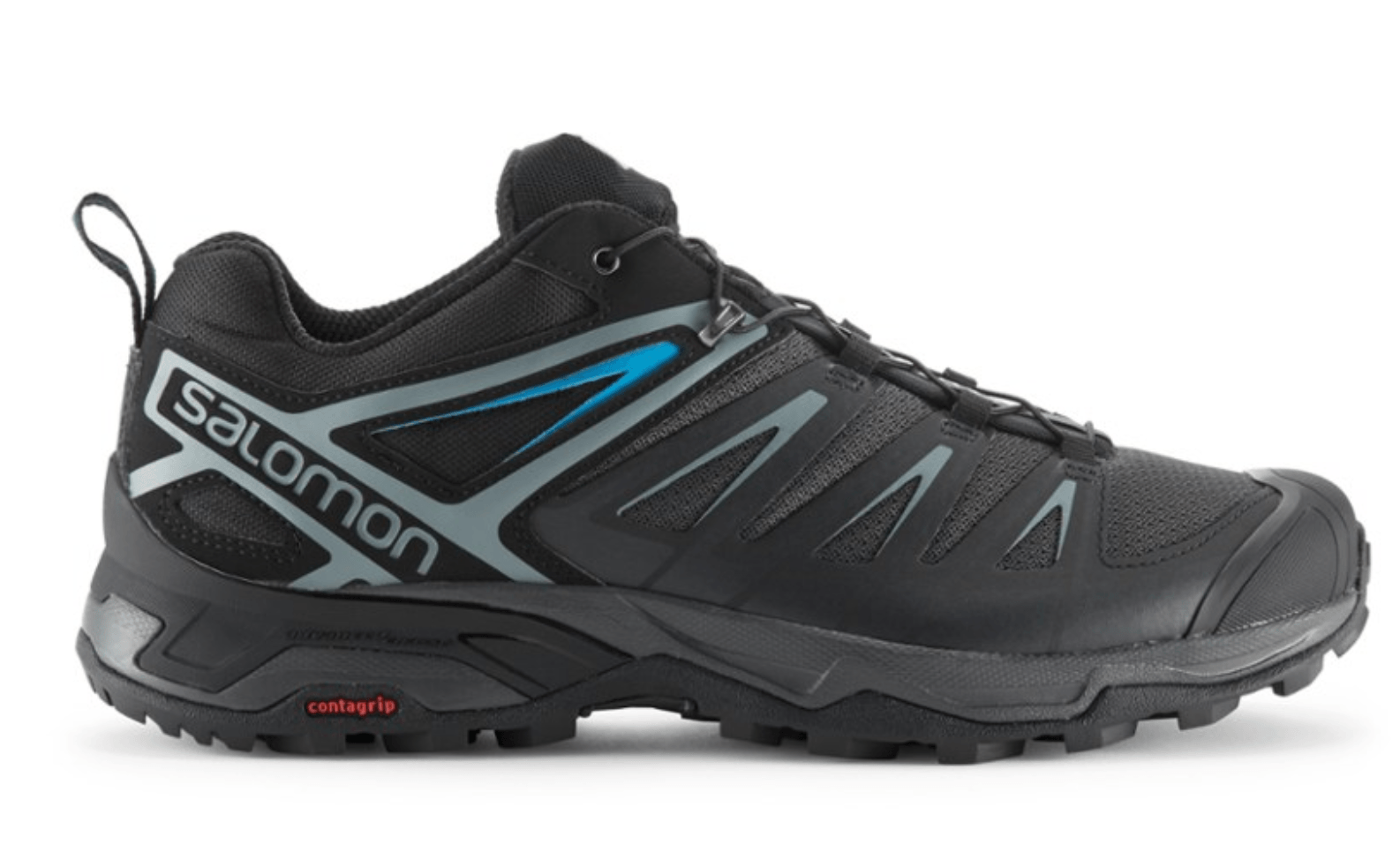
Best Shoes For Vietnam – Salomon X Ultra 3 Low Aero
Visitors to Vietnam are often tempted to live in flip flops. To be fair, many of the locals do. However, we strongly advise you do your feet a favour and get some proper supported, closed walking shoes. These are great for city sightseeing, trekking in the jungles and great for riding motorbikes. Do NOT attempt to ride a motorbike in flip-flops unless you are blaise about losing a foot.
I admit that most shoes that are also good for hiking are not the most attractive pieces of footwear. But they are some of the most comfortable and deliver good ankle support for a long day of walking about town. I mean, your body is already going to be suffering enough from all of those 2-for-1 shots and bottomless mimosas you will be drinking, so do yourself a favor and buy some good shoes.
Check out the women’s Salomon X Ultra 3 Low Aero .
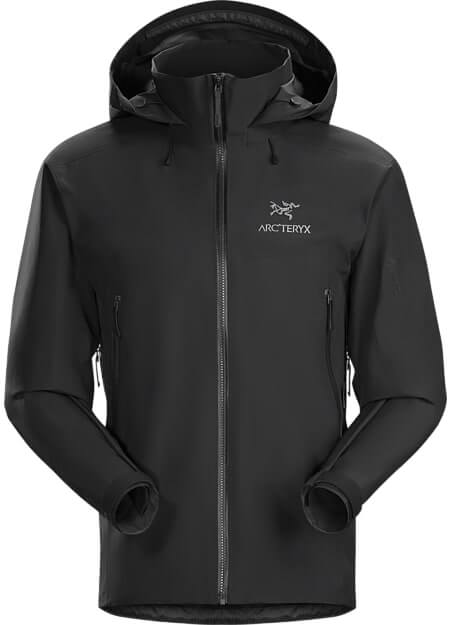
Best Rain Jacket For Vietnam – Arcteryx Beta AR
There is no such thing as bad weather, only the wrong gear for it. Don’t let a bit (of a lot) of rain ruin your trip and make sure you are ready with some top notch rain gear.
Vietnam can be very hot but it can also be very, VERY wet. It all depends on when you visit and where exactly you go.
This is our pick of the many rain jackets we have tried. It’s reliable & stylish and looks good worn out in the mountains or in city bars.
Word up, Arc’teryx does not make cheap gear but it is worth it. If you want a cheaper brand then check out a Patagonia rain jacket instead.
Travel Insurance From World Nomads
ALWAYS sort out your backpacker insurance before your trip. There’s plenty to choose from in that department, but a good place to start is Safety Wing .
They offer month-to-month payments, no lock-in contracts, and require absolutely no itineraries: that’s the exact kind of insurance long-term travellers and digital nomads need.

SafetyWing is cheap, easy, and admin-free: just sign up lickety-split so you can get back to it!
Click the button below to learn more about SafetyWing’s setup or read our insider review for the full tasty scoop.
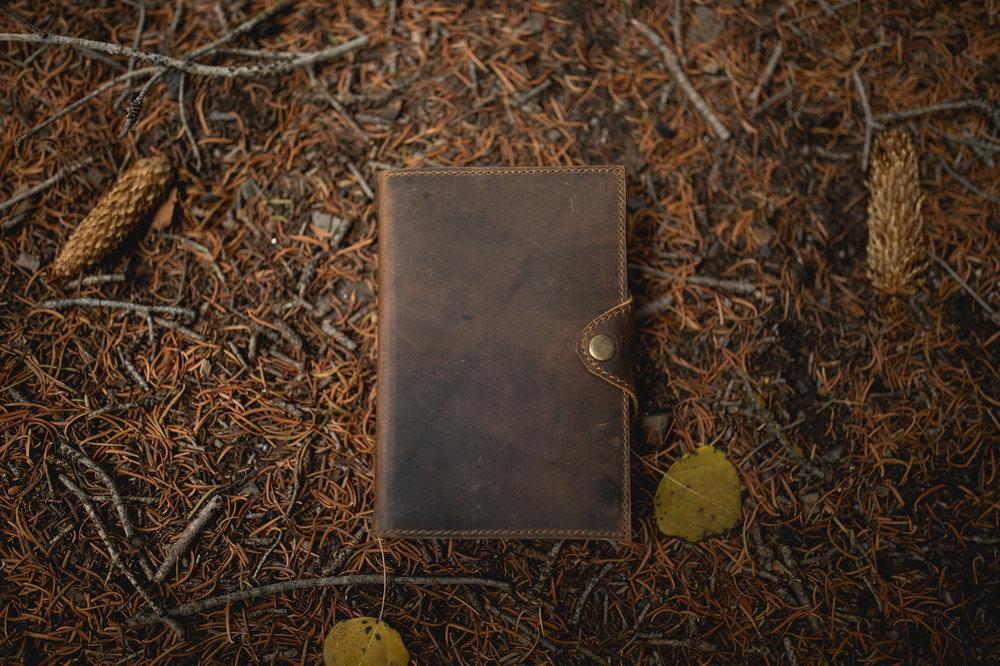
Planner/Travel Journal
Keeping a journal is one of the best things to do when traveling. The Drifter Leather Journal by Kodiak is our favorite, it works great for digital nomads and organized backpackers and can be used as planner or a dream diary – whatever you want!
Keep on track with your goals, travels and save those precious memories, especially the ones you do not want to share online. This one is bound in beautiful leather so it looks beautiful and will withstand life on the road.
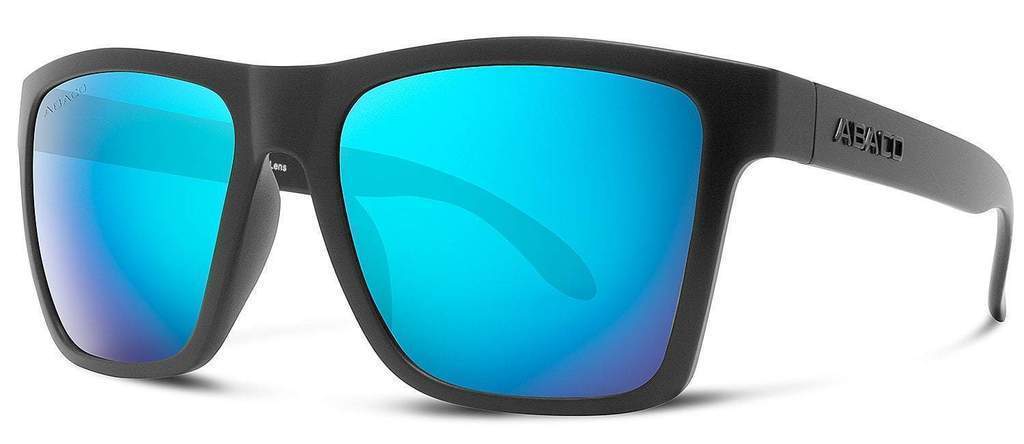
Best Sunglasses For Vietnam – Abaco Sunglasses
A reliable pair of sunglasses is undoubtedly one of your Vietnam packing essentials. Our favorites are Abaco Polarized Sunglasses because they deliver on quality and style.
They’re built tough with triple-layer scratch-resistant lenses and trademarked Adventure-proof Frame Material. You can also customize them with your choice of lens and frame colors to reflect your own style.
When you visit Vietnam, don’t let sun glare burn your retinas out! Get some good sunnies and stay stylish whilst staying safe.
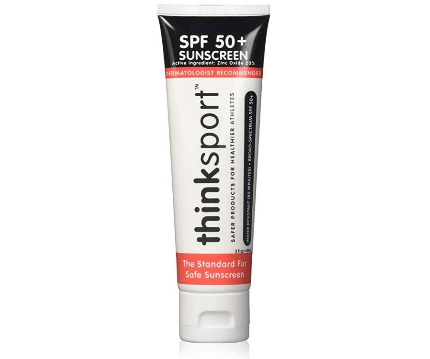
Suncream: Thinksport Safe SPF 50+
By now, all of us are as pasty as the driven snow from sheltering in place for the last six months. Am I right? This means we are even more vulnerable than usual to the sun’s fierce rays. Packing sunscreen for Vietnam may seem like a no brainer, but you would be amazed how many sun-burned cocktail-toting people you see wandering around.
Thinksport Safe SPF 50+ sunscreen gives folks strong sun protection in a non-oily formula that’s free of gluten, paraben, phthalates and biologically harmful chemicals. Your packing list for Vietnam should include at leats one tube of good quality suncream to keep you skin nicely protected.
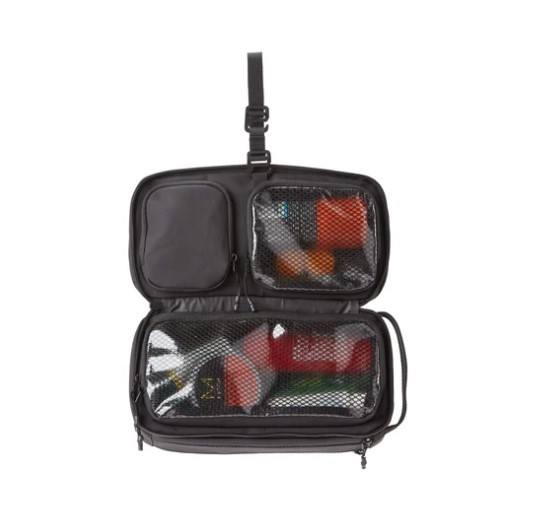
Hanging Toiletry Bag
Another backpacker/traveler favorite for staying organized is a hanging toiletry bag . It’s extremely helpful to have all of your accessories neatly gathered in one bag that you can hang for easy accessibility, especially when counter space isn’t plentiful or even available. A well-organized bag is worth having whether you’re tree whilst camping or a hook in the wall – it helps to have quick access to all your stuff.
Historically, I have been the guy who has my stuff all over the bathroom, so getting one of these things really changed the toiletry game for me. Plus they are not too expensive either. A no-brainer essential. The best thing about them, is that you get to keep all your toiletries in one place which is really handy for bouncing between hostels.
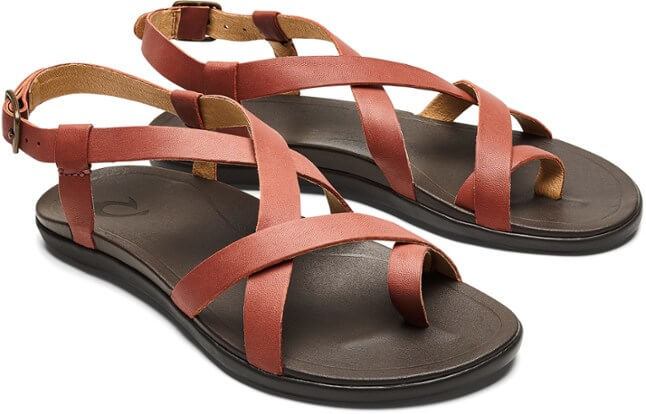
Best Sandals For Vietnam: OluKai ‘Ohana Flip-Flops
Circling back to the footwear question, now we are going to talk about sandals. These are very useful for Nam as it can get sweaty as hell and make a great accompaniment to those hiking shoes we told you to buy.
Your feet will be tired and sweaty from those long days wearing shoes so do yourself a favor: pack sandals and give your feet some well-deserved cushion and fresh air. These Olukai flip flops are ultra-comfortable, well-made, and come in a variety of colors. Whilst these are great to wear in Vietnam, do not ride a motorbike in them – use proper shoes instead.
Check out the women’s OluKai ‘Ohana Flip-Flops .
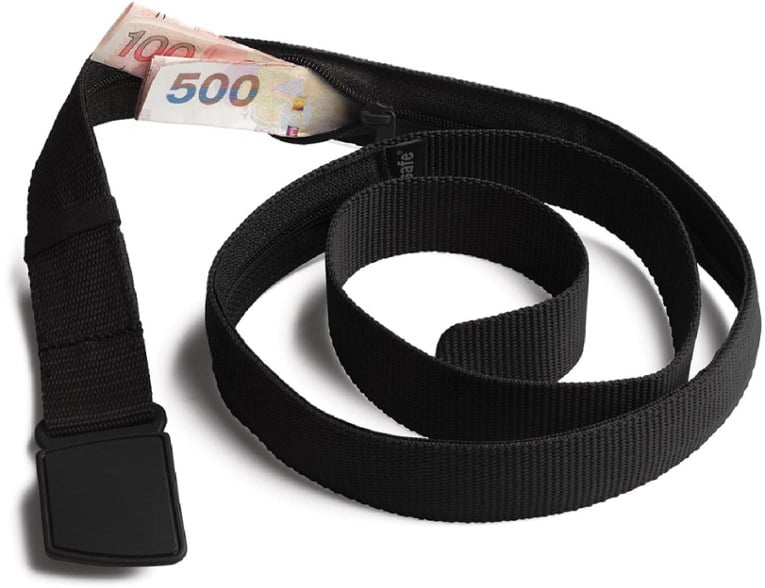
Money Belt – By Pacsafe
Whilst Vietnam is not particularly dangerous, crime does still happen and tourists are sometimes targeted.
When you are visiting Vietnam, do take care in busy cities and be especially mindful at night after a few beers.
To avoid losing all your cash at the hands of a thief, it is always a good idea to use a money belt to hide your cash just in case something does go wrong.
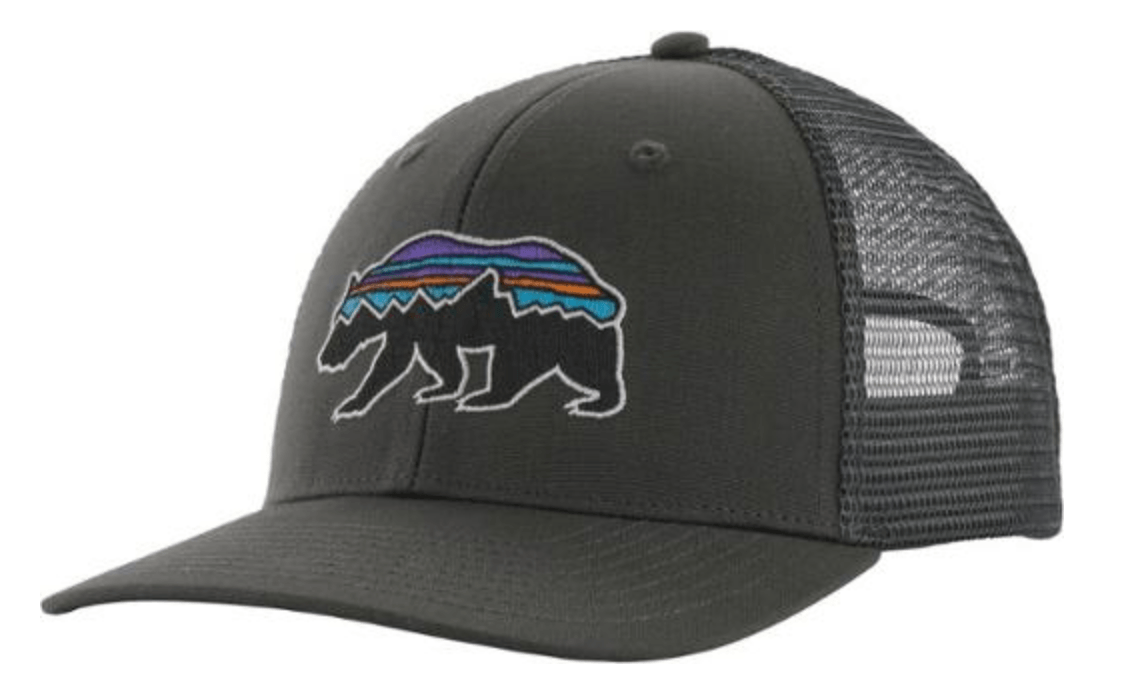
Best Hat For Vietnam – Patagonia Fitz Roy Trucker
As you should know by now, the sun in Vietnam is strong and you will undoubtedly be spending a lot of time outside. Having a hat on your Vietnam packing list is a good way to ensure your face is protected from the sun throughout the day.
Patagonia makes great hats. I have probably bought three or four of these over the last five years. Simple. Practical. Comfortable. That is what you are after.
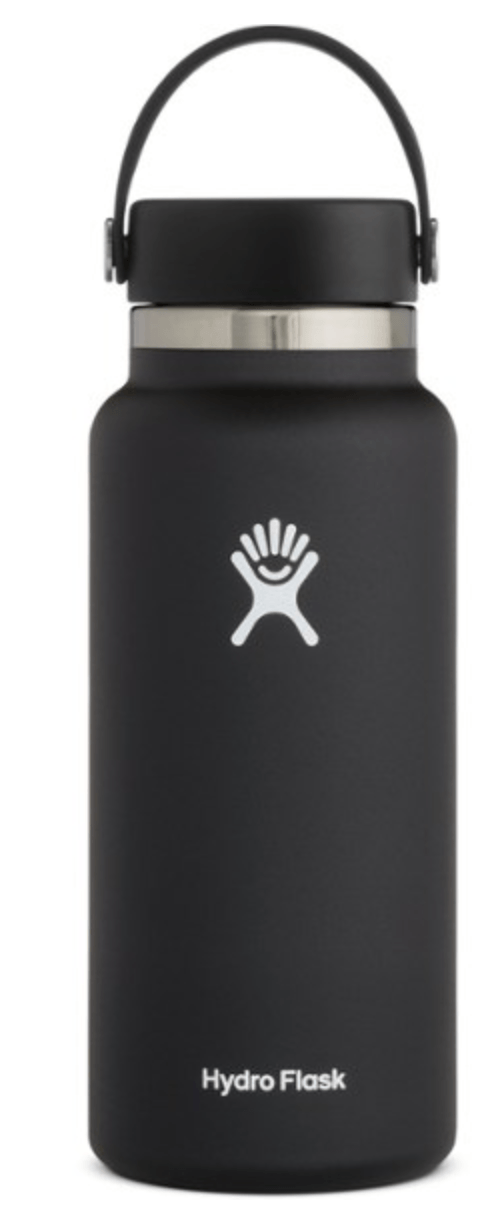
Best Waterbottle For Vietnam – Hydroflask Vacuum Bottle 32 oz.
Packing a reusable water bottle is probably the best thing you can personally do to combat single-use plastic bottle use whilst traveling. There is simply zero need to buy plastic water bottles. We suggest buying big 5 litre bottles of water and filling this up each day.
We love the Hydroflask Vacum Bottle for its quality and because it keeps cold water cold for many hours and vice versa for hot beverages. This bottle is the ideal water bottle to get not just for your Vietnam trip but for daily use. Please don’t be that person buying plastic water bottles. We are all judging you…especially mother earth.
If you go with the Hydroflask, you’ll probably never need to buy another waterbottle again.
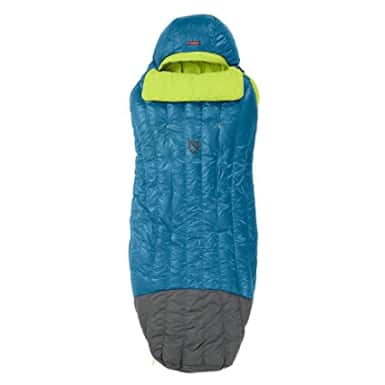
Best Sleeping Bag For Vietnam – Nemo Disco 15
Camping out under the stars is great and Vietnam presents some awesome camping opportunities. If you are headed into nature, then please for the love of Uncle Ho bring a good bloody tent and a proper sleeping bag.
There are a LOT of sleeping bags on the market today and we have tried a lot of them. The quality and standards varies and not always in correlation with the price – pricey does not always mean better. The Nemo Disco 15 is a great all rounder sleeping bag packing in warmth, durability and a reasonable price tag.
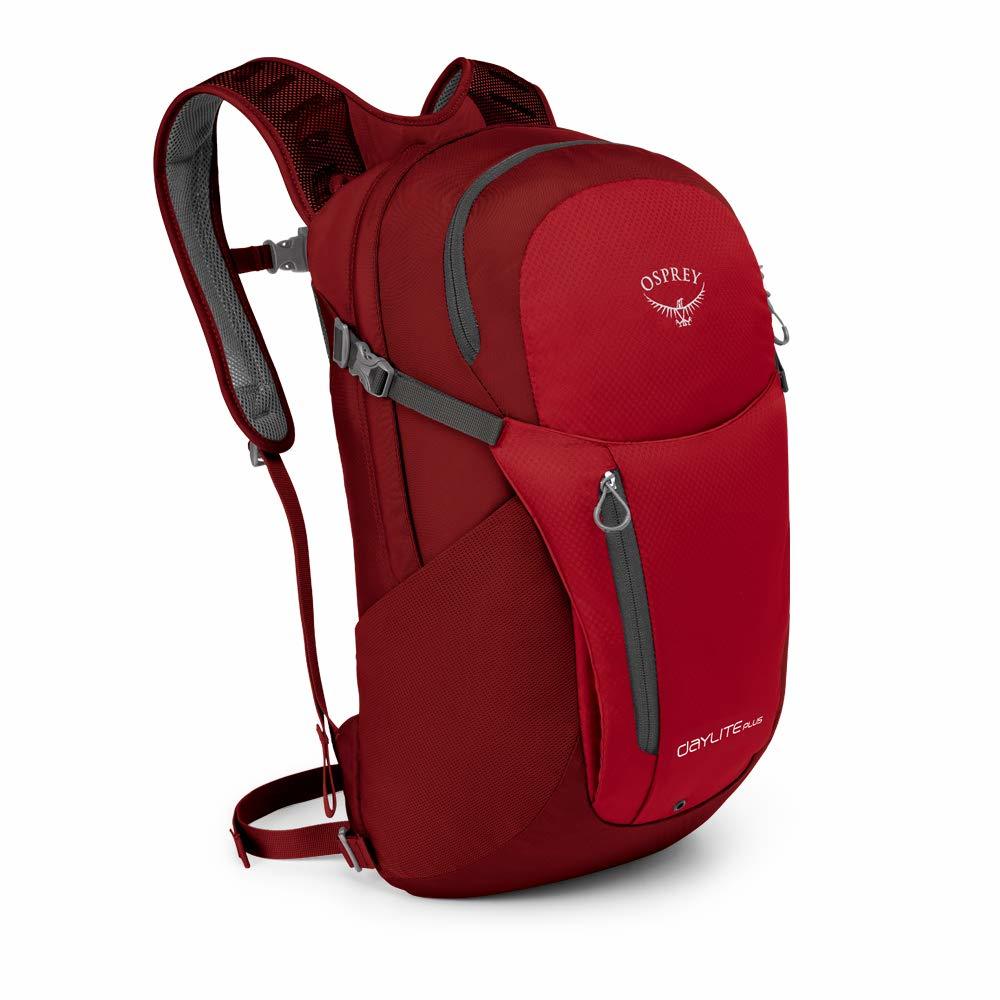
Best Daypack For Vietnam – Osprey Daylite Plus
If you intend on doing any hiking, bike trips or bussing around the country then you will need a daypack. They are great for carrying water, hat’s and gloves and for packing sandwiches for lunch. We love Osprey products and this daypack is our personal pick.
The Osprey Daylite Plus has a mesh-covered panel to keep your back cool and fresh by minimizing contact with the back of the pack itself and allowing air to get between you and the pack.
Check out our full review of the Osprey Daylite plus for more details.
Additionally, you can attach it to other Osprey packs in case you want to add more capacity and carry just one piece of luggage… but the reviews on this feature are mixed.
On top of the essential items listed above, here is an additional suggested checklist of what to pack for a trip to Vietnam:

- A pairs of comfortable pants/jeans
- 1-2 pairs of shorts (summer/late spring)
- A few pairs of socks
- (Sexy) underwear x 2/3
- Ladies: a few dresses, pants, outfits, or desired lady apparel for a night on the town. Its not essential though.
- Dudes: A few collard shirts or something half-way decent for a night on the town. Whatever makes you comfy!
- Smartphone with a good camera for photos if you are not bringing an actual camera
- Portable power bank for charging your phone on the go
- Phone charger
- Amazon Kindle for reading by the pool
- Copy of your passport just in case
- Cash (ATM’s can be hard to find in some regions)
- Packable Towel

Our GREATEST Travel Secrets…
Pop your email here & get the original Broke Backpacker Bible for FREE.
And that’s all, folks! Your complete Vietnam survival guide – a detailed breakdown of Vietnam packing essentials including a top 22-needs packing list, tips on what to wear that’s appropriate for Vietnam street fashion, and how to pack for Vietnam weather by season. We hope you found our recommendations for gals and guys – and what NOT to pack – helpful too!
Just remember to pack light, pack smart and be a respectful tourist – and the rest will take care of itself. You’re in for a beautiful experience in Vietnam , so get out there and enjoy every minute!

Share or save this post

Leave a Reply Cancel reply
Your email address will not be published. Required fields are marked *
Save my name, email, and website in this browser for the next time I comment.
Notify me of followup comments via e-mail.
Nomadic Matt's Travel Site
Travel Better, Cheaper, Longer
Southeast Asia Travel Guide
Last Updated: November 27, 2023
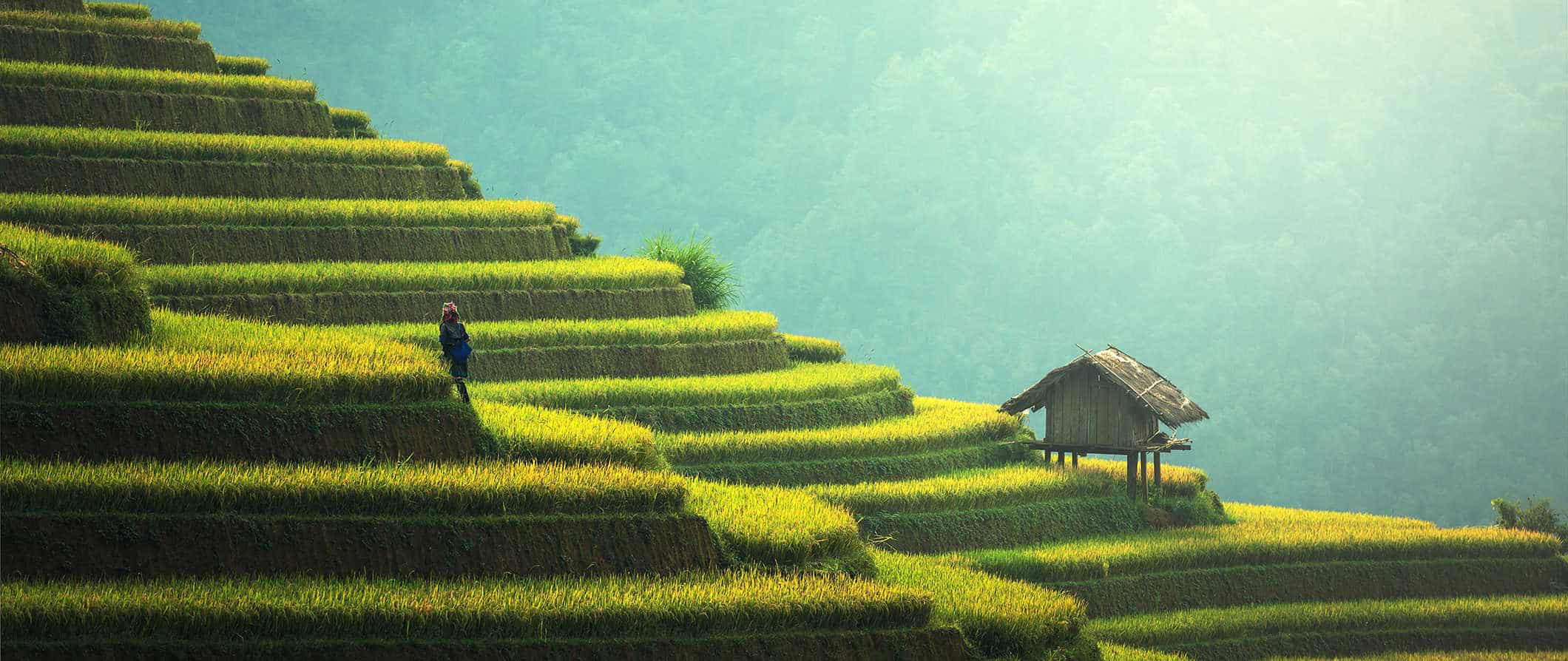
Backpackers have been traveling through Southeast Asia since the late 1960s and early 1970s, leaving a well-worn trail around the region.
Starting in beautiful Thailand, the trail makes its way to up-and-coming Laos, through Vietnam, and to the temples of Angkor Wat. It then winds back into Thailand, where people head south to party in the Thai islands before moving down to Malaysia and Singapore.
There are a few variations to the trail, but this is what it mostly covers.
I’ve been visiting this region since 2004 and spent years living in Thailand . I love backpacking Southeast Asia and have written extensively about it as I know it like the back of my hand.
It’s an especially great region for new travelers because it’s easy to travel around, it’s safe, and there are lots of other travelers you can meet. But it’s also perfect for veteran travelers too as there are tons of off-the-beaten-path destinations that the standard backpacker trail doesn’t cover.
In short, Southeast Asia has something for every traveler — and every budget.
This Southeast Asia travel guide will help you travel the region like a pro, ensuring you save money and make the most of your time in this fun, gorgeous, and lively corner of the world.
Table of Contents
- Things to See and Do
- Typical Costs
- Suggested Budget
- Money-Saving Tips
- Where to Stay
- How to Get Around
- How to Stay Safe
- Best Places to Book Your Trip
- Related Blogs on Southeast Asia
Click Here for Country Guides
Top 5 things to see and do in southeast asia.
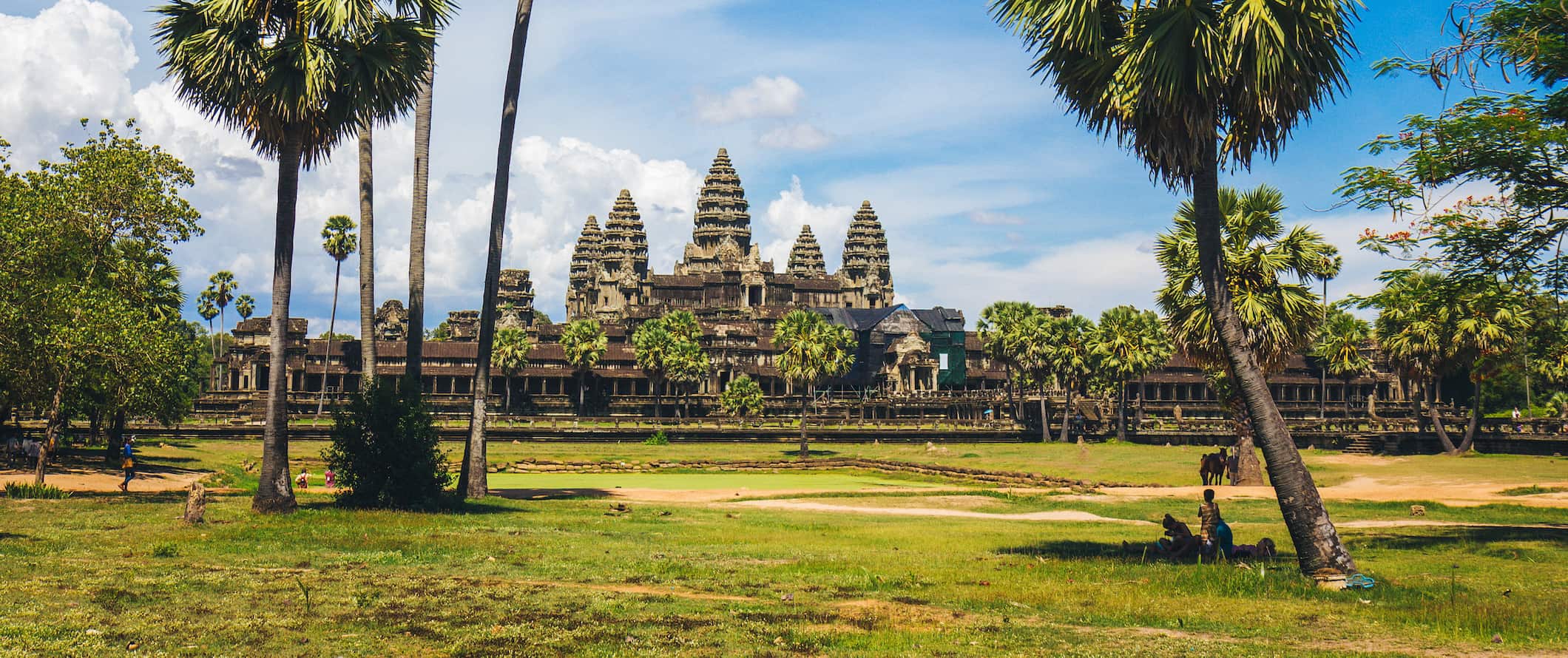
1. Admire Angkor Wat
One of the greatest human creations in history, the Angkor Wat temple complex is best explored over the course of a few days. The area is a UNESCO World Heritage Site created by the Khmer Empire and absolutely enormous. Temples to visit include Angkor Wat, Bayon Temple which has 216 gigantic stone face carvings, and Ta Prohm. I spent three days here and that simply wasn’t enough. A one-day pass is $37 USD, while a 1-week pass is $72 USD. If you’re here for multiple days, be sure to hire a driver and see some of the more out of the way ruins away from the main temple complex (and the crowds).
2. Explore Bangkok
Bangkok is the hub of travel activity in Southeast Asia. You can get anywhere you want from here. Though I hated it at first, the more I’ve spent time here the more I love it. Bangkok is like an onion whose many layers need to be peeled back. Some things not to miss include the spectacular Bangkok Grand Palace, Wat Pho, Chatuchak Market and Asiatique, and a canal trip on the Chao Phraya River. This is a city for foodies and wild nightlife.
3. Relax on some tropical islands
No visit to Southeast Asia would be complete without a visit to at least one of the thousands of tropical islands in the region. My top five include the Perhentian Islands (Malaysia), Rabbit Island (Cambodia), Ko Lanta (Thailand), and Boracay (Philippines). Lombok Island (Indonesia) has a chill vibe with unspoiled, perfect “desert island” beaches. There’s so many islands to visit. Be sure to add at least one to your trip. The country guides will have more information for you.
4. See Ha Long Bay
Sailing trips to this island-filled bay with stunning emerald waters, limestone formations, and marine life give you an appreciation for the natural beauty in Vietnam. Tours from Hanoi start at around $110 USD for two-day trips and increase from there. I love the colorful grottoes, hanging stalactites, and stalagmites of Surprise Cave (Sung Sot), Fairy Cave (Tien Ong), and Heaven Palace (Thien Cung). Make sure you go with a reputable company though as some of the cheaper boats are less than ideal. If you’d rather just visit for one day, day trips from Hanoi cost $55 USD.
5. Wander Kuala Lumpur
Other things to see and do in southeast asia, 1. go jungle trekking.
This region of the world is covered in amazing jungles with diverse wildlife, plentiful camping opportunities, and cool waterfalls. The best jungle treks are found in northern Thailand, Western Laos, and Malaysian Borneo (the latter are also the hardest and most intense). Some of my favorites include Danum Valley (Borneo) for its incredible wildlife; Ratanakiri (Cambodia) for its pristine wilderness and thousand-year-old trees; and Pu Luong Nature Reserve (Vietnam). Costs vary but jungle trekking generally costs $30-50 USD per day.
2. Attend the Full Moon Party
The biggest one-night party in the world welcomes up to 30,000 people with a party that stretches until dawn. Cover yourself in glow paint, grab a bucket of booze, and dance the night away with new friends on the island of Ko Phangan in Thailand. As the name would suggest, the party is on the night of the full moon. If you miss it, there’s always the half-moon party, quarter-moon party, and black-moon party. Really, every night is a party on Ko Phangan . Just avoid the flaming jump rope that occurs — I’ve seen people get burned badly!
3. Learn to dive
There are many great dive sites around the region for those interested in underwater exploration. You can learn to dive here at a fraction of what it would cost back home too. Some of the best places are Ko Tao (Thailand), Sipadan (Malaysia), as well as Gili Islands (Indonesia) and Coron, Palawan (The Philippines). A typical diving course is completed in three days. A PADI course typically runs $275 USD in Thailand, including three nights’ accommodation, though at smaller schools you can often negotiate down to $250 USD. Day trips for certified divers start at $165 USD. For information on Ko Tao, check out this blog post .
4. Eat street food in Singapore
Singapore is a foodie’s heaven. Try the hawker stalls of Singapore as well as Little India and Chinatown for some of the best and cheapest food in Asia. If you’re looking for a nice place to sit down and eat, eat at Singapore’s famed restaurants during lunch when restaurants offer discounts, making them a great deal. You’ll also find the most affordable Michelin-starred restaurants here (Tian Tian Hainanese Chicken Rice and Hawker Chan), offering world-class meals for just a couple of bucks!
5. Overload on temples
You can’t turn a corner without seeing a Buddhist temple in this part of the world. You’ll get temple overload at some point but visit as many as you can as each is unique to the country and region of the temple. There are so many places with high concentrations of ornate and beautiful temples. Check out Chiang Mai’s Wat Doi Suthep Temple and hike up the 300 steps to the golden Chedi that’s 600 years old!; Bagan’s Shwesandaw Pagoda from the 11th century with its stunning golden dome; Angkor Wat’s Ta Prohm is covered in iconic vines and enveloped in ancient jungle roots; Hue’s colorful Thien Mu Pagoda is perched atop a lush green embankment; Hoi An’s Quan Cong Temple with incredible Chinese architecture with hand-carved beauty and skill, and Luang Prabang’s Vat Xieng Thong with its golden, canopied roof. Most are free to enter, however, dress codes are enforced (you need to have your shoulders and legs covered).
6. Dive Sipadan
Located off Malaysian Borneo, Sipadan is one of the best dive sites in the world. If you have your dive certificate, make sure you venture out here. I absolutely love this area because it’s teeming with live turtles, diverse cave systems, sharks, dolphins, colorful coral, bright fish, and everything in between. Not a lot of people make it to this part of Malaysia, but it’s worth it to go the extra mile and make your way off the tourist trail a bit. Don’t miss Barracuda Point and The Drop-Off. Keep in mind that only 176 permits to dive at the island are issued each day, costing 140 MYR per person. The resorts on the neighboring islands each get a specific number of permits per day and require divers to stay with them for a few days. So you’ll need to stay at those resorts and dive into the surrounding areas before they can get you a Sipadan permit.
7. Fall in love with Bali
Bali is the most popular destination in Indonesia, and its famous Kuta beach is known for its wild parties and surfing ( though I think it’s overrated ). However, there is much more to Bali than just wild nights and sun-soaked days. If you’re a thrill seeker, hike up to the top of Mount Batur, an active volcano, for a breathtaking sunrise. Paragliding and white water rafting are also super popular here, as is surfing (it’s an affordable place to learn if you’ve never done it). There are also lots of hot springs to enjoy, the Ubud Monkey Forest (a popular temple and nature reserve home to hundreds of monkeys), and numerous places to scuba dive, including the Liberty wreck and Manta Point.
8. Take in Ho Chi Minh City
Frantic, chaotic, and crazy, Ho Chi Minh City in Vietnam is the embodiment of the controlled chaos that rules Southeast Asia. You can’t quite figure out how this teeming mass of people and cars work together, but it does. Highlights here include touring the tunnels used by the Viet Cong in the 1960s, taking in the view from the Saigon Skydeck, eating your way through the street food scene, and seeing the city’s numerous temples.
9. Admire the sunrise over an Indonesian Volcano
One of the most popular tourist attractions on Java is Mount Bromo and its National Park. Don’t miss out on getting a photo of the smoldering Bromo volcano as it lies surrounded by the almost lunar landscape of the Sea of Sand. Get up early to catch one of the most memorable sunrises of your life. If you’re there in mid-August, you’ll be just in time to see Upacara Kasada, the traditional Hindu ritual of the Tenggerese, a Javanese tribe of the region.
10. Hike in Khao Sok National Park
Located in southern Thailand, Khao Sok National Park is constantly rated as one of the best parks in Thailand, with incredible trekking, camping, limestone karsts, cooling rivers, and a glistening lake. Visit for semi-challenging hikes, tons of wildlife, walking paths, and breathtaking sunsets. Park entrance costs around $6 USD while full-day guided tours are $95 USD. I highly recommend spending at least one night here to get the full experience.
11. Visit Kampot
Most people come to Kampot to enjoy the scenic riverside views, as well as the rolling hills that surround the city. Since you can explore easily enough on foot or by bicycle, Kampot is a great place to slow down and relax. There’s not much to do here but have lazy days by the river, chill, and eat (don’t miss the famous Rusty Keyhole for BBQ!). Don’t miss the pepper farms, as this region of Cambodia is filled with pepper farms where you can learn about the history of the spice, see how it is grown, and pick up what is considered some of the finest pepper in the world. Tours are usually free.
12. Take a cooking class
Food from this region is as varied as the countries themselves and learning how to cook a few dishes is a great souvenir of your time here. Even if you don’t plan to cook back home, you can still spend a day making and eating scrumptious food. Most big cities have cooking schools offering classes of 2-6 hours, often including a trip to the local market beforehand to select ingredients. I absolutely love cooking classes and urge you to take one at least once. They are a fun experience!
13. Take a food tour
If you’d rather eat instead of cook, taking a food tour is a fun way to gain insight into the region’s amazing noodle dishes, fresh seafood, sweets, and street food while learning about the history and culture behind the cuisine. Most major cities in Southeast Asia offer food tours. These include tours around local markets, street stalls, and tours to locally-owned restaurants and cafes where you can sample the local cuisine and connect with a local chef. If you’re nervous about street food, this is a great way to try some in a controlled setting. Tours usually last 2-4 hours and include multiple stops and several different dishes, with prices costing $40-75 USD per person.
14. Visit an elephant sanctuary
While riding an elephant is on many a Southeast Asia bucket list, once you know how much the animals suffer from abuse in order to provide these rides, you might think twice about taking one. An even better way to interact with elephants is to volunteer at or visit the Elephant Nature Park near Chiang Mai in Thailand. It’s a phenomenal place, allowing you to give back to the community and these magnificent animals all at once. After coming here, you will understand why you should NEVER ride an elephant. A one-day visit costs $70 USD.
15. See The Killing Fields
A visit to Choeung Ek, also known as the Killing Fields, may not be the most cheerful way to spend an afternoon, but it makes for an educational and memorable experience. Over 3 million people were killed by Pol Pot’s regime, including countless women and children. I recommend getting a guide so you can really understand what you’re seeing as you explore the area. Also, this horrific tragedy took place less than 50 years ago and is still very present so please be respectful as a visitor. The site is located 10 miles from Phnom Penh. Half-day guided tours start at $66 USD.
16. Swim with Whale Sharks in Donsol
If you’re in the Philippines, check out the Donsol Whale Shark Interactive Ecosystem Project because there are not many experiences quite as adrenaline-inducing as swimming with a whale shark for the first time in crystal waters. These incredible creatures are around 45 feet (14 meters) long and yet incredibly gentle and curious. I loved floating at the surface being able to look below and see them slowly swim below me. Get some people together and rent a boat for a half day, explore the area, and go ‘shark-seeing’ for a good cause.
For a ton more information, visit my country specific travel guides for more detailed information on each place:
- Cambodia Travel Guide
- Indonesia Travel Guide
- Laos Travel Guide
- Malaysia Travel Guide
- Singapore Travel Guide
- Thailand Travel Guide
- Vietnam Travel Guide
Southeast Asia Travel Costs
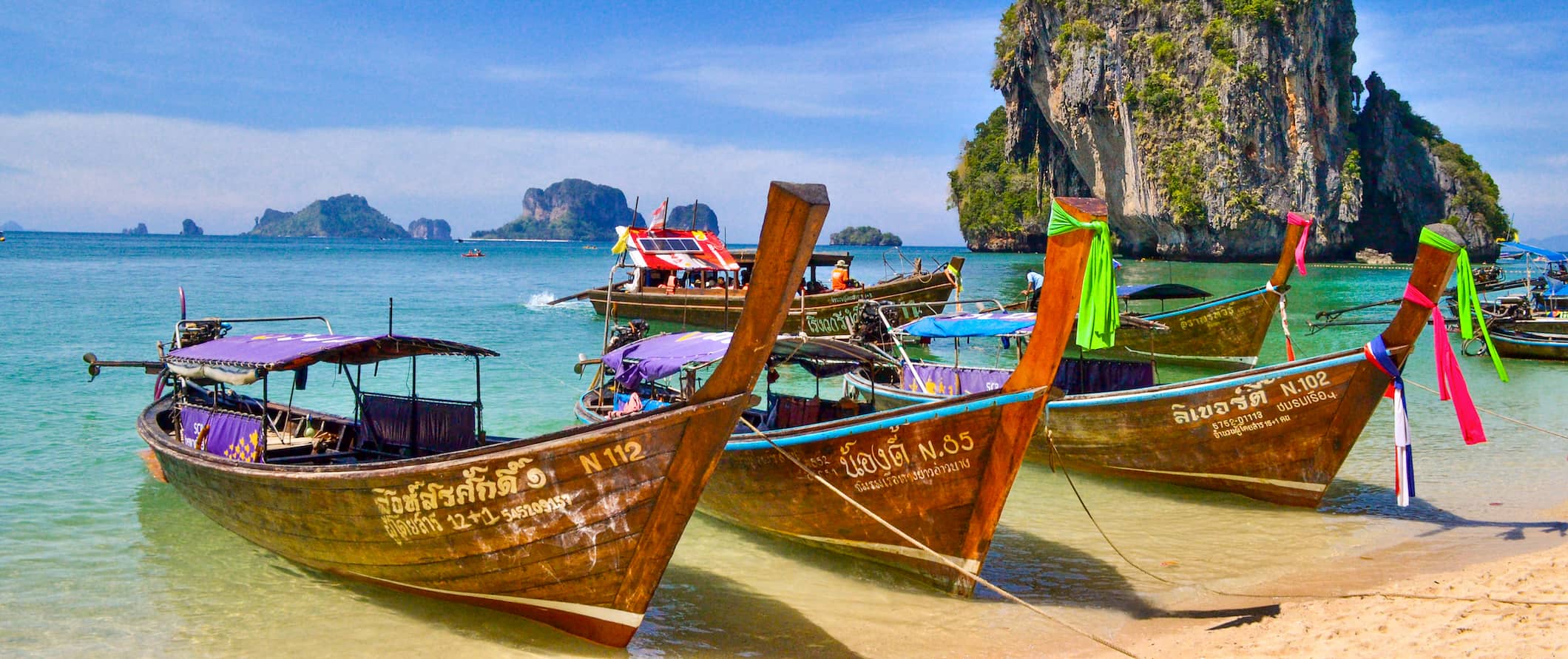
Accommodation – Accommodation in Southeast Asia is really cheap, making it the perfect place to travel if you are on a budget. Hostels are plentiful, as are budget guesthouses and hotels. It’s also very cheap to splash out here if you’re in need of some luxury.
Generally, you can find hostel dorm rooms for as little as $6-8 USD in Cambodia and $3-6 USD in Laos. In Thailand, 4-6-bed dorm rooms are $8-12 USD, while in Vietnam you can expect to pay $5-7 USD. In Indonesia, prices range between $5-10 USD for a 4-6-bed dorm room. Expect to pay at least $15-20 per night for a private room with air conditioning. Free Wi-Fi is standard in most hostels, free breakfast is common, and many hostels even have pools. In more remote areas, hot water isn’t common so make sure to check in advance if that’s an issue for you.
Simple guesthouses or bungalows throughout Southeast Asia generally cost $12-20 USD per night for a basic room with a fan (sometimes air conditioning) and hot water. If you want something nicer that includes a more comfortable bed and a TV, expect to pay $25-35 USD per night.
For backpackers, budgeting around $10 USD per night for accommodation is pretty safe no matter where you go in Southeast Asia. If you’re looking for a higher-end hotel room with more amenities, expect to pay $20-50 USD per night for a room. Anything over that is luxury territory.
Camping is available in certain areas, usually for just a few dollars per night for a basic tent plot without electricity. However, this is about the same price as hostels so it’s not really any cheaper.
Food – While each country’s cuisine varies, overall, Southeast Asian food is aromatic, spicy, and flavorful. Typical spices and herbs include garlic, basil, galangal, cilantro, lemongrass, kaffir lime leaves, chilies, and fish sauce. No matter what region you’re in, you can expect to find a variety of curries, salads, soups, noodle dishes, and stir-fries.
Rice and noodles are central to Southeast Asian food, while the meat is usually pork, chicken, fish, or seafood, which is everywhere on the islands and coastal areas.
While traveling Southeast Asia, street food is the most popular food and cheapest option. On average, these meals cost $1-5 USD. You find these stalls throughout this region lining most streets and every market. They are ubiquitous in the region. In Singapore, street food (from “hawker stands” as they’re known there) costs around $4-5 USD for a meal. Even if you go into small local restaurants, the price doesn’t increase that much.
Food that costs $2 USD at a street stall generally only costs $4-6 USD at a local restaurant. If you went into a restaurant in Thailand, you’d pay around $3-4 USD for a pad Thai that would have cost $1-2 USD on the street.
In Cambodia, street food is around $1-2 USD, while restaurants charge around $3-5 USD for a dish like amok (a coconut milk dish) or luc lac (pepper gravy beef).
Western meals, including burgers, pizza, and sandwiches usually cost around $7-10 USD. But these generally aren’t that great. If you want something that actually tastes as it does back home, expect to spend at least $10-12 USD for your meal.
While cheap, alcohol can take a bite out of your budget if you’re not careful. Those $1-2 USD beers add up! Wine and cocktails are more expensive, generally around $3-5 USD. A cappuccino is typically around $2 USD. Bottled water is plentiful and costs less than $1 USD.
There’s a growing cutting-edge foodie scene in the region and, if you want to splurge, you can do so on some really good meals. Big cities like Bangkok, KL, and Singapore, all have world-class Michelin star restaurants as well some incredible fusion restaurants.
Since dining out is so cheap in the region, there’s no point in grocery shopping unless you’re looking to get some pre-made salads or fruits. Additionally, a general lack of kitchens in most hostels and hotels makes it difficult to cook even if you wanted to. If you do purchase your own groceries, expect to spend around $25 USD per week for basic groceries like local produce, rice, and some meat (while avoiding expensive imported items like cheese and wine).
Backpacking Southeast Asia Suggested Budgets
On a backpacker budget of $45 USD per day, you can stay in hostel dorms, eat out at local markets and street stalls, limit your drinking, do mostly free activities, minimize paid activities, and use public transportation to get around. You’re not going to be able to splash out but you’ll be able to live the typical backpacker experience without really stressing over expenses.
On a mid-range budget of $85 USD per day, you can stay in budget hotels or private hostel rooms, eat more restaurant meals, do more paid activities like cooking classes, take some taxis, and enjoy a few more drinks. You won’t live large, but you won’t be missing out either.
On an upscale budget of $150 USD or more per day, you can stay in nicer hotels with more amenities, eat out as much as you want, do more paid tours including private tours, hire a driver, fly between destinations, and basically do whatever you want. The sky is the limit with this kind of budget!
You can use the chart below to get some idea of how much you need to budget daily, depending on your travel style. Keep in mind these are daily averages — some days you’ll spend more, some days you’ll spend less (you might spend less every day). We just want to give you a general idea of how to make your budget. Prices are in USD.
Southeast Asia Travel Guide: Money-Saving Tips
Backpacking Southeast Asia is cheap. There’s little opportunity to spend a lot of money since everything is already so inexpensive unless you intentionally are trying to splash out on fancy meals and high end hotels. The two reasons why most travelers end up overspending is that they eat a lot of Western food and drink way too much. If you want to save money while traveling in this part of the world, cut down on your drinking and skip the Western food. While country guides have more specific ways to save money, here are some general ways to save money in Southeast Asia:
- Stay with a local – Accommodation is cheap in Southeast Asia but nothing’s cheaper than free! Use Couchsurfing to stay with locals who have extra beds and couches for free. You’ll also meet great people who can show you around and share their insider tips and advice.
- Book tours and day trips as a group – You have more negotiation power when you’re with a group of people buying multiple spots or tickets. Traveling alone? Meet a friend at a hostel and see if they want to join the same tour as you. I’ve met some great friends over the years doing this and highly recommend it.
- Don’t book in advance – Don’t book any tours or activities before you get to your destination. They’ll be much cheaper when you arrive as you’ll be able to negotiate a lower price as you’ll find companies are often offering the same tour and competing. Anything you see online is more expensive than you need to pay!
- Eat on the street – The street food is the best food. The food is the best and cheapest you’ll find. It’s a great way to try new foods and get to chat with locals as well. This is where locals eat so if you want insight into local culture, good food, and savings, eat the street food. Look for where locals are eating to ensure that it’s safe to eat.
- Bargain hard – Nothing is ever at face value here. Bargain with sellers as most of the time, the price they’ve quoted is way higher. There’s a haggling culture in the region so play the game and save some money. It’s important not to convert it in your head to your own currency because it will usually sound cheap even though you might still be getting ripped off. You’ll never get the local price, but you might come close!
- Minimize your drinking – Drinks really add up. Even with cheap drinks, if you’re not aware, you’ll end up spending more money on beer than on food and accommodation. If you want to drink, head to the supermarkets, drink at the hostel, or check out the local happy hours.
- Pack a water bottle – A water bottle with a purifier comes particularly in handy in Southeast Asia since you can’t usually drink the tap water. Save money and thousands of plastic bottles and get a bottle that can purify the tap water for you. My preferred bottle is LifeStraw as it has a built-in filter that ensures your water is always safe and clean.
Where to Stay in Southeast Asia
I’ve been traveling Southeast Asia since 2005 and have stayed in hundreds of places. Here are some of my favorite places to stay in Southeast Asia:
- The Siem Reap Pub Hostel (Siem Reap)
- Onederz Siem Reap (Siem Reap)
- Mad Monkey Siem Reap (Siem Reap)
- Onederz Sihanoukville (Sihanoukville)
- Monkey Republic (Sihanoukville)
- Onederz Phnom Penh (Phnom Penh)
- Sla Boutique Hostel (Phnom Penh)
- The Magic Sponge (Kampot)
- Indigo House Hotel (Luang Prabang)
- Sa Sa Lao (Luang Prabang)
- Sanga Hostel (Pakse)
- Nana Backpackers Hostel (Vang Vieng)
- Dream Home Hostel (Vientiane)
- Traveller Bunker Hostel (Cameron Highlands)
- De’Native Guest House (Cameron Highlands)
- Kitez Hotel & Bunks (Kuala Lumpur)
- Sunshine Bedz Kuala Lumpur (Kuala Lumpur)
- Ryokan Muntri Boutique Hostel (Penang)
- Mad Monkey Hostel (Bangkok)
- D&D Inn (Bangkok)
- Kodchasri B&B (Chiang Mai)
- The Royal Guest House (Chiang Mai)
- Green Leaf (Khao Yai)
- Lonely Beach Resort (Ko Chang)
- The Sanctuary (Koh Phangan)
- Na-Tub Hostel (Koh Phangan)
- Pineapple Guesthouse (Phuket)
- Dream Lodge
- The Pod Capsule Hostel
- The Scarlet
- Under the Coconut Tree Guesthouse (Hoi An)
- Fuse Beachside (Hoi An)
- Pretty Backpackers House (Da Lat)
- Hanoi Old Quarter Hostel (Hanoi)
- Luxury Backpackers Hostel (Hanoi)
- The Hideout (HCMC)
- City Backpackers Hostel (HCMC)
How to Get Around Southeast Asia
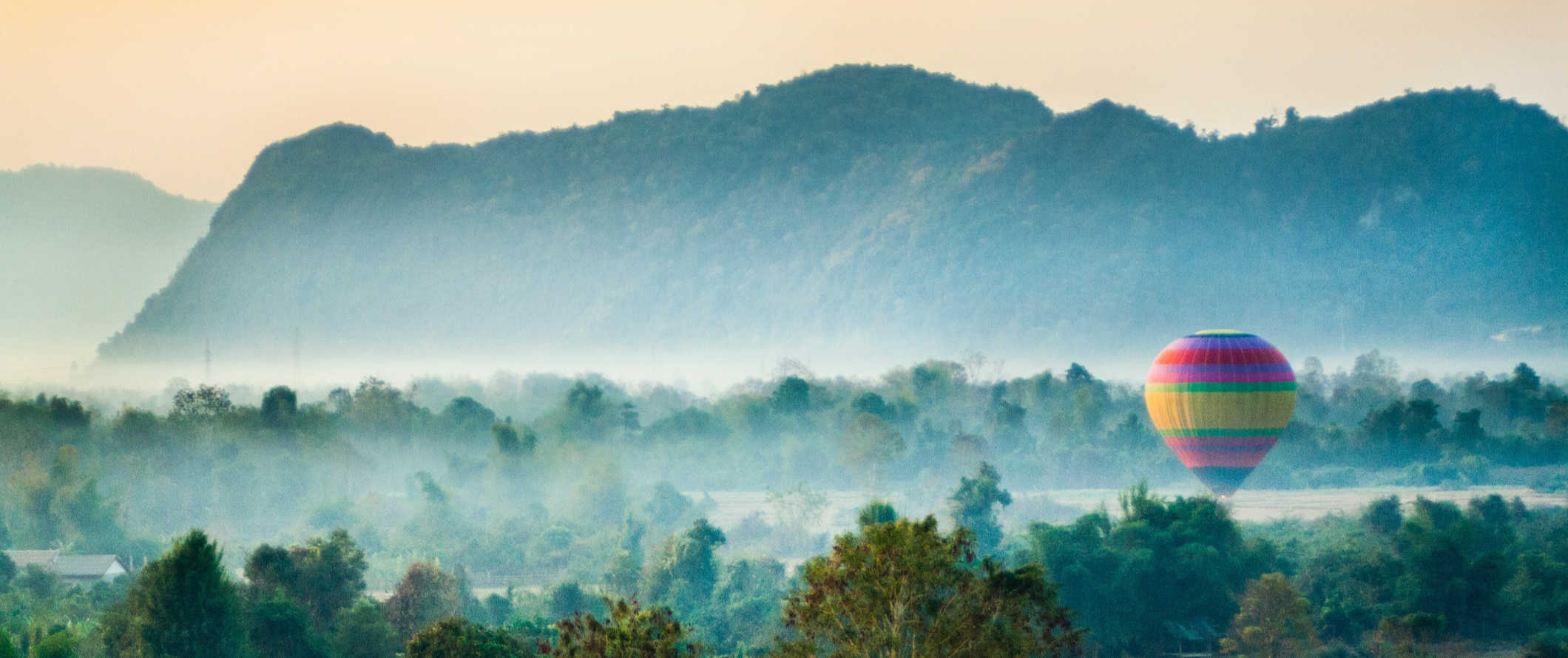
Public transportation – Public transportation costs from a few pennies to a few dollars, with Singapore and Malaysia offering the most comprehensive public transportation systems. In Thailand, local buses cost around $0.25 USD per trip, while the Metro and Skytrain in Bangkok cost $0.50-1.50 USD per trip. In Cambodia, a bus ticket in Phnom Penh costs just $0.40 USD per ride.
Major cities generally have subway systems but mostly you’ll be using the bus or shared taxis to get around.
Tuk-tuks (small, shared taxis with no meter) are available around much of the region and require a bit of haggling. They usually have 3-6 seats and generally cost more than public transportation but are faster. To find a reputable driver, ask your accommodation as they usually know someone. Tuk-tuk drivers can often be hired for the day for a discounted rate (this is what a lot of people do to visit the Killing Fields and Angkor Wat in Cambodia, for example).
Taxi – Taxis in the region are generally safe, though it’s not uncommon to have to haggle. Scams to rip you off aren’t uncommon either, so always ask your accommodation to call you a taxi whenever possible so you know you’ll get a reputable company.
In Singapore and Indonesia, taxi drivers do put on the meter. In Bangkok, you can get taxi drivers to use the meter, but if you’re hailing one in a tourist area, he might try to avoid using it. In Vietnam, the meter is sometimes rigged, but if you can get a reputable company like Mai Linh, you won’t have any problems.
Ridesharing – Grab, DiDi, and Gojek are Asia’s answer to Uber. They work the same way: you hire a driver to take you somewhere via the app, and you can pay via the app or in cash. It’s often more affordable than a regular taxi, though drivers are a bit unreliable as the practice is not as widespread here as in other parts of the world.
Just keep in mind that some drivers are driving motorcycles so be sure to double check what kind of vehicle is picking you up if you don’t want to ride on the back of one.
Bus – The easiest and cheapest way to travel around Southeast Asia is by bus. The backpacker trail is so worn that there is a very well-established tourist bus system to take you anywhere. Buses costs vary between $5-25 USD for a 5-6 hour journey. Overnight buses cost $20-35 USD depending on distance (they often have reclining seats so you can get a decent sleep).
You can check ticket prices and book tickets for all the different bus companies across Southeast Asia at 12go.asia.
Train – Train service is limited in the region and not something to really consider when you travel Southeast Asia. You can take a train up and down the coast of Vietnam and there’s some limited scenic rails in Malaysia. Thailand is the only country that has an extensive train system that lets you travel all its regions (and onward to Singapore) from Bangkok.
The train prices in Southeast Asia are determined by distance and class. Night trains with sleeper cars are more expensive than day trains. The night train to Chiang Mai from Bangkok takes twelve hours and costs $27 USD for a sleeper seat. However, that same train during the day is $8-9 USD. In Vietnam, trains run up and down the coast and cost $60 USD from Hanoi to Ho Chi Minh City.
Flying – The cost of flying around Southeast Asia has come down in recent years due to the rise of low-cost airlines. Scoot, Jetstar, and AirAsia are the biggest. Nok Air has a lot of flights within Thailand , and VietJet Air is popular in Vietnam . Lion Air serves Indonesia , but its safety record is really spotty and I personally would not fly them. If you book early, you can save on fares, as most of the airlines offer deeply discounted fare sales all the time, especially Air Asia.
Just make sure that the airport these budget airlines fly into isn’t too far out of your way (transportation from the secondary airport sometimes negates the savings from using the budget airline itself).
Also, keep in mind that you usually must pay to check your baggage on these cheap flights. If you wait to pay for your luggage at the gate, you end up paying almost double. Travel carry-on only to avoid this added cost.
All in all, I only recommend flying if you are pressed for time or find a super cheap deal. Otherwise, stick to the bus.
Hitchhiking – Hitchhiking in Southeast Asia is safe, though popularity of the practice varies by country (it’s more common in Malaysia, but not so much in Cambodia). Dress respectably, smile while making eye contact with drivers, and use a cardboard sign to tell people where you’re headed. Be prepared for long bouts of no pick-ups, especially if you’re traveling through more rural areas. Pack plenty of water and food. Also, make sure the people picking you up understand you’re hitchhiking and not flagging down a taxi.
Hitchwiki is a great resource for hitchhiking tips.
Car rental I don’t recommend renting a car in Southeast Asia. Rental cars are expensive ($40 USD per day or more) and the roads here are in poor shape. I would never drive around the region.
When to Go to Southeast Asia
The best time of year to visit Southeast Asia is from November to April when temperatures are milder (though temperatures vary drastically by region). It may be mild in Thailand in January and hot in Malaysia but in Northern Vietnam, it’s cold! Also, one of the biggest mistakes people make is not taking into account the rainy season. In some cases it won’t make a big difference but definitely does if it’s a beach trip.
In Indonesia, the best time to visit is April to October. Temperatures average 24-30ºC (75-86ºF), and the weather is mostly dry. July to September is the peak holiday season and when you can expect to pay the highest rates. December to February is the rainy season.
In Malaysia, January-March and June-September are the best time to visit, as these months have the lowest average rainfall. It is still hot and humid during this time though. The rainy season is from October to December. Singapore’s climate/weather is much like Malaysia’s.
In Vietnam, the weather varies by region. In Central Vietnam (including Hoi An and Nha Trang), January-May is the best time to visit because it is dry and the temperatures average 21-30°C (70-86°F). June to August is also a decent time to visit. If you want to stick around Hanoi, March to April is great, or October to December (for mildest temperatures). The rainy season is May-September.
Thailand has three seasons: hot, hotter, and hottest. It’s always warm, though the weather is nicest between November and February (which is also peak tourist season). Bangkok is “coolest” and driest during this time (but still averaging a hot 29°C/85°F each day). April and May are the hottest months, and the rainy season is June-October. The gulf islands get pretty rainy from August to December.
The dry season in Cambodia is from November-May and the cool season is from November-February (and when most people visit). Temperatures during this time are still high, but humidity is lower. Laos has the same cool season as Cambodia, with the dry season running from November-April.
In the Philippines, it’s mostly warm all year long with an average daily high of 26°C (80°F). There are rainy and dry seasons and temperatures are hot and dry from March-May and cooler December-February. The best time to visit is between January-April when it’s less humid. Monsoon Season is July-October.
For more information on when to go to places, visit the specific country guides.
How to Stay Safe in Southeast Asia
Southeast Asia is an incredibly safe place to backpack and travel — even if you’re traveling solo and even as a solo female traveler. Violent crime is super, duper rare. Petty theft (including bag snatching) is the most common type of crime in Southeast Asia, especially around popular tourist landmarks. Always keep your valuables out of reach on public transportation and in crowds just to be safe. Never leave your valuables unattended while at the beach and always keep a hold of your purse/bag when out and about as bag snatching is common.
That said, outside touristy areas, theft is really rare. Heck, it’s pretty rare in touristy areas too! But a little vigilance goes a long way and it’s better to be safe than sorry.
There are some common scams around that you’ll want to be aware of, such as the motorbike scam. This involves a bike rental company trying to charge you for damage to the bike that you didn’t cause. To avoid this, always take photos of your rental before you leave so you can protect yourself from baseless claims.
Another common scam involves a tuk-tuk driver taking you somewhere you didn’t want to go in hopes you’ll buy something from the shop/restaurant he dropped you off at (he gets a commission if you do). Simply refuse to buy anything and demand to go back to where you were — or find another driver.
For other common travel scams, read this post about major travel scams to avoid in the region .
Solo female travelers should feel safe here, though it’s generally a good idea to avoid walking around alone at night just to be safe. It’s always a good idea to carry some extra cash to get home in a taxi if you need to. Additionally, always keep an eye on your drink at the bar and never accept drinks from strangers. Be sensible when it comes to dating while traveling and meeting people in public places. As I’m not a woman, please check out some solo female travel blogs to get the best insight.
Overall, the people who get in trouble here tend to be involved with drugs or sex tourism. Avoid those two things and you should be fine. Keep in mind that it’s not always obvious how old someone is or if they’re a sex worker so be mindful when getting involved in romantic interactions. Also, penalties for drug use in this region are stiff so even if you’re here to party, skip the drugs.
Always trust your gut instinct. Make copies of your personal documents, including your passport and ID. Forward your itinerary along to loved ones so they’ll know where you are.
For more in-depth coverage of how to stay safe in Southeast Asia, check out this post that answers some frequently asked questions and concerns.
The most important piece of advice I can offer is to purchase good travel insurance. Travel insurance will protect you against illness, injury, theft, and cancellations. It’s comprehensive protection in case anything goes wrong. I never go on a trip without it as I’ve had to use it many times in the past. You can use the widget below to find the policy right for you:
Southeast Asia Travel Guide: The Best Booking Resources
These are my favorite companies to use when I travel. They consistently have the best deals, offer world-class customer service and great value, and overall, are better than their competitors. They are the companies I use the most and are always the starting point in my search for travel deals.
- Skyscanner – Skyscanner is my favorite flight search engine. They search small websites and budget airlines that larger search sites tend to miss. They are hands down the number one place to start.
- Hostelworld – This is the best hostel accommodation site out there with the largest inventory, best search interface, and widest availability.
- Agoda – Other than Hostelworld, Agoda is the best hotel accommodation site for Asia.
- Booking.com – The best all around booking site that constantly provides the cheapest and lowest rates. They have the widest selection of budget accommodation. In all my tests, they’ve always had the cheapest rates out of all the booking websites.
- Get Your Guide – Get Your Guide is a huge online marketplace for tours and excursions. They have tons of tour options available in cities all around the world, including everything from cooking classes, walking tours, street art lessons, and more!
- SafetyWing – Safety Wing offers convenient and affordable plans tailored to digital nomads and long-term travelers. They have cheap monthly plans, great customer service, and an easy-to-use claims process that makes it perfect for those on the road.
- LifeStraw – My go-to company for reusable water bottles with built-in filters so you can ensure your drinking water is always clean and safe.
- Unbound Merino – They make lightweight, durable, easy-to-clean travel clothing.
Get the In-Depth Budget Guide to Thailand!

My detailed 350+ page guidebook is made for budget travelers like you! It cuts out the fluff found in other guidebooks and gets straight to the practical information you need to travel around Thailand. You’ll find suggested itineraries, budgets, ways to save money, on and off-the-beaten-path things to see and do, non-touristy restaurants, markets, bars, safety tips, and much more! Click here to learn more and get your copy today.
Southeast Asia Travel Guide: Related Articles
Want more info? Check out all the articles I’ve written on Southeast Asia travel and continue planning your trip:

The 4 Best Hostels in Singapore
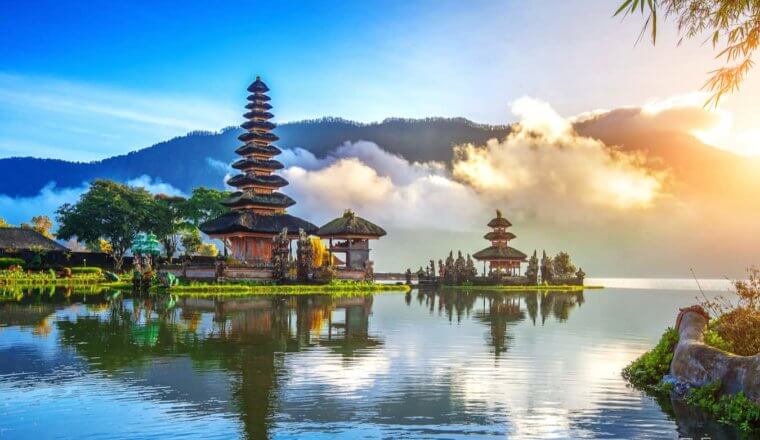
The 6 Best Hostels in Bali
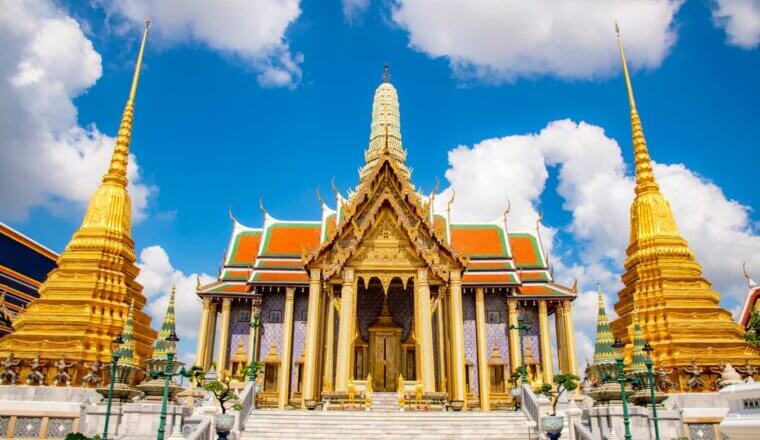
The 22 Best Things to Do in Bangkok
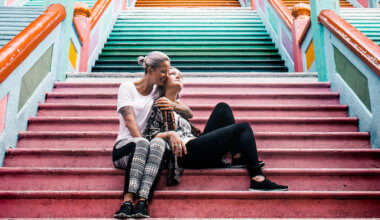
5 LGBTQ Travel Tips for Asia

Is Southeast Asia Safe for Travelers?
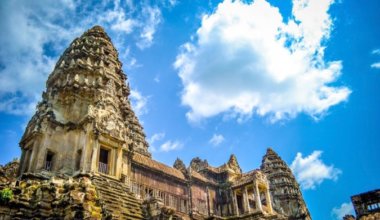
Backpacking Cambodia: 3 Suggested Itineraries for Your Trip
Get my best stuff sent straight to you, pin it on pinterest.
- Where To Stay
- Transportation
- Booking Resources
- Related Blogs
- Search Please fill out this field.
- Manage Your Subscription
- Give a Gift Subscription
- Newsletters
- Sweepstakes
If you click on links we provide, we may receive compensation.
- Travel Products
Yes, You Can Pack for a 2-week Trip in a Single Carry-on — Here’s How I Did It for Vietnam
Plus, the 15 travel essentials I reached for every day.
:max_bytes(150000):strip_icc():format(webp)/KaylaBecker-fa7b28e00b784faf8ae0fd992b8913a3.jpg)
Travel + Leisure / Marcus Millan
Packing in a single carry-on for a two-week trip is not for the faint of heart — especially when the destination has seven distinct climate regions. That’s exactly the case in Vietnam, where I just traveled more than 1,000 miles from top to bottom, experiencing bustling cities, rice terrace-laced mountains, and white sand beaches, with 50- to 95-degree Fahrenheit days along the way. Even for a travel editor, it was an epic packing challenge — but I’m here to tell you that it is possible .
Here’s the secret: pack versatile pieces from your travel capsule wardrobe that you can mix and match for multiple situations and be willing to wash your clothes in the sink as you go. Above all, let the activities on your itinerary inform your choices (the more practical and minimalist, the better). While most of my trip was low-key — as in I ate at hole-in-the-wall street vendors and got sweaty on five-hour bus transfers to the Mekong Delta — this was not a backpacker trip where I could re-wear the same sweats every day; I stayed in five-star hotels like Travel + Leisure reader-favorite Capella Hanoi and InterContinental Danang and ate at Michelin-starred restaurants like Anan and Koki, too — so I really needed a wardrobe that could cover all of the bases and then some.
Aside from comfortable shoes and a basic black dress that could be dressed up or down, I found that a rain jacket and ripstop joggers were absolute essentials in this country. Whether I was trekking in Sa Pa, beaching it in Phú Quốc, or strolling lantern-lit Hội An, I kept reaching for the same 15 items from my trusty Away Bigger Carry-on — a suitcase that was just large enough to pack it all in. Read on to find out what else I wore on repeat, starting at $13.
Ripstop, Quick-dry Joggers
If you’ve got adventure activities on the itinerary like I did — kayaking Hạ Long Bay, hiking in Sa Pa, and floating down the Mekong Delta included — you’ll thank yourself for packing durable pants. There are two pairs that I reached for time and again on this trip: my Vuori Ripstop Joggers that were sturdy enough for all-day adventures in the elements, impervious to scratches from brushing up against palm leaves but still seriously lightweight and comfy enough for a flight, with five pockets to boot. I was sold the minute I read this review on Vuori’s site: “I love these pants so much. I have them in three different colors, and I do everything from hiking to ranch work in them. I highly recommend them forever and always.”
The second pair? These quick-drying UPF 50 Baleaf joggers that earned me a compliment from my tour guide in the Mekong Delta — she said they were the perfect lightweight material to wick sweat in the humid, 95-degree Fahrenheit heat. They’ll be my go-to hiking pants for summer.
Comfortable Sneakers
There’s just no getting around the need for comfortable walking shoes on any and every trip. Since my vacation was mostly adventure-based, I opted for classic athletic running shoes that I knew would carry me through any situation. I especially love these Allbirds Wool Runner Mizzles , not just for their super comfy foam footbeds, but also because they have a water-repellent coating that stands up to street puddles in Hanoi, drizzly days at sea in Hạ Long Bay, and in Sa Pa’s soggy rice terraces — and they kept my toes dry (note: they’re not waterproof. It rained so much in Sapa that our tour guide suggested we borrow the hotel’s rain boots on the wettest day of our trek, but for just walking around the mountainside property , these were ideal).
Long Raincoat
The rainy season in northern Vietnam is from July to September, and Sa Pa’s mountains average 137 foggy days per year — so there’s a lot of precipitation to go around. It rained the entire first week of my trip while I visited Hanoi, Sa Pa, and Hạ Long Bay. Sometimes, that’s just how the cookie crumbles, which is why I’m so glad that I packed a raincoat for trekking through the area’s small towns and rice terraces and for drizzly kayaking.
This Amazon one is similar to mine (and only $45!), as is this top-rated REI raincoat that’s a bit more technical. I love that it has a hood and cinches at the waist for a flattering fit but also goes over the butt, so most of you is covered. Even when it wasn’t raining, I used my raincoat as a windbreaker on a chilly day in Ba Na Hills, and to cut the breeze on deck as we cruised Hạ Long Bay. I wore it on the plane to avoid taking up space in my carry-on, and I’m glad I had it to keep me warm in the blasting AC.
Kayla Becker
Crossbody Belt Bag
If you ask me, a bag that you can access quickly, keeps your valuables close to your chest, and keeps you hands-free is essential for any destination, not just Vietnam. For this trip, I packed my go-to Nomatic RFID-blocking belt bag (which is so sturdy and useful that even my husband always tries to steal it from me). But I also have and love this $38 Lululemon Everywhere Belt Bag , as well as this $13 version from Amazon-loved brand Ododos . What can I say, I find these bags so functional that I have a growing collection of them. And believe me, when you’re haggling at the Hoi An night market for beautiful lanterns and lacquerware, the last thing you want to worry about is searching for your wallet in a backpack, which is better for hiking days when there aren’t so many crowds.
Wide-leg Linen Pants
It wasn’t all rain clouds on this trip, especially once we flew south to Ho Chi Minh City, where we were greeted with 90-degree Fahrenheit heat. I bought these super-soft Tencell lyocell Allison Wide-leg Pants from Marine Layer specifically because they were breezy but also cropped, so I wouldn’t have to worry about getting the bottoms dirty or wet in the city. Plus, black goes with everything and hides stains and wrinkles. Since they were breathable and light as a feather, they kept me cool on sweltering days by the hotel pool. But I found that they were so versatile that I wore them almost every day of the second week, including to the beaches in Da Nang and Phú Quốc. They’re kind of pricey but, in my opinion, well worth the money. For something a little more affordable, I’m also into these linen pants from Quince , which were recommended by a fellow T+L writer who just returned from Southeast Asia.
Basic Cotton Tanks
Arguably the best purchase I made before my trip was this two-pack of tanks, both of which are now a permanent part of my travel capsule wardrobe . I wore them almost every day (don’t worry, I washed them in the sink!) whether it was under a button-down for a little extra insulation on chilly days in Hanoi, over a bathing suit on the beach in Phú Quốc, or as a top in the steamy Mekong Delta when it was so hot that I couldn’t fathom wearing another layer. They have a close ribbed fit, scoop neckline, and most importantly, they’re breathable. Amazon shoppers seem to agree, saying they’ve held up everywhere from the Central American rainforest to Disney World . I also absolutely love the high-neck fit of this one , which I bought to pair with my beach sarong on Phú Quốc Island.
Polarized Sunglasses
In addition to my favorite SPF and a travel-size bug spray with DEET (I prefer non-chemical sprays, but the travel medicine clinic advised me to pack a powerful, effective spray to prevent mosquito-borne diseases), eye protection is essential in Vietnam, and let’s be real, everywhere! I opted for a cheap but still stylish pair like these $15 Sojos sunglasses at Amazon so I wouldn’t feel bad if they fell to the bottom of the Saigon River. Ultimately, they were so sturdy that they made it back home in one piece. Several Amazon shoppers attest that they’re “ perfect for traveling .”
Linen Jumpsuit
Although this was largely an active itinerary, I mixed in a few Michelin-starred restaurants along the way considering they were so affordable here. I’m talking $15-per-person-affordable for multiple courses at Hanoi’s atmospheric teahouse, Tầm Vị. For these special nights out, I wanted to pack something nicer but still breathable for the heat. This is a newer version of the Mango one I bought a few summers ago, but I won’t retire it until it gives up on me. I wore it to Anan in Saigon, and it even matched the walls, painted with tropical leaves, and to a rooftop bar in Ho Chi Minh City, where it popped against the skyscrapers glowing with neon lights.
Quick-dry Black Dress
When you’re in a paddle boat on the Mekong Delta or a walking tour in steamy Saigon and air-conditioning is just a distant memory, you won’t want to wear more clothes than you have to. That’s why I packed this travel writer wardrobe hack : the sporty, quick-dry Columbia Freezer Dress that’s made with cooling technology. It felt light as a feather but still wicked sweat and had UPF 30 sun protection. For breezy days, I layered my oversized white button-down over it. And with the collar, I felt like I could get away with visiting a nice restaurant or museum in it.
Swimsuit and Cover-up
A quick flight from Ho Chi Minh City to Phú Quốc Island put us right on one of the most picturesque beaches that I’ve ever seen. For this part of the itinerary, where we stayed at JW Marriott Phu Quoc , I packed this orange Agua Bendita Lavanda sarong wrap, which has come in handy on all my beach trips from Hawaii to Vietnam — and the color really popped against the white sand. It was a splurge, but I recently came across this dead ringer at Amazon that’s practically a steal since it comes with a bathing suit and matching cover-up for $34. I love sarong-style cover-ups like this because they look elegant enough to wear straight from the beach to a restaurant, as I did at the Long Bar at InterContinental Danang .
Water-resistant Hiking Sandals
Because I didn’t want to ruin my go-to leather Birkenstock sandals, I knew that I needed to buy a water-resistant pair for this trip. So, I became a first-time Teva Original Universal sandals owner, and I’m now fully converted. These were not only super comfy for walking around the beaches and hiking trails, but they also stayed molded to my feet and were easy to spray down when they got sandy or muddy. The rubber EVA soles were supportive and cushy — what more could you ask for in a pair of versatile black sandals?
White Button-down Shirt
I visited more than nine towns in the 1,000-plus miles that I crossed between Hanoi and Ho Chi Minh City, each one widely ranging in temperature. And yet, I wore this shirt at every single stop of the trip. It worked as a temple-appropriate top on a walking tour of Hanoi, as a beach cover-up in Danang, as a layer over my black dress for dinner in Ho Chi Minh City — the list goes on. Amazon shoppers rave about how “ comfortable and versatile ” it is and that it “ travels great ,” too.
Packable Puffer Jacket
Word to the wise: Don’t be like me and underestimate how cold it can be in Hanoi and mountainous regions like Sa Pa and Ba Na Hills. It was spring when I visited, and the lows hovered around 45 to 50 degrees Fahrenheit. I braved it for about a day before I broke down and bought this Ultra-Light Down Jacket from the nearest Uniqlo in Hanoi, and I ended up wearing it all over the temperate northern region. But truthfully, since I got home to Boston, I can’t stop wearing it here either. It packs down into practically nothing and has its own carrying case, so it’s a mainstay in my suitcase now, just in case.
Compression Socks
The flight from Ho Chi Minh City to London Heathrow was 13 hours, the longest flight I’ve been on in a while. Since my legs and feet start to swell on flights like this, I made sure to wear my nylon Comrad Knee-High Compression Socks . I got the recommendation from my sister, who swore by them when she was pregnant. I’m not the only one who thinks that they’re a game-changer for in-flight comfort — this 26-week pregnant traveler , who flew internationally, and this jet-setter, who wore them for 15-plus hours , agree.
Lightweight Mom Jeans
Abercrombie & Fitch
Yes, I am one of those few travelers who still packs jeans on trips because of their versatility — but only if they’re super comfortable and lightweight. I wore this flattering Abercrombie & Fitch High-rise Mom Jean pair way more often than I was expecting on this trip, especially in the north on chilly days. The best part about these on-trend jeans is that they pair with anything in any season, from white sneakers and a chunky sweater to sandals and a tank — that, and the fact that they get plenty of use year-round at home, too.
Love a great deal? Sign up for our T+L Recommends newsletter and we’ll send you our favorite travel products each week.
Shop More T+L-Approved Picks
:max_bytes(150000):strip_icc():format(webp)/tl-athleta-review-tout-83961434823e48fd8f4c864e3d437d4b.jpg)
Related Articles
- Vietnam Tourism
- Vietnam Hotels
- Vietnam Bed and Breakfast
- Vietnam Vacation Rentals
- Flights to Vietnam
- Vietnam Restaurants
- Things to Do in Vietnam
- Vietnam Travel Forum
- Vietnam Photos
- All Vietnam Hotels
- Vietnam Hotel Deals
- Last Minute Hotels in Vietnam
- Things to Do
- Restaurants
- Vacation Rentals
- Travel Stories
- Rental Cars
- Add a Place
- Travel Forum
- Travelers' Choice
- Help Center
North to South in June - Vietnam Forum
- Asia
- Vietnam
North to South in June
- United States Forums
- Europe Forums
- Canada Forums
- Asia Forums
- Central America Forums
- Africa Forums
- Caribbean Forums
- Mexico Forums
- South Pacific Forums
- South America Forums
- Middle East Forums
- Honeymoons and Romance
- Business Travel
- Train Travel
- Traveling With Disabilities
- Tripadvisor Support
- Solo Travel
- Bargain Travel
- Timeshares / Vacation Rentals
- Asia forums
- Vietnam forum

Ha Giang loop: we also plan to do the loop and are wondering if people have any hostels they would recommend booking through for people in their 30's (don't want crazy parties, mattress on the floor) . We would love private accommodation for the loop but not sure if this is an option?! Any feedback would be appreciated.
3 replies to this topic

For bus bookings, you can use the Vietnamese bus booking website (or App):
https://vexere.com/en-US
Filter for "Limousine", "cabin", etc.
"Ha Giang loop:"
Ha Giang Province is full of hotels. Suggest you get started searching on Google Maps, and see for yourself.

Hi Marie B,
1. I am wondering if there is a specific site or company people have used which is less of a backpacker/budget bus and more comfortable (toilets, nicer facilities) but not super expensive
=> Yes, there are always various options to choose. Baolau or 12go Asia will be your great choices of sites.
2. Ha Giang loop: we also plan to do the loop and are wondering if people have any hostels
=> Here are a couple of options:
Hong Hao Hostel and Motorbikes
Bong Hostel
Ha Giang Hpstel
Ha Giang Green Hill Hostel & Tour
vexere is a good site for booking buses.
- First day at HCMN, things that are not working for me. 6:37 pm
- Vietnam tourist visa 6:31 pm
- Beach areas in late October 5:53 pm
- Hoi An hotels 4:51 pm
- Vietnam. Again.... 4:01 pm
- Vaccinations 3:56 pm
- Help with itinerary for early next year- Repost 2:21 pm
- Odynovo tours 1:43 pm
- Made my Evisa dates my actual travel dates 12:38 pm
- Viator payment issue 11:30 am
- First class train ticket 10:38 am
- November Itinerary Feedback Please 9:05 am
- North to South in June 6:58 am
- When does it start to get too hot in HCMC 6:56 am
- When Best To Visit Vietnam? Weather? 4 replies
- Beach near Ho Chi Minh 6 replies
- visa on arrival 124 replies
- Beach resort near Ho Chi Minh City - any suggestions? 4 replies
- power plug adapters 7 replies
- Paradise Resort Doc let beach 7 replies
- SaiGon to Rach Gia by bus 4 replies
- Top 5 Places to Visit in Vietnam 11 replies
- Mekong Express Limousine Bus Contact Details?? 9 replies
- Phuong Trang bus from Da lat to Ho Chi Minh ? 22 replies
Vietnam Hotels and Places to Stay
- FAQ - E-Visa information Aug2023
- Best ATM to use
- Sim Card info
- Halong Junks Official Website???
- Do I have to give the hotel reception my passport?
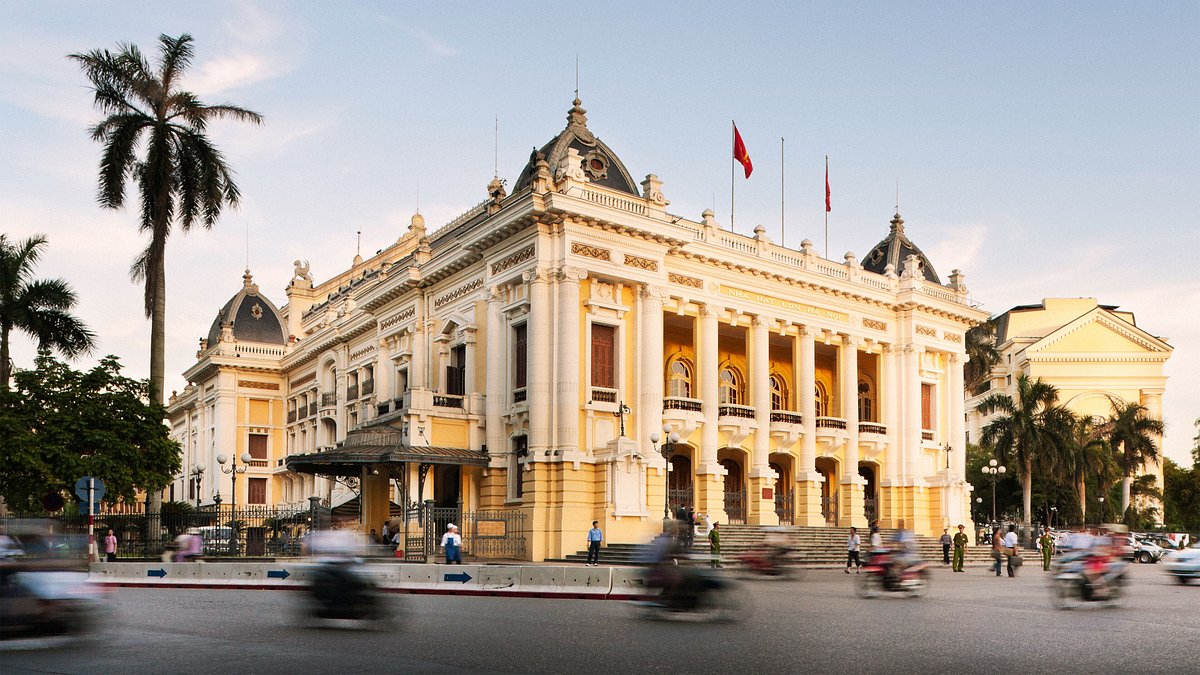

20 Best Things To Do in Hanoi, Vietnam’s Capital City
H anoi, Vietnam's energetic capital, offers a mesmerizing blend of ancient culture and modern charm. From the buzzing streets and tranquil temples to exquisite cuisine, I'm here to help you discover the best things to do in Hanoi.
The last few days of my first trip to Vietnam were spent in Hanoi, following a week of sightseeing in Ho Chi Minh City (Saigon), my friend's wedding, adventures in Central Vietnam , and a Ha Long Bay cruise .
Despite our short stay, Kel and I fit a lot in. Here are the highlights and a few places we didn't have time to get to (but you might).
Hanoi Attractions
Historic sites, 1. hanoi old quarter.
Hanoi's Old Quarter, the historic heart of Vietnam's capital, brims with timeless allure. With its narrow streets and centuries-old architecture, this bustling area radiates an old-world charm.
Each street, named after the specific goods once sold there, offers a unique glimpse into local craftsmanship and daily life.
The quarter buzzes with scooters, vendors, and cafes while fragrant aromas from street food stalls entice visitors. Amid this lively atmosphere, ancient temples and heritage houses stand quietly.
2. Hoan Kiem Lake
Hoan Kiem Lake is a small oasis amid Hanoi's Old Quarter to the north and west and the affluent French Quarter to the east. Encircled by leafy paths, the lake is a favorite spot for locals and tourists, ideal for strolls and morning tai chi sessions.
The iconic red bridge, The Huc, leads to Ngoc Son Temple, a peaceful sanctuary on a small island.
Rich in legend and beauty, the lake's calm waters reflect the sky and surrounding cityscape, creating a picturesque setting that blends nature and urban life in Hanoi .
3. Ho Chi Minh Mausoleum
Ho Chi Minh's Mausoleum in Hanoi is a monumental tribute to Vietnam's revered revolutionary leader. Inspired by Lenin's Mausoleum in Moscow, the imposing granite structure exudes solemnity and grandeur.
Inside, under dim, respectful lighting, lies the preserved body of Ho Chi Minh, a site of profound national significance. Visitors, often in silent reverence, file past the glass coffin, reflecting on the life and legacy of “Uncle Ho.”
The memorial is surrounded by meticulously maintained gardens and guarded by military personnel.
4. Ho Chi Minh's Stilt House
On the grounds of the Presidential Palace in Hanoi, Ho Chi Minh's Stilt House is a modest yet significant structure.
This simple, two-story wooden house, poised gracefully on stilts, reflects the humility and minimalist lifestyle of Vietnam's beloved leader, Ho Chi Minh.
Overlooking a tranquil carp-filled pond, the house is surrounded by lush gardens, creating a peaceful retreat.
Inside, the living quarters, preserved precisely as Ho Chi Minh left them, offer a glimpse into his daily life and work, resonating with his dedication to simplicity and the Vietnamese people.
5. Presidential Palace
The Presidential Palace in Hanoi, a striking building painted in bright yellow, symbolizes French colonial architecture.
Constructed in the early 20th century, it was initially intended for the French Governor-General of Indochina. Today, it serves as the official residence of the Vietnamese President.
While the majestic building is not open to the public to maintain its official functions and preserve its historical integrity, visitors are welcome to stroll through the beautifully landscaped gardens surrounding the palace.
6. Imperial Citadel of Thang Long
The Imperial Citadel of Thang Long in Hanoi is a fascinating relic of Vietnam's history, recognized as a UNESCO World Heritage site .
Once the heart of ancient Hanoi, this sprawling complex showcases over a millennium of cultural and historical significance. The citadel's impressive gates, palaces, and ancient relics speak volumes of the dynastic power that once ruled the land.
Its remaining structures and archaeological treasures, unearthed through meticulous excavations , offer a unique window into the past. Visitors are invited to explore the citadel's grounds, delving into the heritage that's helped shape the nation's identity.
7. Hoa Lo Prison Museum (Hanoi Hilton)
The Hoa Lo Prison Museum in Hanoi, often called the “Hanoi Hilton,” is a stark reminder of Vietnam's turbulent past. Initially built by the French colonists to detain Vietnamese revolutionaries, the prison was notorious for its harsh conditions and brutal treatment of prisoners.
Later, during the Vietnam War, it housed American POWs, including future U.S. Senator John McCain. Today, transformed into a museum, it serves as a poignant memorial and educational site.
Exhibits display chilling artifacts and recount harrowing stories of survival and resistance by political prisoners, offering visitors profound insights into the resilience and suffering experienced within its walls.
8. Ho Chi Minh Museum
The Ho Chi Minh Museum in Hanoi is dedicated to the life and legacy of Vietnam's revolutionary leader, Ho Chi Minh. Situated near the Mausoleum, the museum is architecturally striking, symbolizing a lotus flower.
Inside, an extensive collection of artifacts, photographs, and documents meticulously chronicles Ho Chi Minh's journey from early life to pivotal roles in Vietnam's fight for independence.
The exhibits are arranged thematically, shedding light on his personal life and the global and historical contexts that shaped his ideology and leadership.
9. Vietnamese Women's Museum
The Vietnamese Women's Museum in Hanoi is a tribute to the roles and contributions of Vietnamese women throughout history.
This enlightening institution, situated in the heart of the city, unfolds over several floors, each dedicated to showcasing different aspects of women's lives in Vietnam, including family, history, and fashion.
Exhibits feature poignant stories, photographs, and artifacts that highlight Vietnamese women's resilience, resourcefulness, and strength in cultural, social, and wartime contexts.
Interactive displays and personal narratives offer deep insights into women's crucial role in shaping the nation, making the museum a vital repository of cultural heritage and gender empowerment.
10. Temple of Literature
The Temple of Literature in Hanoi, a Confucian temple, is a testament to Vietnam's scholarly heritage. Established in 1070, it was the country's first university, primarily educating royalty, nobility, and elites.
The temple's five courtyards are tranquil sanctuaries of manicured gardens, ancient pavilions, and reflecting pools. Stelae of doctoral candidates are mounted on turtle backs, symbolizing longevity and wisdom.
The temple celebrates learning and literature and offers a peaceful retreat from the city's pace. Its well-preserved architecture and scholarly legacy make it a revered site, embodying Vietnam's respect for education and cultural traditions.
11. Ngoc Son Temple
Ngoc Son Temple, perched on a small island in Hanoi's Hoan Kiem Lake, is an iconic symbol of spiritual and historical significance.
Accessible via the picturesque red wooden Huc Bridge, the temple is dedicated to General Tran Hung Dao, who repelled Mongol invasions and other venerable figures.
Its calm setting and traditional Vietnamese architecture create a relaxed ambiance amid the city noise. The temple complex, with its ornate altars and ancient artifacts, offers a quiet space for reflection and reverence.
Ngoc Son Temple provides spiritual solace and offers 360-degree views of the surrounding lake, making it a beloved landmark in Hanoi.
12. Bach Ma Temple
Bach Ma Temple in Hanoi's Old Quarter is revered as one of the city's oldest and most significant temples. Established in the 9th century to honor a white horse, a divine symbol in local folklore, the temple is a spiritual cornerstone for the local community.
Its architecture, a harmonious blend of Vietnamese and Chinese styles, features intricate woodwork, elaborate altars, and vibrant sculptures, encapsulating centuries of religious traditions.
13. Quan Thanh Temple
Quan Thanh Temple, near the shores of Hanoi's West Lake, is a venerable Taoist temple dating back to the 11th century.
Dedicated to Tran Vu, a revered deity in Vietnamese folklore known for his mythical strength and protection against evil spirits, the temple is a site of cultural and spiritual significance.
Its impressive gates and ancient banyan trees lead visitors into a courtyard that houses a colossal bronze statue of Tran Vu, a masterpiece of Vietnamese craftsmanship.
14. Tran Quoc Pagoda
Tran Quoc Pagoda, gracefully poised on a small peninsula in Hanoi's West Lake, is regarded as the oldest Buddhist temple in the city, dating back over 1,500 years. With its towering pagoda and manicured bonsai gardens, this striking structure exudes tranquility.
The pagoda's richly decorated interiors, filled with ancient Buddhist statues and relics, reflect the spiritual heritage of Vietnam. Its iconic red stupa, visible from afar, is a beacon of peace and contemplation.
15. Voi Phuc Temple
In the serene Thuy Khue district near Hanoi's West Lake, Voi Phuc Temple is steeped in legend and history. Built in the 11th century, it honors Prince Linh Lang, a revered figure celebrated for his courage against invaders.
The temple is famously guarded by two kneeling elephant statues, symbolizing loyalty and strength. Its architecture, characterized by traditional Vietnamese motifs and tranquil courtyards, invites reflection and reverence.
Visitors who explore the temple's ornate altars and historical artifacts are immersed in a narrative of sacrifice and devotion.
Food and Drink
16. egg coffee at cafe giang.
Savoring a hot egg coffee at Cafe Giang is a quintessential Hanoi experience steeped in tradition.
Nestled in a narrow alley, this unassuming Hanoi cafe is credited with inventing egg coffee. The drink, a velvety blend of robust Vietnamese coffee topped with a creamy layer of whipped egg yolk and condensed milk, offers a luxurious taste contrast.
The multi-level cafe's modest, cozy ambiance, often humming with a mix of intrigued tourists and locals, adds to the charm. Enjoying this rich, indulgent concoction at Cafe Giang, where it was first crafted, offers a caffeine fix and a sip of Hanoi's innovative cafe culture.
17. Bun cha at Huong Lien
Huong Lien restaurant is the best place to get bun cha, a popular Vietnamese dish .
Bun cha, a Hanoi culinary staple, consists of grilled pork patties and slices, served alongside a plate of white rice noodles (bun) and a bowl of nuoc cham, a mouthwatering dipping sauce with pickled vegetables.
Huong Lien, a modest yet popular eatery, gained international fame in 2016 when President Barack Obama and celebrity chef Anthony Bourdain enjoyed the local cuisine here, casually dining on bun cha and bonding over cold beers.
Their meeting, captured in a Vietnam episode of Bourdain's show “No Reservations,” turned Huong Lien into a must-visit spot, forever linking its authentic flavors with the conversation of both men.
18. Drinks at Beer Corner
Beer Corner in Hanoi's vibrant Old Quarter pulsates as the epicenter of the city's nightlife.
This busy intersection, formally known as Ta Hien and Luong Ngoc Quyen streets, comes alive at dusk as locals and travelers converge to revel in its lively atmosphere.
The narrow, pedestrian-only streets are lined with small bars and street vendors, making it a great place to enjoy local beers, notably the famous Bia Hoi, a light and refreshing draft beer.
The area hums with the clinking of glasses, spirited conversations, and street performances, creating an infectious energy that encapsulates the dynamic spirit of Hanoi after dark.
Other Notable Places
19. hanoi train street.
Hanoi's Train Street is a narrow residential alley with railway tracks running directly through it, offering a vivid slice of local life.
Twice a day, residents tuck away their belongings and retreat to a safe distance as a train passes mere inches from their doorsteps. This close-knit community has adapted ingeniously, with cafes and shops seamlessly blending into the daily rhythm.
The street has become an iconic spot for visitors, drawn by the thrill of witnessing the train's close passage and the chance to capture the compelling contrast between the rumbling locomotive and the tranquil daily life of Hanoi's inhabitants.
Note: cafes tend to have a drink minimum if you want to find a spot to sit and wait for the train to pass.
20. West Lake
Hanoi's largest freshwater lake offers opportunities for relative quiet amid the busy capital. West Lake has upscale neighborhoods, ancient pagodas, and lush gardens. The InterContinental Hanoi Westlake , one of the city's luxury hotels, offers rooms over the water on the eastern side.
Locals and tourists enjoy leisurely bike rides, tranquil walks along the tree-lined shore, or paddle-boating. Known for its beautiful sunsets and relaxed atmosphere, West Lake also hosts a variety of upscale restaurants and cafes.
Exploring Hanoi, the capital of Vietnam , offered a memorable conclusion to my two-week trip. From the historic streets of the Old Quarter to hanging out on Beer Corner with friends, this spirited city in Northern Vietnam offers a compelling mix of heritage, culture, and culinary delights.
The post 20 Best Things To Do in Hanoi, Vietnam’s Capital City appeared first on Go Backpacking .

- Latest Latest
- The West The West
- Sports Sports
- Opinion Opinion
- Magazine Magazine
A California teacher has visited every country in the world. Here’s how she did it — and how you can, too
Meet lucy hsu, a second-grade teacher who has visited 193 nations.
By Caroline McDonald
Lucy Hsu has accomplished an extraordinary feat: visiting every nation in the world.
She was recently recognized for visiting the final nation on her list last May — Syria. According to NBC Bay Area , 43-year-old Hsu works as a second-grade teacher in San Jose, California, and her travel experiences have impacted both her and her students.
How many countries are there in total? The answer is a little complicated, but according to the BBC Science Focus , many people turn to the United Nations for the answer. The UN’s official list includes 193 member states.
“One hundred ninety-three is the total that is recognized by most travel clubs because that represents the number of UN members who do vote in the UN,” Hsu told NBC Bay Area .
It’s rare for travelers to visit every country. According to NBC Bay Area , “Although there is no official tally, it is widely estimated that roughly 400 people in the world have been to every country. By comparison, more than 600 people have gone into outer space.”
Here is how Lucy Hsu traveled the world — and how you can do the same.
How did Lucy Hsu travel to every country in the world?
According to NBC Bay Area , Hsu’s parents immigrated from Vietnam to the United States, leaving her family with very little money for international travel.
“They were in a new country,” she told NBC Bay Area. “They never had formal education being from Vietnam, like little village kids. They were starting really from zero.”
Nevertheless, her love of history and geography sparked a desire to travel the world. According to Today , after Hsu obtained her very first passport, she went on a backpacking trip through Europe. “From there, she caught the travel bug and made it a goal to travel every summer.”
Over the next two decades, Lucy planned a “big trip” every year, per NBC Bay Area , to reach her goal.
So, what tips does Lucy Hsu have for aspiring travelers?
Here’s what she shared with Today :
- Sign up for homestays and volunteer programs. Hsu uses a website called Workaway , which connects volunteers with communities, schools, families and other organizations.
- HostelWorld is another resource that can connect you with affordable housing and hostels. Hsu said that she even “worked at hostels in exchange for her room and board.”
- Hsu suggested “earning credit card points to rack up rewards.”
- For transportation, Hsu explained that she has take buses and trains, all low-budget, to get where to various locations.
How can I start traveling the world?
It’s never too late to begin your traveling journey. Hsu didn’t get her first passport until she was 23. “Travel is less unattainable than people think,” she told Today .
Like Hsu, you can begin your travels wherever you’re at. Here are more tips to make your travel dreams a reality:
- Do plenty of research in advance. Last-minute bookings can often result in unwanted extra fees. Find the best days to confirm your transportation and hotel rooms.
- Start small. If you’re new to international travel, skip over destinations that seem more “exotic” and settle for a location you can adjust to with ease. This will allow you to have a smoother transition to travel, public transportation, shopping and other activities in a different country.
- Find a friend. If you know someone who is a more experienced traveler, ask for some tips and tricks to help you prepare for your journey. Better yet, plan a trip together so you have a travel buddy!

COMMENTS
Another popular way to backpack Vietnam is to combine a trip with a neighbouring country. For example, combining Southern Vietnam and Cambodia. 2-Week Travel Itinerary for Vietnam: The Quick Trip. Hanoi => Hue => Hoi An => Da Lat => Ho Chi Minh. This trip is best done over about two weeks.
Below is a list of the top destinations you might consider visiting on your first backpacking trip to Vietnam! Northern Vietnam. Hanoi: The capital city provides a vibrant introduction to Vietnamese culture, street food, and historical sites. It's a hub for backpackers with affordable accommodations, bustling markets, and a lively atmosphere.
In 2023 Vietnam changed its visa system, making it way easier and more flexible. The new e-visa lets you stay for up to 90 days. It can be used to enter Vietnam multiple times using any airport or overland border. It costs $25 for a single entry or $50 for a multiple-entry visa. You can apply for an e-visa here.
Vietnam Travel Checklist. To help you plan your itinerary for backpacking Vietnam, here are the most popular places to visit in Vietnam. These are too many places to visit in a month, so if that's how long you have, I would pick those which appeal to you the most. I've put them on a list from north to south. Hanoi; Ha Giang Loop; Sapa
The north of Vietnam is home to some of the high mountain ranges in the country, home to remote villages surrounded by splendid landscapes. One of the must-have experiences on Vietnam backpacking is to hike amidst these mountains in Sapa and Ha Giang, two towns known for their scenic viewpoints.. Take a boat trip amidst the gorgeous countryside
2-Week Vietnam Itinerary. If you only have two weeks in Vietnam, we recommend skipping a few places on the list so that you aren't rushing around like a headless chicken! Here's what we advise for a fantastic two weeks in Vietnam! Hanoi - 2 days. Halong Bay - 3 days. Sapa - 2 days. Hue - 1 day. Hoi An - 3 days.
The Ultimate Backpacking Vietnam Route Planner. 05/10/2017 by Kristin Addis 38 Comments. Vietnam is an essential stop for most people who are backpacking across Southeast Asia. If you want a destination where your money will go far, and where you can get access to jungles, history, beaches, and gorgeous natural areas with ease, then Vietnam is ...
Day 1 - 2: Ho Chi Minh City (3 Nights) A great city to start your journey in Vietnam is Ho Chi Minh City, or as it used to be known, Saigon. Ho Chi Minh City is a modern city full of history and attractions for you to grasp the essence of what Vietnam is about. The city is similar to other big cities in Southeast Asia, with traffic jams ...
Backpacking Vietnam Route Map. Our Vietnam backpacking route runs from north to south.It would be equally good to go backpacking from south to north.Day buses and overnight buses run the length of this route and are the cheapest way to travel around Vietnam.. If you plan on crossing the border and continuing backpacking in neighbouring South East Asian countries, it may be worth looking at the ...
Untangle the complicated and confusing options in the Mekong Delta with our 1 week DIY itinerary around these magnificent waterways. Find your relaxing stop off at one of Vietnam's beautiful coastline towns and cities, from Hoi An, to Mui Ne and Nha Trang. And finally, check out our 'ideal' 4-week Vietnam itinerary for first-timers!
Say goodbye to your stuff. You will never see it again. To avoid this, either wear a backpack or cross-shoulder bag or carry your shoulder bag on the shoulder that's away from the street. If you have to check your phone, don't do it while walking. Instead, step into a doorway or corner away from the street to look.
2 days in Ha Long Bay - Vietnam itinerary 3 weeks. Ha Long Bay is a UNESCO world heritage site that is famous for its thousands of limestone islands surrounded by emerald waters. A 2-day trip to Ha Long Bay is an absolute must and should not be missed on this backpacking Vietnam itinerary (3 weeks).
How this Vietnam backpacking guide works: If you wish to spend 2 weeks in Vietnam choose the minimum amount of days for each destination. If you want a Vietnam 3-week itinerary choose the maximum amount of days. This itinerary moves north to south, it can easily be done in reverse. Daily Breakdown of My Vietnam Trip Itinerary Hanoi: 2 Days
My favorite snack during my backpacking trip in Vietnam goes to Banh Mi. Banh Mi is a Vietnamese sandwich made of meat slices, vegetables and sauces sandwiched between a Vietnamese baguette. The thing I loved about Banh Mi is the crunchy baguette, and it's easily available throughout the city, so it makes a great snack whenever the hunger ...
Backpacking Vietnam: Travel Guide & Tips For First Time Visitors 2024. Posted on March 24, 2024 April 5, 2024 by Tasha Amy. Get ready for your backpacking Vietnam adventure by finding out all you need to know about traveling around this awesome country. Learn about the best travel tips, money, important information, top places to see, and more ...
Northern Vietnam (week 4) Hanoi | 3 days. → bus to Halong Bay (3h) Halong Bay | 2-3 days. → bus to Sapa (back to Hanoi & from there 6-7h to Sapa) Sapa | 3-4 days. → back to Hanoi. Of course, you can also turn this Vietnam backpacking itinerary around, starting in the north in Hanoi and working your way down to the south.
A trip to Vietnam means the opportunity to taste some of the most exotic and diverse food on the planet. Since wayyyy back when, Vietnam had a rich culinary culture, but in the late 1800s the French colonized Indochina, and since then, Vietnamese cuisine holds a major French influence.
Piumi Rajapaksha 04 September 2021. Between the cascading rice terraces of Sapa, the islands of Ha Long Bay, the caves of Phong Nha, the dunes of Mui Ne and the paddies of the Mekong Delta, Vietnam has a diverse offering of bucket-list attractions to offer travellers. Here we list all the best places to explore, so you can create an itinerary ...
Very popular on a backpacking Vietnam trip is the Phong Nha Cave or the Thien Duong Cave (Paradise Cave) . The starting point for tours into these caves is the village of Dong Hoi, which you can reach by bus or train from Hanoi (north) or Hue (south). Backpacking Central Vietnam.
World Nomads is renowned among the travel community for its extensive coverage, including a wide array of adventure activities that are often part and parcel of the Vietnam backpacking experience. Choosing the right travel insurance provider should be as much a part of your trip planning as selecting your route or packing your backpack.
6- Drink alcohol in moderation. Vietnam is an incredible place to go out after dark and enjoy its vibrant nightlife. It is also a great way to have fun and meet other people. However, when travelling alone, I suggest being mindful of your alcohol consumption, especially as a solo female backpacker.
Vietnam Travel Guide. Last Updated: April 29, 2024. From the stunning views of Sam Mountain and Ha Long Bay to the man-made artistry of the sacred temples and pagodas to the rice terraces and beaches, Vietnam is stunning. There's no denying that backpacking Vietnam (or simply traveling here on a vacation) is an experience filled with natural ...
The Basic Stuff To Pack For Vietnam. On top of the essential items listed above, here is an additional suggested checklist of what to pack for a trip to Vietnam: A pairs of comfortable pants/jeans. 1-2 pairs of shorts (summer/late spring) A few pairs of socks. (Sexy) underwear x 2/3.
Vietnam Travel Guide; Southeast Asia Travel Costs. ... Southeast Asia is an incredibly safe place to backpack and travel — even if you're traveling solo and even as a solo female traveler. Violent crime is super, duper rare. Petty theft (including bag snatching) is the most common type of crime in Southeast Asia, especially around popular ...
One travel editor shares the versatile travel essentials she packed in her carry-on luggage for a two-week Vietnam trip. Read her recommendations for Southeast Asia, from Allbirds' most ...
Hi, we are travelling to Vietnam in June.I have seen many comments about the various types of bus transport in Vietnam, I am wondering if there is a specific site or company people have used which is less of a backpacker/budget bus and more comfortable (toilets, nicer facilities) but not super expensive.
The post 9 Best Things To Do in Hoi An, Vietnam appeared first on Go Backpacking. Go Backpacking. 9 Best Things To Do in Hoi An, Vietnam ... It's a lovely trip back in time, one with historical ...
Backpacking Vietnam: My First Solo Trip In Two Years ; My most valuable travel gear: pickpocket-proof clothes ; It's tricky to fit everything that you need in just one single backpack. The ...
The last few days of my first trip to Vietnam were spent in Hanoi, following a week of sightseeing in Ho Chi Minh City (Saigon), my friend's wedding, adventures in Central Vietnam, and a Ha Long ...
According to NBC Bay Area, Hsu's parents immigrated from Vietnam to the United States, leaving her family with very little money for international travel. ... According to Today, after Hsu obtained her very first passport, she went on a backpacking trip through Europe. "From there, she caught the travel bug and made it a goal to travel ...